
24 Things To-Do in Your Ephesus Trip
Even the main foundation year of Ephesus is unknown, most of the sources are claiming that it was founded in 6000 B.C. Ephesus was built for Artemis to show their respect.
Ephesus is an Ancient Greek city that is now on the Western side of Turkey , Izmir. In the origins, the city belonged to Greece. Ephesus was also the capital of Hellenic Greece. As Ephesus was in Greece in the past, you may also see Greek culture combined with Turkish culture.
Ephesus is a great place to explore if you are into history. Because the city has many historical sightseeing spots. Ephesus would not be a great idea to go to Ephesus for people who enjoy exploring modern places, cafes, and streets.
Ephesus is now under the protection of UNESCO’s World Heritage Committee since 2015. According to UNESCO, the city is remarkably contributing to the overall Outstanding Universal Value within its long historical status.
Moreover, the city contains many important places in the context of historical settings. Library of Celsus, the Temple of Hadrian, the library and the most important place in Ephesus; Temple of Artemis. This temple has been nominated as one of the Seven Wonders of Ancient Worlds.
Here is a list of things that you can do and the places you can see in Ephesus. If Ephesus is in your bucket list, here are the places that you should visit.
1- Wandering around the city center of Ephesus Ancient City
Image Credit: Google Images
Selcuk, where the ancient city of Ephesus is located, is also one of the most fertile lands in Anatolia. For this reason, many trade routes pass in this direction. However, there is also a port that connects the east and west of the world.
B.C. With its annexation to the Roman Empire in 129, the development of the city has increased many times over. As a result of these developments, Ephesus becomes the capital of Asia. Ephesus, whose population increased rapidly after becoming the capital city, turned into a metropolis. Ephesus is also seen as the Pilgrimage Center of Christianity.
In my opinion, the best months to visit Ephesus are spring. Because you can also experience the lush nature of the city during these months. You can walk through this metropolis city by yourself. There is also the option of a guided walking tour to tour the city. This tour takes about 2 hours, and a fee of 12$ is paid at the entrance to the ancient city.
The visiting hours vary within the season. You can visit the Ancient City between 8 A.M to 7 P.M. in the summer season (April 1st- October 1st). On the other hand, the winter season (October 1st- April 1st) hours are 8.30 A.M to 6 P.M. The place is open everyday except the religious holidays. The Ancient City is closed until noon only on the first day of the religious holidays.
2- See the library residues of Library of Celsus
The Library of Celsus has been ranked as the third biggest library in the Ancient World. The library was built by the Roman Empire in their golden times. Even if the certain completion year of the library is unknown, the most common date that has been told as A.C. 135.
It is said that the library, named after Tiberius Celsus, a powerful Roman senator and a book lover, has 12-15 thousand scrolls of parchment. In the west wing of the library and under the ground floor there is Celsus’s tomb. Since it was not customary to be buried at the city border at that time, the burial of Celsus here is seen as a special honor.
It seems that in the architecture of the Celsus Library, special attention has been paid to the protection of books. In the main reading room, there are double walls with a gap of one meter between them. Shelves and cabinets in rectangular niches were built on these interior walls to prevent damage to the books, and the books were kept here. Thus, they are protected from excessive heat, humidity and insects.
The visiting hours of the library are the same as Ephesus Ancient City as the library is also located there. The 12$ entrance fee also includes the library.
3- Visit the House of the Virgin Mary
Image Credit: Tripadvisor
Virgin Mary is also known as the mother of Jesus, a central figure of Christianity. Before Jesus was crucified at the age of 33; he entrusted his mother to his friend and apostle St. Jean. St. Jean brings Virgin Mary to the biggest and the most peaceful city of the age, Ephesus. She is thought to have spent her last days in the House of the Virgin Mary.
A German bedridden patient named Anna Katherina Emmerick was consoling herself with special visions of the life of Jesus and Mary. The advancement of these visions caused her to express historical places, people, and events in more detail.
These special visions attracted the attention of one of the German poets of that period, Clemens Brentano. For this reason, the poet moved to a house close to where the woman was and started to take notes of what the woman said. The poet compiled what Anna Katharina Emmerick said and published a book called The Life of Mary.
People who read Brentano’s book started to search for the Virgin Mary’s home to check if the story is real. After some long exploration process, they found the house. If you want to enter the Virgin Mary House, which is built of stone and in the form of pilgrimage, it is necessary to wear a scarf on your head to show your respect.
The Church of Virgin Mary’s entrance fee for foreigners is 4$. From November to February, The House of Virgin Mary can be visited between 8 A.M and 5 P.M In other months, you can visit the house between 8 A.M to 6.P.M.
4- Imagine yourself watching a theater in Ephesus Ancient Theater
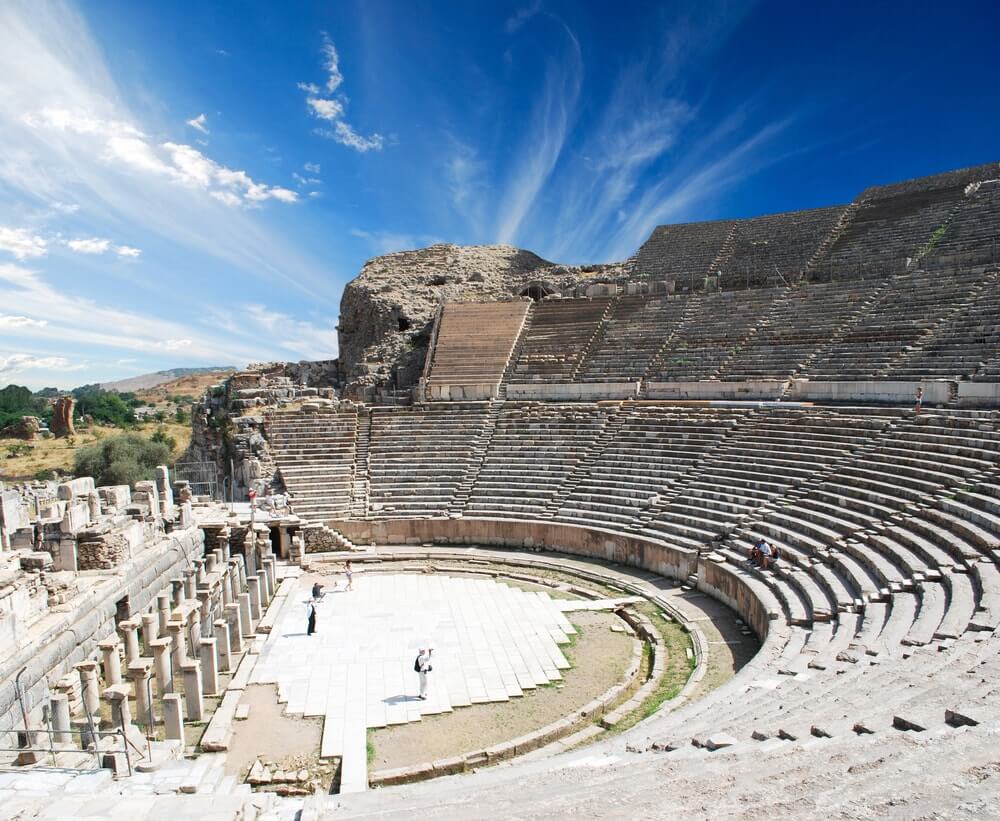
Ephesus Ancient Theatre has been known for being the biggest open-air theater of the ancient period. The capacity of this theater is 25 thousand people and it includes 65 rows. Ephesus Ancient Theatre is considered one of the most important structures worldwide in terms of art history.
The theatre has not been only used for artistic activities. It has also been used as a place for gladiator fights. Even if the stage of the theatre has collapsed, the rows are still solid.
The story of the theatre actually tells us about the formation of modern theatre. According to this story; various performances were held to honor Dionysus, the god of wine, during the vintage festivities. The main subject of these games was Dionysus’ life philosophy, which alternated between pleasure and pain. Endless struggles between humans and gods were depicted. The roles were performed by wearing masks with different expressions instead of facial expressions. Over time, these performances took shape and formed the contemporary theater of today. Here comes the story of the laughing and crying masks of the theatre.
The entrance fee to the Ephesus Ancient City also includes the theatre, the same goes for visiting hours.
5- Wander around the Temple of Hadrian
The temple was built by P. Quintilius in honor of the visit of the emperor Hadrianus and is estimated to have been finished before 138. The inscribed pedestals in front of the temple were built between 293-305 AC.
On the door lintel in front of it, the foundation legend of Ephesus City is displayed with reliefs. Bronze statues of the Roman Emperors Diocletian, Constantius, Maximian and I. Theodosius were erected in 300 AC. There is a statue of Emperor Hadrian in the cella.
The Temple of Hadrian has recently been renovated. Within this renovation, original statues and friezes have been replaced with their replicas. The original pieces are being displayed in the Museum of Ephesus.
6- Smell the fresh air of the Temple of Artemis
Temple of Artemis, is also known as the Temple of Diana. The temple is dedicated to the goddess Artemis was completed in Ephesus around 550 BC. The temple was built entirely from marble. Even if the temple has been used for more than 800, it was never really completed.
The architect of the temple, known as Artemisium in Latin, is known as Chersiphron from Greece. When the temple was first built, it was visited by many people from kings to artists, traders, and travelers, and was used as a religious building where they offered their blessings and beliefs to the goddess.
There is no entrance fee for the Temple of Artemis. Visiting hours of the temple have been announced from 9 A.M to 7 P.M but as there are any guards in the neighborhood, the hours might be flexible too.
P.S: Most of the temple has collapsed over the past years, there are some few columns left as a residue. The main purpose of visiting the Temple of Artemis should be experiencing its historical environment.
7- Check out the engravings at Trajan’s Fountain
Trajan Fountain, M.S. It was built between the years 102-114 in the name of Roman Emperor Trajan and Artemis of Ephesus. The original architecture of the fountain, which has 2 floors, was later restored and rebuilt as a single-staired.
Some of the sculptures in the fountain are exhibited today in the Ephesus Museum and some in the British Museum.
The fountain used to be Rome’s most famous fountain, we also can see that within its architecture which includes lots of engravings on the columns.
8- See how the city was governed in Prytaneion
The person known as Prytan was the Mayor of Ephesus. Since there are emperor and goddess statues around the Prytaneion, this palace is accepted as a sacred place.
Prytaneion is the sacred place where the sacred fire of Hestia is lit, which represents the independence and sovereignty of the city in every Greek city-state. The word comes from the word prytaneis or pyrtan (the executive board of the democratic Greek city), where sacred rituals and dinner parties attended by the city’s rulers were held, and above all important decisions were made for the city government.
The sacred fire of Hestia symbolizes the immortality of the city, the extinction of this fire was regarded as bad luck, Prytan’s most important task was to make sure that this sacred fire won’t blow out.
With this location, it was the most important of the official buildings and the heart of the city. Besides, the official guesthouse was also within the parts of this building.
9- Experience the story behind the Seven Sleepers Cave
According to a legend; MS. In 250 BC, Christianity was spreading rapidly. The Roman Emperor Decius, who was a complete Christian enemy, wanted to stop the spread of Christianity. Decius’s aim was to make Christians worship idols again.
For this reason, some Christians had to leave the region. 7 friends and dogs among the group that left the city hid behind Panayır Mountain in Ephesus and prayed constantly. After a while, they fell asleep.
After a long time from this process, all events were forgotten, even the emperor changed. When one of the friends woke up after 200 years and went to get something to eat, he learned that he had actually slept for 200 years.
When he came and told his friends, none of them knew what to do and decided to go to sleep again, never waking up again. Learning about this situation, the new emperor started to work to find a place for young people.
When the new emperor Theodosius, who went to the cave, found the sleeping youths, he saw that their faces glow brightly.
10- Pass through the Heracles Gate
It is a late antique gate located at the end of Kuretler Street. The two-door jambs bearing Heracles relief were joined by an arch. The two sides of the belt were bordered by the Nike motif.
The remains of an inscription found here are claiming that the building’s possible to date would be the 3rd quarter of the 5th century AC. The Nike motif which is on the two sides of the belt could be dated as the first half of the 4th century AC.
11- Take a walk around Harbor Street
The street that starts from the Grand Theater and extends to the harbor is 528 meters long and 11 meters wide. It is described as one of the most spacious roads in the ancient world.
Columns adorned both sides of the street, and there were many galleries and shops on both sides. There was also a developed sewage system under this spacious road.
Since the end of the street leads to the harbor, it was called “Harbor Street”. Kings, emperors, ambassadors, merchants who came to Ephesus by sea were welcomed on this street with an official ceremony.
It is also known as “Arkadiane Street” since it was destroyed in the earthquake in the 4th century and repaired by Emperor Arkadius between 395-408. After the adoption of Christianity, the statue of the four apostles of Christ was placed on the street, and these sculptures, unfortunately, do not exist today.
12- Sightseeing in Ephesus Terrace Houses
Terrace Houses have gone down in history as a neighborhood located in the heart of Ephesus and appealing to the elite part of the city. Although there are no civilian residential areas in the center of ancient cities, Terrace Houses in Ephesus were an exception.
The foundation of the Terrace Houses was laid in the 3rd century BC. After Ephesus became the capital of Asia, the neighborhood started to experience its brightest days (between the 1st and 3rd centuries AC).
The most elite part of the city lived in the houses, so each residence was 400-950 square meters in size. The floors of the houses were decorated with mosaics and frescoes on the walls.
There is a 2$ entrance fee for Terrace Houses.
13- Taste the “Hamam” culture in Varius Bath
The bathhouse was built by Skolastika, a wealthy Roman woman living in Ephesus, and therefore the bath complex is mostly known as the Skolastika bath. Another name for this bath complex is Varius Bath.
It consists of 4 main sections: Calderium (hot water room), Tepidarium (warm water room), frigidarium (cold water room) and apodyterium (dressing room), which we are used to seeing in all ancient baths.The bath is heated by a central heating system and the bath has a capacity of one thousand people. The use of the baths is free and consists of 3 floors.
Baths in antiquity are also known as places where people can socialize and establish good friendships because they were used not only for cleaning but also for socializing and having fun. Among the surviving remains of the bath complex, only the ground floor is suitable for sightseeing.
14- Explore the old columns in Agora
Located right next to the Celsus Library, the square is the city’s most important trade and cultural center, Agora, which is the marketplace. Agora has a total of 3 doors, and was built in BC.
It was founded in the 3rd century during the reign of Emperor Augustus. Agora was damaged due to a big earthquake in the 4th AC. century and became unusable.
In the 6th century AC, a new agora was established in the northern part using the remains here. The section where the newly established agora is located today serves as the Gendarmerie barracks center and entrance to that area is prohibited.
15- Another must-see temple is the Temple of Domitianus
It is a great temple built in the name of Emperor Domitian in the 1st century. It is the first temple dedicated to a Roman emperor in Ephesus. At that time, owning an emperor’s temple, assuming its guardian duty was valued as a very honoring privilege among cities.
However, after his death, many statues of Domitian, whose memory was cursed for his mismanagement and cruelty, were destroyed or destroyed. There was a “U” shaped altar in front of the temple.
Parts of the Domitian statue, which has a very large size compared to a normal human size found here, are exhibited in the Ephesus Museum. The galleries under the temple are used as Ephesus Inscriptions Gallery and storage.
Only the foundations can be seen in the temple area today. With Christianity becoming the official religion, the temple was destroyed to its foundations.
The “Temple of the Emperors of Asia State in Ephesus” mentioned in the inscriptions is accepted as this temple.
16- See the Pollio Fountain
According to the Latin and Greek inscriptions, this building was built as a “Mausoleum” for C. Sextilius Pollio by his stepson, in the area allocated by the city administration.
Thus, the person who built the Basilica and Marnas Aqueducts and dedicated them to the emperor and the city was honored on behalf of the city.
There is also a small pool inside. The water of this pool comes from the wall of the Agora. On the bench in the pool was the Polyphemos sculpture group, which is exhibited today in the Ephesus Museum.
17- Smell the Byzantine culture in Byzantine Aqueducts
The parts of the aqueducts starting from the east of the Saint John Pursuit Gate within the district, especially around the station, have managed to remain intact. Byzantine aqueducts passing through the district continue northward through the Şirince Strait.
These arches supply the drinking water supplied from the water sources in the east of Pranga locality between Belevi and Selçuk, the Byzantine Period settlement in Selçuk Ayasuluk Hill and St. It was used to deliver it to the St. Jean Church.
You can see reused marble blocks brought from Ephesus and Artemision at the feet of these arches, which reach a height of 15 meters around the station. Among these, Ionic capitals from the Archaic period are standing out.
18- Wander in Marble Street
Image Credit: CNN Turk
Marble Street provides transportation between the Grand Theater and the Celsus Library. The marble-covered street was the main road of the city and part of the religious Procession Road during the Empire period.
We can say that the high platforms, which can be used by pedestrians on the street where cars are used, actually formed the basis of today’s sidewalks.
Ephesus stands out as a place with a people-oriented urbanism understanding, although it was centuries ago. There is a marble with a woman’s foot and head engraved on the street. Considered to be the world’s first billboard, this marble depicts the Love House, which is just ahead.
The Love House, a favorite place for sailors coming to Ephesus, is located at the intersection of Kuretler Street and Marble Street. The house is said to be connected to both the Celsus Library and the Skolastika Bath through a secret passage.
It is known that the men entered after a short ritual in front of the Aphrodite statue at the entrance.
19- Visit the public toilets in Latrina
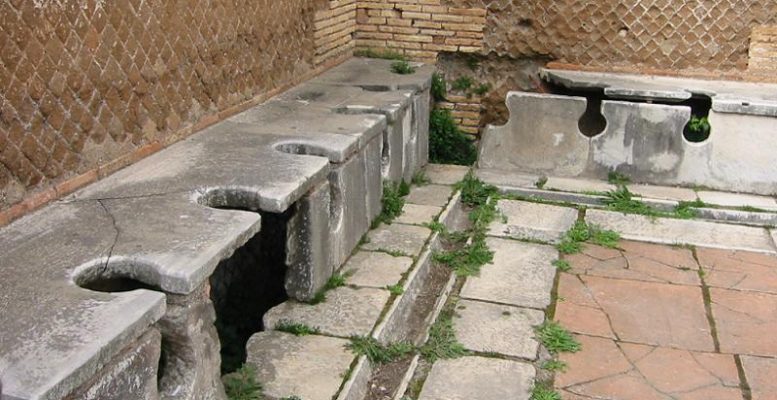
How does the “public toilet” idea sound to you? There are still some public toilets except the ones in cafes or restaurants, but they are mostly located in concerts or festival areas and they are for one person.
But, in Ephesus, around the 1st century, a public toilet was made by Romans. These toilets are literally for everyone and they don’t even have walls. The other shocking thing is that those toilets are also used as a socializing tool, the use of the toilets was also free!
Clean water was flowing for treatment in the channel passing in front of the seating benches. The Romans used to look at each other in a chat and chat, and they would openly defecate.
20- Explore the Vedius Gymnasium
Vedius Gymnasium was built by a wealthy from Ephesus in the 2nd century in the name of Vedius Antonius, who was a member of the Vedius family, which was well known in Ephesus at that time, has a magnificent structure where both sportive and cultural education was made.
There is a ceremony hall, dressing room and bath in the middle part, and a courtyard in the east part. While moving from the Vedius Gymnasium towards the ruins, there is the stadium on the left.
Vedius Gymnasium is thought to host many sports races, gladiator games, Olympics, chariot races and cultural events during the period it was held.
21- Visit the UNESCO Heritage St. John’s Basilica
St. John’s Basilica is the largest religious building built after the Temple of Artemis in Ephesus. The tomb of St. John, the youngest apostle of Jesus and also one of the writers of the Bible, and the basilica built on it may be one of the most important places on the list of places to visit in Selçuk.
With the spread of Christianity, St. A monumental tomb in the name of John and a basilica was built on it in later periods. It is known that in the 12th century, the remains of the sacred tomb were moved to the Church of Saints in Istanbul .
The basilica was built by the Byzantine Emperor Justinianos and his wife Theodora, the church was designed with a cruciform plan. Cut stone blocks extracted from the Temple of Artemis were used.
It has special importance since it has become a pilgrimage place for Christians since the Middle Ages. Millions of Christians visit this place every year to become pilgrims.
The entrance fee to the basilica is 1,5$.
22- Watch the view of Ephesus from Ayasuluk Hill
Ayasuluk Hill is also known-as Selcuk Castle. Ayasuluk Hill was under risk until the mid-1980s due to the threat of modern urbanization, looks to the future with confidence with the conservation decisions taken by UNESCO in the following years.
On the Ayasuluk Hill, which has traces of the Byzantine, Aydınoğulları and Ottoman periods, settled around Selçuk, the St. John Basilica, fortresses and walls from the Aydınoğulları Period, and some buildings added to the castle during the Ottoman Period are still standing. The hill allows us to examine pieces from many nations.
Visitors on the Ayasuluk Hill will visit St. In addition to St. John’s Basilica, you can see the Oppression Gate, city walls, inner fortress walls, cisterns, castle mosque, bath, and monumental structures. This hill, which has been undergoing restoration works since 1960, is seen as one of the most important cultural treasures of Western Anatolia.
Ayasuluk Hill, where today’s Selçuk Castle is located, was the first settlement in the region. As it is connected to the sea with natural harbor bays, it is also in a very important place as it is surrounded by a very fertile rural area in terms of other resources.
23- After a long, full of history trip you deserve a coffee or a tea
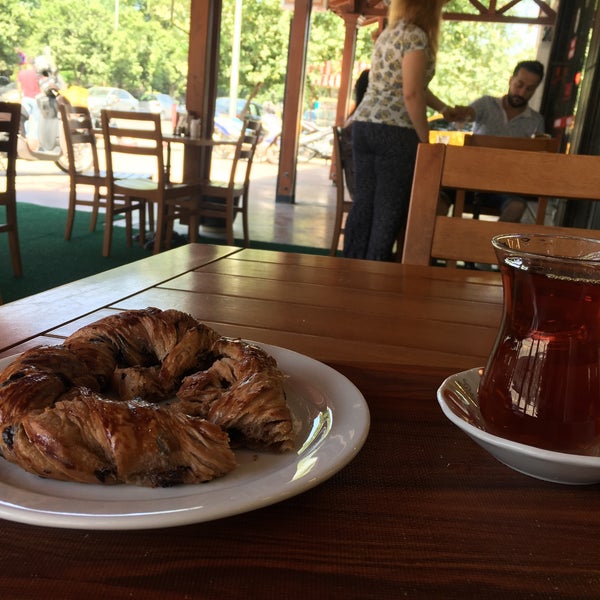
You saw all the historic places you must see. After this long and full of exploration trip, you should be tired. That’s why this recommendation includes a treat for yourself.
Go to “Efes Fırın – Cafe & Bakery” and have yourself a tea or coffee whether you like. Also, if you are hungry, you can try their bakery products too.
22- Don’t forget to buy some souvenirs for your home

Before you leave this ancient city, I suggest you get some souvenirs for your home or your loved ones. In my opinion, this trip was worth remembering.
You can stop by “Ephesus Souvenirs” to buy some small souvenirs. You can get some mini statues, magnets, glasses, keychains, etc.
Ephesus is a legacy of ancient civilizations. It must be seen to be able to observe the lives of past civilizations even if a little. It is an important place not only in Turkish history but also in world history.
As you can see there are many historical spots in Ephesus. Even though the city is mostly in ruins, you can smell the historical air while exploring. If you are into history and ancient cultures, Ephesus would be an amazing place for you to discover!
I hope this article could be a guide for you while exploring Ephesus. There are still some other places to see but these are the most important ones. Enjoy reading and have a great trip, if you are on your way!

The Complete Guide To The Ephesus Ruins in Turkiye: Everything You Need To Know To Have An Unforgettable Visit
Home to monumental statues and one of the largest archaeological sites in Turkiye, the Ephesus ruins are a wonder to explore. See it all with our complete guide to visiting Ephesus, Turkiye.
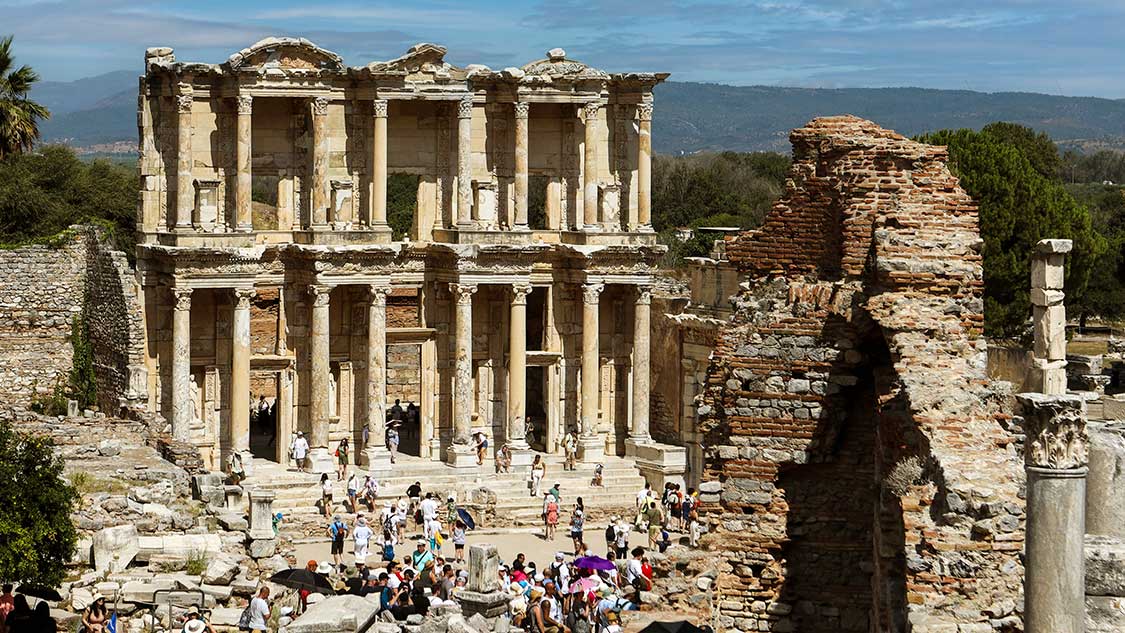
Visiting the Ephesus ruins was one of the wildest experiences from our travels through Turkiye . Ranked among the most visited places in the country, Ephesus can see up to 10,000 tourists per day strolling through its marble streets.
Whether you’re planning on visiting Turkiye on a cruise ship or touring through the country by land or air, there’s a good chance that, at some point, you’re going to end up visiting Ephesus. And with good reason.
Considered among the most well-preserved Greek ruins in Turkiye and situated within easy reach of the Aegean Sea, where countless cruise ships dock each day, Ephesus draws visitors with visions of the towering facade of the Library of Celsus, the most stunning building in the city.
But the story of the Ephesus ruins is far grander than one building. In fact, Ephesus is one of the largest archaeological sites in the country and one of the best places to visit in Turkiye . And because of that, coming to the site armed with a little knowledge will go a long way towards making your visit to Ephesus a memorable one. After all, Ephesus is more than just a beautiful Greek ruin.
There is an absurd amount of history that runs through its streets.
About Ephesus, Turkiye
Table of Contents
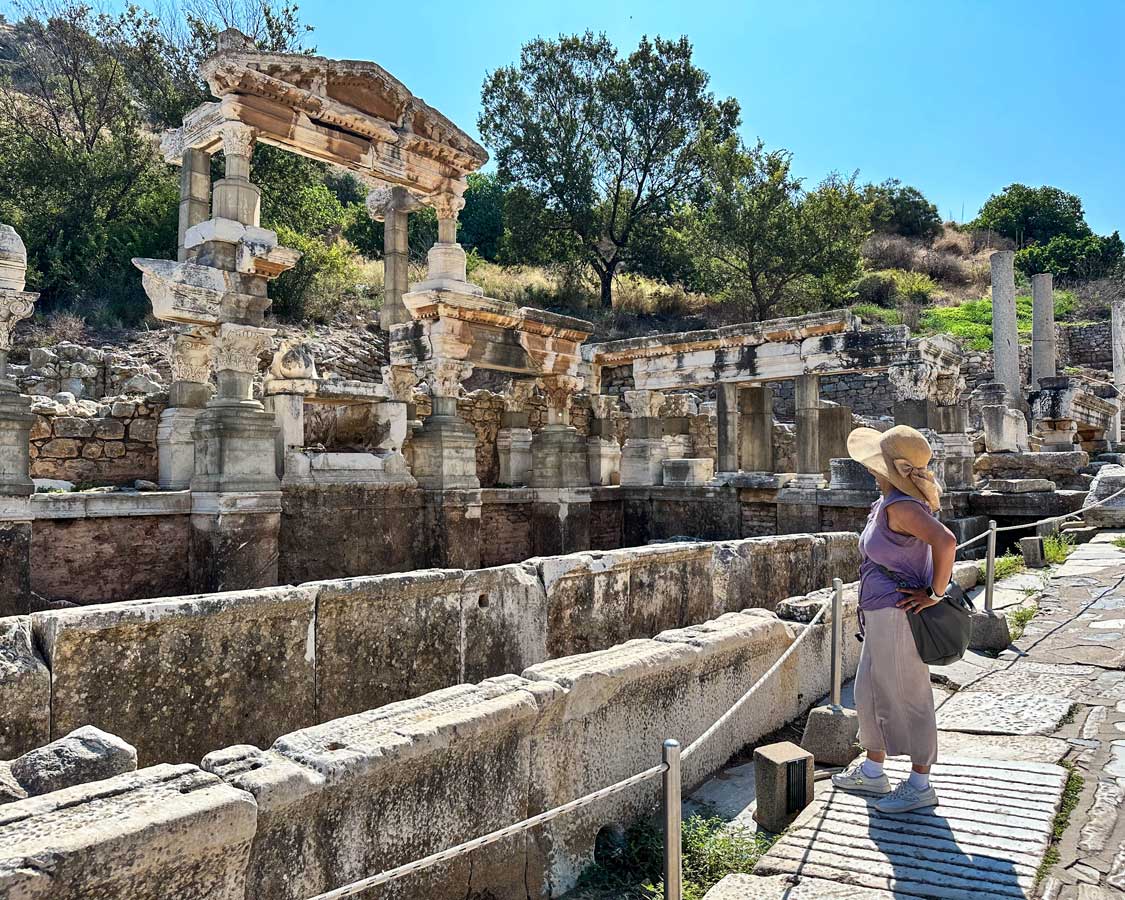
The history of Ephesus dates back to over 1,200 BCE. Its early years were fraught with trouble, including natural disasters and war. But after nearly complete destruction during a Cimmerian invasion in 700 BCE, Ephesus rebounded to become one of the wealthiest cities in the Greek empire.
The city was a center of learning and was key to the growth of philosophy. Artists and scholars filled the squares, and the city was filled with architectural wonders. One of those architectural marvels grew to fame as one of the Seven Wonders of the Ancient World.
The Temple of Artemis, located in the nearby town of Selcuk , with its 127 columns and masterful art and sculpture work, was one of the most stunning buildings in the world before its destruction by arson in 356 BCE.
Even after the fall of the Greek Empire caused by the Persian invasion, Ephesus continued to prosper as a vital trade hub. The city was liberated by Alexander the Great in 334 BCE. It was abandoned briefly when General Lysimachus, who ruled the region after the death of Alexander the Great, blocked the city’s sewage system after Ephesians refused to leave when he ordered the town to be moved two miles southwest.
By 281 BCE, Ephesus had been re-founded and once again grew to be one of the most important commercial ports in the Mediterranean. By 129 BCE, the city fell under Roman rule. Over the coming century, Ephesus became a cultural center for the Christian community. Saint Paul was notoriously “booed” while preaching at one of the city’s theatres, and the city became the final home for both Saint John the Baptist and Mary, mother of Jesus. Both the Gospel according to John and the Book of Ephesians from the Christian Bible are said to have been written in and around the city.
It was the rise of Christianity that ultimately led to the decline of Ephesus. Emperor Theodosius I ordered all pagan temples and schools closed. Women, who thrived through Roman and Greek times, were reduced to second-class citizens, and the worship of the Goddess Artemis was outlawed. This, combined with a series of natural disasters and attacks by outside forces, contributed to the downfall of one of the greatest cities in the Eastern Roman Empire.
The reconstruction of the Temple of Artemis was destroyed by a Christian mob, and the city fell into decay, eventually resulting in its desertion.
How To Plan Your Visit To The Ephesus Ruins
The ruins of Ephesus, or Efes, as it’s known in Turkish, are vast. There are two entrances to the archaeological site: the upper entrance and the lower entrance. While you can visit the ruins from either entrance, I recommend starting at the upper entrance and working your way down. That way, you’ll be walking downhill for most of the visit. The downhill route will also give you the best views of the Library of Celsus.
Map of Ephesus
I put this map of the Ephesus ruins together to help you plan your visit to the site. It outlines most of the key areas within the ruins.
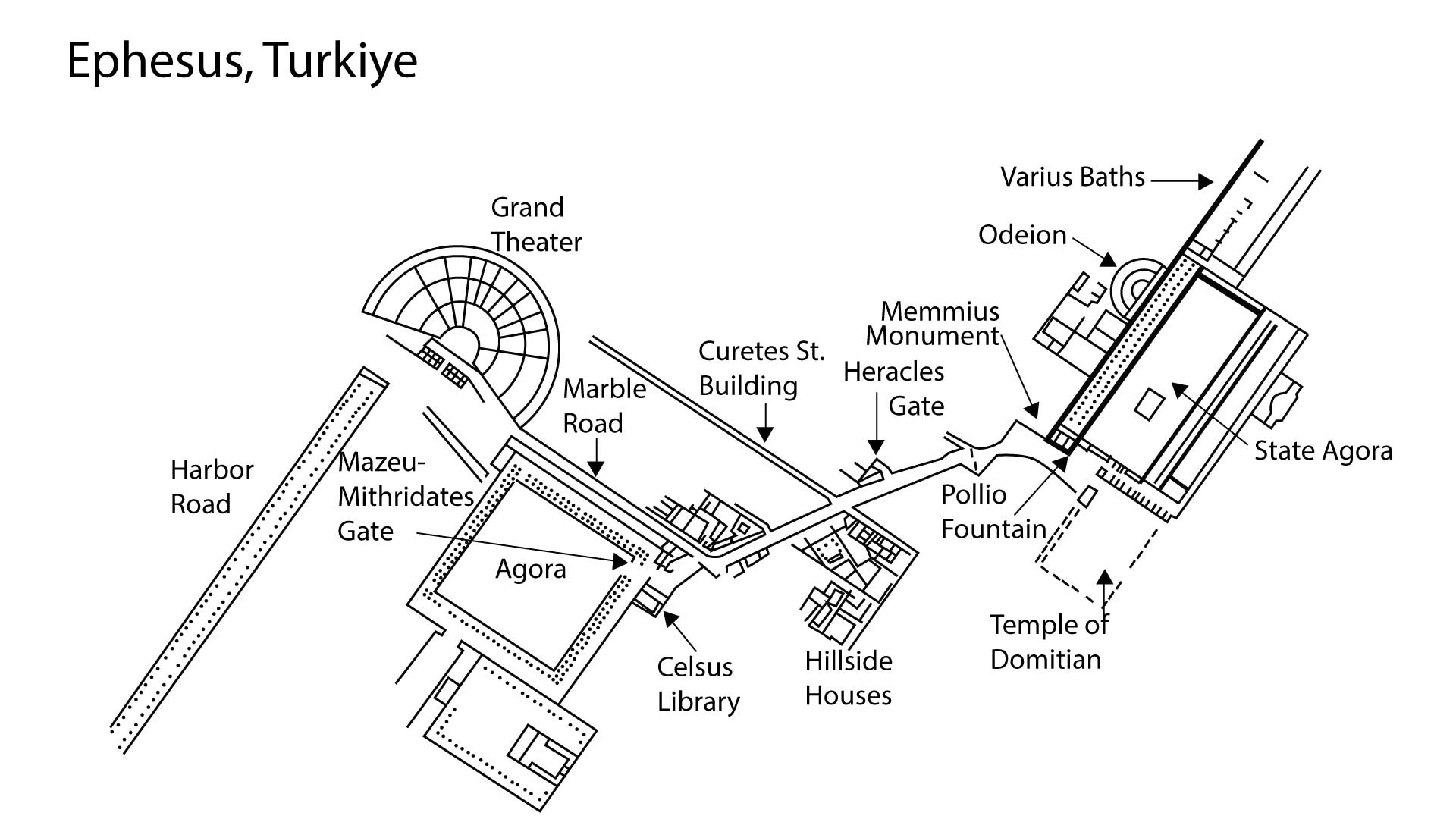
Top Things To See At Ephesus
Bath of varius.
Entering from the top gate, the first of the Ephesus ruins that you’re likely to encounter is the Bath of Varius. Like many Roman baths, the Varius Baths were situated at the main entrances to many ancient cities. They allowed visitors to wash before entering and mingling among the local citizens.
The Bath of Varius dates back to the 2nd century near the Magnesian gate and was erected under the direction of Emperor Vespasian. Along with welcoming visitors, they were an important social hub where residents would visit for massages and bathing.
State Agora
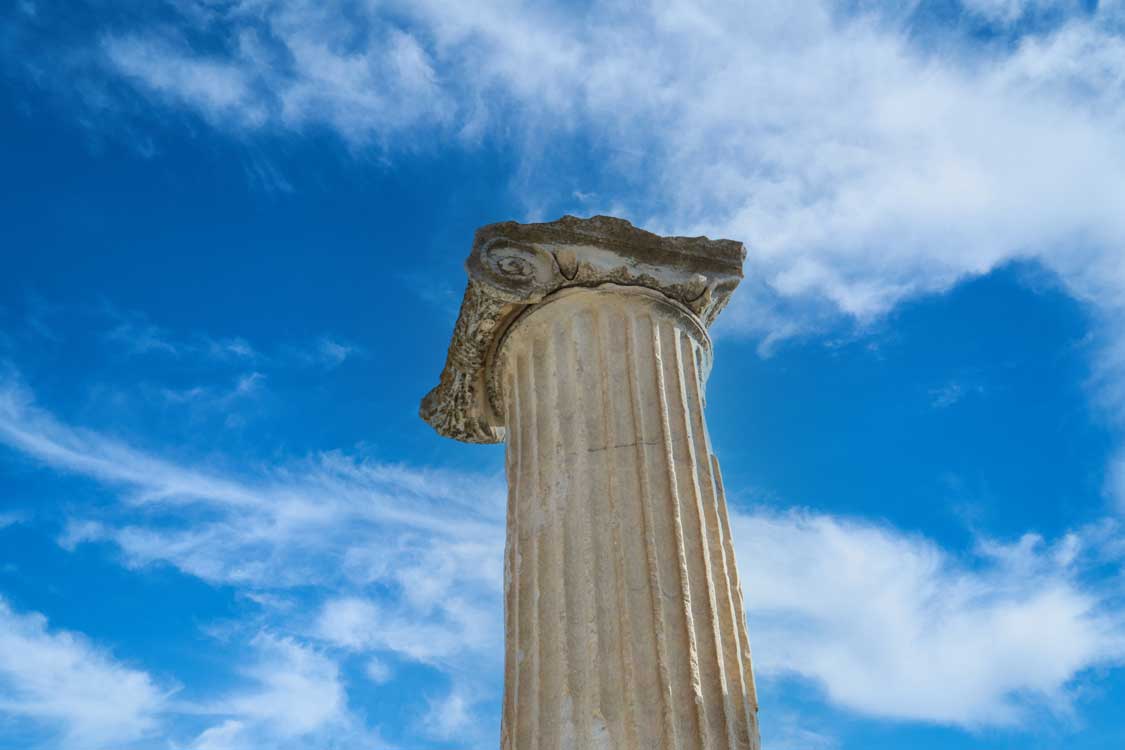
The State Agora is one of two agora’s within Ephesus. This agora, located in the southern part of the Basilica, was built around the first century B.C. Unlike most agoras, this was not used for commerce but rather as a meeting place for government debates and discussions.
The agora’s northeast corner contained many burial sites that date back to the 7th and 6th centuries BCE. In this corner is a water reservoir that gathered much of the water used in the city as it entered from the Pollio Aqueduct, the remains of which lie about 5 kilometers from the city along the Selcuk-Aydin Highway.
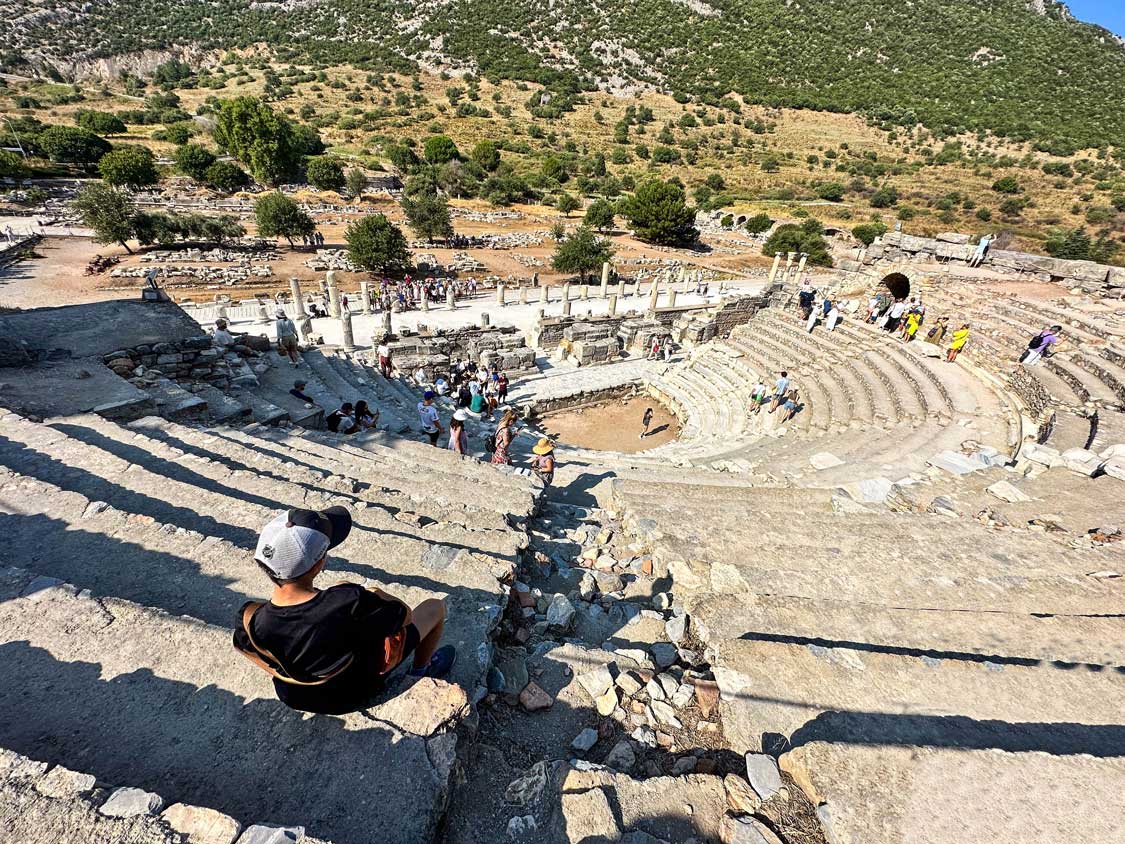
Opposite the State Agora is the Odeion, the smaller of the two amphitheatres in Ephesus. The Odeion could hold up to 1,500 patrons and would have had a wooden roof originally. It was financed by a wealthy Ephesian named Vedius Antonius.
The Odeion was used for political meetings, social events, concerts, and theatrical performances. It contains a stage, an orchestra, and a podium.
Memmius Monument
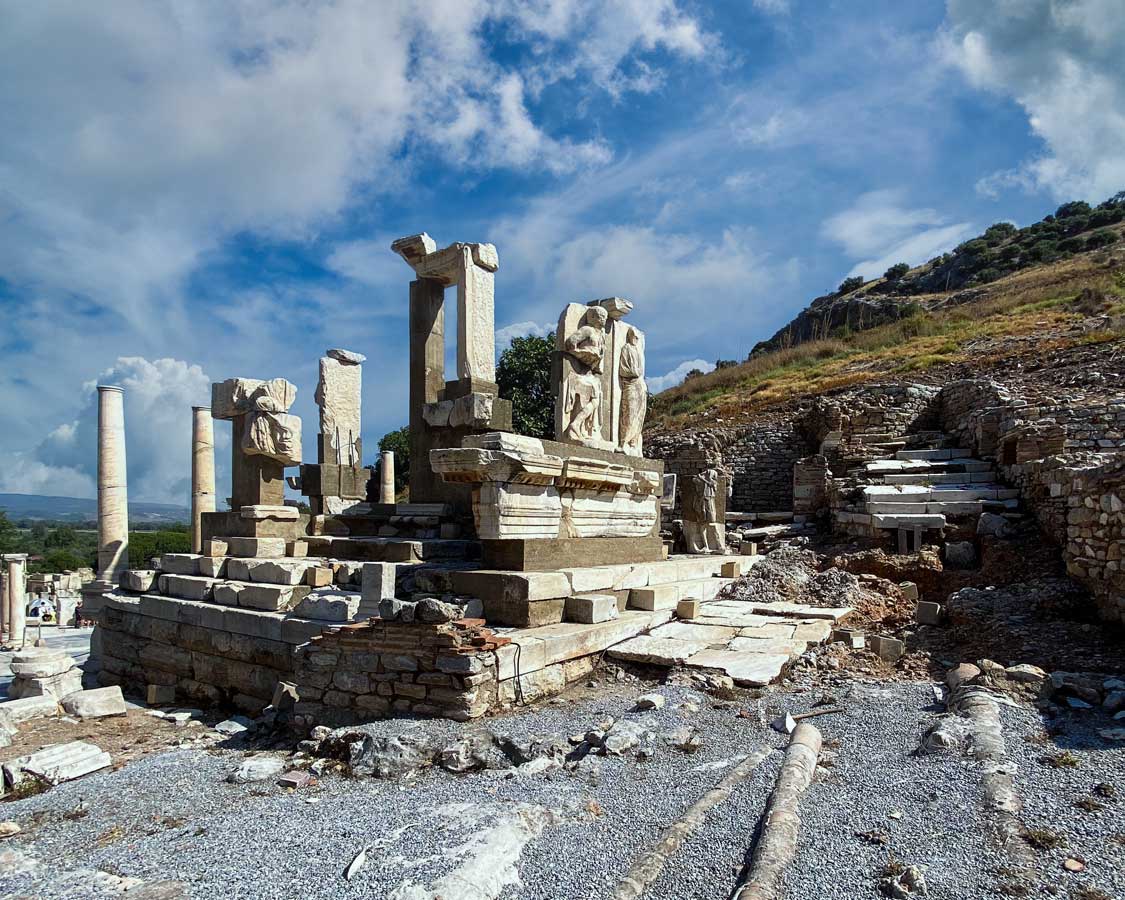
Walking downhill to the end of the Curetes Road bordering the State Agora, look to your right, and you’ll find one of the most stunning monuments among the Ephesus ruins. The Memmius Monument was erected in the 1st century CE by Memmius, one of the sons of Caius and the grandson of dictator Sulla of Roma.
Dictator Sulla was celebrated as a Roman hero. He was hailed for the emancipation of Ephesus from the occupation of the Pontic armies, who killed more than 80,000 Romans in one day to protest the empire’s high taxes.
The four-sided victory arch celebrates the liberation of Ephesus. While many of the inscriptions have been lost throughout the years, Memmius’ father and grandfather figures are still in excellent condition.
Pollio Fountain
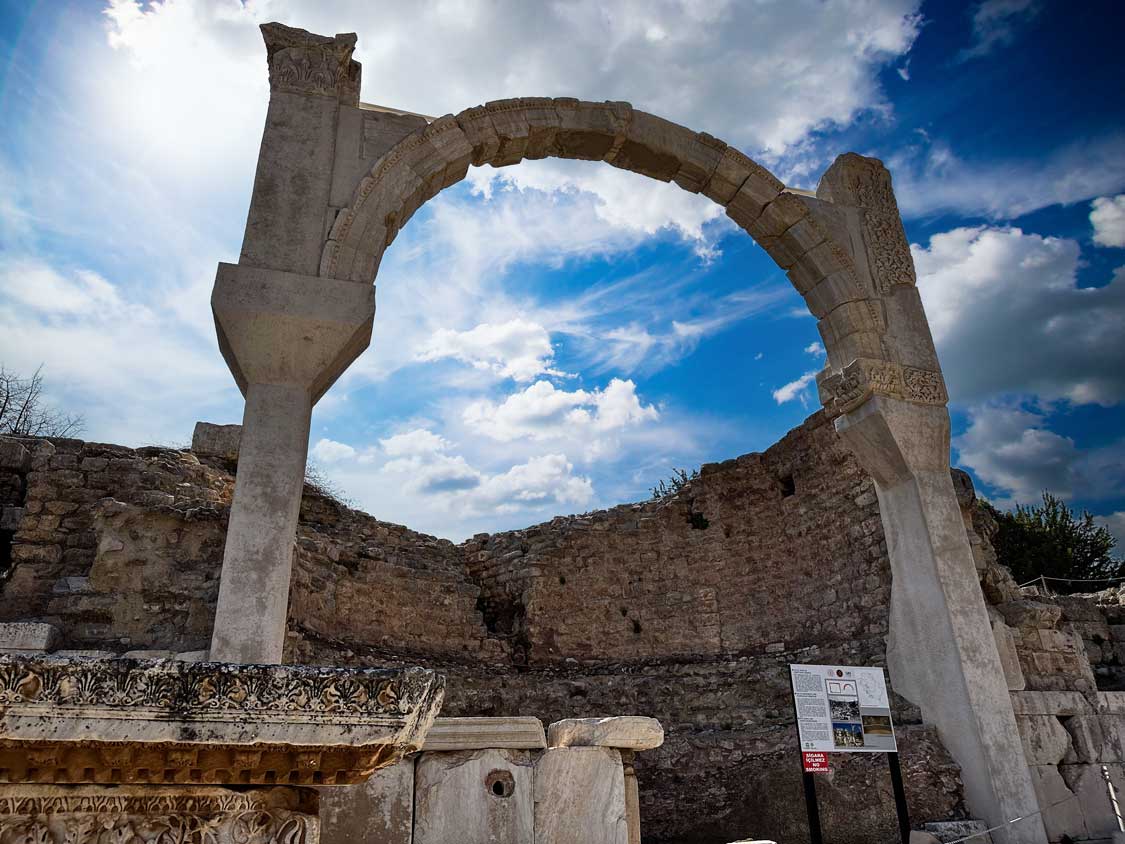
As you reach the bottom of Curetes Road and the Memmius Monument, most visitors hang a right to continue on downhill toward the Library of Celsus. Instead, take a detour to your left. Don’t get distracted by the prominent arch showcasing the Temple of Domitian. Instead, look immediately to your left after turning the corner. Here, you’ll find the Pollio Fountain.
The Pollio Fountain was built in 97 CE by the rich Ephesian C.S.Pollio and his family. The water from the fountain came from a network of baked clay pipes, and the water from the fountain was free for all to use. The towering arch facing the Temple of Domitian was decorated with many statues, including the head of Zeus, which can now be found at the Ephesus Museum in Selcuk .
Temple of Domitian
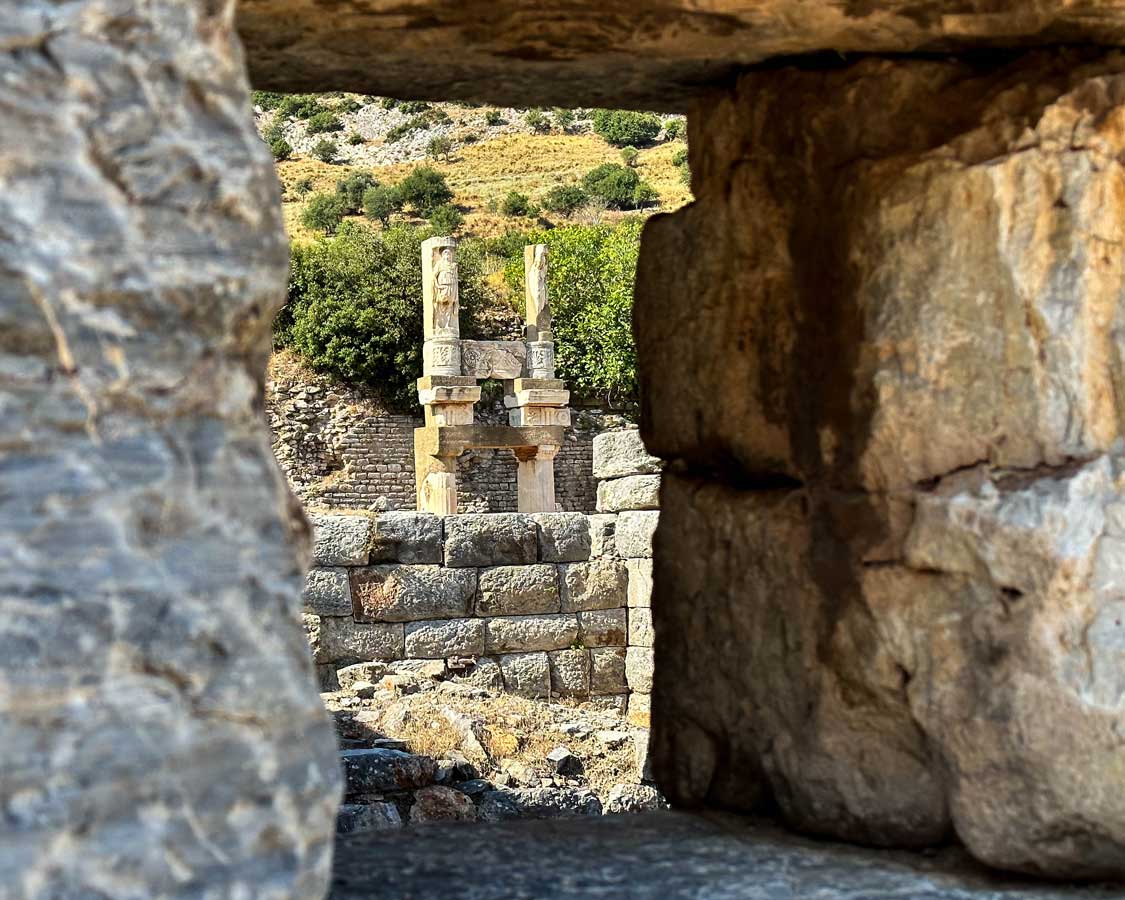
Facing the Pollio fountain is a tribute to one of Rome’s most brutal emperors, Domitian, although it may have been built for Emperor Titus. Either way, the Temple would have been considered a great honor for the city.
The stairs that used to reach the second floor of the temple are still in existence and can be seen in the back of the temple. The U-shaped altar that once stood at the northern side of the temple is on display at the Izmir Museum.
If you stroll down the lane running West from the Temple of Domitian, you’ll find a number of caves. Some of these have stone plaques with writing from contracts and business dealings of the age.
Heracles Gate
Head back to Curetes Road and begin walking downhill. On your right, pay attention to the large pillars that hold two reliefs of Hercules. This is the Heracles Gate.
An inscription that can still be made out dates the pillars to the 2nd century CE, although it’s believed that the pillars were actually moved from another building sometime around the 4th century CE.
Hercules was celebrated as the greatest of the Greek heroes. In the reliefs, he is shown wearing the skin of the Nemean Lion, whom he was charged with defeating. The lion was said to have skin so thick that it couldn’t be killed. Eventually, Hercules beat the beast by wrestling it and choking it.
Hillside Houses
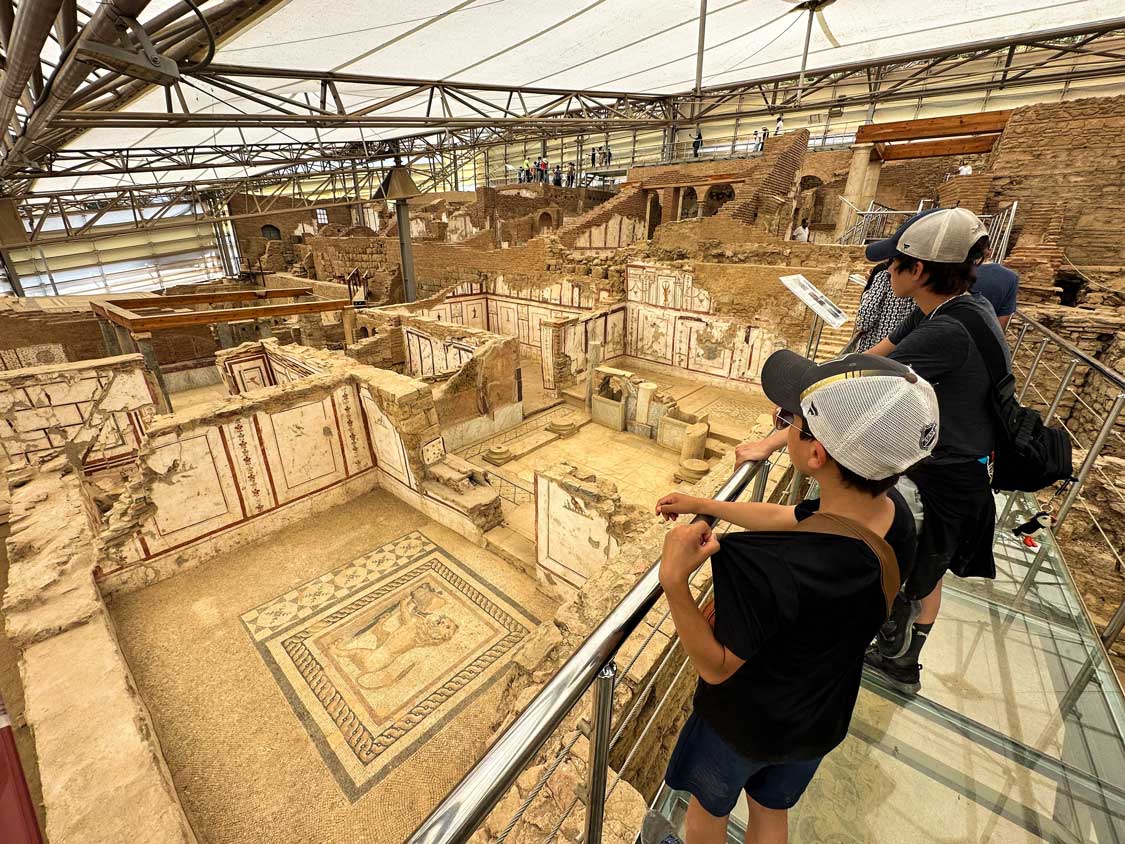
The Hillside Houses, also known as the Terraced Houses, may have an additional cost for visiting, but the admission fee is well worth it. Not only do they offer a glimpse into the lifestyle of Ephesus’ most elite residents, but it’s also one of the few places amongst the Ephesus ruins where you’ll find ample shade.
The Hillside Houses is a series of luxurious residential villas on the northern slope of Bulbuldagi Hill across from Curetes Street. Two housing complexes have been excavated so far, but more are being uncovered. The excavation work began in 1960, and some of the most beautiful tilework in the city can be found here.
At the base of the Terrace Houses is the only concession stand in the city of Ephesus. If you need to grab water, snacks, or a slushie, this is the spot to do it.
Library of Celsus
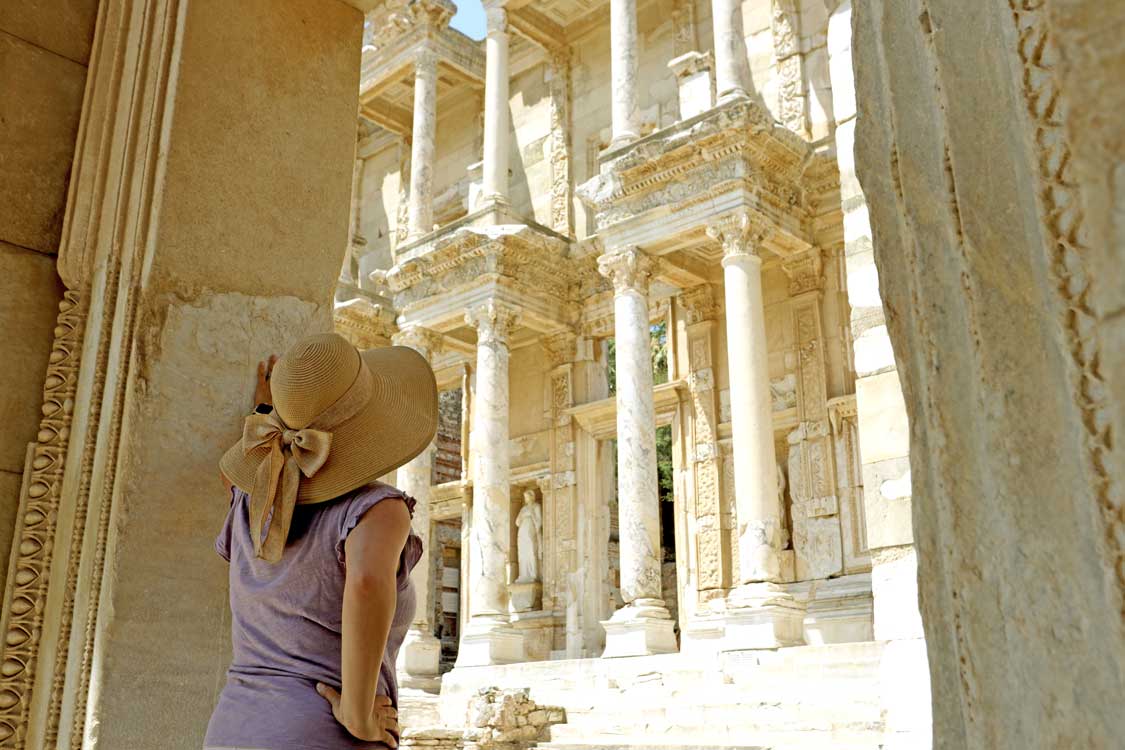
If you’ve ever looked up Ephesus, chances are that you’ve seen images of the Library of Celsus. This is the most grand structure in all of the ruins of Ephesus, and it’s not something that is easy to miss.
The Library of Celsus once held over 12,000 scrolls and was one of the most beautiful buildings in the Roman Empire. It was built in the 2nd century CE. Only the stunning facade of the building remains, but it is still an impressive site and easily one of the most outstanding ruins I’ve seen in all of my travels outside of the temples of Luxor and Abu Simbel in Egypt and the ruins of Petra in Jordan .
Lower Agora
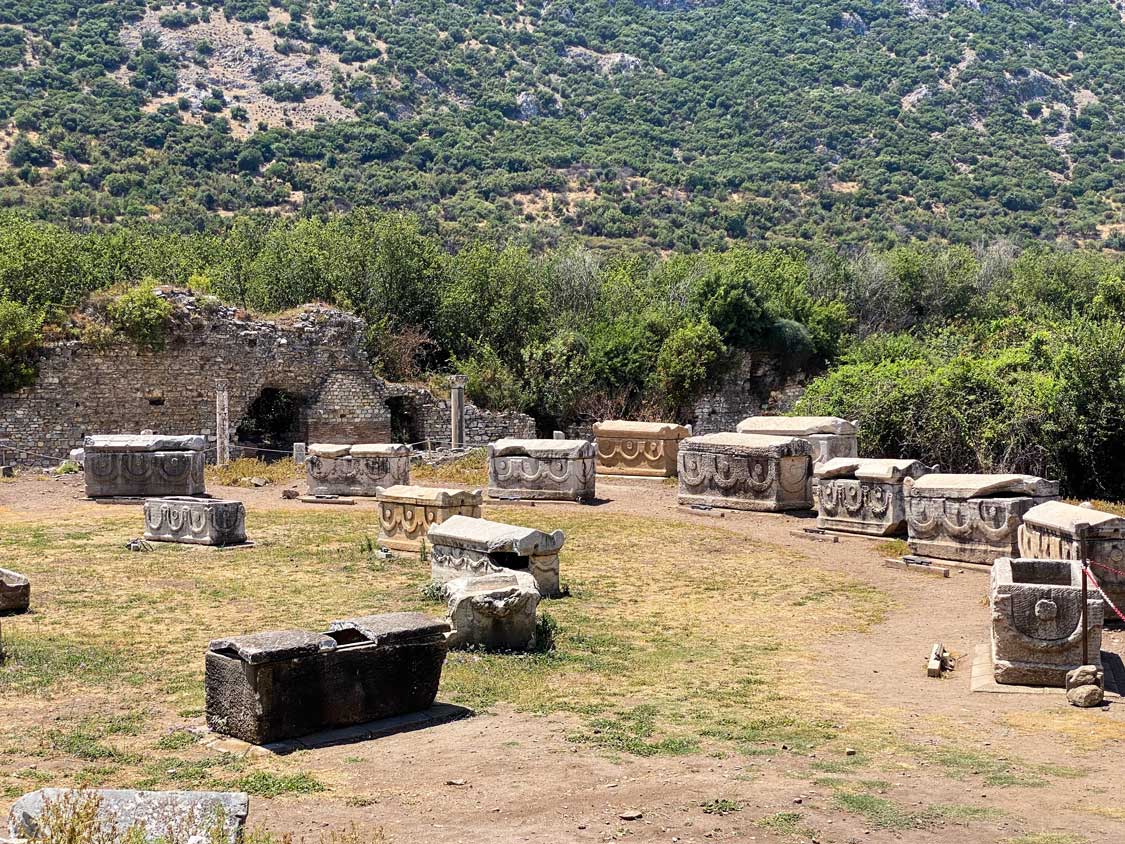
Lying right next to the Library of Celsus is one of the oldest sections of the Ephesus ruins. The Lower Agora, also known as the Commercial Agora, was the center of commerce in the city. It was originally linked to the harbor by the Arcadiane or Harbor Road.
The Lower Agora had three main gates, the best-preserved of which lies on the south-eastern side close to the Library of Celsus. This gate is called the Mazeu-Mithridates Gate.
This agora was established in the 3rd century BCE, but its actual age pre-dates that by quite a bit. Excavations have uncovered layer-upon-layers of construction dating as far back as the 8th century BCE. In later years it was used as a graveyard and currently, much of the Lower Agora is littered with tombs.
Marble Road
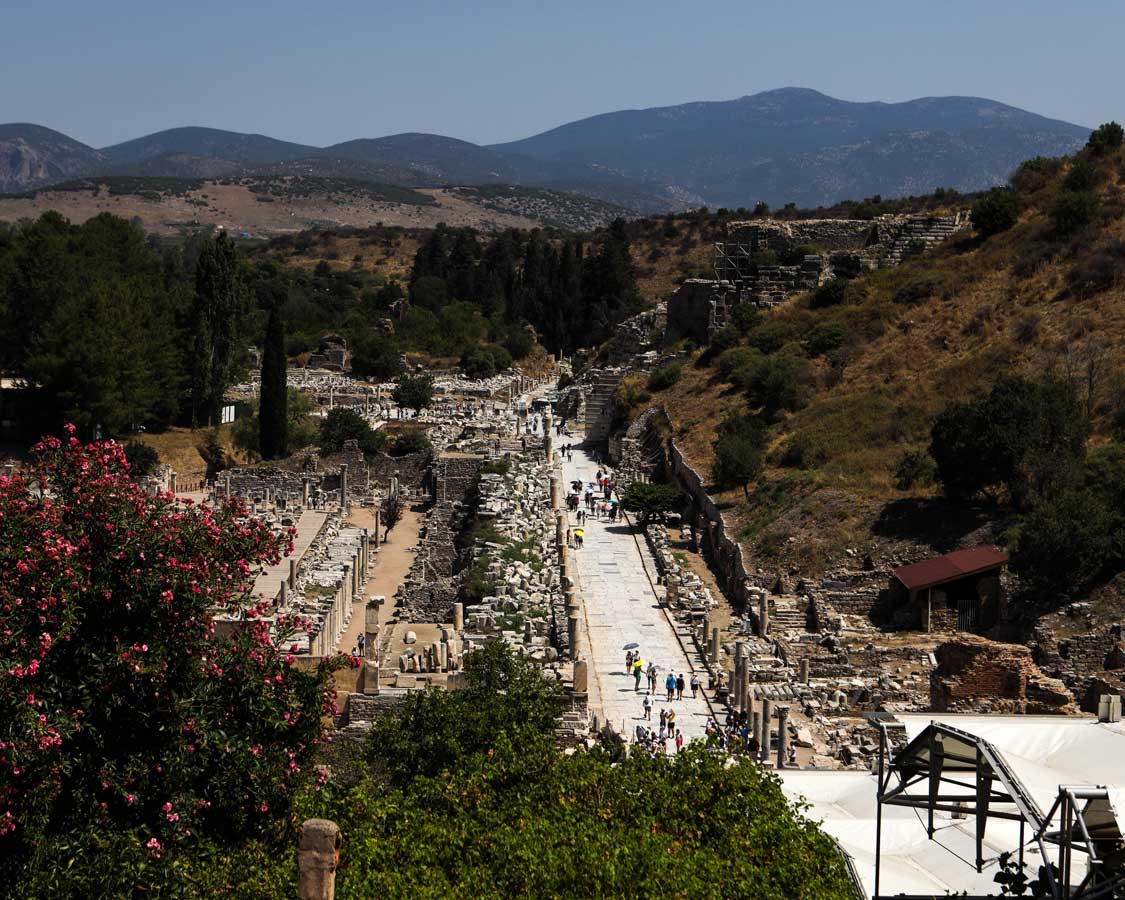
Connecting the Terraced Houses and the Library of Celsus to the Grand Theater is the beautiful Marble Road. Originally, this road would have connected to the Temple of Artemis, but much of it has yet to be excavated.’
The Ephesus Marble Road dates back to the 1st century AD, although it was rebuilt in the 5th century. The road ran along the Commercial Agora and was the main thoroughfare in the lower part of the city.
On your right-hand side, you’ll find many fascinating things to see in Ephesus, such as the brothels and the public toilets. It’s a unique glimpse into everyday life in the city.
Grand Theater
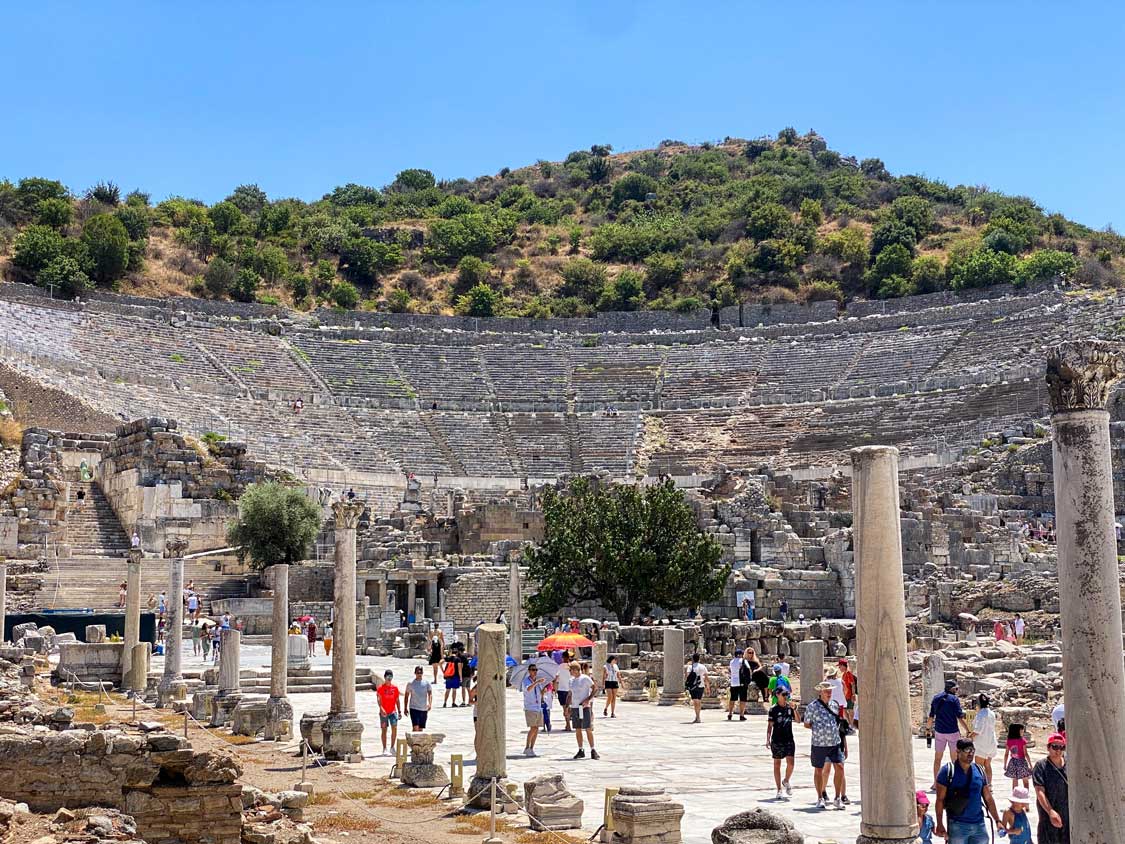
One of the final stops in our guide to the Ephesus ruins is the Grand Theater. This impressively preserved building at the base of the Marble Road held an audience of up to 24,000 people. The construction began under Emperor Claudius around 41-54 CE and was expanded to include a second for by Emperor Nero a few decades later. An impressive third story was later added about 100 years later.
The Great Theater was never covered by a roof, although an awning was used after the mid-2nd century as a protection from the elements. The steep seating meant that all of the spectators had an excellent view of the show.
The great theater of Ephesus is a splendidly preserved and very impressive building. This structure, built of marble, has a width of 145 meters, and its audience once reached up to 30 meters. In its heyday, it could accommodate up to 24,000 spectators.
Harbor (Arcadiane) Street
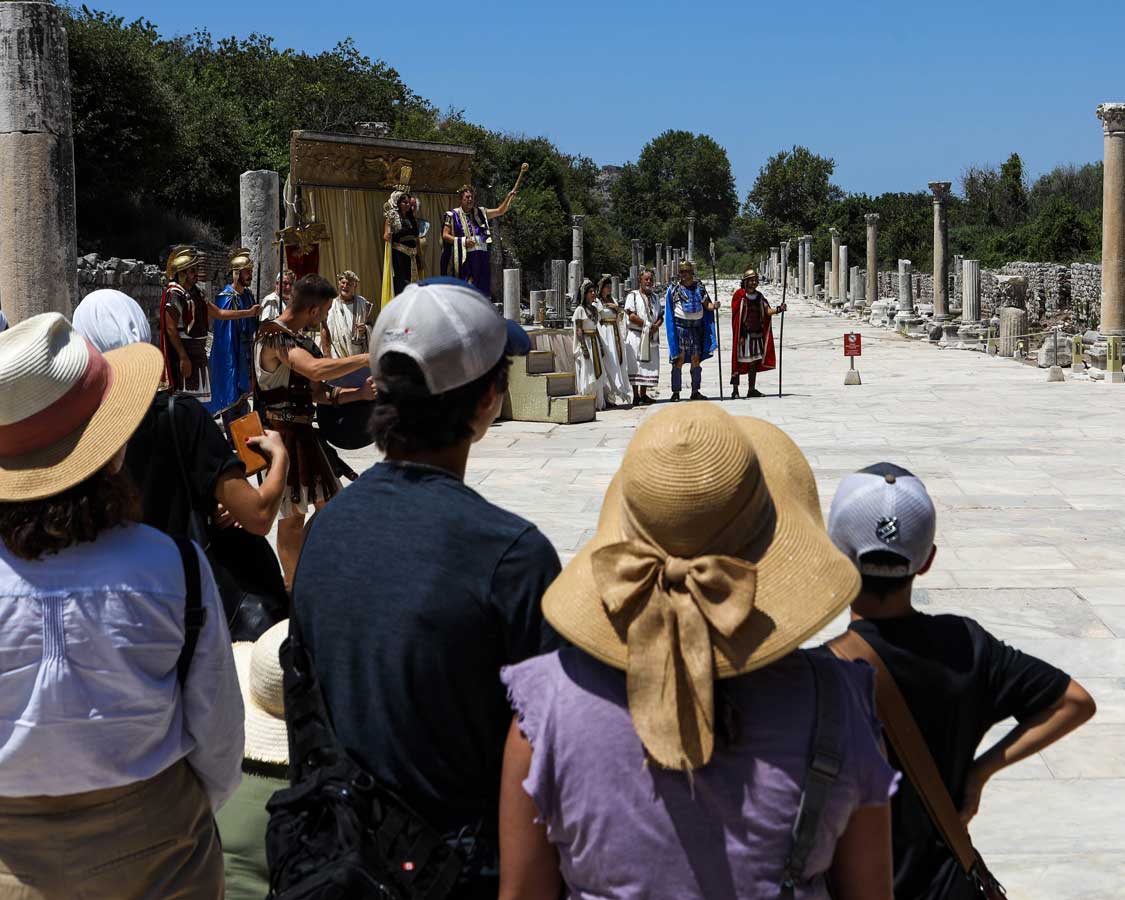
As you make your way past the Grand Theater towards the lower entrance of the Ephesus ruins, you’ll be walking along Harbor Street, also known as Arcadiane Street.
This colonnaded road was named for Emperor Arcadius, who ruled between 395 and 408 CE. It’s believed that the street was renamed, as the existence of the road dates back to the 1st century CE, long before Emperor Arcadius was born.
The street is well-preserved and sometimes hosts skits and plays that greet visitors entering via the lower gate. It was the showcase of Ephesus for newly arrived guests and was the grandest street in the city. Originally, the tall walls of the surrounding buildings would have blocked the view of anything outside of the street itself.
This street would have seen parades of wealthy elites, emperors, and celebrities making their way between the city center and the harbor.
Church of the Virgin Mary
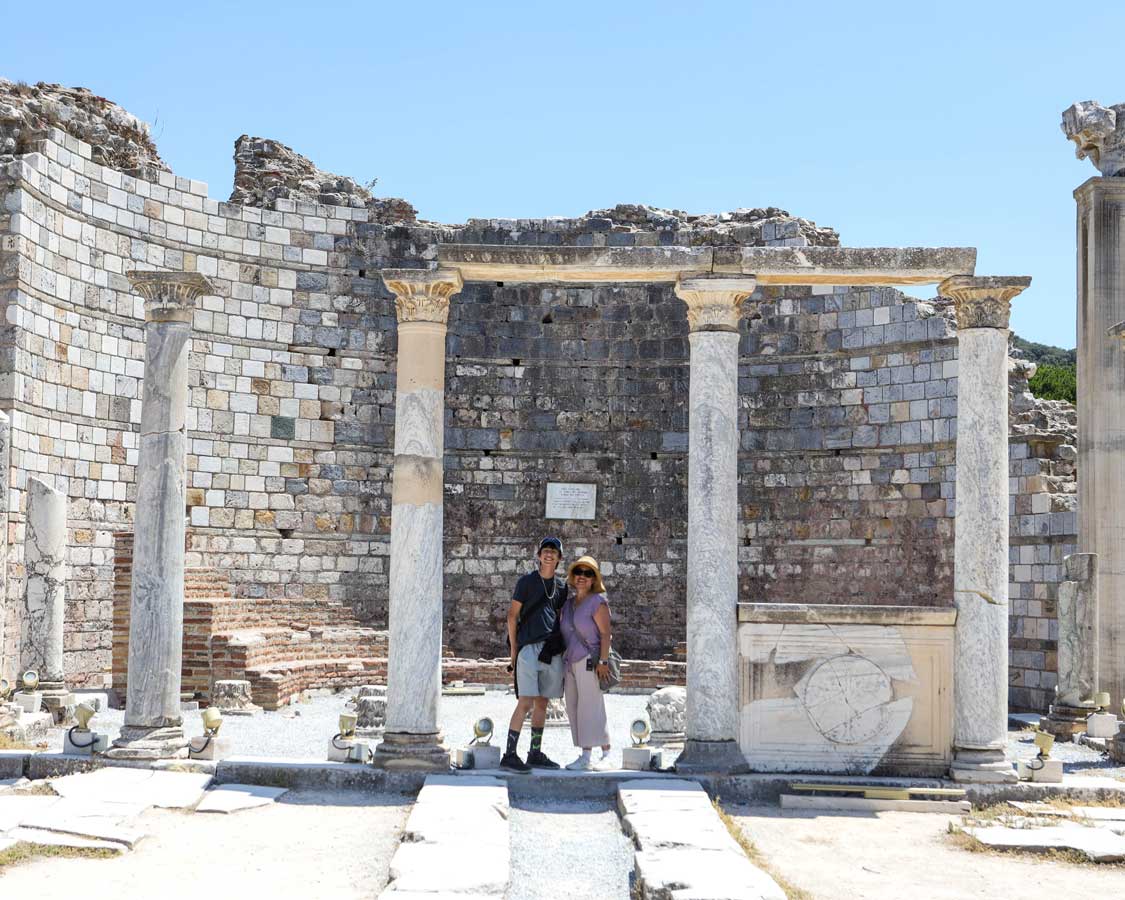
Mary, the mother of Jesus, is believed to have spent her final days in and around the city of Ephesus. The House of the Virgin Mary is located just a few miles away and is believed to be her final resting place.
Within the ruins of Ephesus itself lies the Church of the Virgin Mary, one of the first churches to be dedicated to the mother of Christianity. The church was erected in the 3rd century BCE as a basilica with a nave and two aisles. The best-preserved section is the cylindrical baptistery located in the north part of the atrium.
The church of the Virgin Mary lies on a side road away from the lower Ephesus gate and can easily be missed. As you’re heading towards the exit, hang a left instead of going straight and follow the road. The church will be on your left-hand side.
Ephesus Archaeological Museum
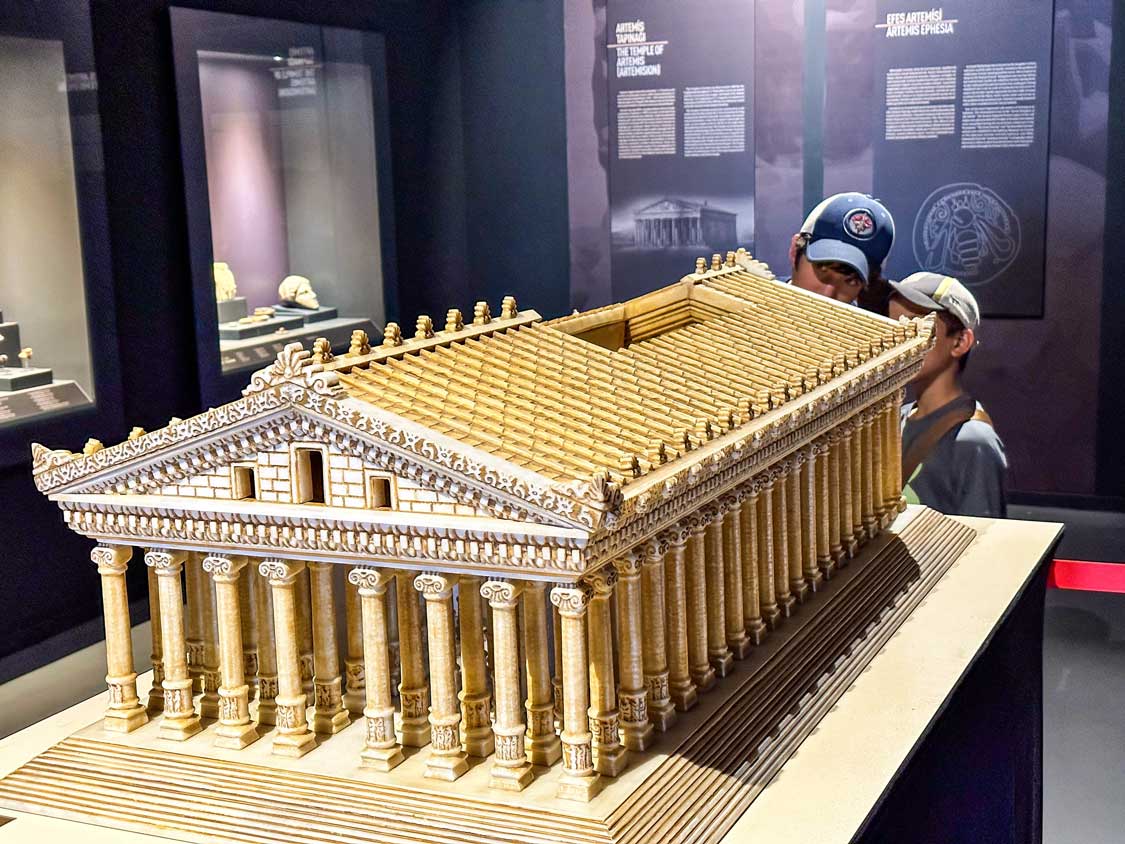
The Ephesus Archaeological Museum is not within Ephesus itself. Instead, it’s located in the town of Selcuk, about a 10-minute drive away. Most visitors to Ephesus don’t ever get the chance to visit, so if you make it to the museum, consider yourself lucky.
The Ephesus Museum is packed with relics, sculptures, and artwork from the city of Ephesus as well as from the Temple of Artemis, which is just a 10-minute walk from the museum.
Temple of Artemis
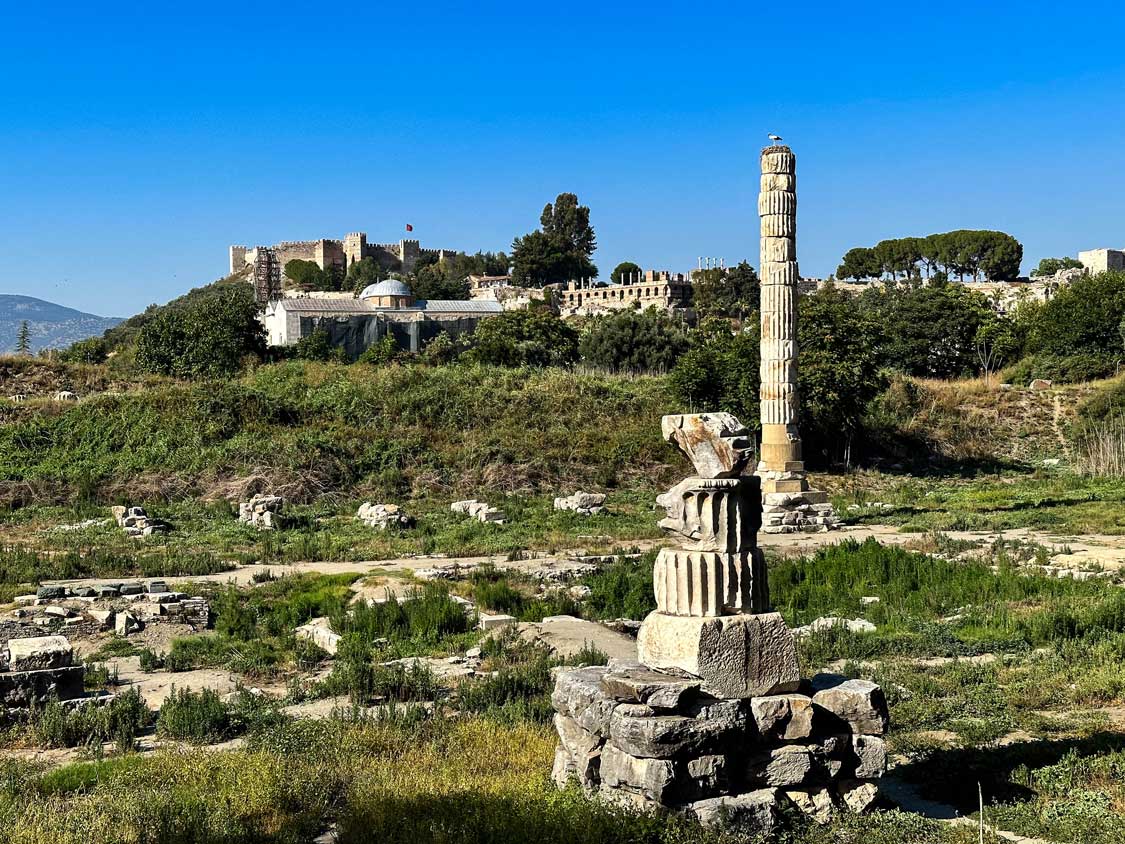
A visit to the Temple of Artemis, or Artemesia, is located in the nearby town of Selcuk, but it was once a part of the ancient city of Ephesus.
Once a grand temple to the Greek Goddess Artemis, little remains of the temple’s original majestic halls. But the Temple of Artemis was once considered to be one of the Seven Wonders of the Ancient World, and for that alone, it’s worth the visit.
Of the original Seven Wonders of the Ancient World, only the Pyramids of Giza in Egypt remain standing. Of the remaining six, Selcuk and the Temple of Artemis is one of the few places where you can still see remnants of the original building.
In its prime, the Artemesia was a stunning monument to Artemis, who in Roman times was referred to as Diana. She was the Goddess of Fertility, and her influence continues in the region, as you’ll find egg statues and references throughout the ruins of Ephesus.
The Temple was commissioned by Croesus, the King of Lydia, before 550 BCE and was infamously burnt to the ground in 356 BC. The temple was rebuilt but eventually destroyed by Goth invaders in 262 CE. The temple was made entirely of marble and covered a massive 350 by 180 feet (about 110 by 55 meters). It featured 127 columns.
Of those columns, only one remains standing at the site, while half of another remains. There are fragments that sit in the British Museum in London. However, the site itself was looted thoroughly to build nearby temples and mosques.
Make sure to include a visit to the Ephesus Archaeological Museum, which includes scale models of what the original Temple of Artemis looked like at its height.
How To Get To Ephesus, Turkiye

Getting to Ephesus from Kusadasi
Most visitors come to Ephesus from their cruise stop in Kusadasi. While many cruisers will book directly from their cruise ship, they can save a lot of money by booking a group or private tour of Ephesus.
Cruise tours often only see Ephesus itself, while smaller tours offer the chance to see more of the attractions surrounding Selcuk , such as the Cave of the Seven Sleepers, the House of Virgin Mary, and the Ephesus Archaeological Museum. This Ephesus tour from Kusadasi is a great place to start.
Some multi-day tours from places like Istanbul and Fethiye will combine Ephesus tours with other stops such as Pamukkale, Turkiye where you’ll find the stunning terraces of the Cotton Castle.
You can read all about our Aegean Sea cruise with Celestyal Cruises here.
Getting To Kusadasi from Selcuk
If you’re taking some time to explore Selcuk, good for you. This tiny town punches far above its weight when it comes to attractions. Most visitors to Selcuk will take a taxi to Ephesus. The ride takes about 10 minutes. I recommend asking to be dropped off at the upper gate.
Another option is to take the public minibus. These small buses might be a bit cramped, but they’ll get you from Selcuk to Ephesus for just 30 Lira. The busses depart from in front of the Ephesus Archaeological Museum.
Getting to Ephesus from Istanbul
If you’re based in Istanbul and are looking to explore Ephesus as a day trip, it’s possible. One option is to book an Ephesus day trip that includes flights. These tours leave right from Istanbul and will have you back in the city before bedtime.
If you want to make the journey yourself, I’d recommend departing from the Istanbul airport first thing and flying directly to Izmir. From Izmir Airport, it’s a 45-minute drive or taxi ride to the entrance to the Ephesus ruins.
Some visitors opt for the bus but keep in mind that the drive from Istanbul to Izmir is around 9 hours, and it’s an additional 45 minutes to Ephesus.
Most Popular Ephesus Tours
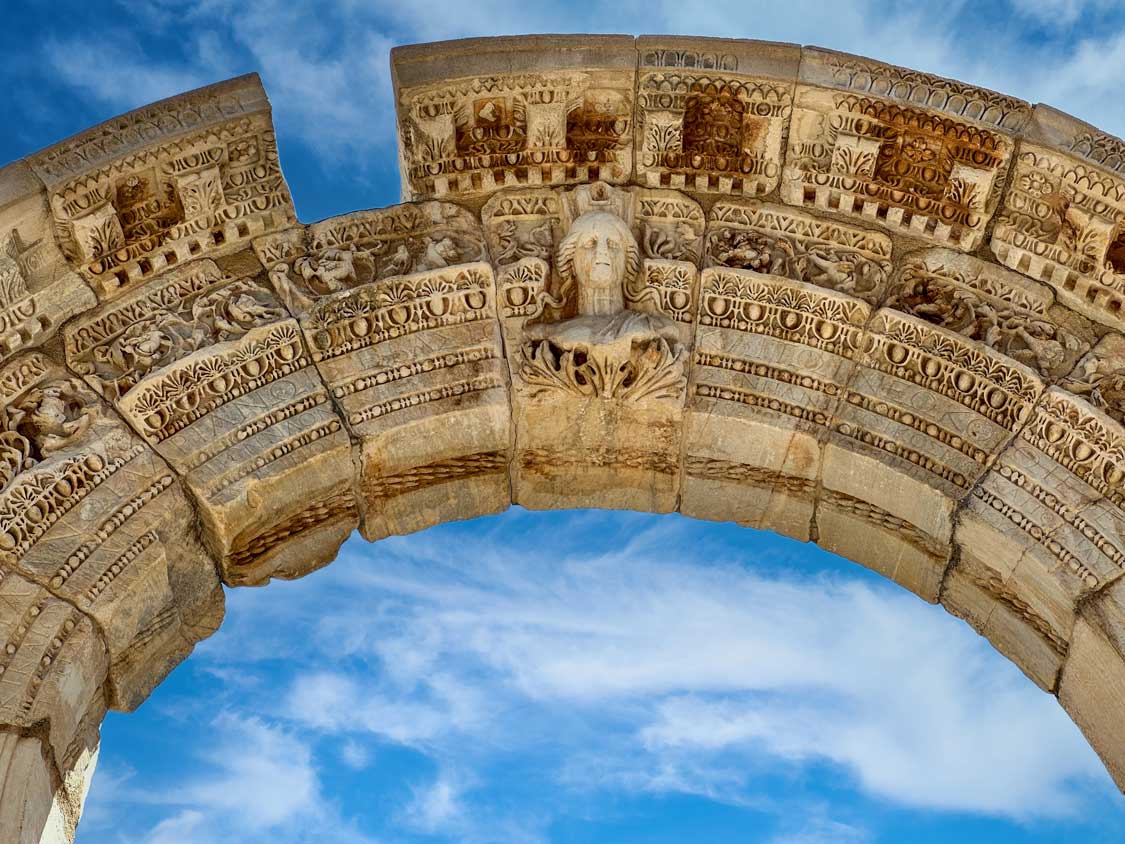
If you’re interested in joining an Ephesus tour you’ll gain the benefit of seeing the ruins through a unique lens. You’ll also have access to a well-trained guide who can go far deeper into the stories and history of the Ephesus ruins than you can read here.
Some of the most popular Ephesus tours include:
- Skip the lines and discover all of the highlights of Ephesus with the help of an experienced guide on this tour.
- See almost everything on this 8-hour tour that includes the Terraced Houses, the House of Virgin Mary, and St. John’s Tomb and Basilica.
- This full-day tour takes a different approach to Ephesus. You’ll get a tour of the ruins, but also head off the beaten path to visit the old village of Sirince and enjoy a private wine tasting.
- Exploring the Ephesus ruins builds up an appetite. This full-day tour takes you through the city’s most important sites and ends with a cooking class.
- Experience the breathtaking Turkish countryside on this eBike tour that takes you to Ephesus and also stops for treats such as Turkish pancakes and Turkish tea along the way.
Tips For Visiting Ephesus, Turkiye
Ephesus is a big archaeological complex, and it’s important to have an understanding of what you’re in for before you go. Here are my top tips for visiting Ephesus.
- Clothing: Wear comfortable clothing, especially shoes. You’re in for a lot of walking, and you won’t want to be strolling around in shoes that might lead to blisters or sore feet. Have a look at our favorite hiking shoes for men , women , and children for some suggestions. Make sure that you wear a hat and apply lots of sunscreen. Outside of the Terraced Houses there is little shade.
- When to Visit Ephesus: If you can avoid the summer months, do it. During peak season, Ephesus sees upwards of 10,000 visitors a day, all strolling the wide streets in the blistering sun. Most people don’t have options as to when they visit Ephesus, but that’s my suggestion. I also recommend going first thing in the morning when the weather is cooler, and the crowds are thinner.
- How Long To Spend at Ephesus: The ruins of Ephesus are vast. You’re going to spend at least two to three hours exploring. If you really love to get into the place, that visit time could stretch to four to five hours.
- Audio Guides: There are audio guides available at the entrance to Ephesus.
Where To Stay Near Ephesus
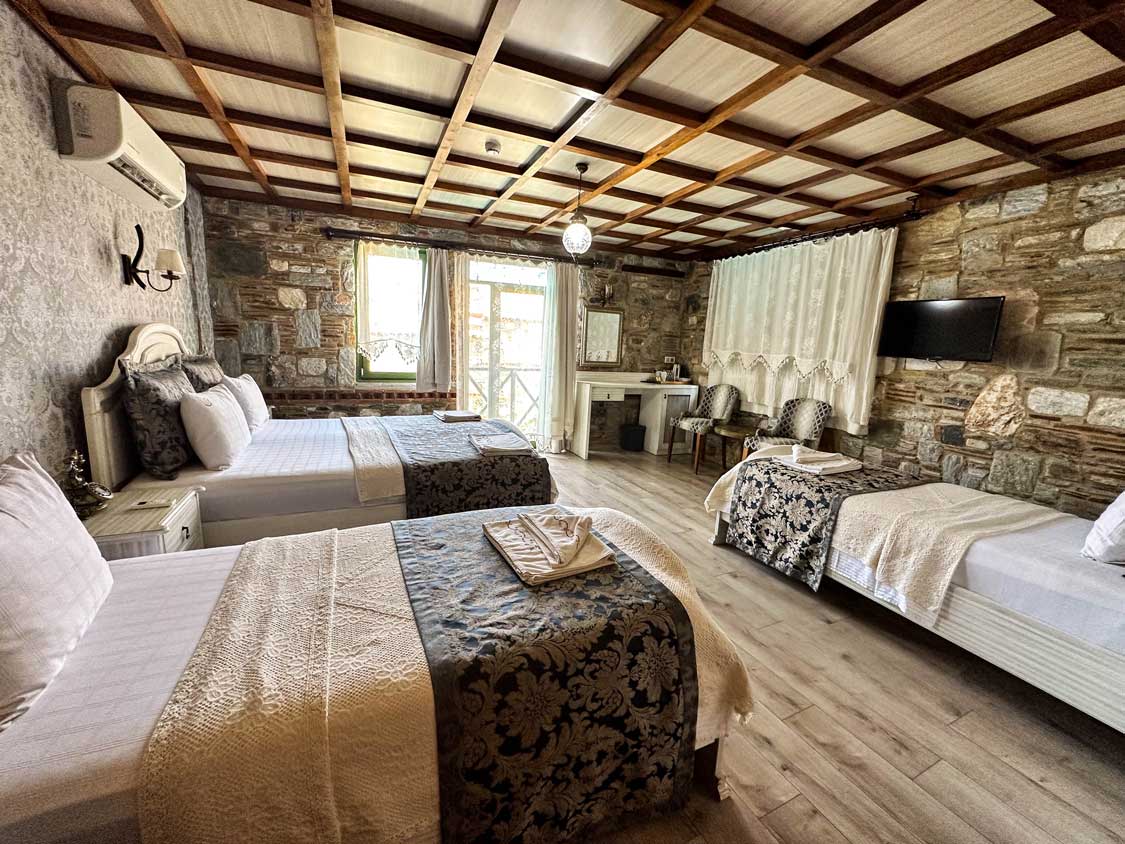
If you’re planning on spending a few days around Ephesus and Selcuk, there are plenty of attractions to keep you busy. It’s a lovely area to spend a few nights in, and there are accommodations for every budget.
We stayed at the Celsus Boutique Hotel , a lovely spot just a five-minute walk from Ayasuluk Castle in Selcuk and the Ephesus Archaeological Museum. The rooms were spacious and overlooked a courtyard with a lovely pool.
Another highly-rated Selcuk accommodations include the Nicea Hotel , a more traditional hotel-style accommodation with a continental breakfast and helpful staff.
Hotel Mary’s House is another great family-friendly hotel with a pool located right in the center of town. They feature family rooms and beautiful decor in large rooms. It’s one of the highest-rated hotels in Selcuk.
Tips For Family Travel In Turkiye
Family travel in Turkiye, especially in places like Sanliurfa and the Southeast, requires some planning and a little bit of luck. Some areas of this country can be closed due to political unrest, so it’s always a good idea to check out current travel advisories and stay informed of the current travel status.
Check out our Turkiye Family Travel Blog for everything that you need to know about family travel in Turkiye and watch ouf Tips for Family Travel in Turkiye video below to help you plan an unforgettable visit to this mesmerizing and wonderful country.
You’d be doing us a huge favor if you could hit the like and subscribe buttons.
Enjoy Your Time Exploring Ephesus, Turkiye
Ephesus is a stunning ruin and one of the best places to visit in Turkiye. I hope that our complete guide to visiting Ephesus has helped you to plan your visit. Don’t hesitate to drop a comment or reach out if there’s something that we missed.
If you love family travel as much as we do, please join our Family Travel Support Group on Facebook . You can connect with more family travelers just like you who love to explore the world.
Wandering Wagars is a participant in the Amazon Services LLC Associates Program, an affiliate advertising program designed to provide a means for sites to earn advertising fees by advertising and linking to amazon.com, amazon.co.uk, amazon.ca. Amazon and the Amazon logo are trademarks of Amazon.com, Inc. or its affiliates
You May Also Like To Read:
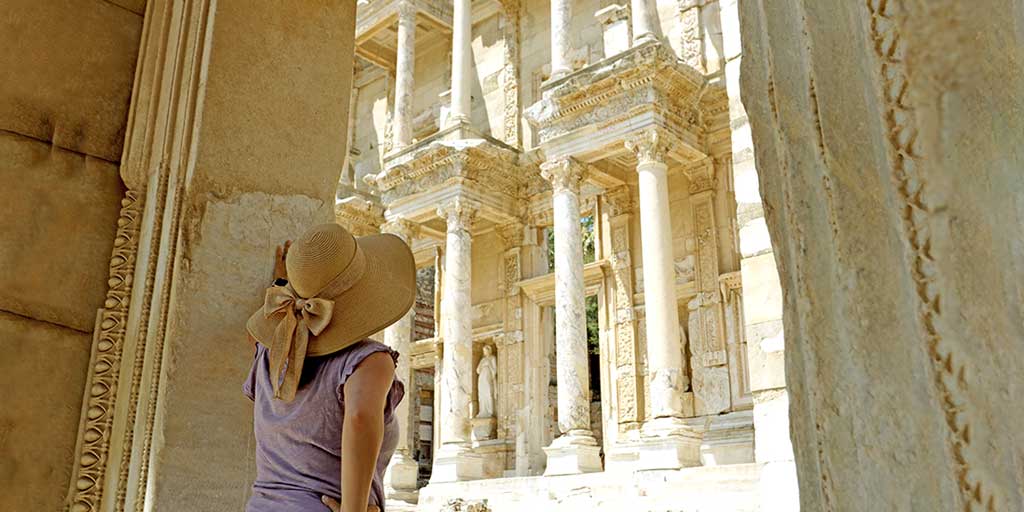
Monday 4th of December 2023
"It was the rise of Christianity that ultimately led to the decline of Ephesus." Not true. Not one community of people is to blame. The decline was due to: 1. Environmental factors: The harbour repeatedly silted up, rendering the port difficult to access. In 6th and 7th centuries, earthquakes caused much destruction, from which the city never recovered. 2. In AD 262, the Goths destroyed the city and temple. In fact, emperor Constantine built a new bath for the public, and emperor Justinian built the St John basilica. Both were advocates of Christianity. sources: https://www.history.com/topics/ancient-greece/ephesus#section_6 https://www.britannica.com/place/Ephesus
Privacy Overview

20 Best Things to do in Ephesus and Selcuk, Turkey
Ultimate guide to the best things to do in Ephesus and Selcuk, including updated entrance fees, opening hours, and tips for visiting.
Selcuk is a small town located in the Izmir province. It’s famous due to its close proximity to the ruins of Ephesus, one of the most important archeological sites in Turkey.
Although most people choose to spend their time in Ephesus only, the town of Selcuk is also worth visiting. From the impressive Library of Celsus to the Great Theater or The Temple of Artemis to the small Greek village of Sirince, there are lots of things to do in Ephesus and Selcuk.
This travel guide will show you the best things to do in Ephesus and Selcuk, including how to get there, where to stay, 2023 entrance fees, and a suggested itinerary.
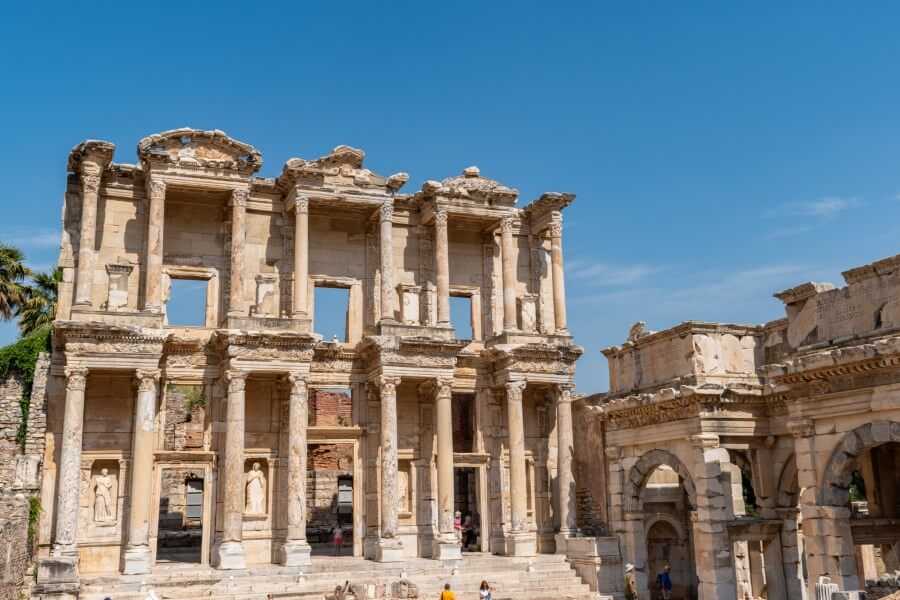
BEST EPHESUS TOUR
No time to read the whole post? This is the best and cheapest Ephesus tour out there! Includes transportation in air-conditioned van and an expert guide who will tell you all about the history of this incredible archaeological site. It has over 100 near-perfect reviews so you can’t go wrong!

*** This article may contain affiliate links, meaning each time you click through and make a purchase, I earn a small commission at no extra cost to you which helps a lot in keeping this website running. Thank you for your support :)
Read more about Turkey:
- The best ways to get to Ephesus
- What to do in Pamukkale Turkey
- The perfect 7 day Turkey itinerary
- 20 free things to do in Istanbul
- Ultimate Istanbul 4 day itinerary
- 27 tips for visiting Istanbul
- Guide to the most Instagrammable places in Istanbul + map
- Tips for renting a car in Turkey
Table of Contents
Best things to do in Ephesus Ancient City
Ephesus, or Efes in Turkish, is an ancient Greek city and one of the most impressive archeological sites in Turkey. The city later fell under the rule of the Romans around 130 BC and had a population of 250,000.
It’s also a pilgrimage site for Christians since it is said that Ephesus is the place where Saint Paul wrote the first letter to the Corinthians and Saint John wrote his Gospel. Ephesus may also have been the final resting place of the Virgin Mary.
In 2015, Ephesus was added to the UNESCO World Heritage list. To this day, part of the city is still being excavated, so there’s still a lot more to be discovered about Ephesus.
One of the best things to do in Selcuk is to visit the ancient city of Ephesus. Take a step back in time as you wander around the ancient ruins, some of which are still well-preserved, and learn about the history of what was once a flourishing port city.
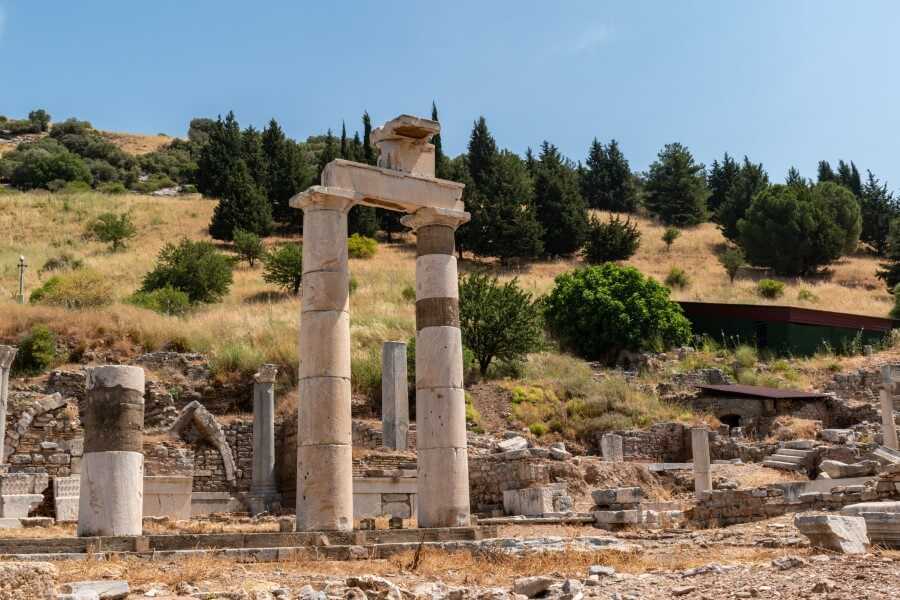
Tip : If you don’t want to worry about logistics, I recommend booking this guided tour of Ephesus which also includes a visit to the Temple of Artemis. The tour price includes transportation in air-conditioned van and an expert guide.
CLICK HERE TO BOOK A GUIDED TOUR OF EPHESUS
Below are some of the best things to see in Ephesus:
The Harbor of Ephesus
The Harbor of Ephesus was a transshipment area with several warehouses. Part of it is closed off to the public but you can still admire it from a distance and imagine what it looked like back in the day.

The Great Theater
Built during the Hellenistic period, around the 3 rd and 1 st century BC, the Great Theater is one of the most prominent attractions in Ephesus Selcuk.
With a capacity of 25,000, it was used for performances and gladiator fights. Since the amphitheater is built on the hill slopes, you can enjoy a panoramic view of the harbor and mountains.
If you want to have the Great Theater all to yourself, I highly recommend visiting early in the morning. At midday, it can get very crowded with tour groups but luckily most of them don’t spend too long here.
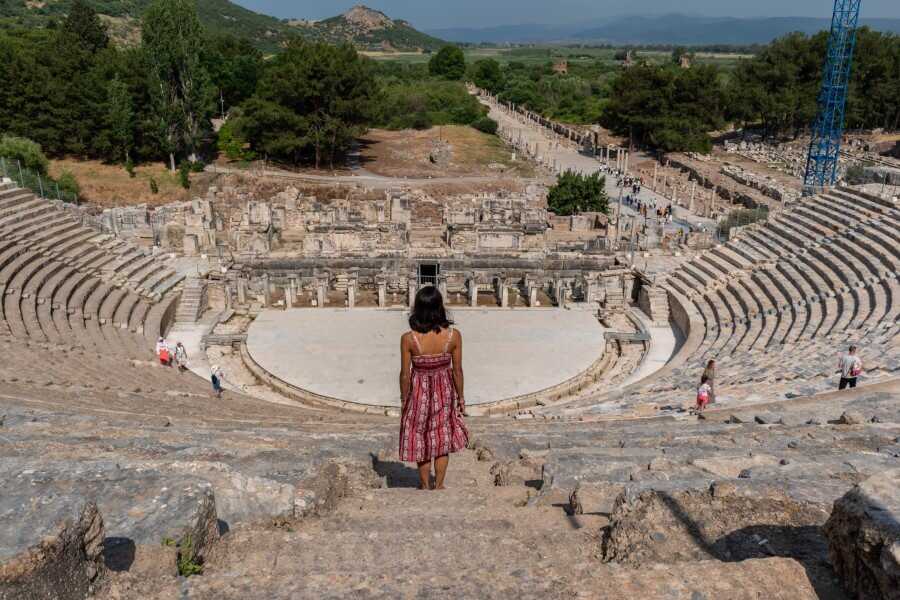
Library of Celsus
One of the most impressive things to see at Ephesus is the Library of Celsus. The library once housed over 12,000 scrolls and although only the façade is left, the intricate designs and carvings are still well-preserved.
Like the Great Theater, it’s best to visit early to avoid the crowds.

Public Latrines
Not too far away from the Library of Celsus are the ruins of a communal toilet that was used by the Ephesus citizens and visitors.
Curetes Street
This is the main road that runs along Ephesus. It used to be lined with shops where artisans and innkeepers sold their goods and services.
Along Curetes Street you can see the Heracles Gates, Terrace Houses, Nymphaeum Traiani, and The Temple of Hadrian.
The marble paving is quite slippery even in dry weather, so be careful when walking down the road.

The above photo was taken at around 11 a.m and you can see how crowded it was which is why it’s best to visit Ephesus as soon as it opens!
The Temple of Hadrian
This is another monument that was built in honor of Emperor Hadrian.
Terrace Houses
Dating back to the 1 st century BC, this is where the elites of Ephesus used to live. You can clearly see from the mosaics and marble walls adorned with frescoes that only the richest could afford to live there.
It does require an additional entrance fee of 170 TL which is included in the Turkey Museum Pass.
The Terrace Houses are open daily from 8.30 a.m to 7.30 p.m and the last ticket sale is at 6.30 p.m.
Entrance fee : 170 TL

The Temple of Domitian
This monument was built in commemoration of Emperor Domitian.
The Bouleuterion
Constructed in a similar style to the GreatTheater but smaller, the Bouleuterion has a capacity of 1,800. It was used for council meetings, musical performances, and contests.

The Church of Mary
This one isn’t as popular as the other attractions in Ephesus but is still worth a quick stop. The church is located not too far from the north entrance.

The House of Virgin Mary
After the death of Jesus, St John and the Virgin Mary came to Ephesus and it is assumed that Mary spent her last days in this house.
Although there’s no concrete evidence of this, it’s still a pilgrimage site for many Christians and has even been visited by three popes.
It’s located about 8 km from Ephesus, so the only way to get there is by taxi or rental car . I didn’t get a chance to visit since buses don’t go there and private taxis from Selcuk were too expensive. If you want to visit, it’s best to take a guided tour of Ephesus , which usually include a visit to the House of Virgin Mary.
The entrance ticket to Ephesus doesn’t include the House of Virgin Mary, so you need to buy a separate ticket.
How to get to Ephesus?
There are two entrances to the ruins of Ephesus. If you’re coming by bus ( click here for the location of the bus station in Selcuk ), you’ll be dropped off at the north entrance which has a huge parking lot (parking costs about 25 TL).
Here, you’ll find a restaurant and several souvenir shops lining the road that leads to the ticket office. There’s also a free toilet past the ticket office.
The bus ticket from Selcuk to Ephesus costs about 8 TL and it should take only 5-10 minutes to get there. Although you could potentially walk there in about 45 minutes, I wouldn’t recommend doing this during summer as it’s usually very hot.
Alternatively, you can enter through the south entrance which also has a parking lot but I recommend the north entrance since the most popular monuments like the Great Theater and Library of Celsus are located not too far away.

Related post: How to get to Ephesus from Istanbul
Ephesus Entrance Fee
The 2023 Ephesus entrance fee is 400 TL and is included in the Turkey Museum Pass (find out more about the museum pass here ).
Ephesus opening hours and when to visit
Ephesus is open daily from 8 a.m to 8 p.m and the ticket office closes at 7 p.m.
The best time to visit is around 8 or 9 a.m when it’s not too hot yet and the crowds are at their lowest.
If you’re wondering how long you should spend in Ephesus, 2 to 3 hours should be enough to see everything.
Ephesus FAQ
What should you see at ephesus.
Some of the best things to see at Ephesus include the Library of Celsus, the Great Theater, Curetes Street, and the Terrace Houses.
Is Ephesus worth visiting?
Yes! If you want to learn about the history of what was once a flourishing port city and see all the well-preserved ruins, then Ephesus is worth visiting.
How long should I spend in Ephesus?
It should take about 2 to 3 hours to walk around Ephesus which is enough to see everything.
Best things to do in Selcuk
Now that you know all about the best attractions in Ephesus, it’s time to discover what Selcuk town has to offer.
Ephesus Archeological Museum
One of the best things to do in Selcuk after you’ve visited the ancient city of Ephesus is to go to Ephesus Archeological Museum located in Selcuk town.
Although it’s quite small, the museum houses loads of artifacts from the prehistoric, Roman, Byzantine, and Ottoman eras.
You’ll find statues, sculptures, sarcophaguses, and old coins which have been excavated not only from Ephesus but also from the Basilica of St John and Temple of Artemis.
The museum is open every day from 8.30 a.m to 8 p.m (the last ticket sale is at 7.30 p.m) and tickets cost 100 TL.
Entrance fee : 100 TL

Temple of Artemis
The Temple of Artemis, also known as the Temple of Diana, is one of the Seven Wonders of the Ancient World.
Dedicated to the goddess Artemis, it is estimated that the Greek temple had over 100 columns when it was first constructed around 570 BC.
Over the years, it was damaged by fire and today only a single standing column is left.
It’s located within walking distance of Selcuk town and is free to visit, so there’s no excuse to skip this Selcuk attraction.
About 20 to 30 minutes should be enough to explore the grounds. You can also get a nice view of Isa Bey Mosque, Basilica of St John, and Ayasuluk Castle from there.
If you want a little guided tour of the temple, you can hire a local guide at the entrance.
Entrance fee : free

Isa Bey Mosque
Located at the end of a cobblestoned street in Selcuk residential area is Isa Bey Mosque. Unlike other mosques, Isa Bey Mosque was built in an asymmetric style.
Some of the architectural elements of Artemis Temple were used to build the mosque which makes it even more fascinating.
Part of Isa Bey Mosque is still under restoration works but you can freely explore the garden, see the gravestones or explore the inside of the mosque.

Basilica of St John
The Basilica of St John was built in the 6 th century to honor the burial site of St John who came to Ephesus with Mary, the mother of Jesus.
The Basilica of St John lies at the top of a hill overlooking Selcuk and can easily be reached on foot if you’re staying in the town center. It’s only about a 5-minute walk from Nicea Hotel where I stayed.
It’s not as popular as most of the attractions in Ephesus so you don’t necessarily need to visit as soon as it opens.
Plan to spend about 30 minutes there to explore the ruins and enjoy the panoramic views over Selcuk town, Isa Bey Mosque, and the neighboring mountains. The basilica is open daily from 8 a.m to 7 p.m.
Tip : The entrance to the Basilica is found here opposite a gift shop. If you just type “Basilica of St John” on Google Maps, you won’t be taken to the correct entrance.

Ayasuluk Castle
Sitting at the top of Ayasuluk Hill is Ayasuluk Castle which is also one of the best viewpoints in Selcuk. From there, you get a 360-degree view of the nearby plantations bordered by soaring mountains and you can even see the entire town.
The castle was built during the 6 th century AD and contains 17 towers, a mosque, and a Turkish Bath.

To get to Ayasuluk Castle, you have to enter through the Basilica of St John. Note that it opens slightly later at 9 a.m.
Tip : To get to Ayasuluk Castle, you first need to enter through the Basilica of St John and buy your ticket there.

Related post: 3 Turkey 7 day itinerary ideas
Take a walk around Selcuk town
Spend some time wandering around the cobblestoned streets of Selcuk and admire the beautiful houses and mosques.
The road leading to Isa Bey Mosque is my favorite since it’s very peaceful and quiet. It’s lined with cute little cafés and restaurants and you’ll even come across many cats here.
You can also explore the town center where most of the restaurants and shops are found. If you’re looking for a place to eat in Selcuk, I recommend Alsancak Pide Salonu . Their foods are very delicious and cheap.

Alternatively, if you want to cook your own meal or looking for some fruits and snacks, you can go to Sok Supermarket .
Another thing to see in Selcuk is the ruin of an ancient aqueduct that was used to supply water to Ephesus. Today only the ruins are left with a stork nest resting on top of one of the archways.
Finally, if you want to do some shopping, there’s a huge local market not too far from the aqueduct ruins selling cheap clothes, shoes, souvenirs, and all kinds of stuff.
Explore Sirince
Sirince is a small Greek village located in the mountains on the outskirts of Selcuk. Getting there is very easy since buses leave frequently from Selcuk bus station (otogar). Tickets cost about 10 TL and it should take about 20 minutes to get to the village.
The bus journey will take you along mountain roads and hairpin turns with some of the best views.
The bus will drop you off at the town entrance. This is also where you’ll have to wait for the bus back to Selcuk.
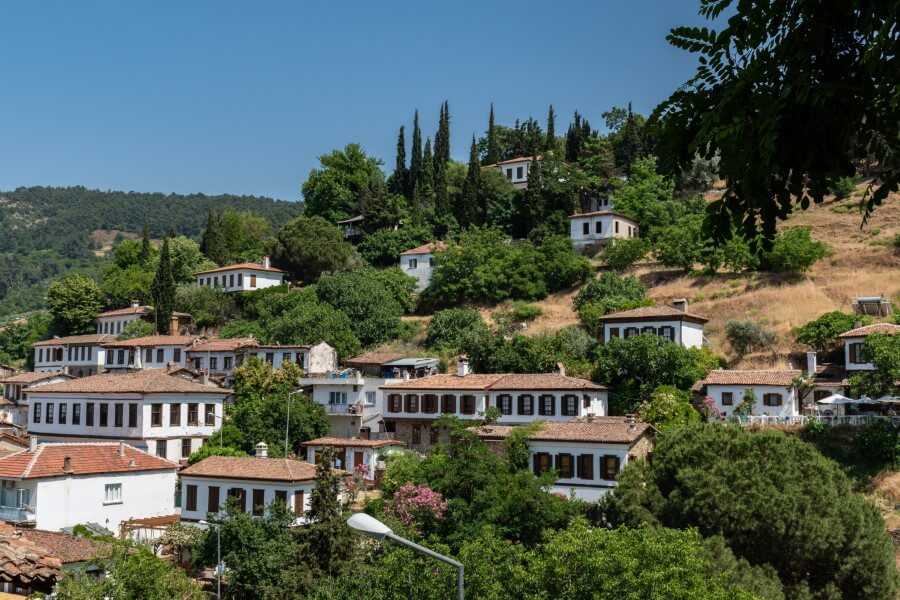
I initially thought that Sirince was too touristy with all the souvenir shops but as I walked further uphill along the little alleyways, I was able to escape the crowds and, at the same time, witness the incredible panoramic views.
There isn’t a whole lot to do in Sirince but you can simply wander around the cobblestoned streets, do some souvenir shopping, visit St John the Baptist Church, or go wine tasting.
If you don’t drink alcohol, you can sample some blackcurrant juice at literally every corner of Sirince.
Pamukkale Day Trip
Also known as Cotton Castle, Pamukkale is a series of cascading pools and one of the most popular attractions in Turkey.
Apart from swimming in the thermal pools, other things to do in Pamukkale include visiting the ancient city of Hierapolis and swimming in the Cleopatra pool. There are daily tours to Pamukkale that leave from Selcuk.
CLICK HERE TO BOOK A PAMUKKALE DAY TOUR FROM SELCUK

Related post: 11 Top things to do in Pamukkale
Other things to do in Ephesus and Selcuk
Cave of Seven Sleepers : According to legend, this is the location where seven men hid away to escape persecution due to their religious beliefs. Unfortunately, the area is closed off and you can only look at it through the metal gate. It’s located about a 5-minute drive from Ephesus.
Zipline Sirince : I didn’t do this activity but saw it on the way to Sirince. If you’re looking for a fun thing to do in Selcuk, make sure to add it to your itinerary.
Where to stay in Ephesus Selcuk?
Selcuk is the closest town to Ephesus with a great range of hotels and restaurants. Below are a few recommended places to stay:
Nicea Hotel : This budget hotel is located opposite Selcuk bus station and within walking distance of restaurants. It’s also only about a 5-minute drive from Ephesus. Some of the rooms can accommodate up to 4 people. It’s very quiet at night and a free Turkish breakfast is included in the price. Check latest rates here.
Selena Hotel : This is another great place to stay in Selcuk. It’s slightly more expensive but still very affordable. Breakfast is served on the terrace which offers a nice view of Selcuk town. Check latest rates here.
CLICK HERE FOR MORE HOTELS IN SELCUK
How to get to Selcuk?
The quickest way to get to Selcuk is to fly into Izmir Adnan Menderes Airport and from there, you can hire a rental car or taxi, or take the bus to Selcuk. The drive from Izmir Airport to Selcuk takes about 1 hour.
CLICK HERE TO BOOK AN AIRPORT TRANSFER
Another option is to take the bus. Buses are very popular in Turkey and also the cheapest way to get from city to city. The bus station in Selcuk is located in the town center, within walking distance of most hotels.
Bus from Istanbul to Selcuk : If you’re on a budget, take the night bus from Istanbul to Selcuk. It takes about 10 hours and tickets cost about €25. I took the bus from Otogar İstasyonu in Istanbul but there are lots of other bus stations from where you can take the bus. Simply choose whichever one is closest to your hotel in Istanbul. Click here to book
Bus from Pamukkale to Selcuk : If you’re coming from Pamukkale, you’ll first need to go to Denizli bus station. From there, it takes about 3 hours to get to Selcuk. Tickets cost about €7. Click here to book
Bus from Fethiye to Selcuk : The bus from Fethiye to Selcuk takes about 5 hours and tickets cost about €15. Click here to book
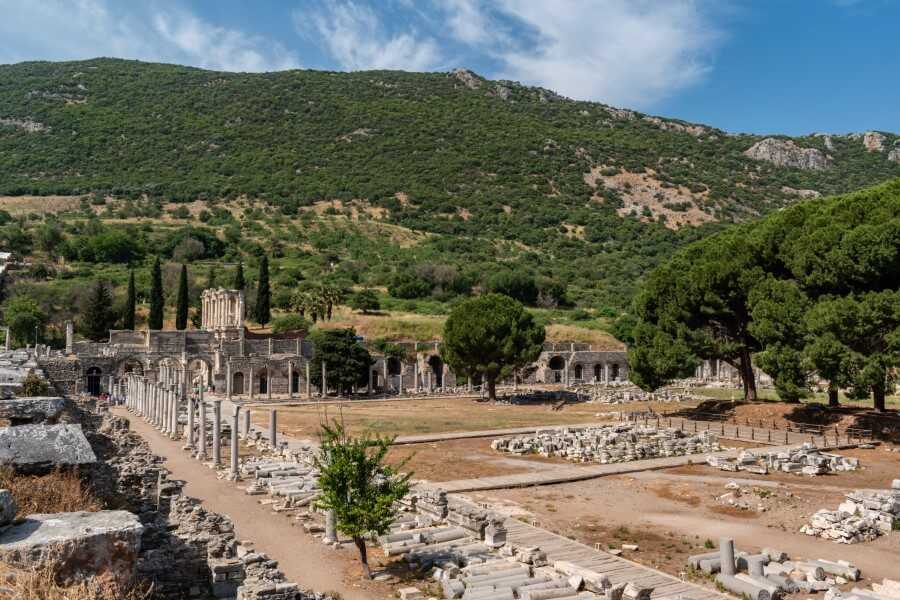
Related post: Renting a car in Turkey: Everything you need to know
How many days in Ephesus and Selcuk?
2 days in Ephesus and Selcuk should be enough but you can stay up to 3 days if you plan to take a day trip to Pamukkale.
Below is a suggested itinerary for Ephesus and Selcuk:
Day 1 : Ancient city of Ephesus, afternoon in Sirince
Day 2 : Artemis Temple, Isa Bey Mosque, Basilica of St John, Ayasuluk Castle, Selcuk town
Day 3 : Pamukkale day trip
Best time to visit
The peak season is between June and August, so there will be more crowds. Thus, the best time to visit Ephesus and Selcuk is during the shoulder season – April /May or September/October. The weather is also not too hot during these months.
Is Selcuk worth visiting?
Absolutely! There’s so much to see in Selcuk like the Artemis Temple, Basilica of St John, Ayasuluk Castle, and Isa Bey Mosque. Plus, it’s the perfect base for those wishing to visit Ephesus Archeological Site.
What is Selcuk known for?
Selcuk is famous mainly for its proximity to Ephesus but there are also plenty of other archeological sites to visit in Selcuk itself.
I hope you found this guide to the best things to do in Ephesus and Selcuk helpful. Let me know in the comment section if you have any questions.
- How to spend 3 days in Cappadocia Turkey
- Guide to taking a Cappadocia hot air balloon flight
- What to do in Oludeniz Fethiye
- Babadag Cable Car: The best attraction in Oludeniz?
Steph is an outdoor enthusiast who’s always down for adventure. When she's not traveling abroad, you’ll either find her exploring her own backyard or researching her next trip. She writes adventure travel guides featuring waterfalls, mountains, and beaches and shares her tips on how to travel on a budget without compromising on comfort and experience.
Babadag Cable Car Oludeniz: Guide to Visiting
Mauritius itinerary: 7 days, 10 days or 2 weeks + local tips, you may also like, 5 best pamukkale tours from antalya for any budget, guide to renting a car in turkey + tips for driving in..., 16 best istanbul instagram spots + map, leave a comment cancel reply.
Save my name, email, and website in this browser for the next time I comment.
This website uses cookies to improve your experience. We'll assume you're ok with this, but you can opt out if you wish. Accept Read More

- Living In Croatia
- Croatian Recipes
- Balkan Recipes

Home > Visiting Ephesus Turkey – Ancient City & Ruins Guide
Visiting Ephesus Turkey – Ancient City & Ruins Guide

Written by our local expert SJ
Sarah-Jane has lived in Croatia for 10+ years. SJ, as she is known, has been traveling the Balkans & beyond since 2000. She now shares her passion for traveling with her husband & kids.
Home to ancient ruins, temples, roads & statues is one of Turkey’s top attractions, Ephesus. A UNESCO World Heritage Site that delighted me and my family this year. Here is what to see and do in Ephesus – and what not to miss at the Ephesus archaeological site.
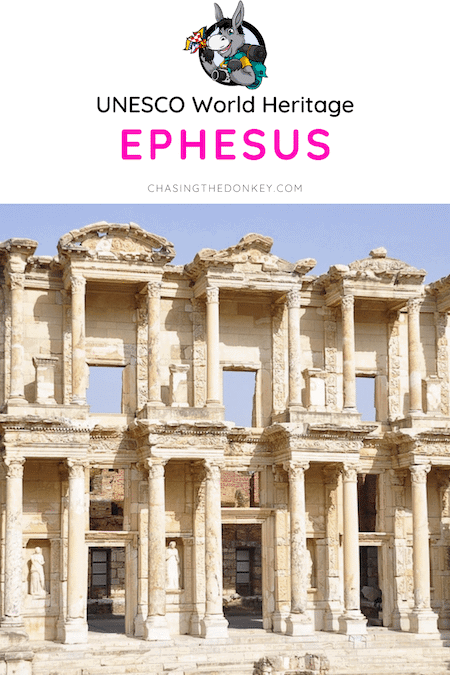
Is the archaeological site of Ephesus worth visiting? A resounding YES! My family and I are big fans. My two little boys (aged 5 & 10) had a blast visiting this ancient site as a part of our Turkish road trip – we roamed free in the winter of 2023 and had a blast and had the ruins almost all to ourselves.
Few places in the world feel as immersive as Ephesus Türkiye. In 2015, ancient Ephesus was added to the UNESCO World Heritage List – an impressive list to be on!
As lovely as visiting a museum or even walking through a regular open-air museum might be, not many of them allow you to immerse yourself entirely in history. When you visit Ephesus, you get just this and more.
At this ancient site, you might feel like ghosts from the past are watching you or that the wind, which occasionally and very randomly whips up out of nowhere, really is the past, reminding you that this place is still very important, even today.
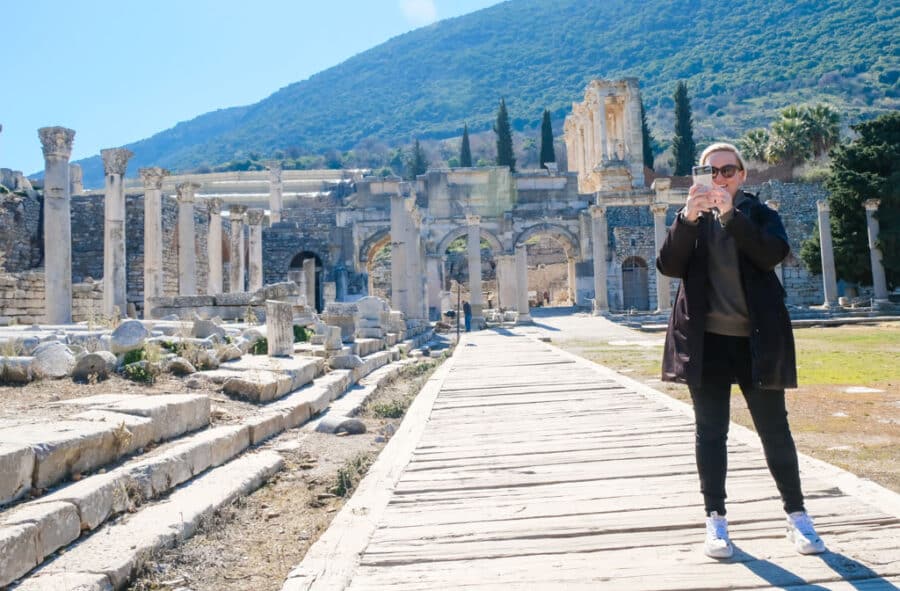
Located near Izmir , just outside of the town of Selcuk, Ephesus used to be an ancient port city. You might hear the word ‘ancient’ and assume it’s in bad condition, but upon walking into the excavation zone, I challenge you not to let your jaw drop.
The vast theater is easy to walk around and explore. You can look down at the central “stage” and imagine gladiator fights happening right before you.
This remarkably preserved site is still being discovered and unearthed , showing you a full-scale city that once was the most important in the Greek Empire. Throughout the entire Mediterranean area, Ephesus was the epicenter of everything, and even though many tried to conquer it, the city remained standing.
These days, Ephesus is not only an essential open-air museum, but it’s also a pilgrimage destination for Christians. Ephesus is mentioned several times in the Bible, and additionally, it’s also the last resting place of St. John.
Here are excellent guided tours that you can join to explore the ancient city better and get up close to the original pieces!
The most popular tours in Ephesus:
- Discover all the highlights of Ephesus with a well-educated professional local tour guide on this tour
- Combine visits to some of Turkey’s most important highlights in this 8-hour guided shore excursion from Kusadasi
- This full-day tour from Izmir takes in all the highlights of the archeological site and includes a delicious Turkish lunch and wine tasting in Sirince village
- Walk along the streets in Ephesus and then visit a village around Ephesus to take a cooking class with locals
- Travel back in time to explore the remarkable Ephesus ancient city on this Bike Tour
Skip Ahead To My Advice Here!
Where Is Ephesus Türkiye On A Map
The History Of Ephesus
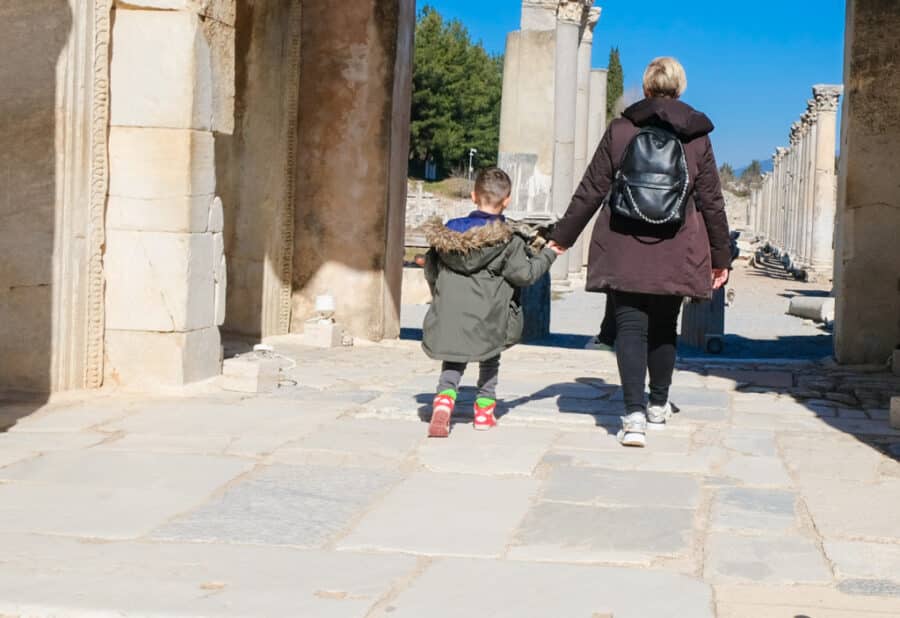
Before you visit Ephesus, it pays to read up on the history so you can truly appreciate what you see. You’ll find signposts everywhere and informational stands where you can find out more, but having some knowledge beforehand will take your visit to the next level.
Although Ephesus is in modern-day Turkey, it was originally an ancient Greek city of enormous importance. The city was founded in the 10th century B.C., and later, the Roman Empire took control of it in 129 BC.
This is when Ephesus’ time really came to fruition as the city grew, becoming a bustling and massive place with strategic importance close to the Aegean Sea. At its peak, it is thought that around 50,000 people lived in Ephesus.
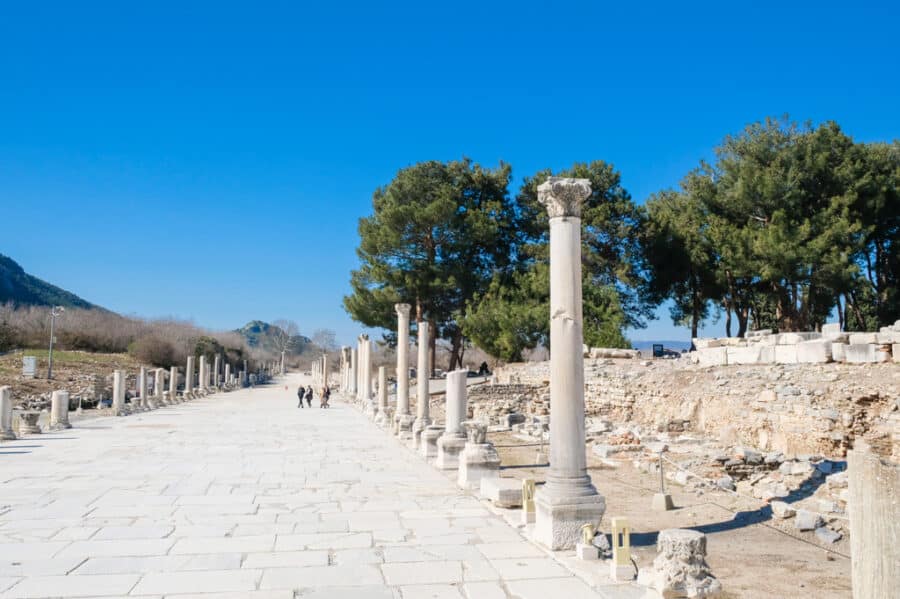
Much of the architecture you’ll see today was built during Roman rule, including the famous Temple of Artemis and the vast Ephesos theater, which is in perfect shape, considering its age! In its heyday, the amphitheater could hold around 25,000 people, and many gladiator battles took place there and drama shows. The Temple of Hadrian and the Library of Celsus were also prominent buildings constructed by the Romans.
The city moved into Ottoman Rule between 1304 and 1425, and the city slowly declined during this time.
The history of Ephesus is rich and diverse, and there is a lot of religious significance, too. Many important figures in religious history are said to have visited Ephesus , and the House of the Virgin Mary – Mother of Jesus – is said to be where the Virgin Mary spent her last days.
What To See At The Ephesus Archaeological Site
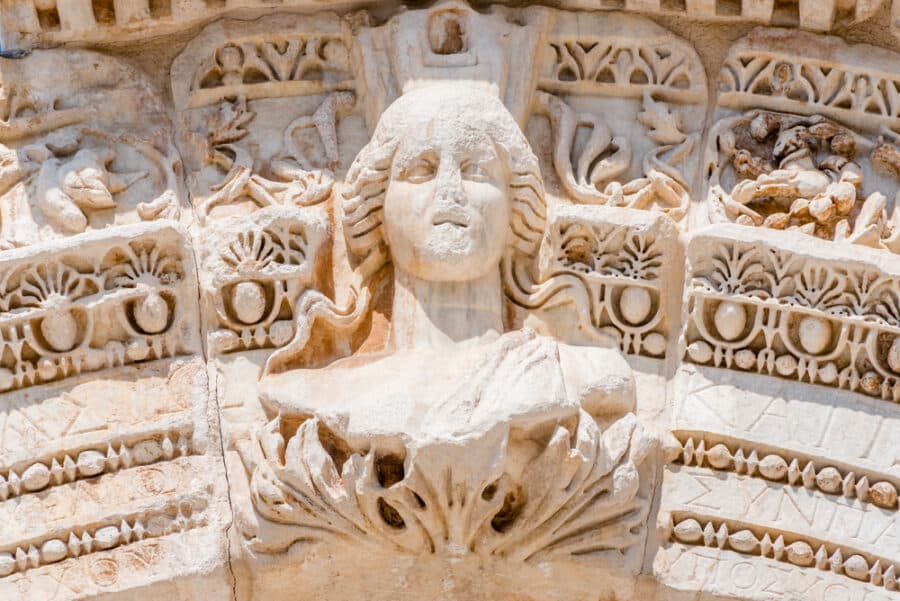
You’ll see old temples, libraries, statues, houses, and the vast amphitheater.
The Library of Celsus is probably the most iconic picture of Ephesus you’ll see when you Google it. It would be best to spend a good portion of time at this place, looking closely at the intricate decorations, the Roman and Greek inscriptions on the walls, and the sculptures. Words really do not do this place justice.
The Hadrian temple is another highlight, as is the Temple of Artemis, which draws enormous crowds.
Additionally, there’s also a less “serious” side to Ephesus. For example, you can see the old toilets, which are undoubtedly eye-opening given that they’re in public view and a brothel that dates back to the 4th century B.C.
Now protected and preserved as a UNESCO World Heritage Site , Ephesus served as a prominent and prosperous city in the Greek, Roman, and Byzantine Eras before falling into disrepair under Ottoman rule.
This is undoubtedly a city that has many stories to tell. We’ve already mentioned that it’s an important site in Christianity, and that is not only because of the Basilica of St. John. The House of the Virgin Mary is also situated in Ephesus, although you will need to pay an extra supplement on top of the regular entry price if you want to visit.
It’s said that the Virgin Mary lived in this small stone house until she died aged 101. She was taken here by St. John himself.
Top 11 Sights When Visiting Ephesus
What to see in ephesus if you only have one day.

There are more than these, but we recommend these top ones if you are short on time.
- Various Baths of Ephesus
- Ephesus Great Theater
- Library of Celsus
- Temple of Hadrian
- Temple of Artemis
- Terraced Houses
- Hercules Gate
- Winged Nike
- Ephesus Museum
1. Varius Bath Of Ephesus

The magnificent marble Baths of Varius are located north of the State Agora and east of the Basilica. The bath was initially constructed in the Hellenistic period, roughly in the second century A.D., and has since undergone numerous restorations. Those renovations are the reason for the building’s distinctive appearance today.
Legendary sophist Flavius Damianus constructed the bath. Damianus and his wife had a private room built for them. Later, a room was also added to the Varius Baths by Vedia Faedrina and Ephesus Vedius Antonius, a wealthy citizen’s daughter. Romans cared about personal hygiene, so they used this bath regularly. It was considered a symbol of prestige.
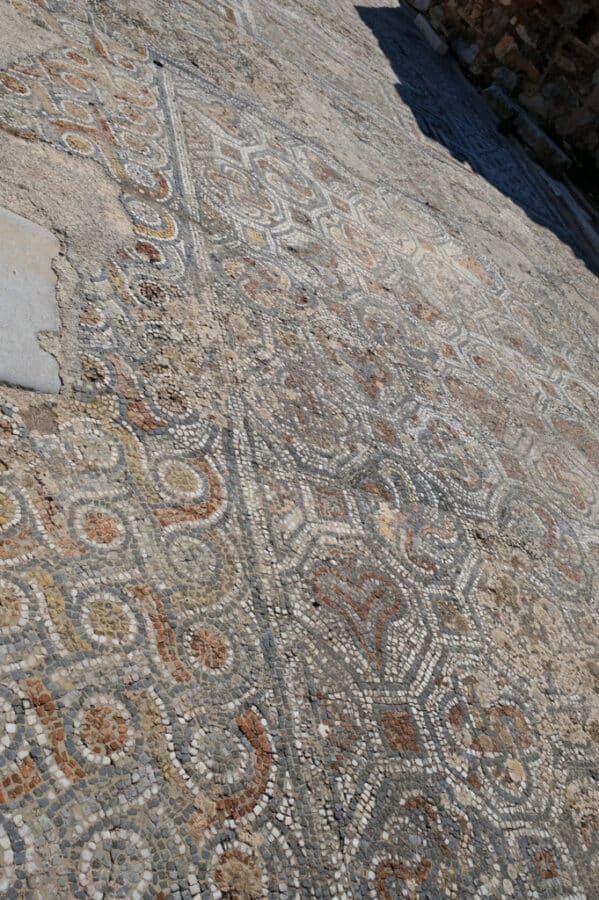
Over the 2nd century, a few more rooms were added to the baths. As time passed, more and more rooms were being added, one after another. During the 4th century, Scholastica, a wealthy Christian woman, provided the money for the restorations.
The structure received significant renovations in the 5th century to depict the Byzantine Era and its influence on interior decoration. The 40-meter passageway decorated in mosaics is the most evident indication of these alterations. The caldarium (hot portion), tepidarium (warm section), and frigidarium are all features of the bath’s ultimate classical Roman design (cold section).
Today, baths are not in great shape. Some parts of the baths are collapsed, and it is hard to visualize how it looked hundreds of years ago. The baths’ excavations have not yet been finished, so there might be new rooms and chambers in the future. In order to understand what you see beyond the vault area of the building, you may need some background knowledge of Roman bathhouses
2. Ephesus Great Theatre

Although there is no archaeological evidence for the Great Theatre’s existence before 100 BC, it is thought to have been constructed during the Hellenistic eras. It was assigned to Lysimachus, the marshal of Alexander the Great. It was Lysimachus who chose this location for the theatre.
Preparing the mountainside for the building’s construction and potential extension took almost 60 years of digging. By the 8th century A.D., the theater had joined the city’s defense system after earthquakes severely damaged it in the 4th century A.D. After those earthquakes, the Great Theatre was never fully renovated.
The theater has a 145-meter diameter and rises 30 meters in height. The capacity of the theatre is 25,000 spectators. It was designed with the stage facing the audience and the harbor in the background.
The theater initially had just one floor. The Roman emperor Neron constructed the stage’s first two stories, and a third floor was later built in the 2nd century. The size of the theatre stage is 25 by 40 meters. The stage is decorated with pillars and sculptures of the gods, goddesses, and emperors. The podium entrance and a secret passageway to an underground tunnel leading to the orchestra pit were both on the ground floor. On all other floors, there are eight rooms and a hallway.
On feast days, offerings would have been made at the altar that was in the center of the stage. The audience in the Roman period paid an admission fee to be entertained, although performances typically began early in the day and continued until late at night.
Gladiator battles would have also taken place in the theater during this period. The theater frequently appears on lists of regional holy places due to its biblical relevance. It is the location where the apostle Saint Paul began anti-pagan preaching. The interesting fact is that the theatre is still being used for concerts. Elton John had one just a few years ago.
3. Library Of Celsus
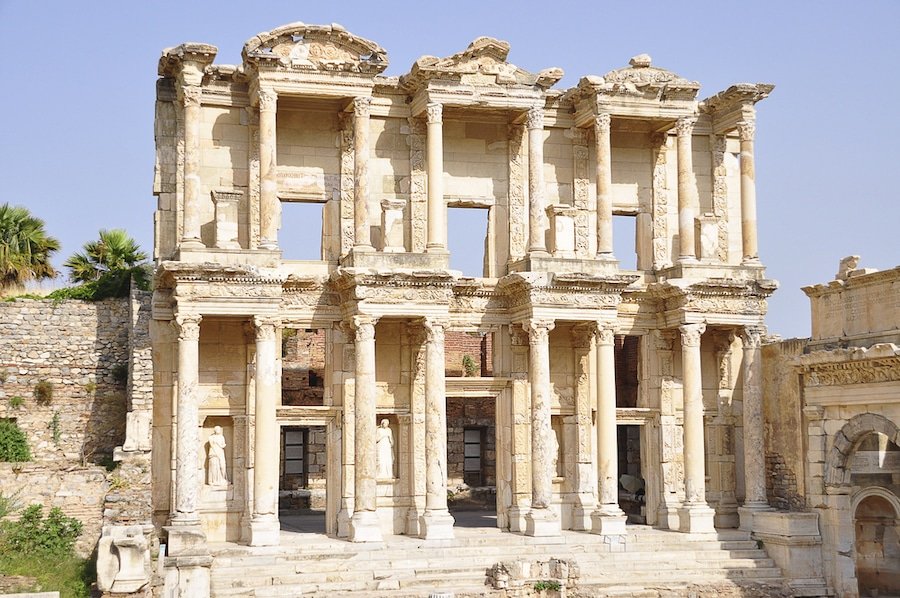
Of everything to do in Ephesus, Turkey, the Celsus Library, one of Ephesus’ most impressive structures, was the third-largest library in the ancient world.
As a tribute to his father, Julius Celsus Polemeanus, Council Gaius Julius Aquila constructed it in the 1st century A.D. Before his passing, Celsus, a councilman and governor, left money to finish and maintain the enormous library.
A special compartment below the ground level that could be reached via a passageway leading to a gate hidden behind the library’s north wall contained the governor’s marble tomb. So, the library was a heron (shrine) as well.
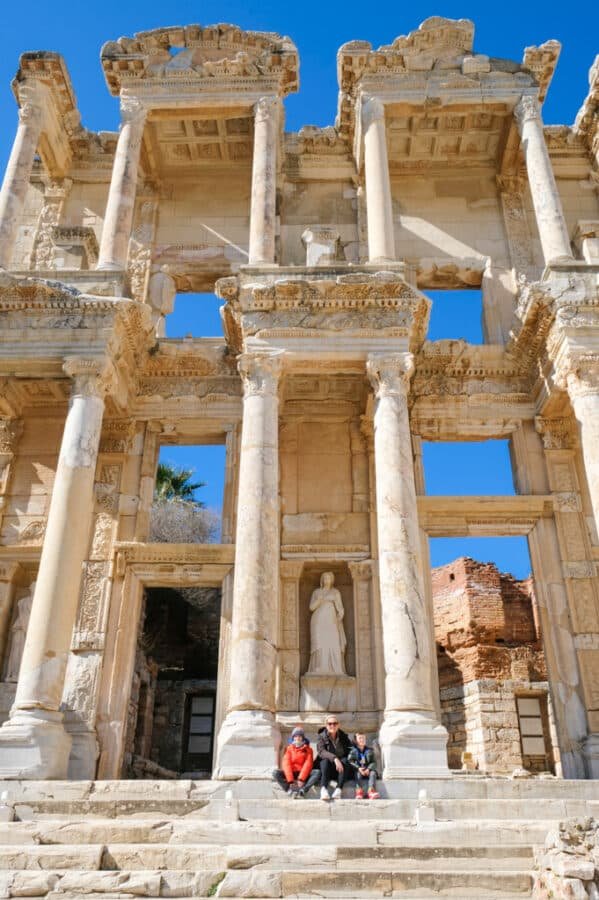
The Library had two stories and a door off Curetes Street that led inside. The four twin pillars that supported the building are reached after nine stone stairs. Large windows provide enough light for reading within the library. The building was constructed explicitly with an additional set of walls surrounding it to maintain a constant temperature and humidity.
The library was destroyed in the 3rd century A.D. and rebuilt in the fourth. In the first millennium A.D., an earthquake completely destroyed it. An earthquake in the 10th century A.D. once again destroyed it
4. Prytaneion
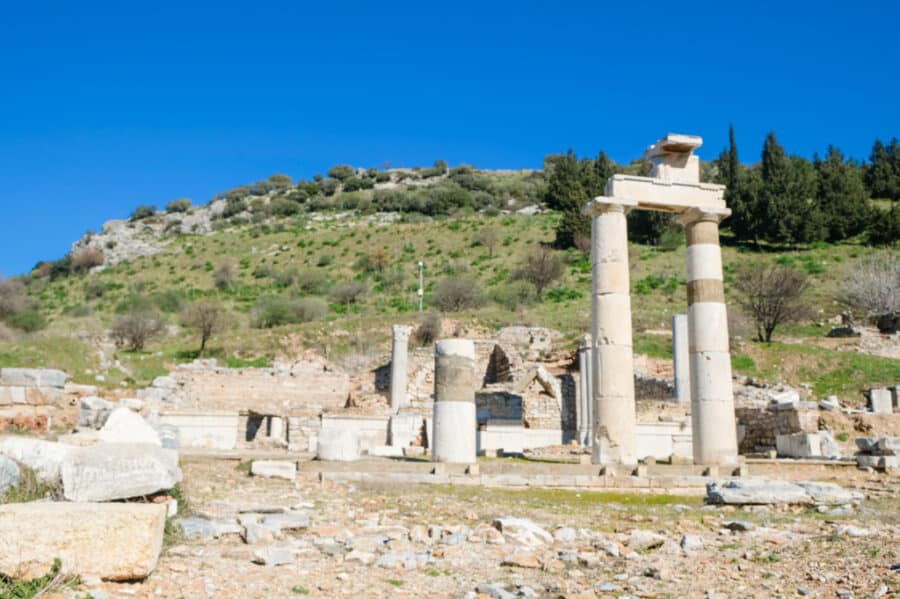
The Prytaneion is located directly behind the market basilica. The building was constructed in the 3rd century B.C. under Lysimachos’ administration. The structure was destroyed during the Augustan era, and some of the Prytaneion’s columns and other elements were utilized in constructing the Scholastica Baths in the fourth century.
Prytaneion served as the city hall or the official administrative structure. Here were held official gatherings, religious rituals, and feasts. The sacred flame, which would have been kept in a four-cornered pit, set a prytaneion construction apart from a bouleterion.
The Curetes, Hestia’s priestesses, would have maintained this sacred hearth burning in honor of Hestia, the goddess of hearth and fire.
Architecturally speaking, the Prytaneion would have been built similarly to a private home. It contained a dining room to host guests from abroad, administrative offices, the state archives, and a conference hall. Only two of the eight columns that once stood in front of the structure may be visible now. These columns lead to an enclosed garden. The garden floor was covered with an Amazonian shield-themed mosaic.
Archaeologists discovered two statues of the goddess Artemis during excavations of Prytaneion. One of these was neatly buried in the shrine, while the larger one was found in the ceremonial hall. These statues are now in the Ephesus Museum.
5. Temple of Hadrian

I totally loved my time at Ephesus with no one there. On Curetes Street, this temple honoring Emperor Hadrian is considered one of the most stunning and well-preserved buildings.
To commemorate Hadrian’s visit to the city from Athens, P. Quintilius built it during the start of the second century A.D. Emperor Hadrian was viewed as one of the Five Good Emperors. Those five (considered) good emperors are Nerva, Trajan, Hadrian, Antoninus Pius, and Marcus Aurelius. These men successfully gained the senate’s support and cooperation, something other emperors had failed to do.
But the name “Temple of Hadrian” is a little misleading. It is not really a temple but actually a monument. And that monument was also dedicated to the goddess Artemis and the people of Ephesus.
The central area of the temple is called Nao. This would have been a tiny space with a big entrance door constructed of small stones. This door’s beams were elegantly ornamented with representations of eggs and pearls.
Recent renovations have been made to the Hadrian’s Temple. Replicas of the ancient statues have been installed in their places. The originals have been taken out and are now on view in the museum in Ephesus.
6. Temple of Artemis
The Temple of Artemis, often called the Temple of Diana, is one of the Seven Wonders of the Ancient World and the first temple made of marble. The Temple was created in the sixth century B.C. Croesus, the wealthy king of Lydia, paid for the early building. One hundred twenty-seven marble columns made up the temple.
In the act of arson on July 21, 356 BC, Herostratus destroyed the Artemis temple in Ephesus. His goal, according to the narrative, was fame at any cost. That same day, Alexander the Great was born. Artemis was reportedly preoccupied with delivering Alexander when her temple caught fire.
Alexander offered to pay for Temple’s reconstruction, but Ephesians rejected Alexander’s offer. The temple was eventually repaired following Alexander’s passing in 323 BC. The Ephesian people reconstructed the temple after the original was destroyed in a Goth assault in 262. The temple was finally demolished in 401. The bulk of Ephesians converted to Christianity during the course of the following two centuries.
Today, the Turkish government is currently considering renovating the Temple of Artemis. The temple is not surrounded by any barriers. All that is visible to visitors is a column that Austrian archaeologists rebuilt. It is a significant spiritual location. Three religions would meet in the same block: an ancient pagan temple, a basilica dedicated to St. John, and a mosque.
7. Terraced Houses

On the northern slope of Bülbülda Hill, close to Curetes Street and across from the Temple of Hadrian, is the magnificent residential complex known as Terrace Houses in Ephesus.
Two housing complexes have already been dug up: Eastern and Western. Beginning in 1960, excavation work on the Terrace Houses began. The houses are still being restored, so there is always something fresh to marvel at there.
The villas are still being restored at this time. Visitors can now observe the meticulous labor of archaeologists thanks to this fact. A substantial roof covers the entire area, shielding the interiors’ priceless contents from the weather’s damaging effects.
Private homes built on three terraces make up the Eastern Complex, which has an area of around 2500 square meters. Domus, a villa occupied by wealthier people and several houses belonging to middle-class people, is the most notable structure.
The complex’s construction began in the first century A.D., and people lived there until the seventh. Naturally, they underwent substantial repairs and renovations in the meantime. There was running water in each home, and each had its own entrance from the street.
At least five luxurious houses with inner gardens made up the Western Complex, which has been flawlessly preserved to the present day. Frescoes and other artwork uncovered during an archaeological investigation are still used to decorate many of the rooms. All the homes in this neighborhood had running water, and the remains of bathtub-equipped bathrooms have been discovered.
Visitor Tip: To see Ephesus’ Terrace Houses, you must pay a fee of 2€. The complex is open every day from 8 a.m…. to 6:30 p.m. from April through October and from 8 a.m. to 4:30 p.m. from November through March.
8. Hercules Gate
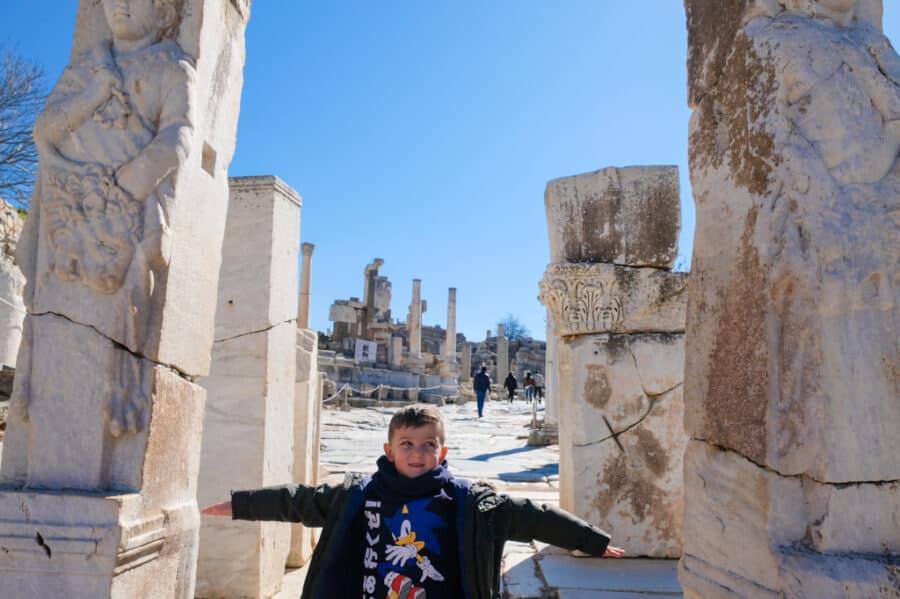
The monumental Hercules Gate is believed to have been built in the 5th century on the street close to the Memmius Monument. In Ephesus, only two of the gate’s lintels have been remounted since it collapsed in an earthquake. This gate was named after two reliefs that depicted Hercules draped in lion skins. It was constructed with two tiers of columns. On the second story, it is thought that a plaque of Goddess Nike with a wreath in her hand was mounted at the top.
Locals told us that if you can stand at the gate and touch both sides, you’ll absorb some power from Hercules
9. Winged Nike
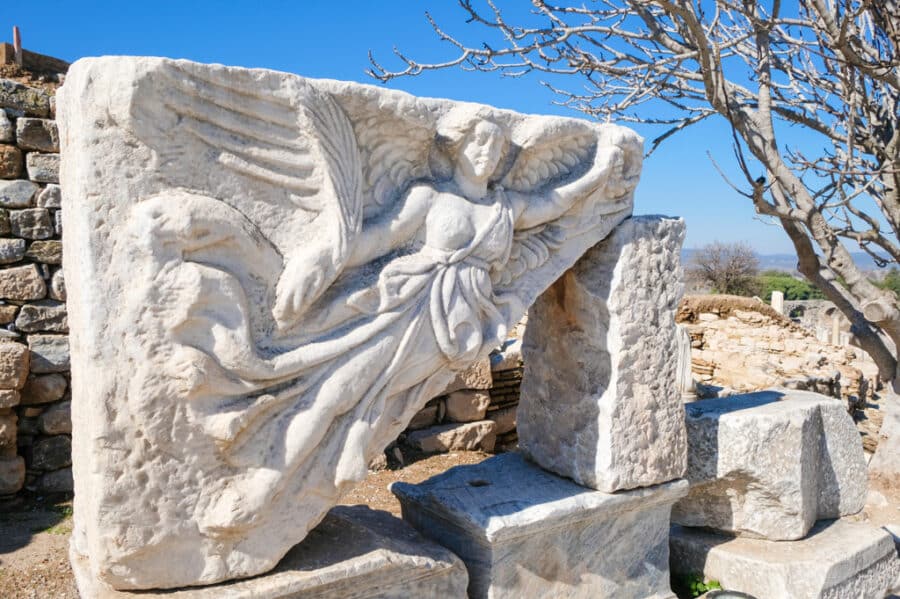
On Domitian Square, located on the western side of Kuretes Street, stands a marble relief of the Greek goddess Nike. Dating back to the 1st – 2nd century A.D., it decorated one of the spandrels of Hercules Gate.
Believed to have been mirrored by a similar relief on the opposite spandrel, it is thought to have been moved from another monument in the 4th century A.D. The goddess holds a laurel wreath for victory in her left hand and a palm branch in her right.
I had seen photos on I.G. of this before going. I assumed you could get up close and touch it – as I had seen photos of people’s heads popping up in the space under Nike or sitting on the edge – but the area is dropped off, and my guide told me that people continue to touch the marble which is not good.
While visitors may delight in seeing this sculpture, it may one day be moved to the Ephesus Archaeological Museum with other vital artifacts found on site to keep it safe – so please do not touch her
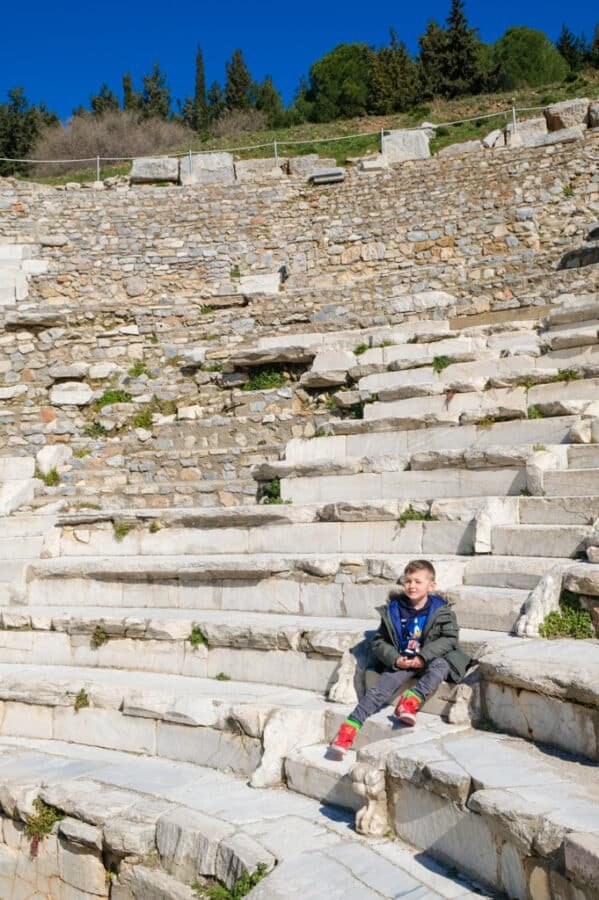
The Odeon in Ephuses is one of the most interesting and well-preserved Roman ruins in the world. The Odeon was built in the 2nd century A.D. and could seat up to 1,500 people.
It was used for music concerts and poetry readings. The Odeon has a unique design with a half-circle of seats on one side and a stage on the other. The stage is still in remarkably good condition, and you can imagine what it would have been like to see a performance here centuries ago.
11. Ephesus Museum
The ideal addition to a tour of the Ephesus ruins is a trip to the Ephesus Archaeological Museum in Selçuk. There are several artifacts from the ancient city, the Temple of Artemis, the Basilica of St. John, and the fortress on the Ayasuluk Hill in the collections of this modest but intriguing museum.
Other neighboring archaeological sites are also featured, including the Belevi Mausoleum and the ukuriçi Mound, where the oldest object in the museum’s collection—a stamp from 6200 BCE—was discovered.
The museum’s collection includes artifacts from many historic and prehistoric eras, such as the Mycenaean, Classical, Roman, Geometric, Archaic, Hellenistic, Byzantine, and Ottoman periods.
The archaeological section’s eight main rooms are divided into sections on the cult of Kybele, the finds from the Artemision, the terrace houses of Ephesus, ancient coins, the presentation of Ephesus through the ages, and stone artifacts in the garden. The museum’s garden and designated exhibition spaces are areas where the exhibits are displayed geographically rather than chronologically.
Museum Visitor Info
The Ephesus Archaeological Museum in Selçuk is open daily from 8:00 a.m. to 6:30 p.m. in the summer (April through October) and from 8:30 a.m. to 5:30 p.m. in the winter (November through March). The cost of the ticket is around 1€. The ticket office closes 30 minutes earlier.
There is a small cafeteria and a gift shop at the museum. Near the entrance, there are restrooms as well.
The Ephesus Archaeological Museum is located in Selçuk’s town center, next to the bus station and only a 30-minute walk from the ancient city ruins of Ephesus.
What Else To See At Efes
There are other historical sites to see at Efes, so if you have extra time or an additional day, add some of these stops; here is a helpful map showing you all 28!
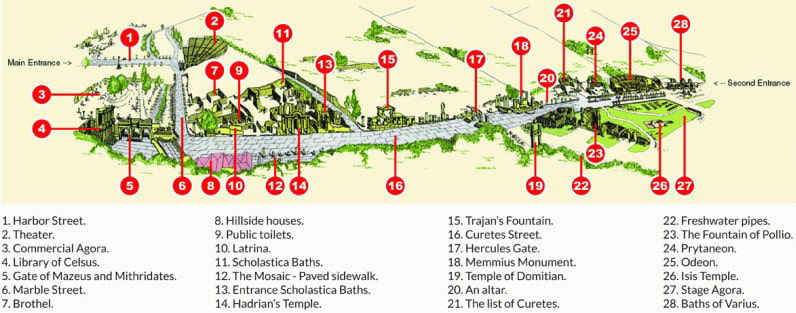
Brands We Use And Trust
Practical ephesus information (hours, fees, entry points) .
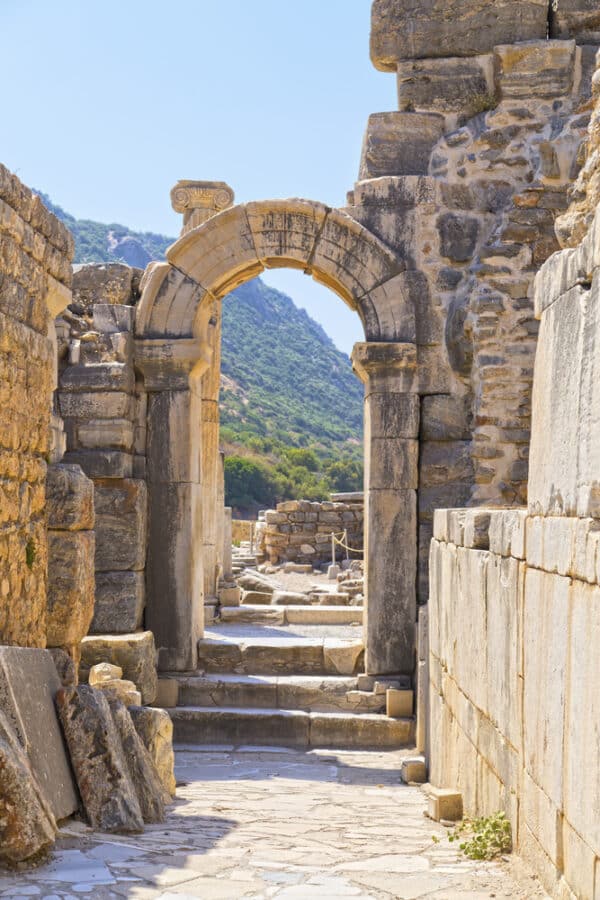
First things first, do not be fooled into thinking this is a small site. You will need comfortable shoes, light clothing , sunscreen, a hat, and plenty of water . Ephesus is HUGE – you can spend all day here.
You could easily wander around the area all day and not get bored. When you turn one corner, you think you’ve seen it all, only to see another Roman road heading in another direction.
Ephesus Entrance Fee
The cost of visiting Ephesus Archaeological is 200 Lira . An audio guide or tour will cost extra. You can book guided tours online independently, or you can also arrange a guide at the entrance.
My Recommendation
I recommend you consider getting a Türkiye Museum Pass if you plan to visit Turkey and see more than two or three museums. The pass is valid for 15 days and covers several museums nationwide for just 1000 Lira. Or you could purchase the Aegean Museum Pass, which covers many attractions in the Aegean area, to not only save you a lot of money but it can also save valuable time.
Opening Hours Of Ephesus Archeological Site
Efes or Ephesos is also known as open daily. The last entry is 60 minutes before closing each day, but you need at least two hours, and that would be racing around each of the big sites.
In summer, you can enter Ephesus from 8 a.m. to 8 p.m. While in winter, the site stays open till 6:00 p.m. and opens at 8:30 a.m.
Address: Ephesus Ruins, 35920 Selçuk
E-mail: [email protected]
Tel: 02328926010
Which Entry To Use At Ephesus

Ephesus has two entrances: one at the northwest end near the Grand Theatre and the other at the southeast end near the Odeon.
The Southeast entrance near the Odeon is higher in elevation than the other entrance, so if you entered this way, it would be a downhill walk to see the sights.
It is possible to purchase tickets at both entrances, and they both have toilets to use before you start.
Most visitors and tours enter through the south entrance and leave through the north entrance as that is how tour companies plan things – so people walk downhill and get collected at the second entrance.
There is parking at both entrances for a small fee. We parked our rental car at the southwest entrance, walked uphill, saw the sights, and came back downhill slowly to see the magical Library of Celcius a second time. I totally recommend that if you drive yourself. There are also souvenir shops , a cafe, and seats at this entrance.
You can walk the 3 km from Selçuk to the lower entrance, which my guide told me can take 30 mins to an hour, depending on your fitness level.
Best Time To Visit Ephesus
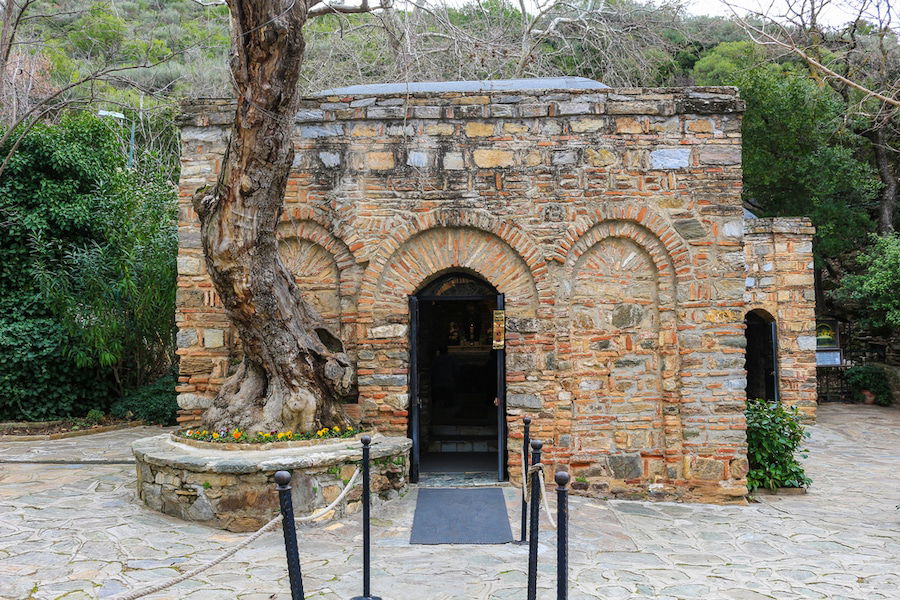
When visiting Ephesus, it’s a good idea to try to avoid the peak summer months if possible. Ephesus is one of Türkiye’s most popular sites, and its close proximity to many beach resorts means that day trips are totally doable.
This means large crowds of summer day-trippers. And groups and heat do not make for the most enjoyable day !
May, June, late September, and October are ideal, and if you’re visiting during the winter months, head over on a sunny day to enjoy a far quieter experience in this stunning ancient city.
Top Insider Tips For Visiting The City Of Ephesus

With the list of things to do in Ephesus covered, you should know that this once-ancient Greek city of Ephesus is not a place you can visit in just a few hours. Here are our top tips to get the most out of this UNESCO-listed site in Turkey .
- Visit outside of the peak season months if you can. Fewer people make the experience better – we loved having most of the place to enjoy without anyone around. My guide told me 1000 of people are here daily in summer
- Wear comfortable shoes and avoid flip-flops. Flip-flops are a recipe for a slip and fall! A lot of Ephesus consists of marble pathways that go up and downhill, and they are slippery
- Wear a hat and sunscreen during the summer months. There isn’t a lot of shade in Ephesus, and the Turkish summer sun can be unforgiving. Even in February, we needed our sunglasses
- Take your time , make sure to sit down, and have a drink of water every so often. It’s surprising how many people try and motor their way around only to become tired and run out of steam to see the whole complex
- Budget appropriately. Ephesus isn’t the cheapest museum to visit, but it’s certainly worth it. You will need to pay extra if you want to see the House of Virgin Mary, so bear this in mind when budgeting
- Ensure you don’t miss the last train or bus back to your accommodation. If you did not arrive on tour or drive yourself, be sure to leave enough time to walk to your bus or train stop
- Stop for breakfast as you enter Selcuk. There are some fantastic roadside restaurants in town, many of which offer a stunning view of the mountainside and serve a delicious, traditional Turkish breakfast
- Clear out your camera memory card. You’re going to need the space!
- Arrive early to make the most of the whole day. In summer, the place is scorching; arriving early helps you beat the midday heat.
- Photograph the Celsus Library early in the morning to have the best lighting.
Book A Tour Of Ephesus
How to get to ephesus.

Now that you know how to visit Ephesus, there are a few ways to get to Ephesus, and because it’s close to a major city, that makes logistics much easier!
From Istanbul
If you’re heading to Türkiye and landing in Istanbul , you can take a domestic flight to Izmir. From there, you can take the bus ( Pamukkale and Kamil Koc are two bus services that run around Turkey and are high-quality options), or you can arrange a tour that will take you directly to Ephesus. The journey time is only around one hour either way. It only takes just over an hour and several daily flights from both of Istanbul’s airports .
From Selcuk
Alternatively, you can spend some time in Selcuk, which is around 45 minutes away from Izmir . To get to Ephesus from there, you can take the minibus, which runs several times daily and takes only 5 minutes. A taxi is another option.
From Kusadasi
Finally, if you’re staying in Kusadasi, you can take a taxi or head to Selcuk via the local bus network and then take the quick minibus from there.
Move This Adventure To Your Inbox & Get An Instant Freebie

No spam. Unsubscribe at any time.
Where To Stay Near Ephesus

Izmir is a large area , and choosing where to stay near Ephesus can be tricky because there are thousands of choices. The closest place to stay when visiting Ephesus is Selcuk; that said, if you want to explore the region of Izmir further, we might suggest one of these districts instead.
- Selçuk
Find a complete guide to the accommodation in Izmir here.
Ephesus experience museum – efes deneyim müzesi.
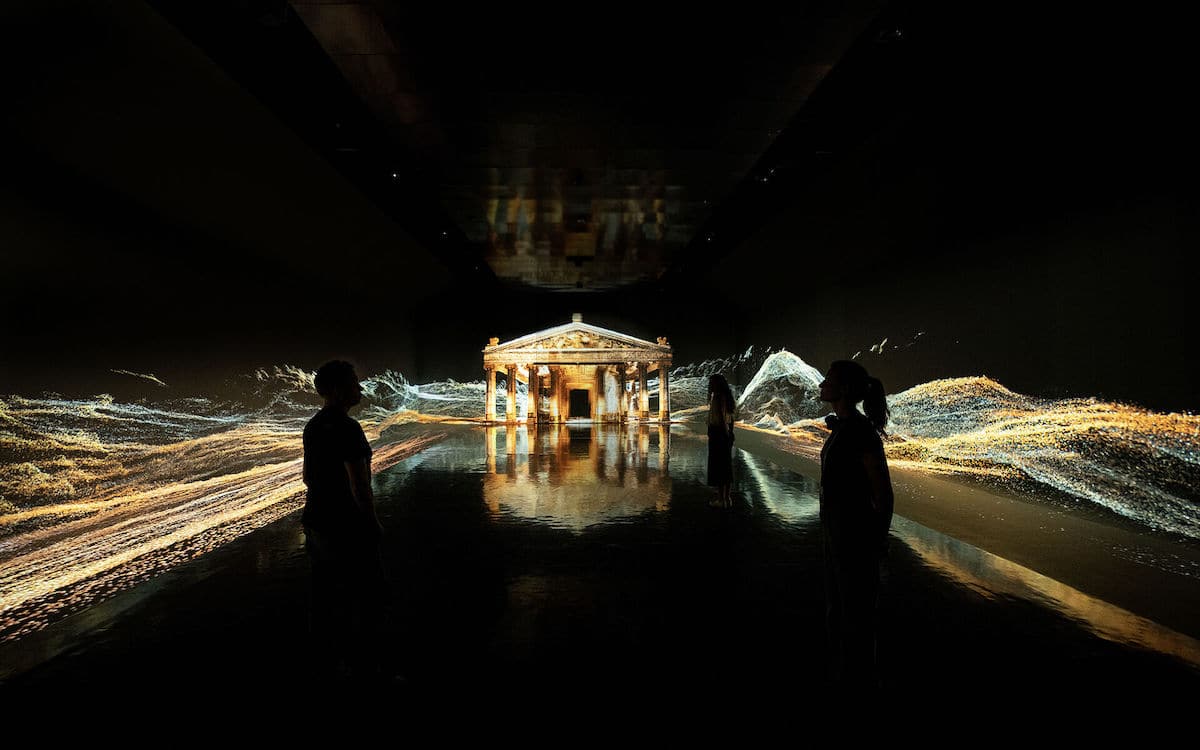
If you’re planning a trip to Ephesus and looking to dive deeper into its rich history, the Ephesus Experience Museum offers a unique and engaging way to do just that.
Think of it as a high-tech bridge to the past. This museum isn’t your typical walk-and-observe type; it’s an interactive journey that uses state-of-the-art visuals and sound to literally transport you back to ancient Ephesus. Imagine strolling through the streets of a city that thrived 8,000 years ago, experiencing the daily life of the Roman Empire, and marveling at wonders like the Temple of Artemis and the Celsus Library, all without the constraints of time.
The museum’s immersive approach makes you feel like a part of history, not just a bystander. It’s a fantastic addition to your Ephesus itinerary, especially if you’re keen on understanding the full story behind these ancient stones. Plus, it’s a great option if you’re traveling with kids or anyone who loves a bit of tech with their history.
Address: Acarlar, Efes Antik Kenti, Antik Tiyatro Karşısı, 35920 Selçuk/İzmir, Türkiye
Important Cities Close To Ephesus To Explore

When visiting Ephesus, you could easily add in a few other spots. While Ephesus is surrounded by countryside, it’s relatively close to Izmir , Kusadasi, Aydin, and Selcuk.
Selcuk Turkey
Selcuk is the closest place to Ephesus, at just one mile away. This large town is quite touristy, so you can easily find somewhere to stay and plenty of fantastic restaurants to try local food and excellent Turkish breakfasts . While in Selcuk, visit the Grand Fortress of Selcuk, which sits on top of a hill and has amazing views
Izmir Türkiye

The bustling coastal city of Izmir. Izmir is a fantastic , young, vibrant, and hip city with history lurking behind every corner. Located on the Aegean coastline , this bustling coastal city is also super-pretty, with a beautiful blend of old and new. The nightlife is vibrant and varied, the gastronomy is seriously on point, and there is plenty of history to explore simultaneously.
How far from Izmir to Ephesus: It is a little over 80 km (50 miles), which takes around an hour by car.
Kusadasi Türkiye
If you want to kick back and relax, get a tan, and enjoy the summer temperatures (although warned, they’re hot), you should head to this tourist resort on the south coast with plenty to see and do. Lapped by the Aegean and Mediterranean, Kusadasi is close to Izmir and ideal for a city and beach break.
Photos Of Efes, Turkiye To Inspire You To Visit
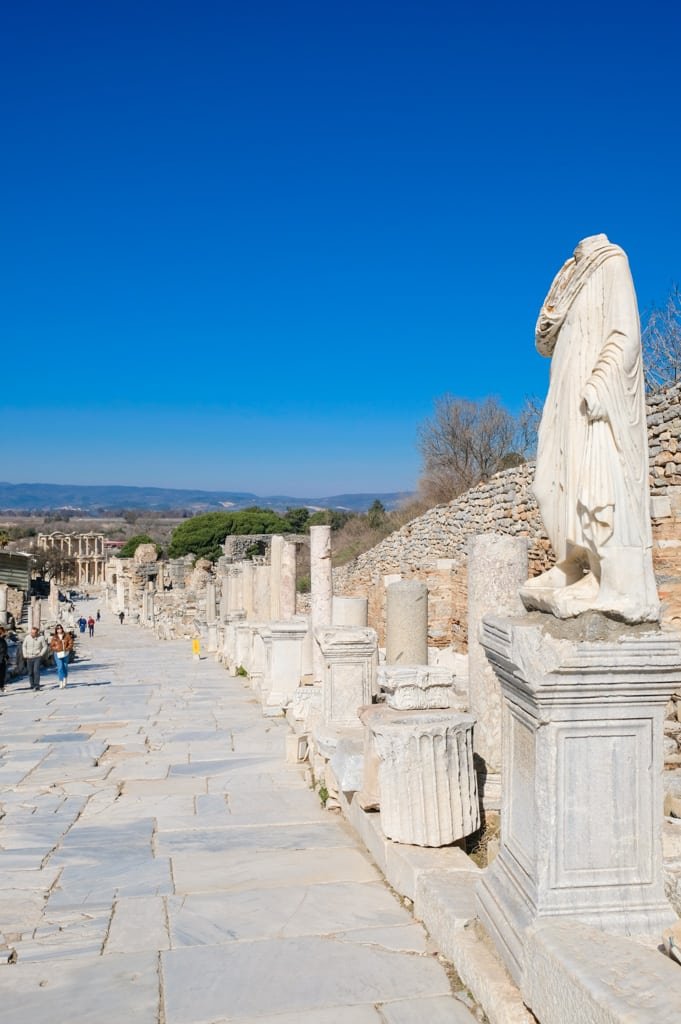
Ephesus FAQ
How much time is needed to visit.
You will need at least one day to see the top sites, but if you want a little more time to explore, especially in the museum and the Isa Bey Mosque, we’d recommend two days.
Is Ephesus a Wonder of the World or a UNESCO Site?
Ephesus is a UNESCO site and is also home to the Temple of Artemis, one of the original 7 Wonders of the World.
What should I wear in Ephesus?
It’s always sunny and hot at the sight, so lightweight clothing, sun hats , sunscreen, and sunglasses are all a must. Good walking shoes are also key when spending the day on your feet.
Can I tour Ephesus without a guide?
While guides offer great historical context and knowledge as you explore, it is entirely okay to tour the site on your own.
Is there an audio guide option?
At the gate, you can choose an audio guide for your self-tour, offered in 10 different languages, including English, Spanish, French, and German.
Where should I stay when visiting Ephesus?
Find a hotel or hostel in Izmir, Selcuk, or Kusadasi
When is the best time to visit Ephesus?
Visit during the shoulder months of the year – May, June, late September, and October are ideal.
- Best Hotels In Cappadocia Türkiye
- Best Places To Visit In Turkey For Every Type Of Traveler
- Incredible Black Sea Resorts
- Hotels In Cappadocia Türkiye
- What To Pack For Turkey
- 5 Reasons To Visit Gallipoli, Türkiye
- How To Get From Istanbul To Cappadocia
- Cappadocia Hot Air Ballon Ride Tips
- Greek Island Day Trip From Southern Turkey
- What To Know When Traveling To TürkiyeDuring COVID-19
- Turkish Hammam Tips To Know Before You Go
- Tips For Traveling Turkey On A Budget
Ephesus is one of the most beautiful area in Izmir, even in Turkey.. You can visit our blog about destinations from Turkey if you want
Leave a Reply Cancel reply
Your email address will not be published. Required fields are marked *
Save my name, email, and website in this browser for the next time I comment.
This site uses Akismet to reduce spam. Learn how your comment data is processed .
Subscribe To Unlock Your FREE Customizable Travel Packing List & All Our Best Tips!
Unlock Your FREE Customizable Travel Packing List!
Subscribe Now For Instant Access To Stress-Free Packing
The Complete Guide to Ephesus, a Highlight of the Ancient World
:max_bytes(150000):strip_icc():format(webp)/Profilepic_small-825a61251a60463999e3bdc1e5add2a5.jpg)
Marco Simoni / Getty Images
- How to Visit
Things to Do Nearby
Where to stay, how to get there, ephesus ancient greek theatre.
You don't need to be an ancient history buff to appreciate incredible Ephesus—although it certainly helps. This ancient ruined city just inland from western Turkey's Aegean coast was once one of the most important ports in the Greek and Roman world. Classified as a UNESCO World Heritage Site in 2015, visitors to Ephesus can walk along cobblestone lanes, watch archeological excavation and restoration in progress, marvel at the enormous amphitheater and facade of the Library of Celsus, and learn about the centuries of history here and across the Mediterranean and Aegean civilizations.
History of Ephesus
Ancient legends state that Ephesus was founded in the 11th century BCE by Ionian prince Androclos, but much of the settlement's earliest history is unknown or unclear. More concrete historical knowledge of Ephesus begins in the 7th century BCE when the city came under the rule of the Lydian kings of western Anatolia. Lydian King Croesus, who reigned from 560-547 BCE, funded the Temple of Artemis's rebuilding in Ephesus, which has remained an important focal point of the settlement throughout the centuries. After being burned down in 356 BCE, the Temple of Artemis was rebuilt on an enormous scale (supposedly four times bigger than the Parthenon in Athens ) and known as one of the Seven Wonders of the Ancient World. The temple doesn't exist today (except in fragments at the British Museum in London).
Over the centuries, Ephesus came under the rule of the Persians, Alexander the Great, the Egyptians, the Seleucid Kings, and the Romans. Most of what can be seen today at Ephesus are remnants of the Roman era, which spanned from 129 BCE until the 3rd century CE. Under Emperor Tiberius, Ephesus flourished as a port city and is believed to have been second only to Rome within the Roman Empire as a cultural and commercial hub.
Ephesus has also long been important to Christianity in the region and remains a Christian pilgrimage site. Early Christians of prominence, such as St. Paul and St. John, visited Ephesus and converted residents to Christianity, encouraging them to turn away from the cult of Artemis. Jesus Christ's mother, Mary, is thought to have spent her last years near Ephesus. Her house, and St. John's tomb, can be visited, not far from the main ruins. Ephesus is mentioned throughout the New Testament, particularly in the Book of Ephesians.
The decline of Ephesus began in 262 CE when Goths attacked it. Some parts were rebuilt, but not to the same scale as before. The Byzantine Roman emperors increasingly adopted Christianity, so the worship of Artemis at Ephesus was not viewed sympathetically. The harbor at Ephesus also began to silt up, causing problems for trade. All of these factors left the remaining inhabitants of Ephesus largely to fend for themselves without the great empires' support. Destructive earthquakes in the 6th and 7th centuries, and Arab invasions, further led to Ephesus' decline. It was finally abandoned in the 15th century under Ottoman rule.
lupengyu / Getty Images
How to Visit Ephesus
Although parts of Ephesus were destroyed over the centuries, the many layers of history can still be seen today at what is one of the largest Roman archaeological sites in the eastern Mediterranean. Archeological excavation remains ongoing: at its heyday, Ephesus had a population of up to 55,000 people (double the size of modern-day Selcuk nearby), but only 20 percent of the city has been excavated, so far.
The ruins at Ephesus are spread out over a large area and are mostly unshaded. So, arrive early in the day (especially in the hotter summer months), wear comfortable shoes and a sun hat, bring plenty of water (that available on site is very expensive), and be prepared to walk.
Entrance to Ephesus is ticketed, with separate entry fees for the main site and the House of Mary and the Terraced Houses. Opening hours vary depending on the season and daylight. If you're very interested in ancient history you could spend the whole day here; otherwise, two-three hours is sufficient. If you're short on time, plan your route in advance, so you don't miss the highlights. Simply wandering through the city without a plan can take hours, and you may get hot and tired before you've seen everything you want to see.
It's worth having some kind of guide to Ephesus, whether an in-person tour guide, an audio guide, or a dedicated guidebook. While simply looking at the ruins is still impressive and interesting, you'll learn so much more about what you're seeing with a proper guide.
Highlights to look out for as you walk through the ancient city include:
- The famous colonnaded facade of the Library of Celsus. Originally built in 125 CE, it once contained 12,000 scrolls. It was reconstructed in the 1970s from pieces found onsite and in museums elsewhere.
- The Ephesus Amphitheater, which once had a seating capacity of 25,000, making it the largest in the ancient world.
- The Odeon theater, where plays were performed for "small" audiences of up to 1500 people.
- Bath complexes were built under Roman rule.
- The aqueduct systems, among the most advanced in the ancient world.
- The Temples of Hadrian and Sebastoi.
- The Terrace Houses, with mosaic floors and frescoed walls.
Not everything worth seeing at Ephesus is within the perimeters of the ancient city. Selcuk town itself is an interesting place. The remains of the ancient Temple of Artemis (although with just one lonely column remaining, it is a mere shadow of what it once was) are not far from the center of town. Turreted Ayasoluk Castle looks over Selcuk from atop its hill and offers great views of the surrounding countryside, as well as the burial site of St. John the Apostle. There are also the remains of ancient aqueducts in the middle of town.
The nearby town of Sirince is highly worth visiting for half a day. Located 5 miles east of Selcuk, in the hills, the red-roofed houses are surrounded by grapevines and orchards of apples and peaches. It was historically inhabited by Orthodox Christian Greeks, distinct from Turkish-speaking Muslims, and is a wine production center.
The nearest beach to Selcuk and Ephesus is Pamucak Beach. While there are more picturesque beaches elsewhere along the Anatolian Coast, Pamucak offers a wide strip of sand where you can sit for free or hire a lounger and umbrella.
Ephesus is less than two miles from the modern town of Selcuk (population 28,000). While some visitors on tight schedules pass through on the way to or from Izmir and places on the Anatolian coast, those who stay a bit longer largely stay in and around Selcuk. As a small town, the best accommodation options are boutique, independent, family-run, and just outside the more touristy town center.
The nearest major city to Ephesus is Izmir, Turkey's third-largest city, 50 miles to the north. Flights from elsewhere in Turkey (such as Istanbul) frequently fly to Izmir Adnan Menderes Airport. Some airlines put on shuttles to Selcuk, the gateway to Ephesus, for passengers, and some accommodations may arrange a shared or private transfer. Alternatively, it's easy to catch regular trains to Selcuk from the railway station attached to Izmir airport. Trains and buses take about an hour and are low-cost.
The 25 Top Attractions in Rome, Italy
10 of the Top Things to Do in Tunisia, North Africa
The 14 Best Day Trips from Rome
Top Roman Cities and Ancient Sites in France
Celestyal Cruises - Greece and Turkey Ports of Call
Essential Ancient Sites to Visit in Rome
Egypt's Top 10 Ancient Sites
Top UNESCO World Heritage Sites in Southeast Asia
Herculaneum: The Complete Guide
Greece’s Corinth Canal: The Complete Guide
Top 15 Destinations in Israel
14 Famous Forts and Palaces in India that You Must See
How to Buy a Turkish Rug
Roman Amphitheaters in Italy
Top 18 Things to Do in Athens, Greece
The Coolest Underwater Museums in the World
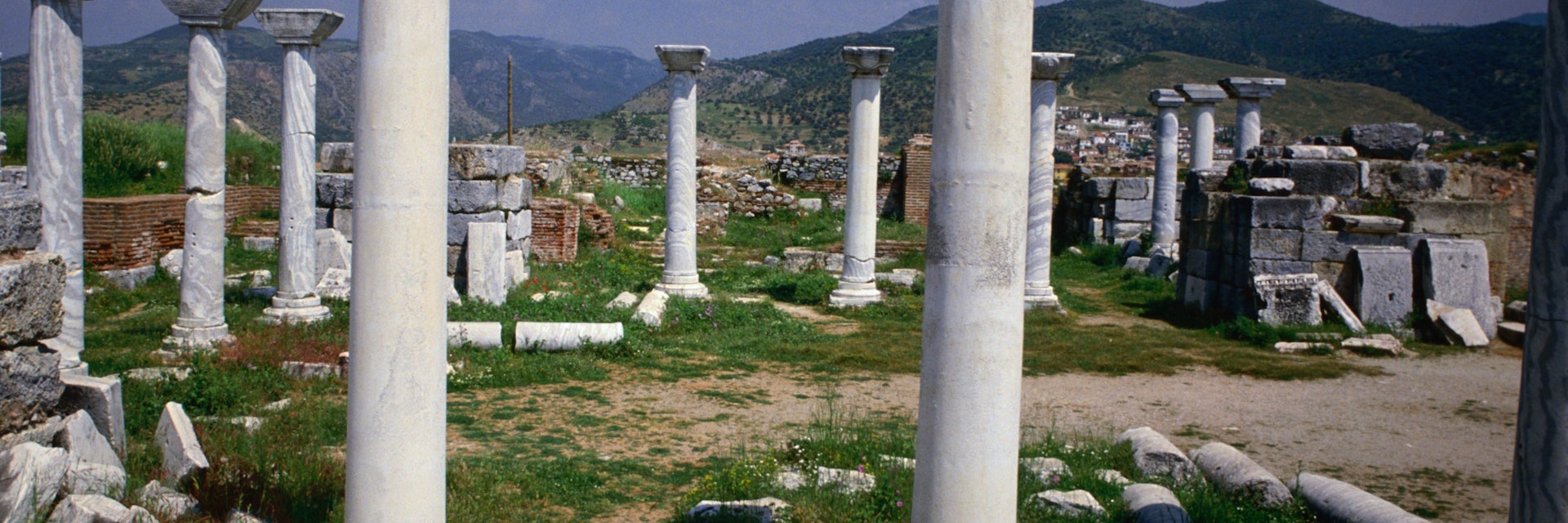
The Greco-Roman world truly comes alive at Ephesus. After more than a century and a half of excavation, the city's recovered and renovated structures have made Ephesus Europe's most complete classical metropolis – and that's with 80% of the city yet to be unearthed!
Leave the planning to a local expert
Experience the real Ephesus. Let a local expert handle the planning for you.
Attractions
Must-see attractions.
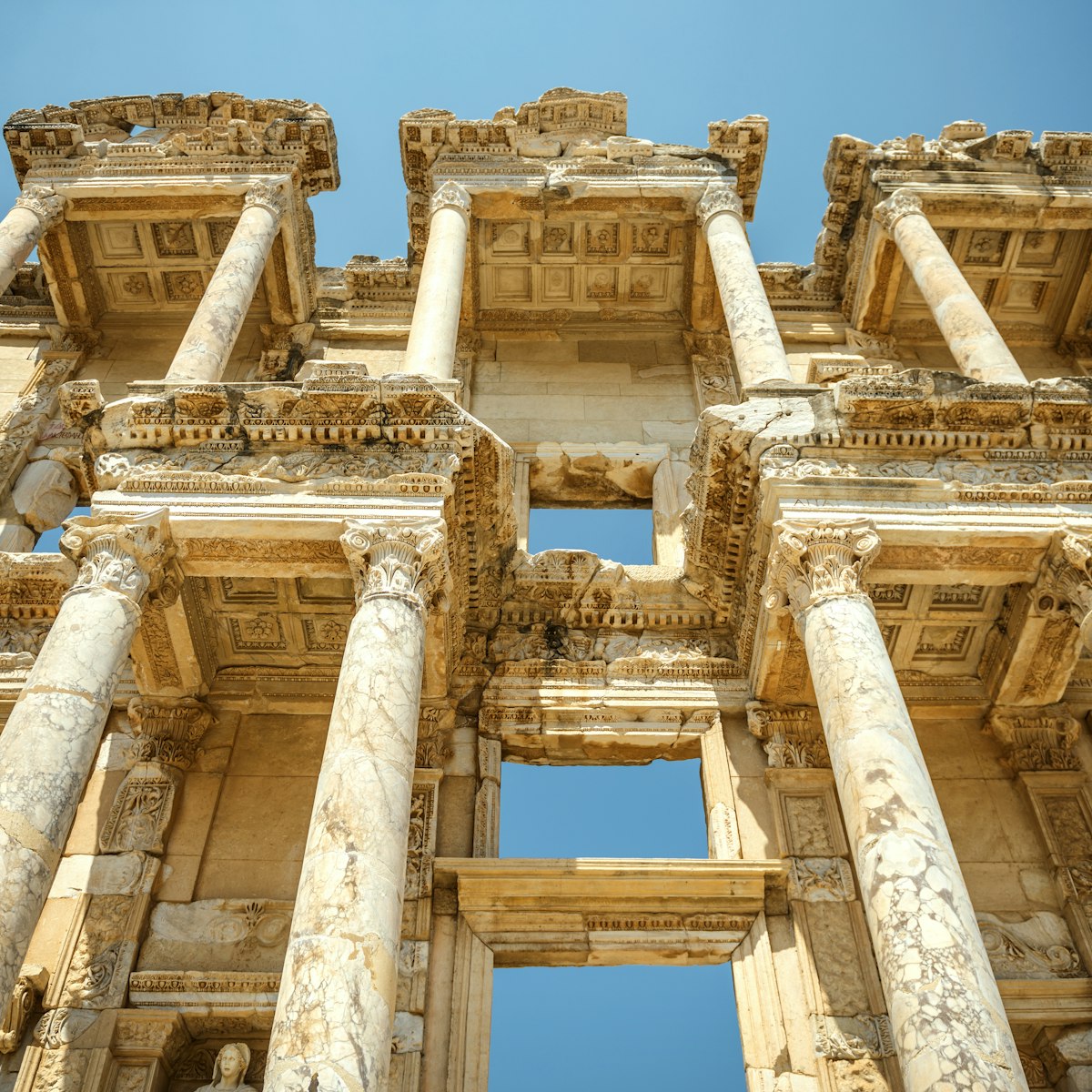
Of Turkey's hundreds of ancient cities and classical ruins, Ephesus is the grandest and best preserved. A Unesco-listed World Heritage Site, it's the best…

Library of Celsus
This magnificent library dating from the early 2nd century AD, the best-known monument in Ephesus, has been extensively restored. Originally built as part…
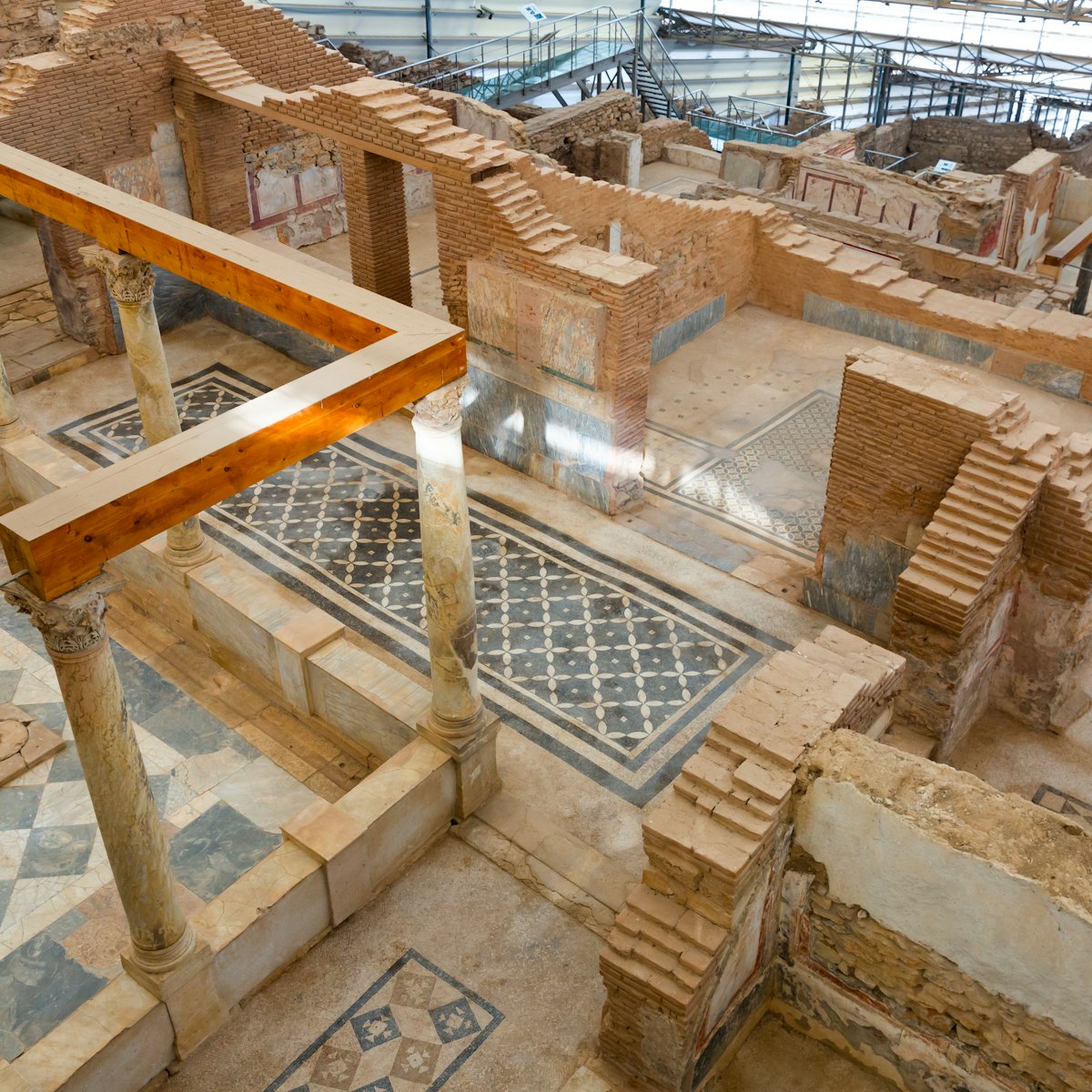
Terraced Houses
The roofed complex here contains seven well-preserved Roman homes built on three terraces, which are well worth the extra visiting fee. As you ascend the…

Great Theatre
Originally built under Hellenistic King Lysimachus, the Great Theatre was reconstructed by the Romans between AD 41 and 117 and it is thought St Paul…

Curetes Way
Named for the demigods who helped Lena give birth to Artemis and Apollo, the Curetes Way was Ephesus' main thoroughfare, 210m long and lined with statuary…
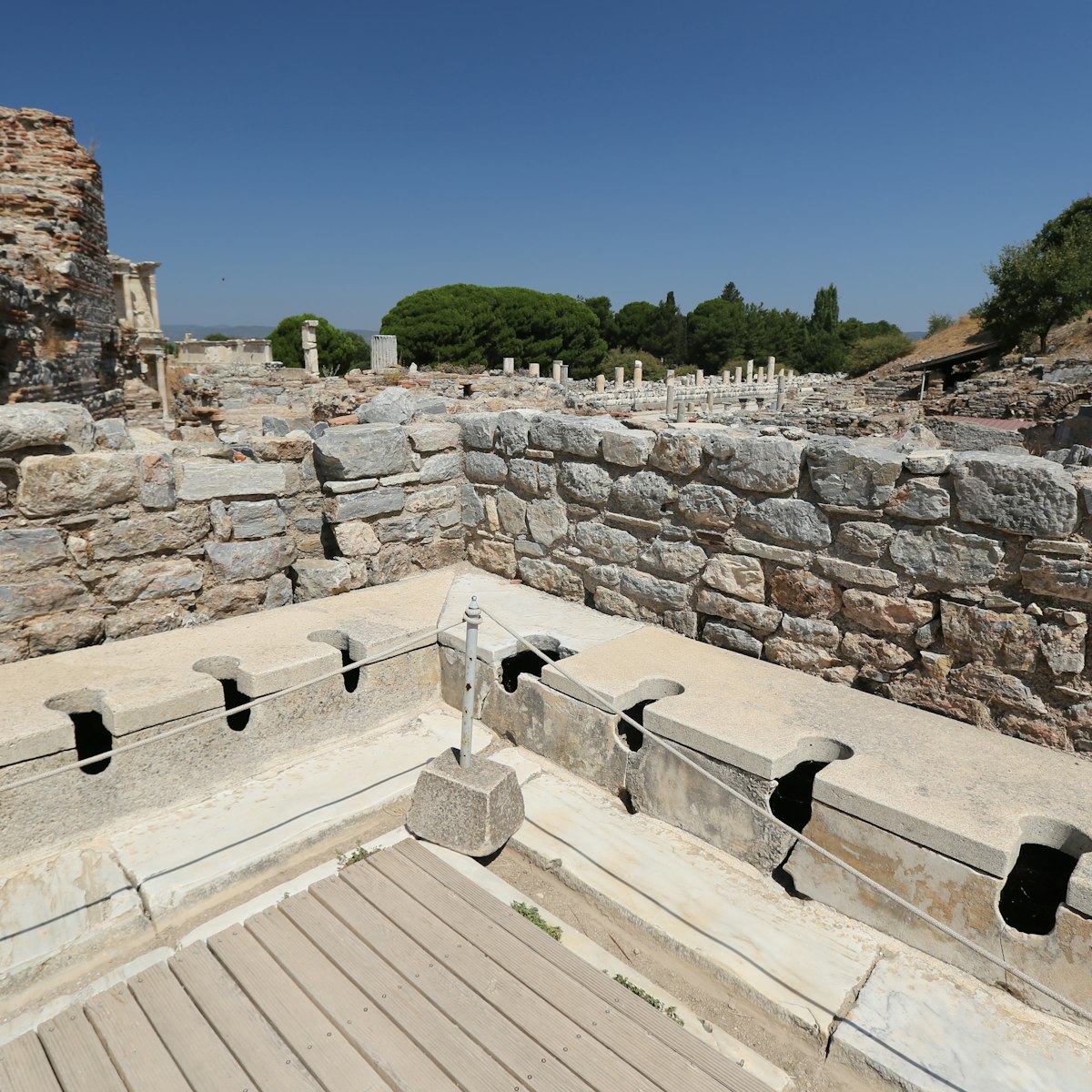
This square structure has toilet 'seats' along the back walls with a roof above. Although some wealthy citizens had private home bathrooms, they also used…

Temple of Hadrian
One of Ephesus' star attractions and second only to the Library of Celsus, this ornate, Corinthian-style temple honours Trajan's successor and originally…

Mary's House
Atop the foundations of a ruined house on the slopes of Bülbül Dağı (Mt Coressos), said by some to be where the Virgin Mary lived, a chapel now receives…
Plan with a local
Experience the real Turkey
Let a local expert craft your dream trip.

Purchase our award-winning guidebooks
Get to the heart of Ephesus with one of our in-depth, award-winning guidebooks, covering maps, itineraries, and expert guidance.
11 Best Things to do in Ephesus and Selcuk, Turkey (2023)
This post may contain compensated links. Find more info in our disclosure policy
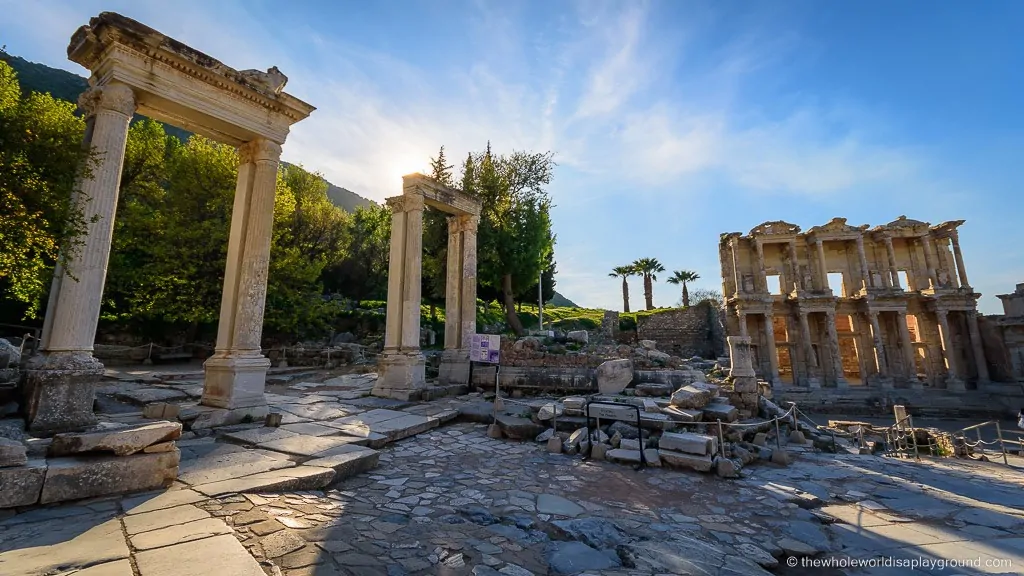
The ancient Greek city of Ephesus in the town of Selcuk attracts over one million visitors per year and is one of the most popular sites in Turkey. Although many day trippers focus on the ancient city, there’s plenty of amazing things to do in Selcuk and it’s definitely worth spending time exploring Ephesus and Selcuk. To help with your planning we’ve put together our ultimate guide with the best things to do in Ephesus and Selcuk. Happy travels!
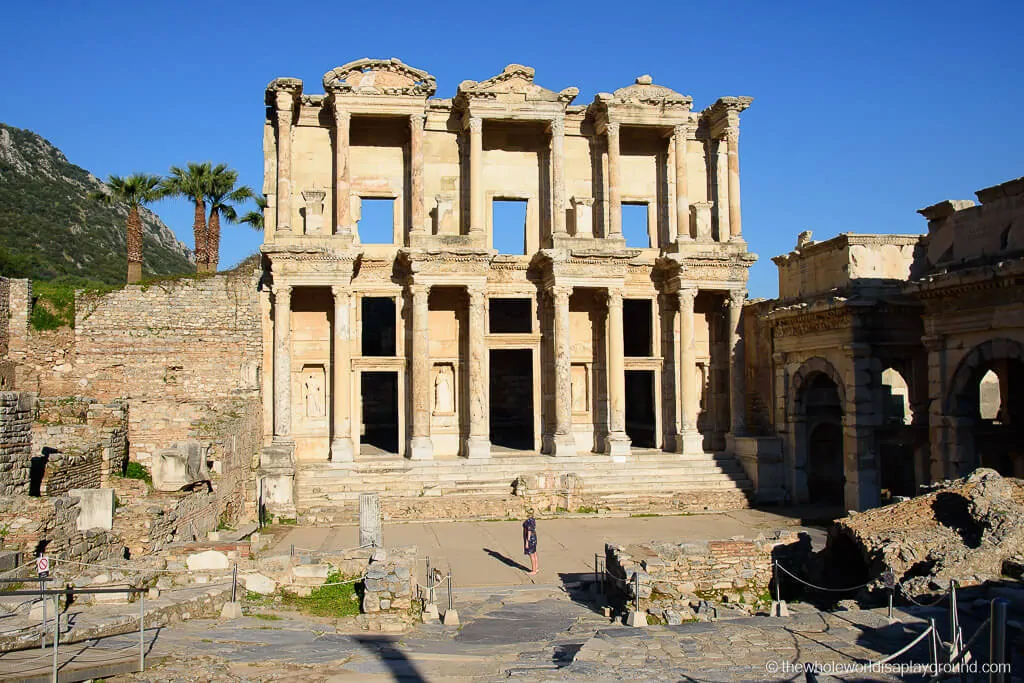
Table of Contents
Things to do in Ephesus and Selcuk
While the ancient city of Ephesus itself is the main attraction there are quite a few other things to see and so in the area. We highly recommend that anyone planning a Turkey itinerary should include at least a few days in this historic area as there is so much to see.
1 | The Ancient city of Ephesus
Ephesus was one of the highlights of our trip to Turkey and one of the most impressive UNESCO World Heritage Sites in Turkey . The ancient Greek city of Ephesus was built in the 10th Century BC and was home to over 300,000 people at its peak. A succession of empires from Neolithic to Roman to Ottoman have ruled over Ephesus and the well-preserved ruins are one of the most incredible sights in Turkey.
The highlights of Ephesus are the magnificent Library of Celsus, built to store 12,000 scrolls and one of the most impressive buildings of the Roman Empire, the Great Theatre, the Terraced Houses and the Temple of Hadrian.
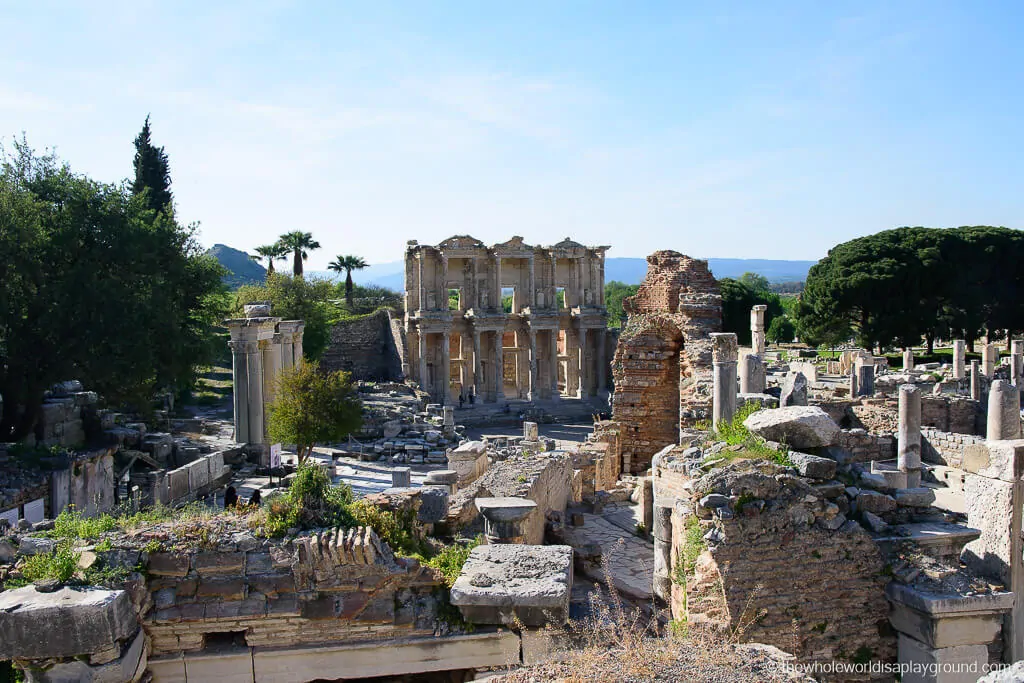
Things to do in Ephesus and Selcuk tip: go early or late to avoid the huge crowds and the midday sun. We visited at opening and made a beeline for the Library of Celsus where we spent an incredible 30 minute enjoying one of the most iconic sites in the world all by ourselves!
Where to stay in Ephesus
We recommend staying in Selcuk, the town in which the ancient ruins of Ephesus are located and home to the other must-see sights in Ephesus. Our two night stay allowed us to visit all the sights and also to visit the ancient ruins of Ephesus at open and close when it was much less busy.
- Hotel Mary’s House: family run hotel with handmade woodwork in bedrooms, a beautiful breakfast and a great location in the heart of Selcuk. We stayed here during our visit to Ephesus and loved it – check prices here!
- Cella Boutique Hotel and Spa: – luxury boutique hotel with outdoor pool, a spa and Turkish baths close to the centre of Selcuk – check prices here!
- Hotel Bella – another great boutique option with Ottoman style furniture and a rooftop restaurant with great views of the fortress – check prices here!
Click here to book an Ephesus hotel
Many visitors prefer to stay in Kusadasi and take a day trip to Ephesus – check prices here!
Click here to book a day trip to Ephesus
2 | The Terraced houses
Once luxurious residential villas, the terraced houses of Ephesus were known as the houses of the rich. The houses are presented as an indoor excavation site with a walkway leading visitors above the luxurious villas and their restoration is an ongoing project. The ruins of the house give an incredible glimpse of a privileged life in Roman times.
The mosaics and frescoes are handpainted and include animals and gladiators while names, poems and a price list of everyday items were among the most interesting graffiti. Although the excavation site of the terraced houses is located within the ancient city of Ephesus it requires a separate entry fee.
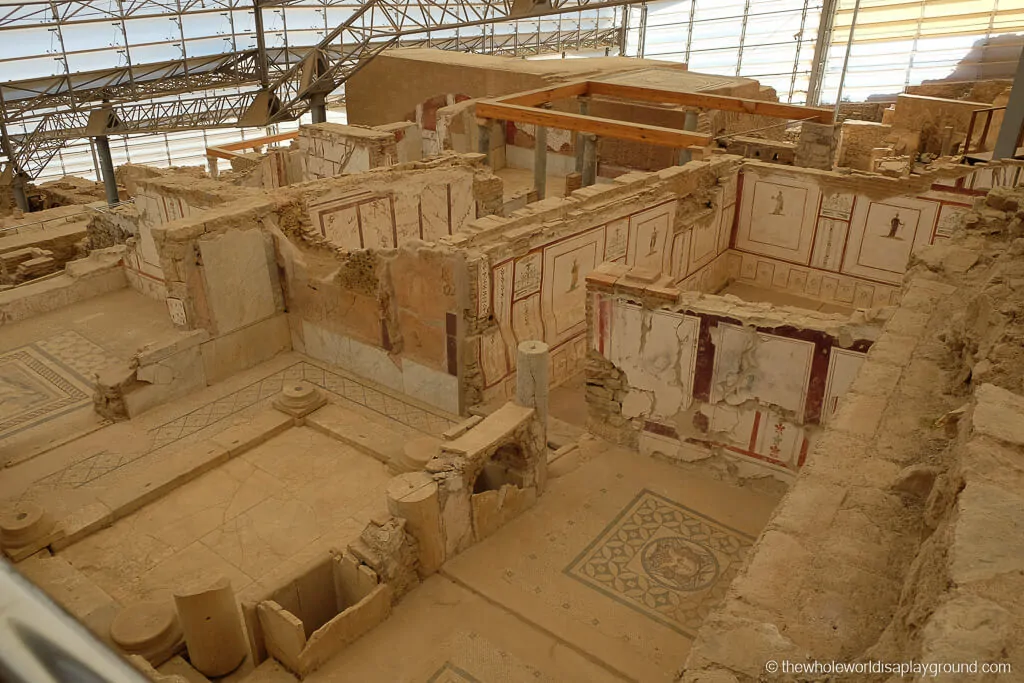
Things to do in Ephesus and Selcuk tip: if you are planning to visit a number of historical sites in Turkey it might be worth purchasing the Turkey Museum Pass. The pass is valid for 15 days, costs 210 Lira (around 50USD) and covers 300 museums and tourist areas affiliated to the Ministry of Culture and Tourism of the Republic of Turkey. The passes are sold at the ticket office of most historical sites – we used ours to enter Ephesus, the Ephesus Archaeological Museum, the Basilica of St John and the terraced houses. Mary’s House was excluded from the pass and required a separate entrance fee.
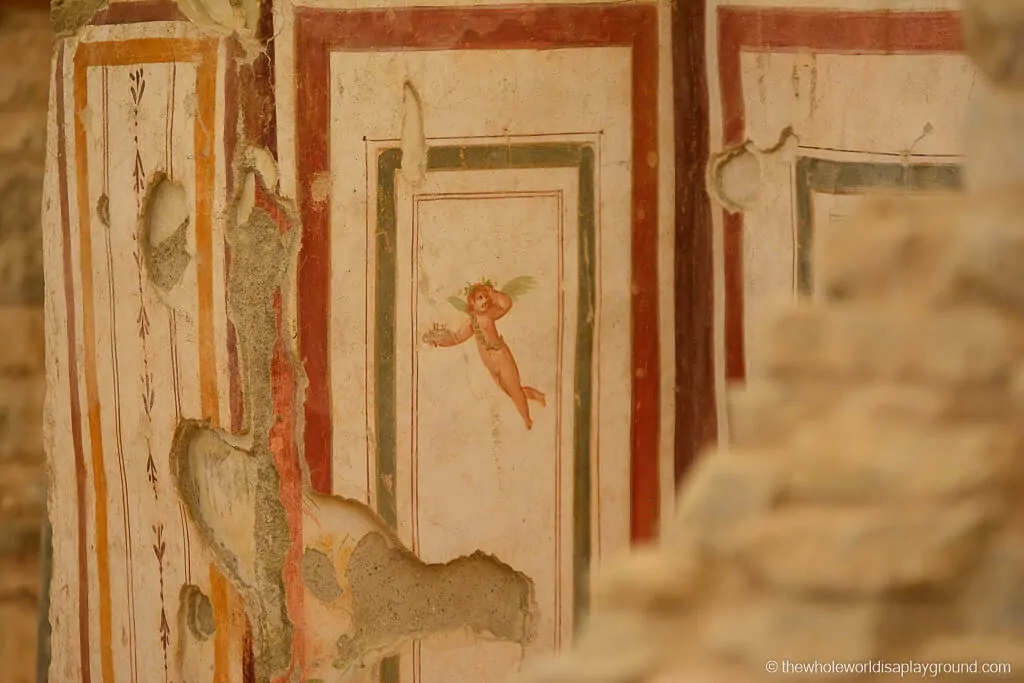
3 | Ephesus Archaeological Museum
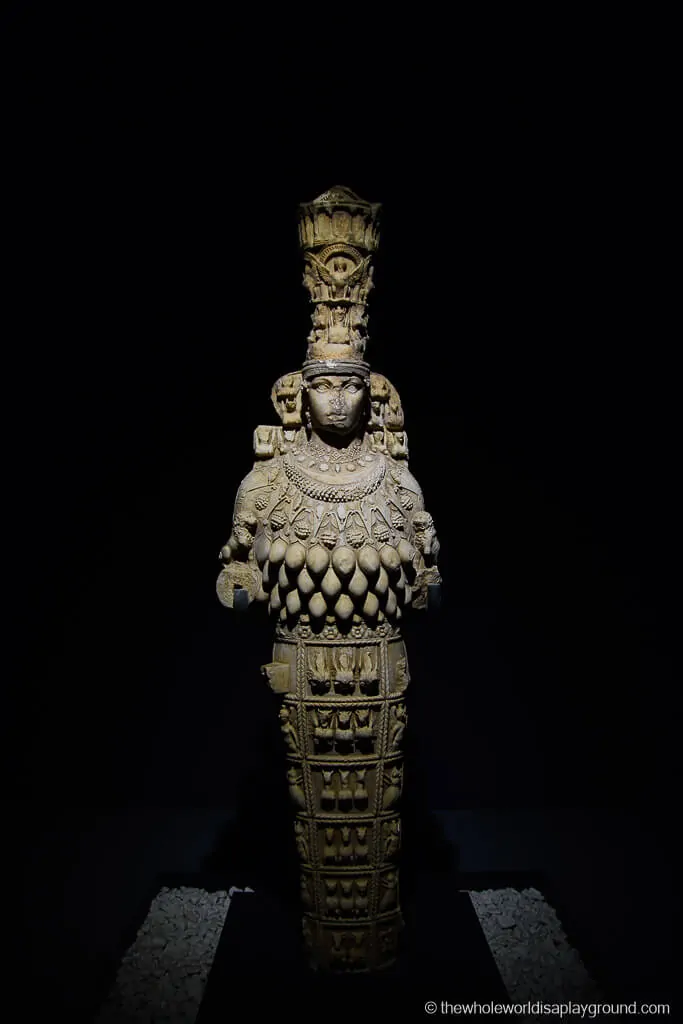
The Ephesus Archaeological Museum exhibits artefacts that were excavated from the nearby ancient city of Ephesus. The artefacts include jewellery, coins, funeral relics and incredible statues. The highlight is the statue of Artemis and a visit to the museum really brings both the ancient ruins and the artefacts to life.
Things to do in Ephesus and Selcuk tip: we’d recommend visiting the archaeological museum after visiting the ancient site of Ephesus as then you can imagine the artefacts in their original locations.
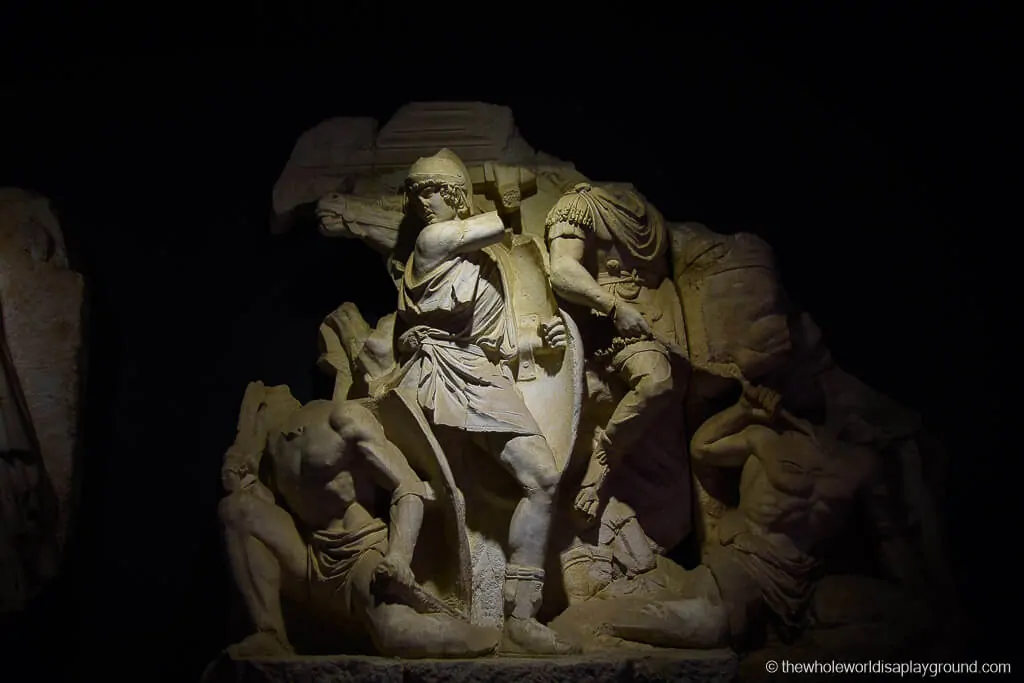
4 | Basilica of St John
The once magnificent 6th Century Basilica is now in ruins having suffered at the hands of attackers, succumbed to pillaging and withstood earthquakes but its significance remains great. The Apostle John travelled from Jerusalem to Ephesus and is said to have spent his remaining years there with his tomb located under the Basilica marked by a marble slab at the site. It is believed that he wrote his gospel on Ayasuluk Hill upon which the Basilica is located and brought Mary, the Mother of Jesus to Ephesus. Although the church is in ruins it is still possible to visualise how the Basilica would have once stood and the views from the Basilica are stunning.
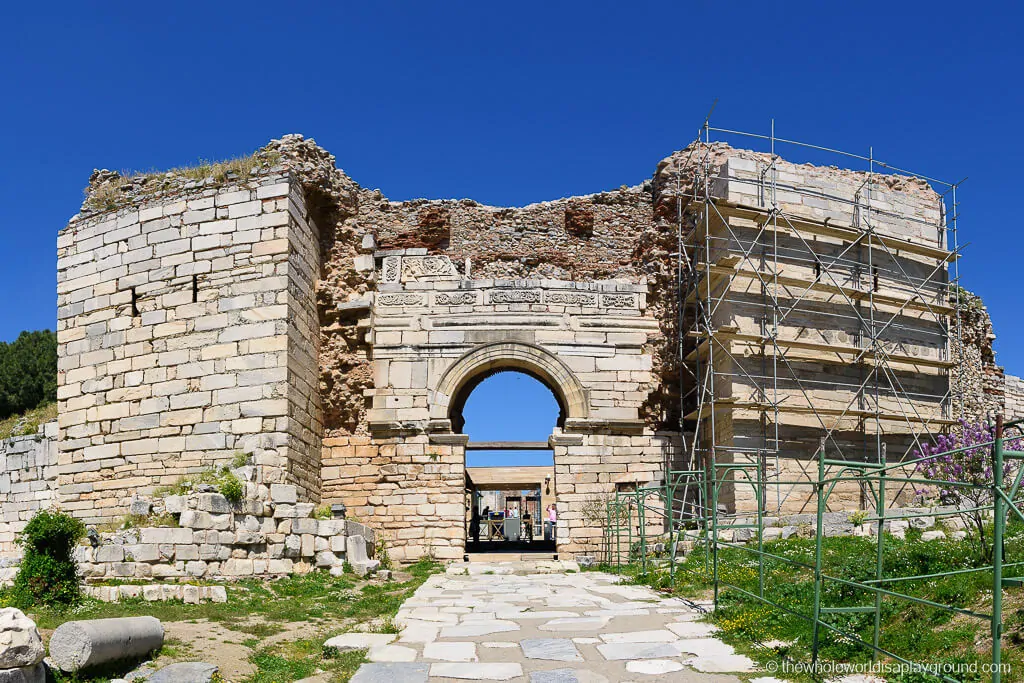
Things to do in Ephesus and Selcuk tip: Isa Bey mosque, St John’s Basilica and Ayasuluk Fortress are close together so combine a visit to the three.
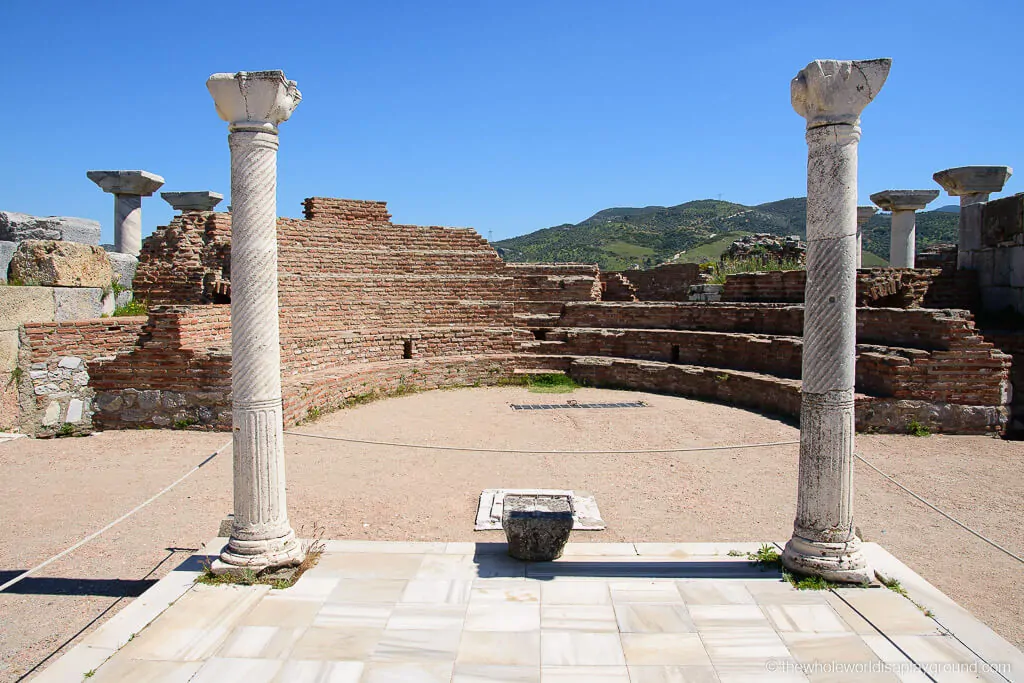
5 | Temple of Artemis
The Temple of Artemis is one of the Seven Wonders of the Ancient World, a title bestowed on only the most incredible ancient constructions. Dedicated to the goddess Artemis, only a single column stands tall among the fragments of ruins that remain from the once magnificent temple. Despite the sparsity of the ruins it is incredible to stand in front of one of the seven wonders of the ancient world and a site with such significance.
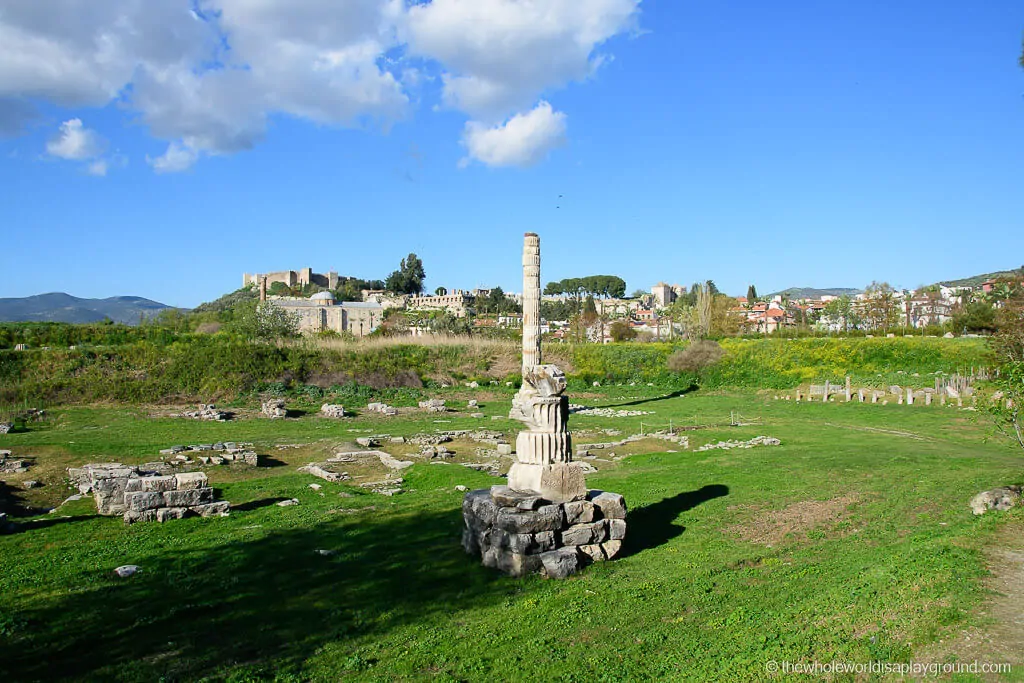
6 | House of Mary, Meryemana
The house of the Virgin Mary is a pilgrimage site close to the ancient ruins of Ephesus and is considered to be the place where Mary, the Mother of Jesus, lived and died after being taken there by Saint John. The house is now a chapel and a side room is understood to have been where she slept. The site first came to prominence when a German nun, Anne Catherine Emmerich, had a vision and described the house in detail despite having never visited. Her visions were published in a book and, later, local historians and priests found a house which matched the descriptions in the book.
Pilgrims to the church leave their offerings on tissue tied to a wishing wall and sip from a water fountain said to have miraculous qualities for healing and fertility.
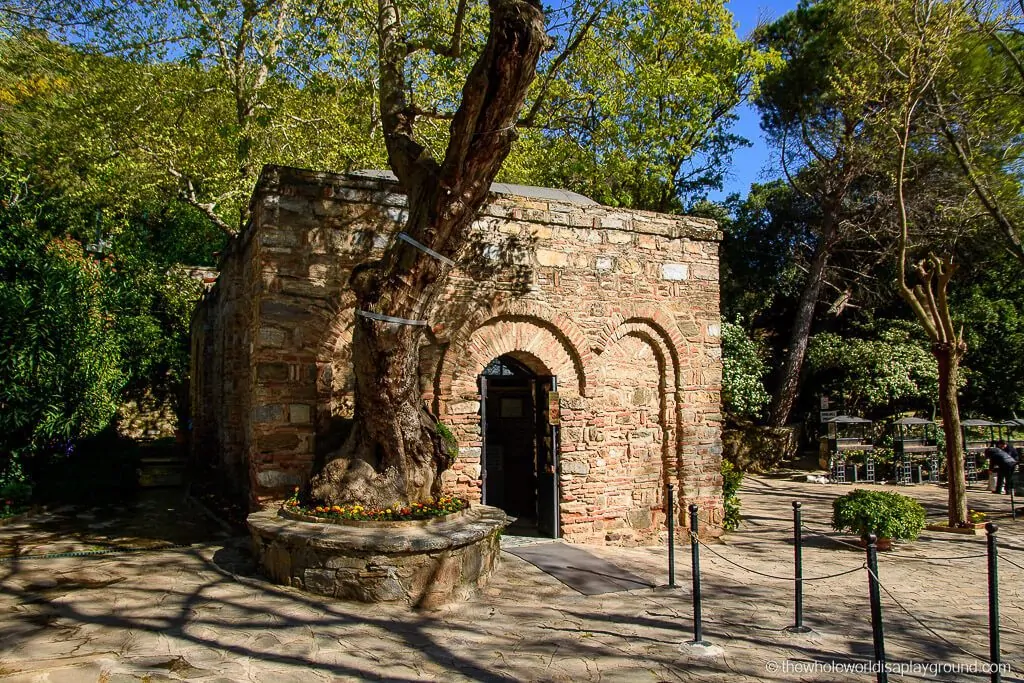
7 | Ayasuluk Fortress
Alongside St John’s Basilica and the Isa Bey Mosque the Ayasuluk Fortress sits atop Ayasoluk Hill and dominates the skyline of Selcuk. The fortress was built to protect St John’s Basilica and the ruins represent Byzantine, Seljuk and Ottoman periods. As well as the partially restored walls of the fortress there are remains of houses, a mosque, baths, a hammam and cisterns.
Things to do in Ephesus and Selcuk tip: Isa Bey Mosque, St John’s Basilica and Ayasuluk Fortress are located close to each other so combine a visit to the three.
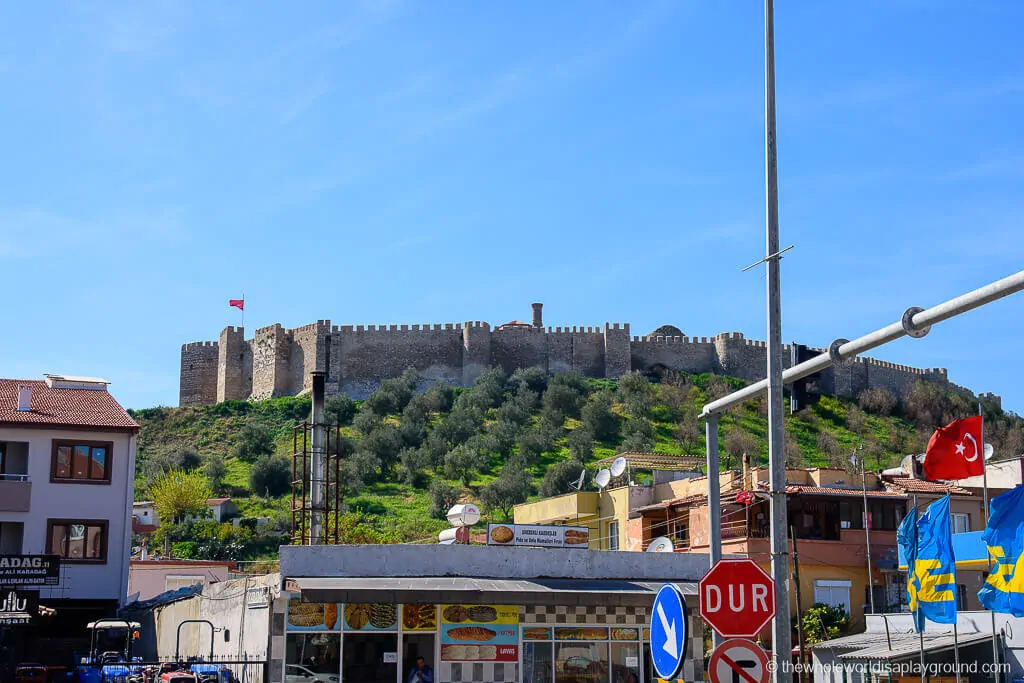
8 | Isa Bey Mosque (Isa Bey Camii)
Located in the heart of Selcuk, the Isa Bey Mosque was constructed in the late 1300s and is based on the Great Mosque of Damascus. It is one of the finest examples of Seljukian architecture and is unique in that it was purposely built with an asymmetrical style. The mosque is now both a place of worship and a tourist attraction.
Things to do in Ephesus and Selcuk tip: The mosque is close to St John’s Basilica and Ayasuluk Fortress so combine a visit to the three. Visitors are required to cover up and hair scarves and long garments are available at the mosque
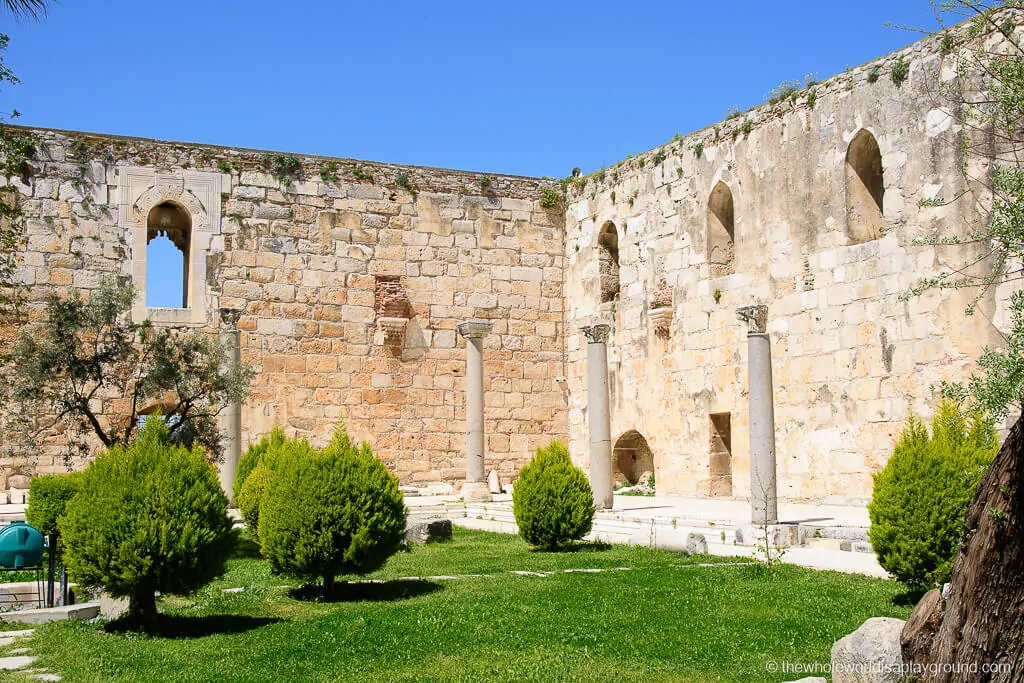
9 | Roman Aquaduct (The Aqueduct of Sextilius Pollio)
The ancient city of Ephesus boasted an advanced aqueduct system that supplied the city with water. The aqueduct is no longer intact, instead, standing as occasional archways which run through the centre of Selcuk. The aqueduct is now famous for the huge stork nests which adorn its top. The migrating storks return to Selcuk during the spring and summer months and reclaim their place in the nests atop the aqueduct.
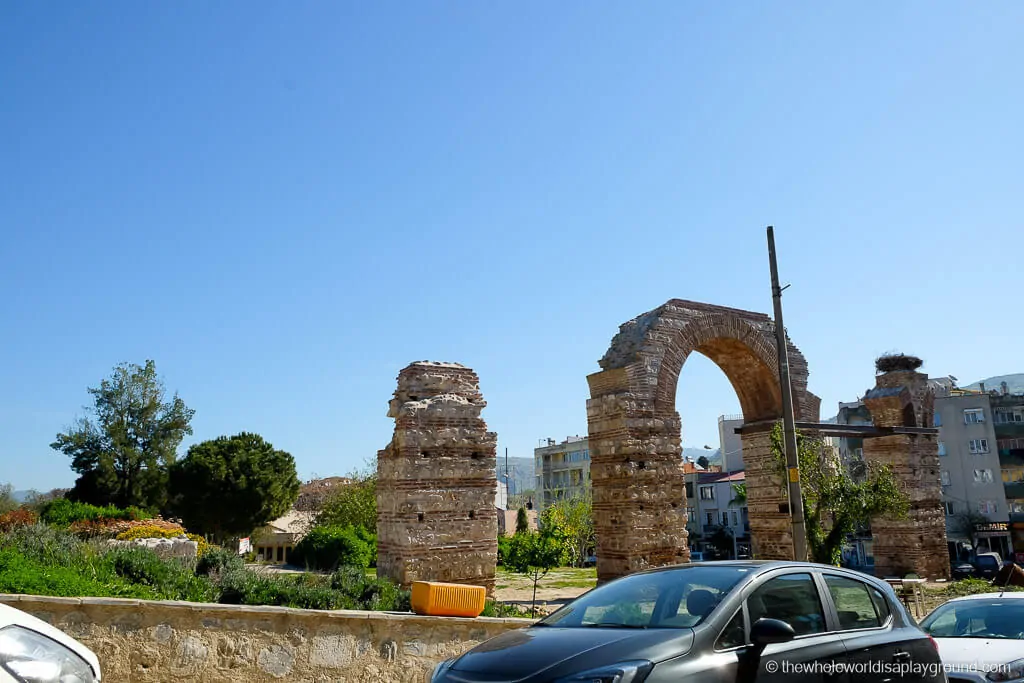
10 | Sirince
The small village of Sirince is located 8km outside of Ephesus and its red-roofed houses sloped gently down the hillside. Sirince is famous for its Greek style fruit wine and wine tasting in the village is a unique experience with an interesting range of fruits to choose from! The quaint little village is a popular tourist destination and is a lovely mix of Turkish bazaar and a step back in time and its narrow streets are filled with shops selling souvenirs, jams and handmade arts and crafts.
Things to do in Ephesus and Selcuk tip: Climb to the very top of the village for a lovely panoramic view of the orange roofed village. Pop into the Church of St John the Baptist along the way – the frescoes are quite badly damaged but it’s still beautiful to visit.
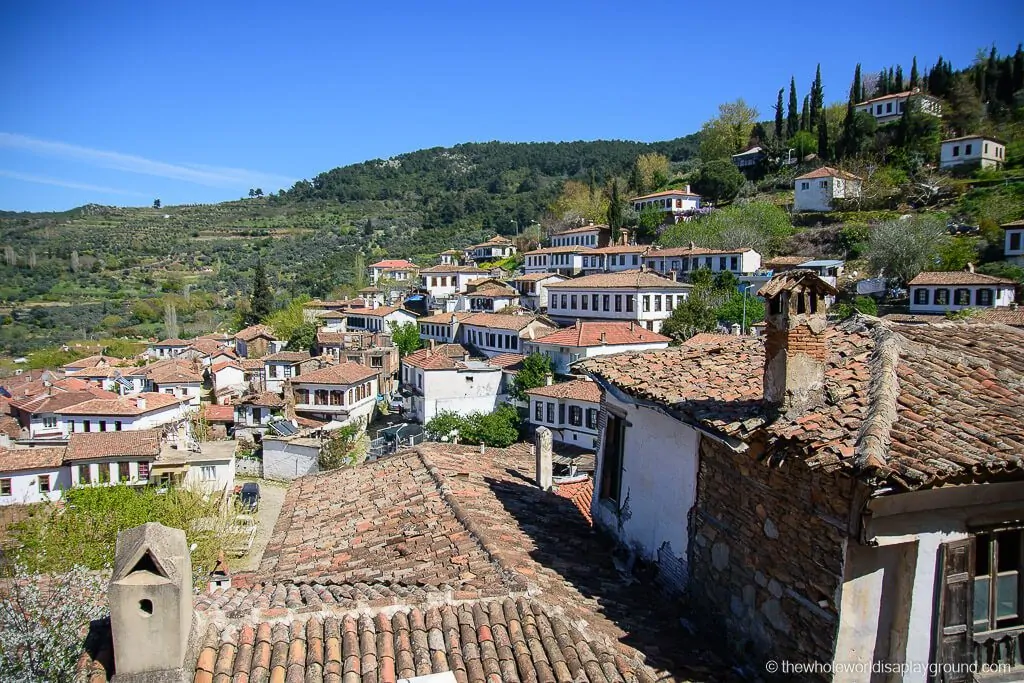
11 | Grotto of the Seven Sleepers
In 250AD seven young Christians, having refused to denounce their Christian beliefs, were said to have hidden in a cave close to Ephesus to escape religious persecution by the Roman Emperor Decius. The young men went to the cave to pray and fell asleep prompting the Emperor to have the cave sealed. The men were awakened 300 years later by a landowner wanting to use the cave as a cattle pen.
Thinking they had only been asleep for one day one of the men returned to Ephesus to find Christian churches and their 200 year old coins long out of date. The local bishop was summoned to meet the Seven Sleepers and declared the events a miracle and the men were later buried in the cave when they died. The Grotto of the Seven Sleepers is also an important Muslim site and the story is referred to in the Qur’an as the People of the Cave.
Things to do in Ephesus tip: we found the Grotto of the Seven Sleeps interesting to visit but it should be noted that the site is in a state of disrepair and only viewable through a fence.
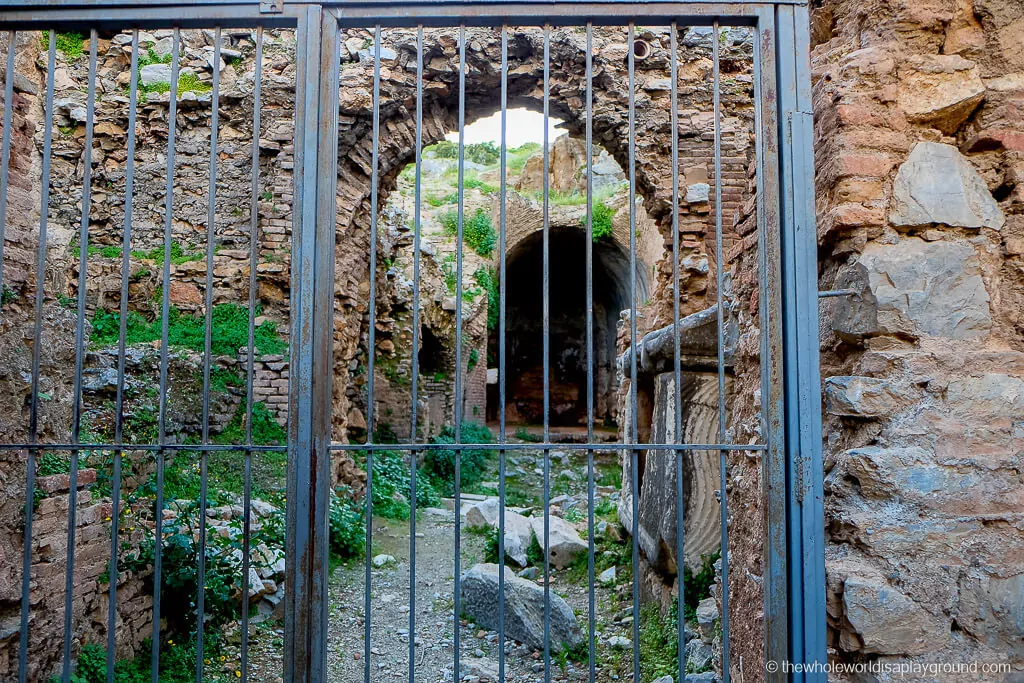
Leave a Comment Cancel reply
Save my name, email, and website in this browser for the next time I comment.
Disclaimer: As an Amazon Associate I earn from qualifying purchases.

No products in the cart.
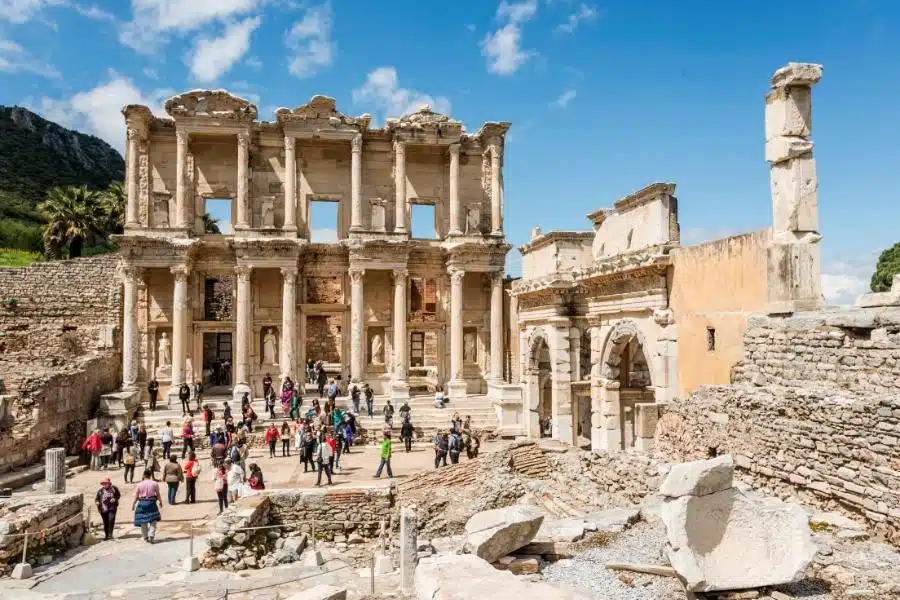
10 Things You Must See in Ephesus
The complete guide to ephesus: embark on an epic journey.
When you picture Turkey, it’s likely the bustling streets of Istanbul that come to mind. But let’s shift gears and head to Ephesus, a city brimming with history that whispers tales of the past. Its intricate architecture and stunning landscapes make it a must-visit on any Turkish adventure. So, are you ready to discover the 10 Things You Must See in Ephesus ? Buckle up and let’s get started!
Experience the highlights of Ephesus affordably with One Nation Travel’s tours, complete with local guides for an enriched, authentic exploration.
1. The Grand Theatre of Ephesus
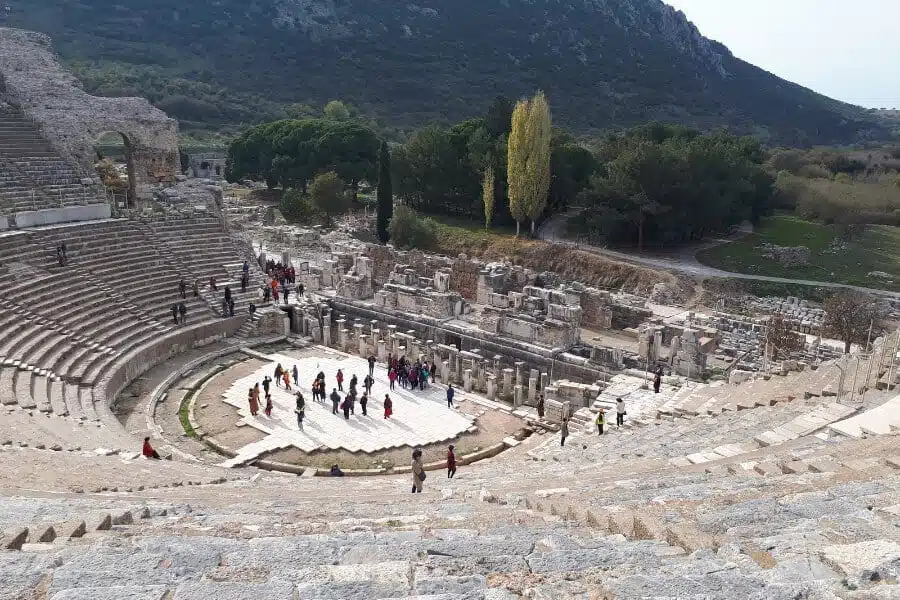
A Spectacle to Behold
Imagine a mammoth structure capable of accommodating over 24,000 spectators! Ephesus’s Grand Theatre, known as the Great Theatre, is just that. It’s not just a sight for sore eyes but a marvel of ancient engineering. This grand structure, with its magnificent facade, will leave you spellbound.
Architectural Brilliance
Designed in the Hellenistic period, the Grand Theatre has stood the test of time, making it one of the most popular sites in Ephesus. Every aspect of its design, from the 66 rows of seats divided into three horizontal sections to the semicircular orchestra space, showcases the architectural prowess of the era.
A Stage for History
Apart from hosting dramas and gladiatorial combats, this theatre also played a crucial role in shaping Ephesian history. It was the stage for the famed ‘Riot of the Silversmiths’ mentioned in the New Testament. When you walk into the theatre, you’re stepping into a scene from the past.
2. Celsus Library
An ancient knowledge hub.
Next up on our journey is the iconic Celsus Library, a symbol of Ephesus’s intellectual and cultural prowess. As the third-largest library of the ancient world, it held over 12,000 scrolls. A visit to this library will surely kindle your inner historian.
Memorial to a Roman Senator
Constructed in 117 AD, this library is a tribute to Roman Senator Tiberius Julius Celsus Polemaeanus. The four statues at the entrance represent wisdom (Sophia), knowledge (Episteme), intelligence (Ennoia), and virtue (Arete). These embody the qualities admired by Celsus, and their prominence underscores the library’s educational importance.
A Masterpiece of Restoration
After an earthquake destroyed it in 262 AD, the library underwent a careful restoration, retaining its original splendor. It remains a perfect example of how restoration can help us appreciate our rich past.
3. Temple of Artemis
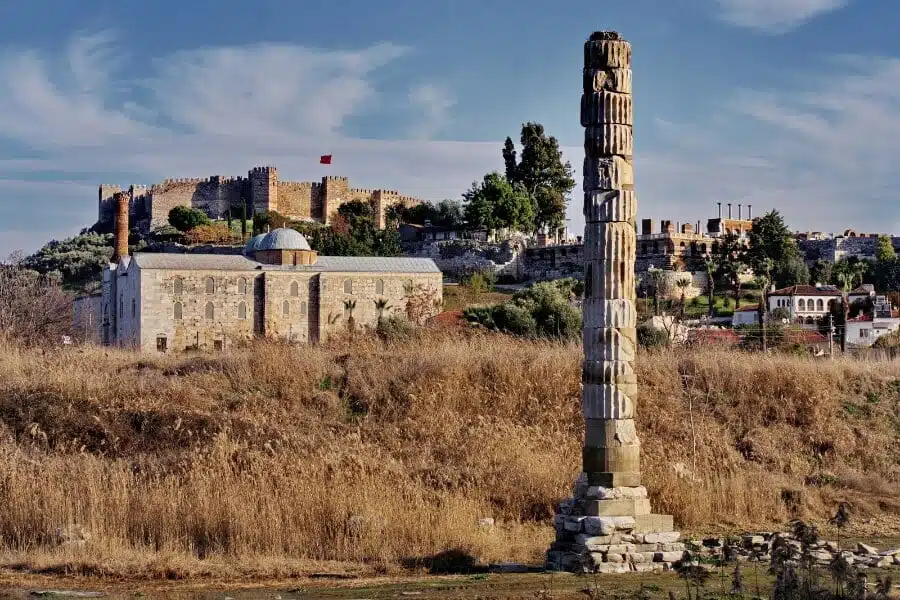
One of the Seven Wonders
Considered one of the Seven Wonders of the Ancient World, the Temple of Artemis stands as a testament to Ephesus’s historical and religious significance. Although only a single column remains, the temple’s grandeur can still be imagined.
The Goddess’s Sanctuary
Dedicated to the Greek goddess Artemis, the temple was not just a place of worship, but also a marketplace and a religious and political meeting ground. Its significance was such that Artemis’s symbol, the bee, was used on Ephesian coins.
A Glimpse into the Past
Today, the remnants of the temple still command attention. As you stroll around, let your mind wander back to the times when the temple was in its full glory.
4. Terrace Houses
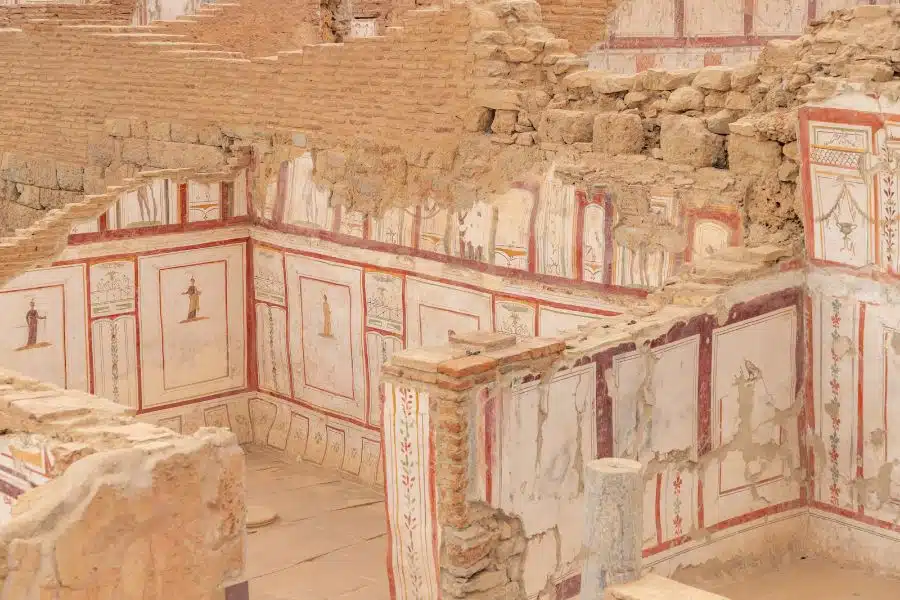
Luxury in Antiquity
For a peek into the luxurious lives of Ephesian elites, make sure to visit the Terrace Houses . These houses, decorated with beautiful mosaics and frescoes, offer a snapshot of the rich domestic culture of Ephesus.

Architectural Ingenuity
Notice the complex heating systems and indoor plumbing, indicators of the advanced lifestyle enjoyed by the inhabitants. These houses are a fascinating window into the ingenious minds of ancient architects.
The Houses of the Powerful
From the houses’ elaborate decorations and architectural sophistication, it’s clear they were occupied by Ephesus’s most influential figures. Wandering through these homes will give you a unique perspective on the city’s social hierarchy.
5. Ephesus Archaeological Museum
Preserving ephesus’s treasures.
No visit to Ephesus would be complete without a trip to the Ephesus Archaeological Museum. The museum houses a vast collection of artifacts unearthed from Ephesus and the surrounding areas.
Highlights of the Museum
Don’t miss the statue of Artemis Ephesia, an artifact that symbolizes the city’s spiritual life. The collection of Ephesian coins offers a glimpse into the city’s economic past.
A Learning Experience
The museum not only displays artifacts but also provides historical and cultural context, making your visit both educational and entertaining.
6. Basilica of St. John
A pilgrimage site.
Constructed over the tomb of St. John the Apostle, this basilica has been a pilgrimage site for centuries. It’s an important location for both historical and religious exploration.
Majestic Architecture
Despite the ruins, the basilica’s grand architecture, which once boasted six domes, is evident. The frescoes and mosaics add an artistic touch to the spiritual journey.
St. John’s Final Resting Place
The basilica holds an elevated tomb believed to be St. John’s final resting place. This makes it a must-visit for anyone interested in early Christian history.
7. House of Virgin Mary
A holy shrine.
Located on Mt. Koressos, the House of the Virgin Mary is believed to be where Mary spent her last days. This modest stone house is now a popular Christian and Muslim shrine.
Fountain of Miracles
Next to the house, there’s a fountain believed to have healing powers. Many visitors leave their prayers on the nearby wall, creating a tapestry of hope and faith.
A Place of Peace
Regardless of your religious beliefs, the serene atmosphere of the House of Virgin Mary offers a peaceful respite from the busy world outside.
8. The Ephesus Gate
A grand entrance.
Standing at the entrance of Ephesus, this gate sets the tone for your historical adventure. Its grandeur and detailed carvings make it a landmark you can’t afford to miss.
Symbol of Ephesus
The Gate is more than just a grand entrance; it’s a symbol of the city’s rich past and monumental architecture.
A Sneak Peek of What’s Inside
Standing at the Ephesus Gate, you get a sneak peek of the architectural wonders that await you inside.
9. Ancient Agora
Heart of the city.
In ancient times, the Agora was the beating heart of Ephesus, a hub for political, commercial, and social activities. Today, it’s a maze of columns and ruins, narrating tales of bustling marketplaces and heated political discussions.
Structure of the Agora
The ruins consist of several shops, offices, and a central courtyard, offering insight into the ancient marketplace’s layout.
Walking Through History
As you navigate the Agora, you’ll find yourself walking in the footsteps of ancient Ephesians, experiencing a slice of their daily life.
10. Arcadian Way
The ancient street.
The Arcadian Way, connecting the harbor to the Great Theatre, was once the most important street in Ephesus. Lined with statues, columns, and shops, this marble-paved street is a testament to Ephesus’s vibrant city life.
A Scenic Route
This wide, colonnaded street offers a picturesque walk that leaves you imagining the grand processions that once passed through.
A Trip Back in Time
A stroll down the Arcadian Way is a trip back in time. As you walk, you’ll feel the pulse of Ephesus as it once was: alive, bustling, and magnificent.
Frequently Asked Questions
1. How do I get to Ephesus?
Ephesus is easily accessible by road from Selçuk, which is well connected to other major Turkish cities by bus and train.
2. What is the best time to visit Ephesus?
The best time to visit Ephesus is during the spring (April to June) or fall (September to November) when the weather is pleasant.
3. Are there guided tours available?
Yes, guided tours are available. They offer a detailed explanation of the history and significance of various sites.
4. Is Ephesus safe for tourists?
Yes, Ephesus is safe for tourists. However, like any other tourist destination, it’s always wise to stay vigilant about your belongings.
5. How much time do I need to explore Ephesus?
You need at least a full day to explore Ephesus and truly appreciate its historical and cultural wealth.
6. Are there facilities for food and water in Ephesus?
Yes, there are several restaurants and stalls around Ephesus where you can buy food and water.
With its grand theatres, beautiful temples, luxurious houses, and bustling streets, Ephesus is more than just a historical site—it’s a journey back in time. Each stone whispers tales of a grand past, a civilization that was ahead of its time. From the Grand Theatre to the Arcadian Way, the 10 Things You Must See in Ephesus promise an unforgettable experience. So, when are you packing your bags for this journey through time?
Top 3 Suggested Tour Packages for Exploring Ephesus

Similar Posts
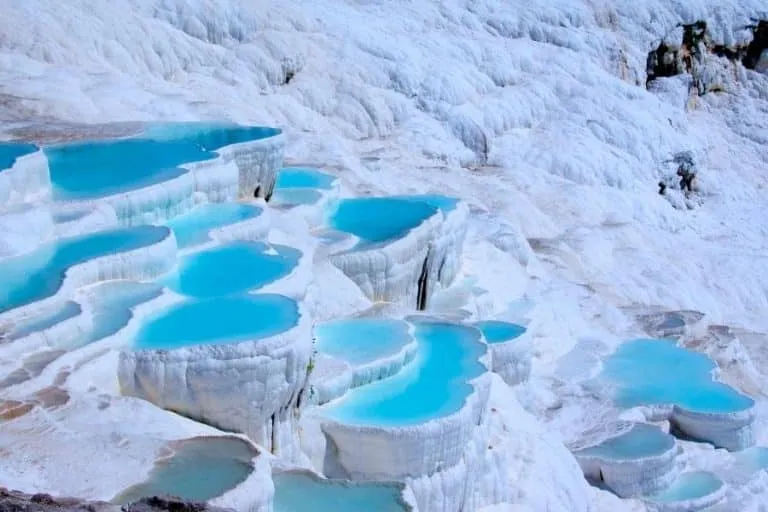
Discover the Natural Wonders and Historical Gems of Pamukkale
A Guide to Exploring Pamukkale: Turkey’s Cotton Castle Pamukkale, a natural wonder in southwestern Turkey, is a fascinating blend of natural beauty and historical significance. Known for its stunning white travertine terraces and warm mineral-rich waters, it is a UNESCO World Heritage site that attracts visitors from around the globe. In this blog post, we…

3 Day Cappadocia Itinerary for First Time Visitors
Discover the magic of Cappadocia with our 3-day itinerary, perfect for first-time visitors. Explore fairy chimneys, hot air balloon rides, and unique cultural heritage in this enchanting landscape.
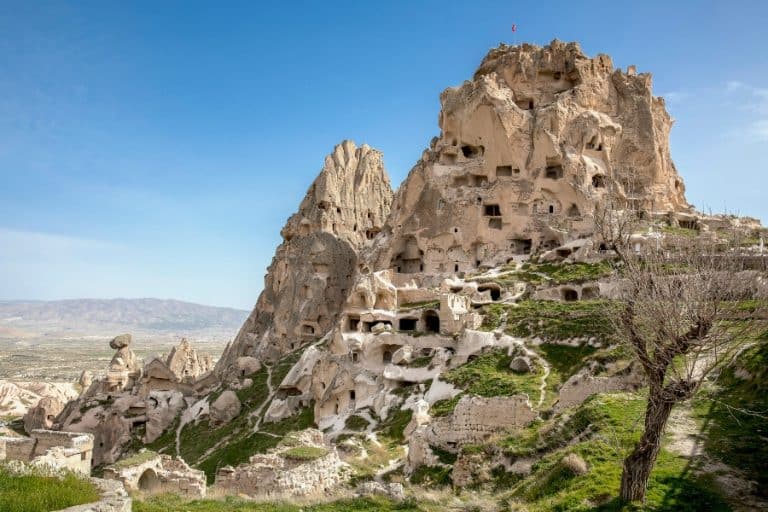
The Ultimate Guide to Exploring Cappadocia with One Nation Travel
Explore the enchanting world of Cappadocia with One Nation Travel’s ultimate guide. From fairy chimneys and cave hotels to hot air balloons and local cuisine, discover everything you need to plan an unforgettable trip to Turkey’s geological wonderland.

Canadians Choose Turkey as Top Travel Destination: Explore Why!
Uncover why Turkey is becoming the top destination for Canadian travelers! Explore ancient wonders, vibrant culture, and stunning landscapes in this Eurasian gem.
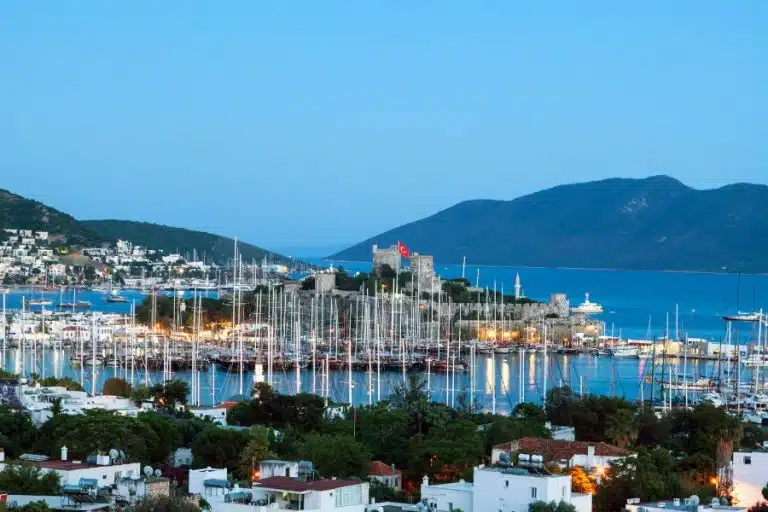
The Ultimate Turkey Honeymoon Guide: Love in the Land of Wonders
Explore the charm of Turkey as a honeymoon paradise. Unveil top romantic locales, ideal travel seasons, and essential advice with our ultimate guide.
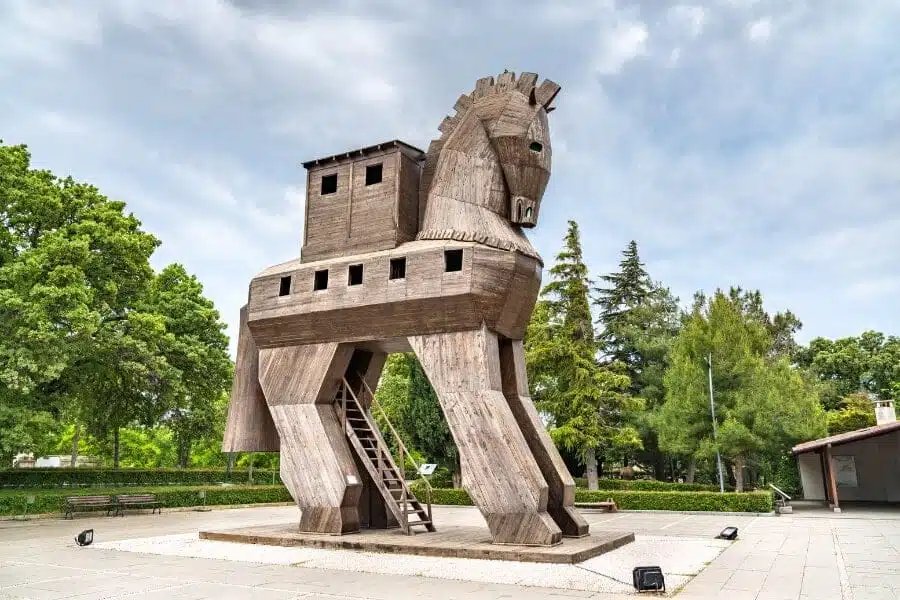
Exploring Turkey’s UNESCO World Heritage Sites
Discover Turkey’s UNESCO World Heritage Sites with this comprehensive guide. From Ephesus to Pamukkale, get insider tips, travel advice, and answers to FAQs for an unforgettable journey through Turkey’s rich history and natural wonders.
START PLANNING YOUR TRIP
Our team of experts have a wealth of knowledge and experience to help you plan your adventure of a lifetime.

Ephesus, Turkey: Best Sites to Visit in the Ancient City
Without a doubt, the most impressive Ancient City to visit in all of Turkey is Ephesus. Built by the Greeks in the 10th century BC, it was once the trade and commercial center of the ancient world.
Located in modern-day Selcuk, Ephesus has been ruled by a succession of empires – Greek, Persian, Roman, Byzantine, and Ottoman. Second, only to Rome in its importance during the 1st and 2nd century AD, it had a booming population between 33 000-56 000.
What makes Ephesus so special is that it is one of the biggest and most well-preserved ruins in the world. Excavations started in 1869 and in 2015 Ephesus was added as a UNESCO World Heritage Site.
When walking down the streets of this ancient city you will get a good sense of what it was like during its time. You literally will be walking in the footsteps of those who played an important role in world history.
Ephesus was visited by such notable people as Alexander the Great, Julius Caesar, Mark Anthony, Cleopatra and the home to St. Paul, St. John and the Virgin Mary.
Interestingly enough, although Ephesus is so huge most of the city still remains uncovered. Throughout the centuries both invasions and earthquakes have damaged the city leaving approximately 85% still underground.
Don’t leave home without: Lonely Planet Turkey (Travel Guide)

The Greek Legend of Ephesus
Table of Contents
There is a Greek legend that says that in the 11th century BC Androclos was searching for a new settlement. When he turned to the Delphi oracles for guidance they told him that a boar and a fish would show him the new location.
One day he was frying fish over a fire and the fish flipped out of the pan and landed in the nearby bushes. A spark ignited the bushes and at that moment a wild boar ran out.
Recalling the oracles wisdom, Androclos built his new settlement where the bushes once stood and called it Ephesus.

Exploring Ephesus, Turkey
There are so many extraordinary sites to discover when exploring this ancient city. Reflected on the monuments that are scattered around the site, Ephesus is an amazing reflection of Hellenistic, Roman Imperial and early Christian periods.
The public buildings are arranged in a rectangular street pattern. They include the theater, the marketplace that is surrounded by sheltered promenades, the library, and the many baths and gymnasiums.
The main road that runs through the city is called Curetes Street. Extravagantly lined with columns and paved with marble, this thoroughfare was used for ceremonies to honor the Greek Goddess Artemis and said to be walked on by Cleopatra and Mark Antony.
Make sure to take notice of the ground because the marble surfaces were intentionally cut into to prevent them from being slippery during the rain. Some of the marble blocks are inscribed with green names which note that the work had been completed but still needed to be paid for.
Interestingly enough at the intersection of Curetes Street and Marble Road, you will also discover the world’s earliest recorded advertisement – a carving of a footprint, a purse, a woman and a library.
This was advertising the House of Love, or otherwise known as a brothel.
Best Things to Do in Ephesus, Turkey

Temple of Hadrian
One of the highlights of Curetes Street is the Temple of Hadrian. It was built prior to 138 AD and dedicated to Emperor Hadrian who came to visit the city in 128 AD. On the outside of the temple, you will see four Corinthian columns that support a beautifully carved arch.
Inside the temple stands a human figure that is said to be Medusa. On both sides, there are friezes that tell the story about how Ephesus came to be, from Androklos shooting the boar, Dionysus in a ceremonial procession and the Amazons.
The fourth frieze depicts Apollo and another male figure. The friezes that are seen on site today are only copies and the originals are displayed in the Ephesus Museum.
Venture back in time and experience Christian history during a guided sightseeing tour of Ephesus from Kusadasi . Travel to the Mediterranean’s ancient city and admire the Temple of Hadrian, Library of Celsus and the Great Theater. You will have a traditional Turkish lunch and then be inspired by the House of the Virgin Mary, where Mary eternally rests.

Library of Celsus
For me, the most spectacular part of Ephesus was the massive Library of Celsus. Built-in honor of Tiberius Julius Celsus Polemaeanus, this two-story masterpiece was built between 114 and 117 AD.
This architectural genius was the third largest library during ancient times. It was built to house over 12 000 scrolls, but sadly they were all destroyed in a fire. The library is absolutely stunning with towering Corinthian columns guarding the entrance.
It was built upon a platform where nine steps span the full width of the entire front entrance. There are also four statues carved into the niches at the entrance, although these are now replicas.
They each symbolize the four virtues – Sophia, representing wisdom, Episteme, representing knowledge, Ennoia, representing intelligence and Arete, representing valor.
Today Celsus’ remains still lay in a crypt underneath the library. This building truly is a sight to see and worth the visit to Ephesus in of itself.
Journey back to ancient Rome on this half-day shore excursion to Ephesus from Kusadasi . Marvel over the magnificent ruins of Ephesus, including the Library of Celsus and Terrace Houses, where the city’s wealthiest residents once lived.

Ephesus Great Theater
Another amazing structure to visit is the Ephesus Great Theater. It was first constructed during the Hellenistic Period around 3rd century BC but then expanded by the Romans in 1st century AD.
This massive open-air theater is built on a hill and had a seating capacity of 25 000. The stage building itself is three stories tall and is adorned with columns, niches, windows, and statues.
At the height of its time, the Emperor’s Box was located in the lower section and had marble seats that were reserved for the most important spectators.
The Ephesus Great Theater was used for various activities such as concerts, plays, religious, political and philosophical discussions as well as animal and gladiator fights. It is even believed that St. Paul preached his sermons from the theater.
At one time there was a conflict between himself and Artemis’ supporters that banned him from entering the theater, eventually landing him in prison.
Leave the modern streets of Kusadasi behind and discover the ancient city of Ephesus on a private 6-hour tour . This flexible itinerary allows you to take your time and only visit the locations that interest you. With private transportation at your disposal, you’re able to zip from place to place comfortably and efficiently.

Terraced Houses
For an additional fee, you can explore the most recently excavated part of Ephesus. The terraced houses were the homes of the most wealthy and built in a modern Roman style.
Built-in approximately the 1st century, the houses are extremely well preserved with mosaics, artwork and even love letters written on the walls. It is interesting to know that some of the homes even had hot and cold baths, marble floors and heating systems!
An added bonus for visiting the terraced houses is that they are covered so it is a nice reprieve if you need a break from the sun.

Temple of Artemis
Another important part of Ephesus’ history is the Temple of Artemis. Although little remains from its original splendor, it is one of the original Ancient 7 Wonders of the World.
The Temple of Artemis was first built by Croesus, King of Lydia in 550 BC. It was built as a place to worship the Greek Goddess Artemis – goddess of fertility, the earth, the moon, and the animals.
To put it into perspective, at its time it was said to be 3 to 4 times the size of Athens’ Parthenon. It was adorned with intricate works of art and stood over 350 feet tall.
Today only one lone column remains with a stork’s nest perched on top. Thankfully, however, the original statue of Artemis was salvaged and is displayed in the Ephesus Museum.
Travel back to Ancient Greek and Roman times as you explore the ruins of UNESCO-listed Ephesus, make a pilgrimage to view the ruins of the Temple of Artemis, one of the Seven Wonders of the Ancient World. This all-inclusive private day tour includes round-trip air-conditioned transport from Kusadasi, lunch, and admission fees, plus a guided walking tour of Ephesus.

The Prytaneion was not only a city hall but a place where religious ceremonies, official receptions, and banquets were held. There was a sacred flame that was kept constantly alight and was located in the center of the ceremonial hall.
The flame symbolized the heart of Ephesus and the base of the altar is still recognizable today. During excavations, 2 Artemis statues were found which are now on display at the Ephesus Museum.
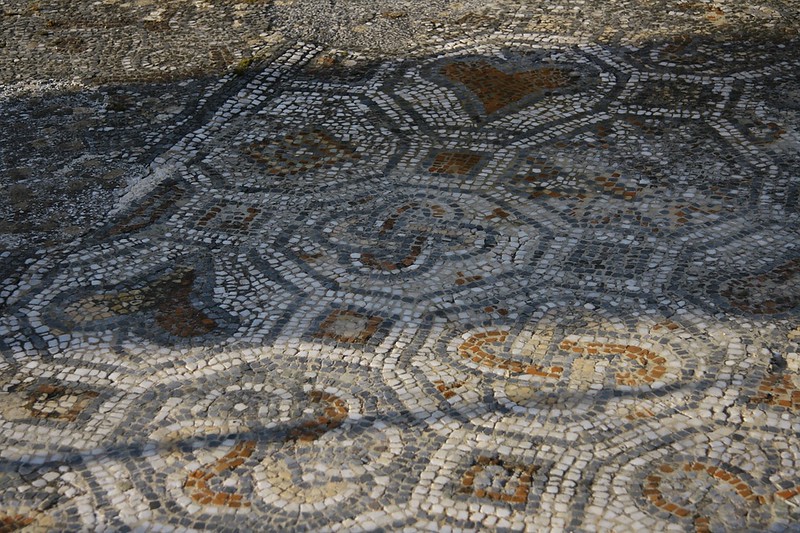
Baths of Varius
The Baths of Varius is a marble complex that was first built around 2nd century AD. It has had several restorations over the centuries which gives this site its unique and varied look.
The baths were built not only for bathing but also for socializing. Built from cut blocks of marble this site is quite extraordinary. There are also mosaics that run 131 feet long in the corridor that date back to 5th century AD.
The baths covered a massive area and what you see today is just a small portion, as excavations have not been fully completed.

Ephesus Museum
Located off the Ephesus site, just across from the Otogar Bus Station in Selcuk is the Ephesus Museum. Any artifact that was dug up between 1867-1905 was taken to the British Museum and those that were found between 1905-1923 were taken to Vienna.
After the founding of the New Turkish Republic, the government forbid any of its relics to be taken out of the country and required that any artifacts formerly taken be returned to Turkey.
In 1964 Ephesus Museum was founded and excavations from the Ephesus site were then proudly displayed in this small but important museum. The museum is open from 8 am – 6:30 pm daily.
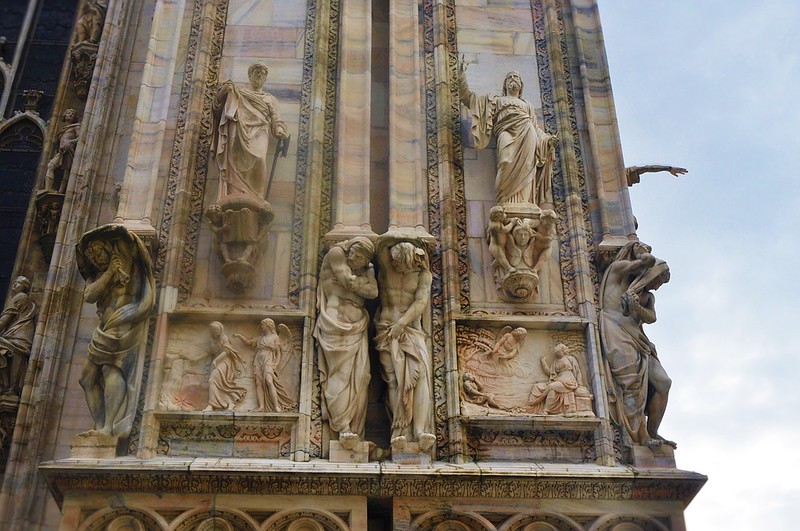
How to Get to Ephesus, Turkey
- By Air: The closest airport to Selcuk is in Izmir, which is approximately 50 miles away. Many flights leave Istanbul each day and only take about an hour and fifteen minutes to Izmir. From the airport, you can either take the train, taxi or shuttle. If you fly from Istanbul with Atlas Jet, they have their own complimentary shuttle service directly to Selcuk.
- By Train: The train station is located directly on the Adnan Menderes Airport grounds and leaves 8 times per day. Although I have not experienced the journey by train myself, I have heard that it can get very busy and you might have to stand for the entire journey.
- By Shuttle: Although not as straightforward as the train, you can also take a shuttle. They can be caught at the Central Bus Station called the Otogar. They are not located directly on the airport grounds but are about a mile away. The vehicle looks like an over-sized minivan and is labeled Selcuk-Ephesus. The journey from the bus station takes about one hour as it will have other stops along the way.
- By Taxi: The most expensive, but straightforward way to get from the airport to Selcuk would be by taxi. It costs approximately 100 TL which is about $18 US.
- By Bus: Traveling by bus through Turkey is incredibly easy. There are plenty of overnight buses that travel to Izmir and finding the perfect connection can be just a click away . Once in Izmir, you can travel to Selcuk the same way as above; by train, shuttle or taxi.

Located just 1 and a half miles from the center of Selcuk, Ephesus is very easy to get to. It is so close that you can even walk to the site from the town center, however, I do warn against doing so as you will be walking through the uncovered site for most of the day.
Instead, the dolmus (shuttle) is available and will drop you off at the lower entrance gate which costs a mere 2 TL.
As of 2019, entrance into Ephesus is 60 TL for adults (approximately $10 US) and children under 12 are free. From April to October the hours are 8 am to 7 pm and during the winter months of November to March the hours are from 8 am to 5 pm.
There are a few additional charges if you want to explore certain sites.
- The Terraced Houses 36 TL (children under 12 are free but it is suggested to bring a copy of the child’s passport for validity)
- The House of Mary 35 TL
- Basilica of St John 18 TL
- Museum of Ephesus 15 TL
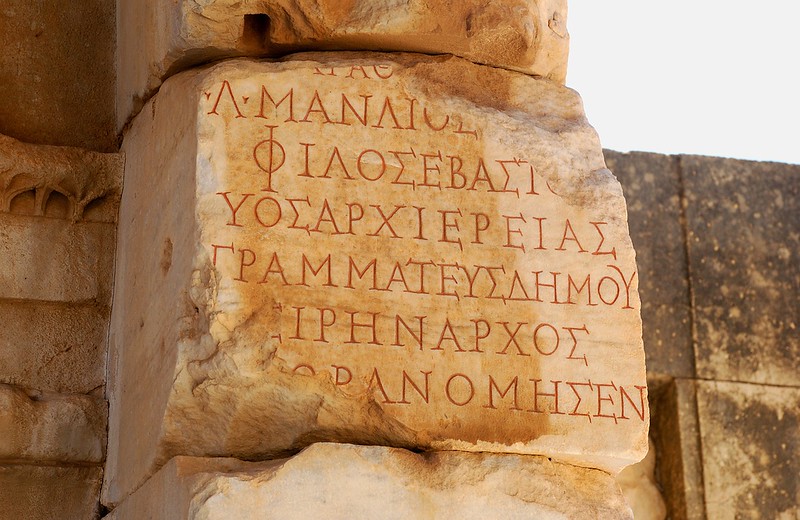
Tips for Visiting Ephesus
My biggest suggestion when visiting Ephesus is to wear a hat, wear sunscreen and bring plenty of water. There is barely any shade throughout the entire city which can make the exploration in the summer months very tiresome.
Planning your visit early in the morning is ideal so that you can avoid the heat of the day as well as the crowds. Ephesus is near the Mediterranean Sea so this is a common stop for cruise ships.
Water is sold throughout the site, however, like most tourist attractions food and drinks are heavily overpriced. Give yourself at least two hours to explore the site and because the footpaths in the city are relatively uneven, wearing a comfortable pair of walking shoes or runners is definitely suggested.
Finally, make sure to stop and take it all in. You truly will be taking a stroll through an important part of history so embrace your surroundings and enjoy every second.
More on Turkey:
- What to Wear in Turkey: Ultimate Turkey Packing List
- 11 Unmissable Things to do in Istanbul
- 9 Reasons to Visit Selcuk Turkey (Including Ephesus!)
- Foolproof Guide to Pamukkale Turkey
- Cappadocia, Turkey: 10 Things to Know Before You Go
- 5 Reasons to Add Cirali, Turkey to Your itinerary
- Dalyan, Turkey: Essential Guide & Best Things to do
Did you like this story? Share it!
Travel planning resources, about heather halpern.
Based in Edmonton, Canada - I caught the ‘travel bug’ many years ago when I was a competitive rhythmic gymnast and haven’t been able to quench the thirst for exploring the world. Even though I live a pretty regular life with a full time job, I aim to take at least one overseas adventure a year. This means, I skimp, save and try to live the happiest life possible throughout the year so that I can experience my one true love…travel!
1 thought on “Ephesus, Turkey: Best Sites to Visit in the Ancient City”
As of 2020, entrance into Ephesus is 100 TL for adults and children under 8 are free.
There are a few additional charges if you want to explore certain sites.
The Terraced Houses 45 TL (children under 8 are free but it is suggested to bring a copy of the child’s passport for validity) The House of Mary 45 TL Basilica of St John 25 TL Museum of Ephesus 25 TL
Leave a Comment Cancel reply

Get a FREE Essential Travel Apps and Websites Checklist!

A Guide to Visiting the Ancient City of Ephesus in Turkey (Türkiye)
One of the most popular places to visit in Turkey (Türkiye) is the ancient city of Ephesus. Located just outside of Selcuk (Selçuk) , this UNESCO World Heritage Site is one of the most complete ancient cities in Europe. In this guide, you can read about everything you’ll possibly need to know before visiting Ephesus in Turkey (Türkiye).
We’ve included information on opening times, entry fees, and the benefits of having a Museum Pass. You can also read about how to get to the site, where to stay, the best times to visit and what to wear. In addition, we’ve also listed some of the highlights of Ephesus that you shouldn’t miss when walking around.
Disclosure: This post may contain affiliate links, which means we may receive a small commission if you click a link and purchase something. Clicking these links won’t cost you anything, but it will help us to keep this site up and running! Learn more about our affiliate policy.
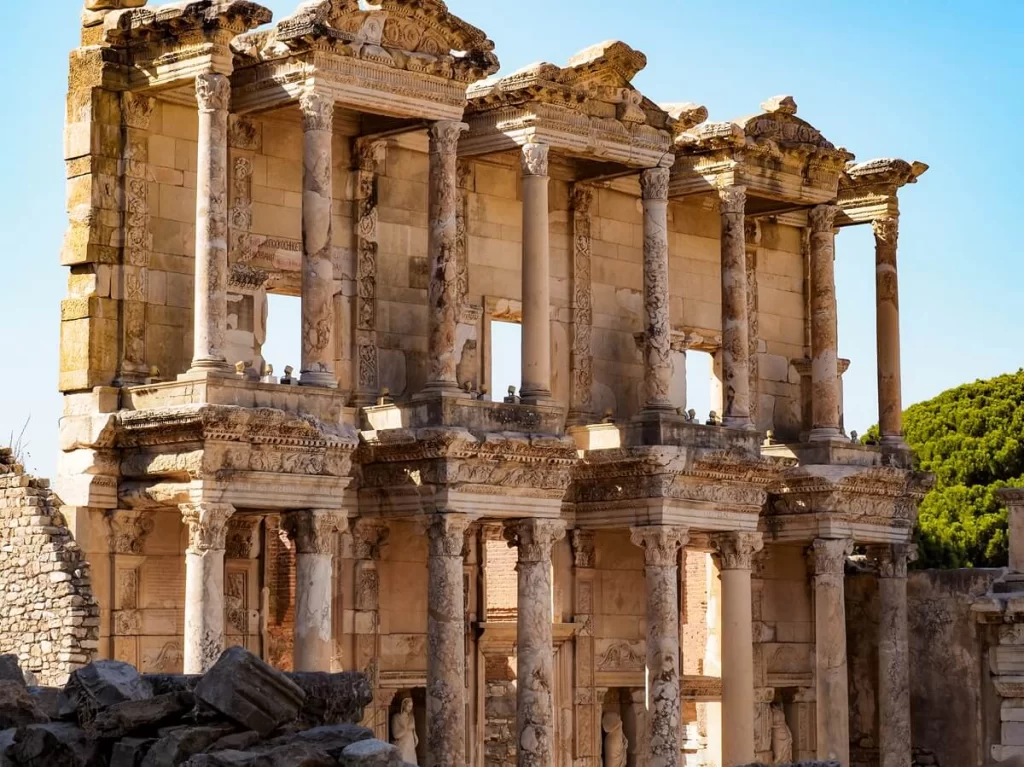
Table of Contents
About the Ancient City of Ephesus
Located about 3 km to the west of Selcuk, Ephesus is probably the most complete ancient city in Europe . It is home to one of the Seven Wonders of the Ancient World: the Temple of Artemis. In addition, Ephesus has also been a UNESCO World Heritage Site since 2015. So it’s no wonder millions of tourists come here every year.
Ephesus was one of the most important ancient Greek cities, and also a major trading center in the Mediterranean. The city survived multiple natural disasters and attacks, changing hands many times over the centuries. For example, it was the second biggest city in the Roman Empire.
Ephesus also played an important role in the spread of Christianity, and today it is a pilgrimage destination. Both Saint Paul and Saint John visited the ancient city, and Mary apparently spent her final years in Ephesus with Saint John.
According to some sources, only about 20% of the site is fully excavated.
Read Next: 2 Days in Selcuk Itinerary, Turkey (Türkiye)
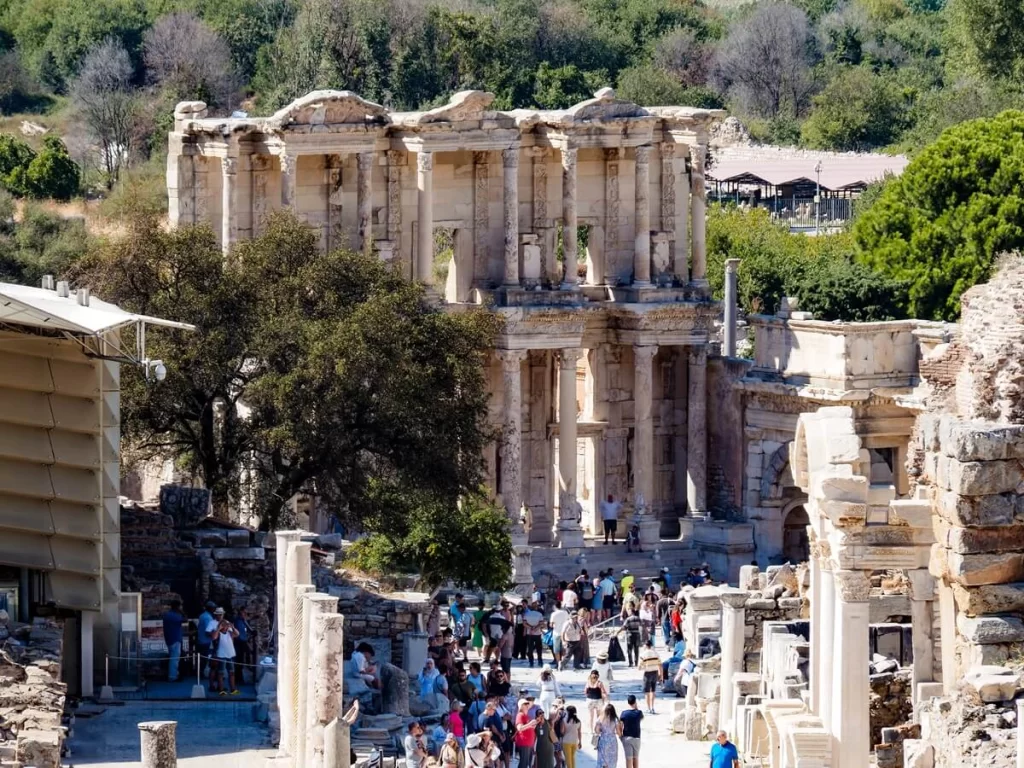
Our Top Travel Resources to Visit Ephesus
- 🛏️ Find your accommodations with Booking.com
- 🎫 Book an organised tour from Selcuk with GetYourGuide
- 🛡️Don’t forget to buy travel insurance via SafetyWing
Things to Know Before Visiting Ephesus in Turkey (Türkiye)
Ephesus guided tour or independent visit.
You can visit Ephesus with or without a guide. If you just want to take a day trip there because you’re on a cruise or short on time, then we recommend joining a guided tour. That way, you don’t need to worry about your transport and you can also learn more about the site.
However, you can totally visit the ancient city on your own. The best way to visit without a guide is to stay at least 2 days in Selcuk , the closest city to Ephesus. From there, you can get to the site for either opening time or later in the afternoon, and enjoy it before the bigger tour groups arrive, or after they’ve already left. Visiting on your own will also allow you to wander around at your own pace, and spend as long or little as you like in certain parts. You can always use the audio guide included with your ticket, which will allow you to learn more about the site without a guide.
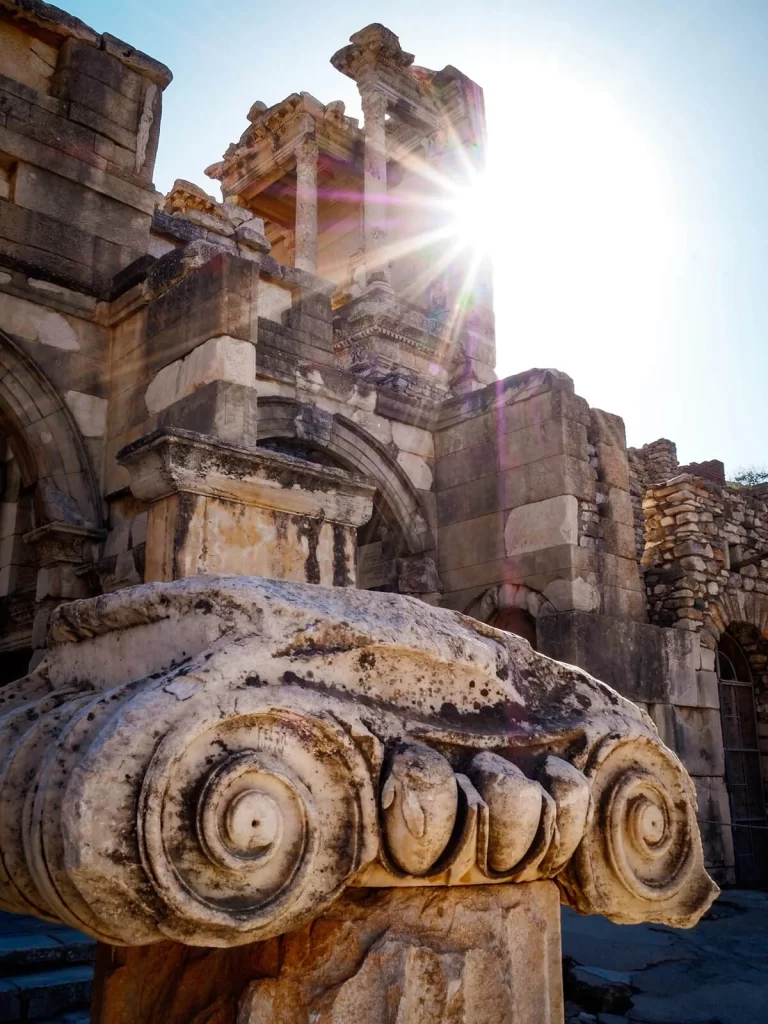
Ephesus Entry Fee and Opening Hours
The site is open every day between 8AM and 6:30PM during the summer months, with slightly shorter opening times in winter.
One single entry to Ephesus is currently 40 EUR. There’s a separate entry fee of 15 EUR for the Terrace Houses. However, you can buy a combined entry ticket to the site and the Terrace Houses for 52 EUR, which we personally recommend. For 65 EUR you can also visit Ephesus Museum and the Basilica of St John in Selcuk. Note that prices are prone to change so always check the official website for more up-to-date information.
Top Tip. If you’re staying in Türkiye for longer, then we recommend getting either the Aegean Museum Pass for 95 EUR or the Türkiye Museum Pass for 165 EUR. It might seem like a lot, but when you add up the individual entry fees from each place you want to visit, it may work out cheaper in the end. You can check out what’s included in these passes here .
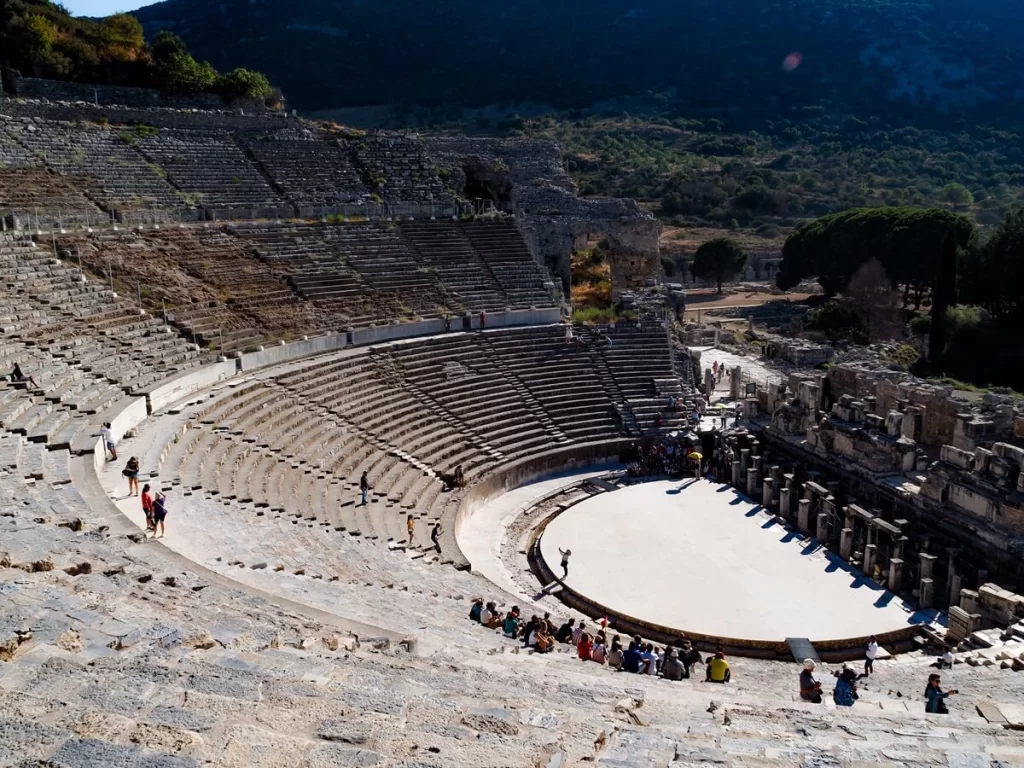
When is the Best Time to Visit Ephesus
You can basically visit Ephesus all year round, however there are better and worse times during the year. The colder months are January and February, whereas the hottest months will be July and August. The latter also coincide with the summer school holidays, which means that the site can get pretty crowded with large tour groups.
If you’d like to have a more pleasant experience, both with the temperature and the crowds, then we recommend visiting in the shoulder season; so either in spring or autumn.
If you’re visiting Ephesus in Turkey during the high-season, then we recommend getting to the site for opening time. That way you can avoid both the crowds and the heat as much as possible. Alternatively, you can also visit later in the afternoon, when a lot of people have left and the temperatures are more bearable.
How to Get to Ephesus
The easiest way to reach Ephesus is from the town of Selcuk. The ancient city is located about 3 km to the west of the town, so you can even walk there if you wish. Alternatively, you can just take a taxi there.
If you’re coming from further afield, then you can get to Izmir by either plane, bus or train first. From there, you can travel to Selcuk by train or bus. If you’re coming from Istanbul, then you can take a direct bus to Selcuk. It’s worth noting that visiting Ephesus independently on a day trip from Istanbul wouldn’t really be possible, so we recommend calculating in at least a nights stay in Selcuk.

Where to Stay When Visiting Ephesus in Turkey (Türkiye)
The ancient city of Ephesus is relatively far from other main tourist destinations in the Aegean region of Türkiye, or along the Turkish Riviera. Therefore, unless you’re visiting via a cruise or are on a day trip from somewhere nearby, we recommend spending around 2 nights in Selcuk .
Although Selcuk is a small town, it offers a good number of accommodation options. It is very walkable, but we suggest staying somewhere close to the centre where most of the attractions are. Plus, that way you won’t need to walk too far to the bus and train stations.
We stayed in Amazon Antique , which is a renovated farm house with a leafy courtyard that also included a great breakfast. The hotel was also very close to the top attractions in Selcuk. You could also check out Anz Guest House , which has a colourful interior, a rooftop terrace with lovely views of the area, and also includes breakfast. There are also many hotels with pools, such as Akanthus Hotel Ephesus , which is a great option if you’re visiting in the hotter months.
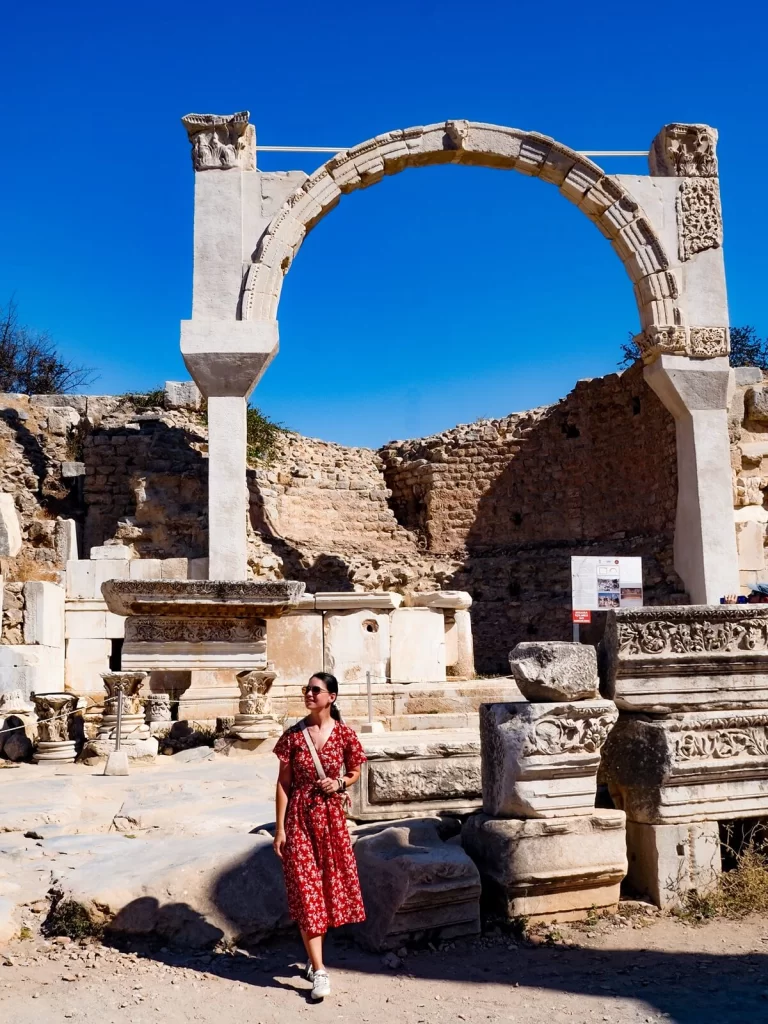
What to Wear When Visiting Ephesus in Turkey (Türkiye)
Depending on which season you’re visiting in, we generally recommend wearing something weather appropriate. Note that there won’t be any shade really, so if you’re there during the height of the summer then you’ll want to make sure you’re wearing sufficient sun protection. Wear something loose-fitting and light to keep you cool, and enough SPF on any exposed skin. Bring a hat and sunglasses for additional protection.
Regardless of when you’re visiting, we highly recommend wearing comfortable shoes. The site is pretty big and you don’t want your feet to be hurting as you explore. The rocks can get pretty slippery too, which is another reason you’d want something with good grip. We saw quite a few people slipping in their flip-flops.
Whilst there are a few food stalls near the entrances, there won’t be much once you’re inside. Therefore, bring plenty of water with you to stay hydrated during your visit. Bringing some snacks might also be a good idea in case you get a bit peckish.
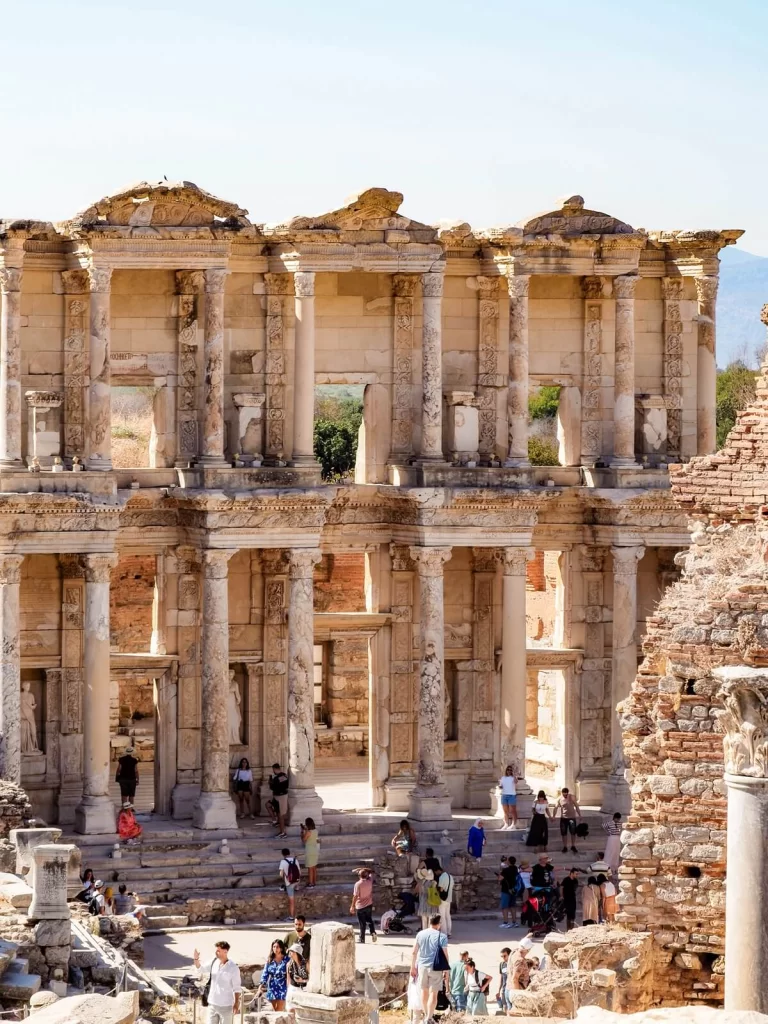
What Not to Miss When Visiting Ephesus in Turkey (Türkiye)
Below we’ve listed some of the main points of interest you shouldn’t miss during your visit to the ancient city of Ephesus. If you’re visiting during the high season, you might want to get to some of these spots early on to beat the crowds. They’re popular for a reason.
Note. There are two gates you can enter the site from. We believe that tour groups normally enter through one and get picked up at the other.
1. Library of Celsus
The most popular, and photographed, spot in Ephesus is the Library of Celsus. This isn’t surprising, since it’s possibly the most stunning structure in the ancient city.
The library was built in the 1st century AD as a tribute to Tiberius Julius Celsus Polemaeanus by his son, Tiberius Julius Aquila. It was the third largest library in the ancient world. The facade has some beautiful carvings and Corinthian columns. You can also see some statues in the niches between the columns symbolizing wisdom (Sophia), knowledge (Episteme), intelligence (Ennoia) and valor (Arete).
Top Tip. If you’re visiting independently, and want to see the library without the crowds, then definitely head here first.
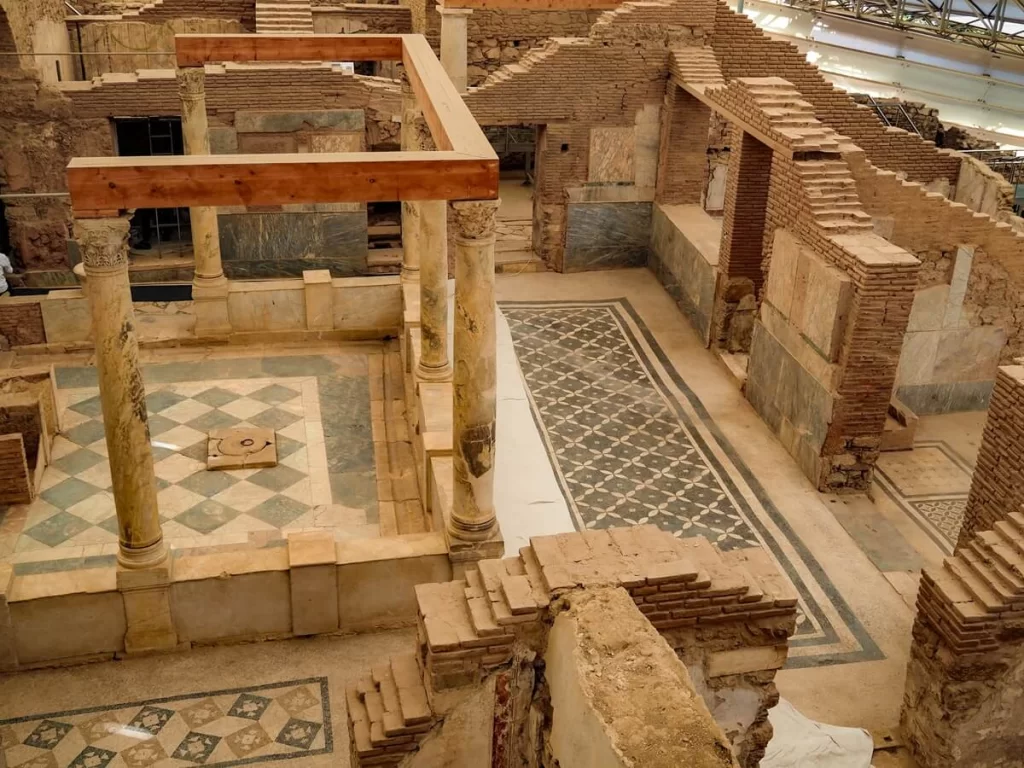
2. Terrace Houses
A must visit area of Ephesus is the Terrace Houses. They were luxurious residential buildings used by the societal elite between the 1st and 7th century AD.
When they were abandoned, a large portion was buried beneath soil. Thanks to this, they have been preserved in remarkable detail, giving us a glimpse into how the wealthy people of Ephesus once lived. As you walk around, you’ll see plenty of beautiful frescoes on the walls and stunning mosaics on the floors.
Note. You can’t visit the Terrace Houses with an Ephesus only ticket. You can buy the combined ticket for 950 TL (28 EUR), or use your Museum Pass.

3. The Great Theater and the Odeon
Another iconic area within Ephesus is the Great Theater . It was built in the 4th century BC as a Greek Theater, which was later converted into a Roman Theatre.
You’ll see that it is massive! It had a capacity of 24,000 people, making it the largest ancient theater in the country. Apparently famous singers such as Elton John, Sting and Madonna have held concerts at this theater. Imagine how cool that would’ve been to attend!
There’s also a much smaller one constructed by the Romans, called Odeon , in Upper Ephesus. It has a capacity of 1,400 people and served as a space for performances, concerts, political meetings, and other social events.
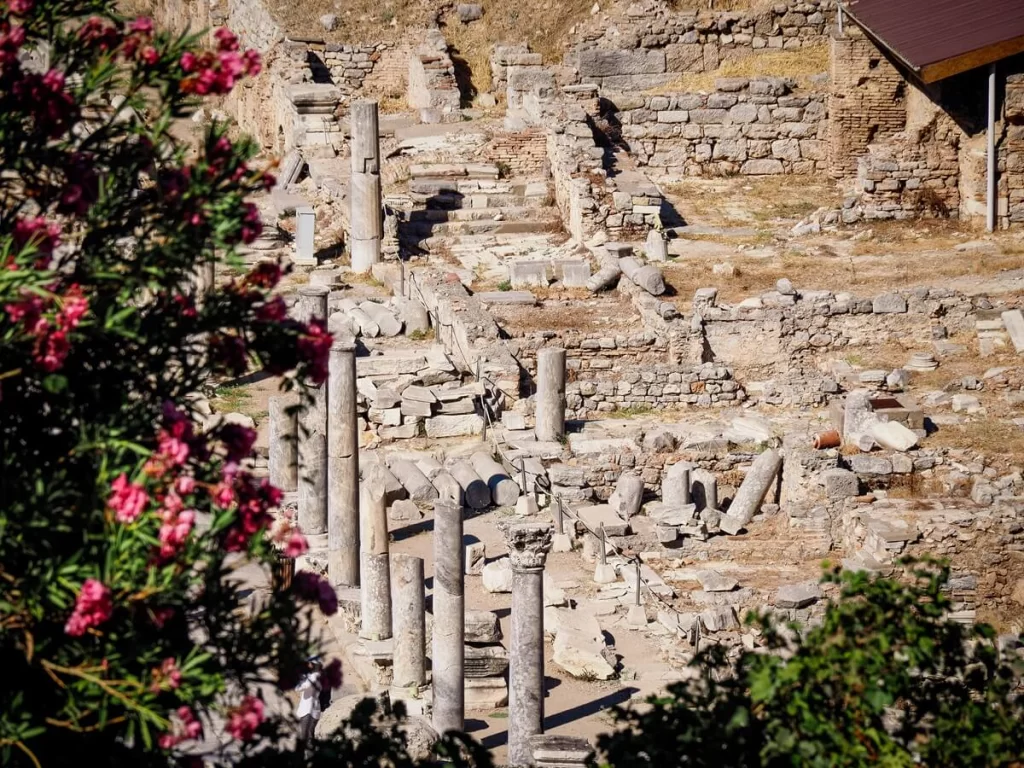
4. Agoras in Ephesus
There are two agoras in Ephesus. The bigger one, called Commercial Agora , is 11,000sqm and is located in Lower Ephesus. It was originally built in the Hellenistic period, and was then expanded in the Roman era. During Roman times, it was open every day.
State Agora is located within Upper Ephesus. The current structure was built in the Roman Period, although there was one here in the Hellenistic period too. It used to be a public area where they also held governmental discussions.
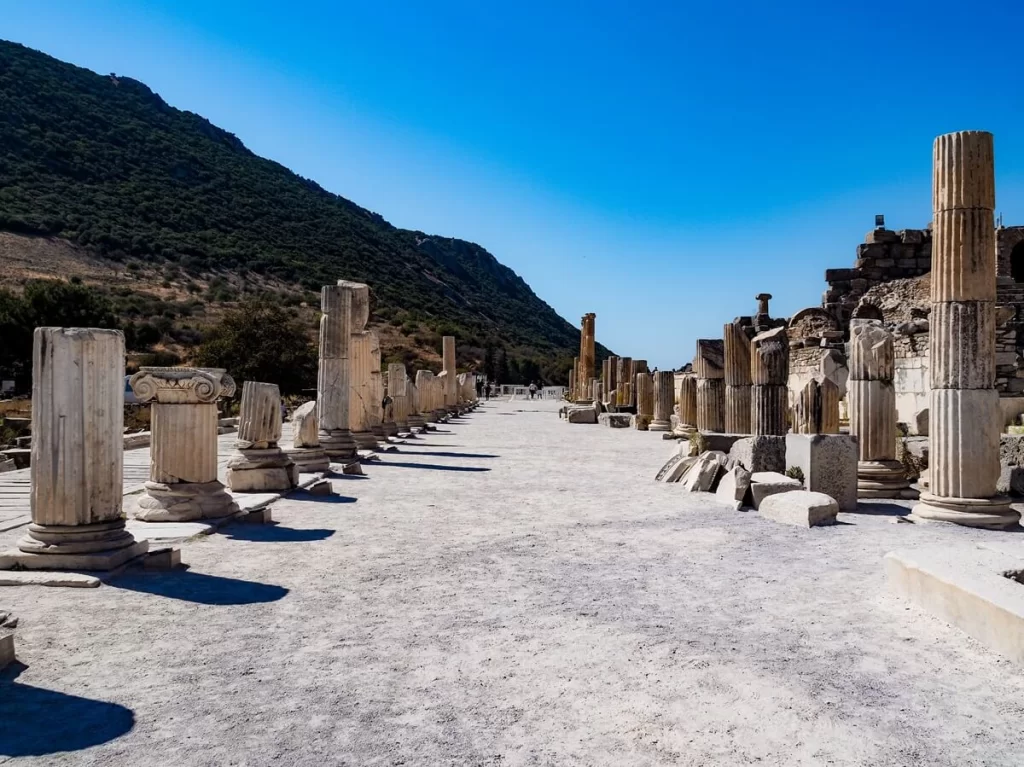
5. Main Streets of Ephesus
There are three main streets in Ephesus which you’ll most likely walk along. One of them is Harbor Street, or Arcadian Street , which starts from the Theater and ends in the harbour. It is about 530m long and 11m wide, and there used to be shops on either side.
The other notable street is called Marble Street . It starts in front of the Library of Celsus, passes the Theatre and goes all the way to the Temple of Artemis. The third street you’ll stroll down is Curetes Street , which connects Upper and Lower Ephesus.
Don’t forget to check out the beautiful mosaic-paved sidewalk located next to the Terrace Houses.
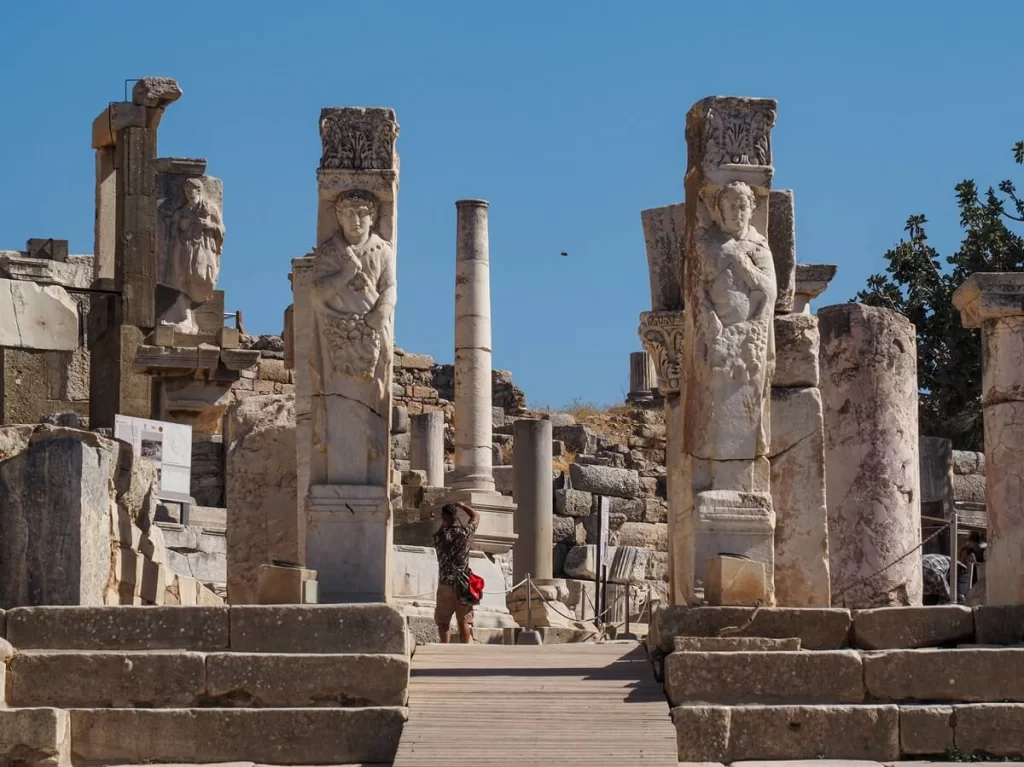
6. Gates in Ephesus
There are a few notable gates you should stop by when walking around. Located right next to Celsus Library is the Gate of Mazeus and Mithridates . This triumphal arch was built in 40 AD by two slaves, Mazeus and Mythridates, in honour of Emperor Augustus, who gave them their freedom.
Another gate you should see is the Hercules Gate , located along Curetes street, which divides the upper city of Ephesus. Its name comes from the reliefs of Hercules that decorate the columns.
Another triumphal arch in Ephesus is Hadrian’s Gate . As you’ve probably guessed, this gate got its name from Emperor Hadrian, who is well-known for building impressive structures such as the Theatre in Hierapolis in Pamukkale , and Hadrian’s Wall in the north of England in the UK .
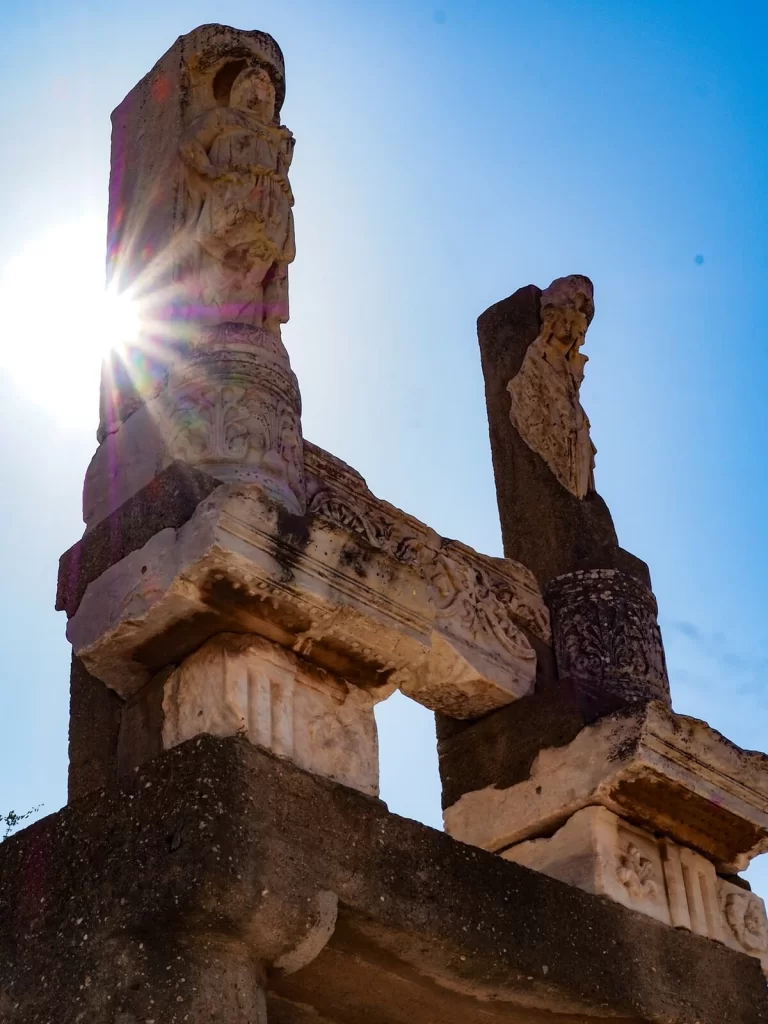
7. Temples of Ephesus
There are also a few temples within Ephesus you should try to see. One of the best preserved is Hadrian’s Temple , built in honour of Emperor Hadrian. Another is the Temple of Domitian , which was constructed in the 1st century AD. It was apparently the biggest temple in the city, however not much of it is left today. There’s also the Temple of Isis , which is an Egyptian temple.
You can see Temenos , located between the Odeon and the Prythaneion, and the Temple of Serapis , which is located in the Commercial Agora.

8. Fountains of Ephesus
As you wander around the site, you’ll notice quite a few remains of beautiful fountains too.
- Trajan Fountain is located next to Hadrian’s Temple, and is one of the most impressive fountains in Ephesus. It is dedicated to Emperor Trajan.
- Fountain of Pollio , located opposite the Temple of Domitian, is dedicated to Pollios Sextiliues, who built the aqueduct that carried water to the fountains of the city.
- Hydreon Fountain is located around Hercules’ Gate. They probably used the water in this fountain to keep the streets clean.
Fancy visiting other ancient cities in Türkiye? If so, then check out some of our other blog posts:
- One Day in the Ancient City of Hierapolis in Pamukkale
- How to Visit the Ancient City of Perge from Antalya
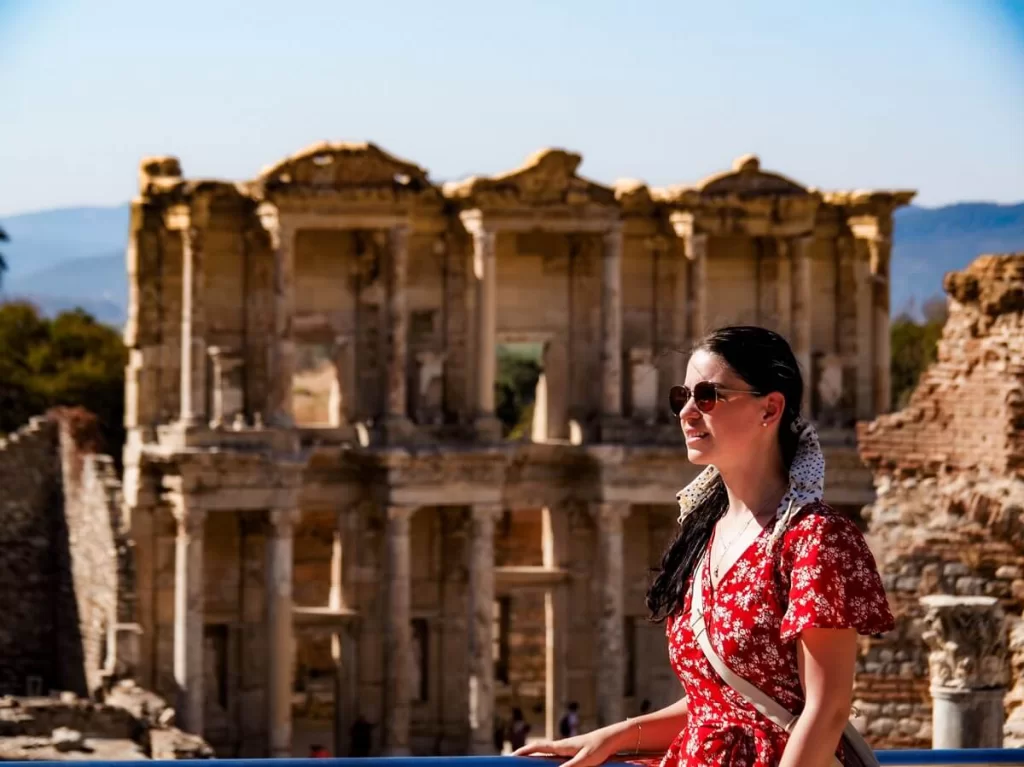
Final Thoughts on Visiting Ephesus in Turkey (Türkiye)
Visiting Ephesus in Turkey (Türkiye) independently, and staying in Selcuk for a few nights, was a great decision. We were so glad that we could enjoy the site later in the afternoon when some of the big tour groups were already leaving. Since we were there at the start of September, the temperatures were still pretty high, so getting there later was a great way to avoid the hottest part of the day. The site itself was very impressive, and it sometimes felt like we’d been transported back in time, especially in the Terrace Houses.
Have you ever been to the ancient city of Ephesus in Turkey before? If so, did you visit on your own or as part of an organised tour? If not, would you visit Ephesus independently? Let us know in the comments below.
Now, let your adventure begin,

Our Top Travel Resources
Accommodation: For hotels we always use Booking.com and Hostelworld for hostels. We also book longer stays on Airbnb or Vrbo.
Flights: To find the best flight prices we always check Skyscanner , Google Flights or WayAway. Then we also check the airlines’ websites too for comparison.
Car Rentals: We use Discover Cars when we want to rent a car as it compares local, national and international companies.
Activities: If we book organised tours we always check either GetYourGuide or Viator.
Foreign Currency: Whenever we can we prefer to pay in local currency and for that we always use our Wise card. We can easily withdraw money from the ATM or pay by card at most shops and restaurants.
Travel Insurance: We never go anywhere without travel insurance. You never know what will happen on your trip, so good travel insurance like SafetyWing can protect you in case of injury, illness, theft and cancellations.
eSIM and VPN: To get data abroad we use Airalo which is an app that allows you to download a prepaid eSIM to your phone in over 190 countries. Make sure to have a VPN to avoid hackers accessing your personal data when using public WIFI. We use Surfshark which is the only VPN that offers one account on unlimited devices.
Remember…It all starts with a Pin…

Similar Posts

Hot Air Balloon Ride in Cappadocia: Is it Worth it?
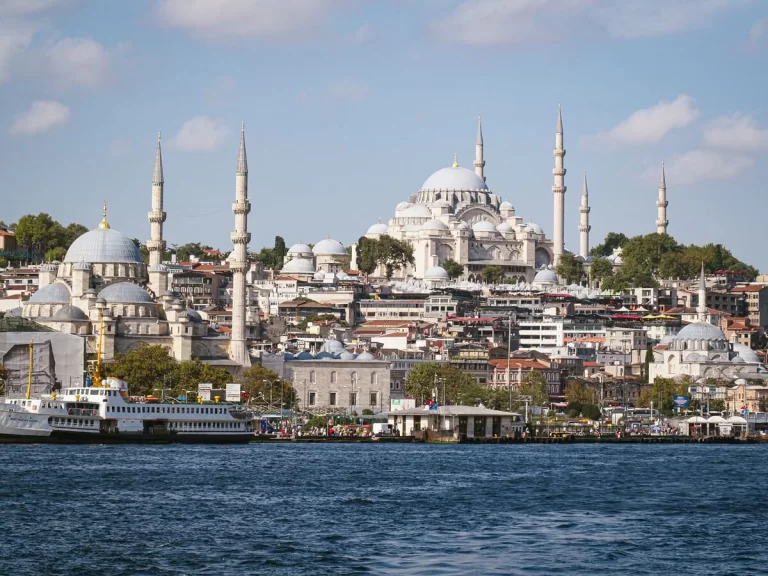
Istanbul Travel Tips for First-Time Visitors, Türkiye
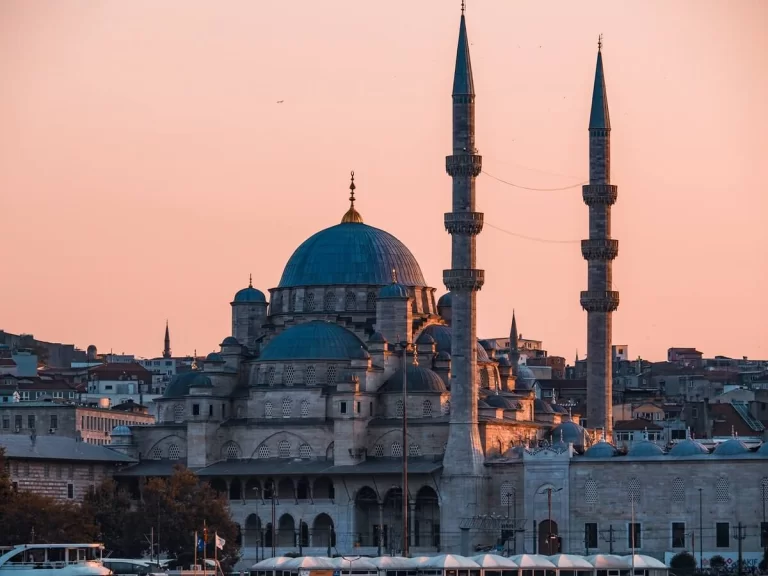
11 Beautiful Mosques to Visit in Istanbul, Türkiye
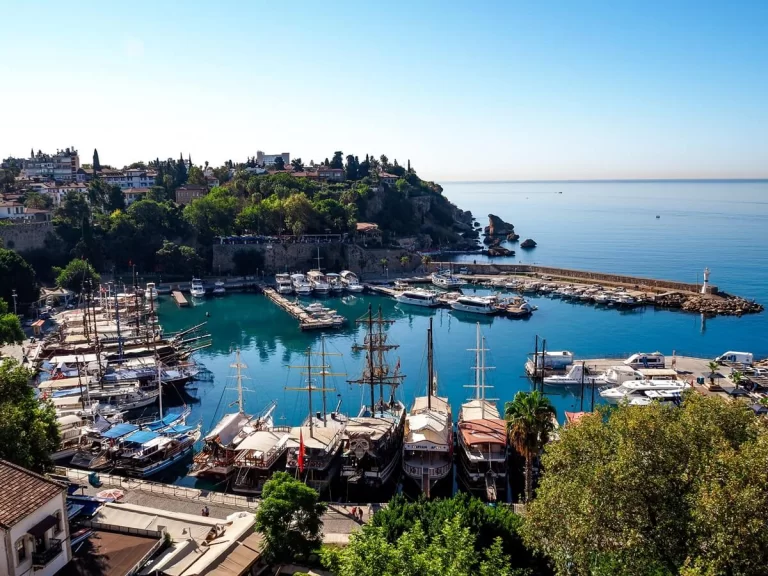
Things to Do in Kaleici, the Old Town of Antalya
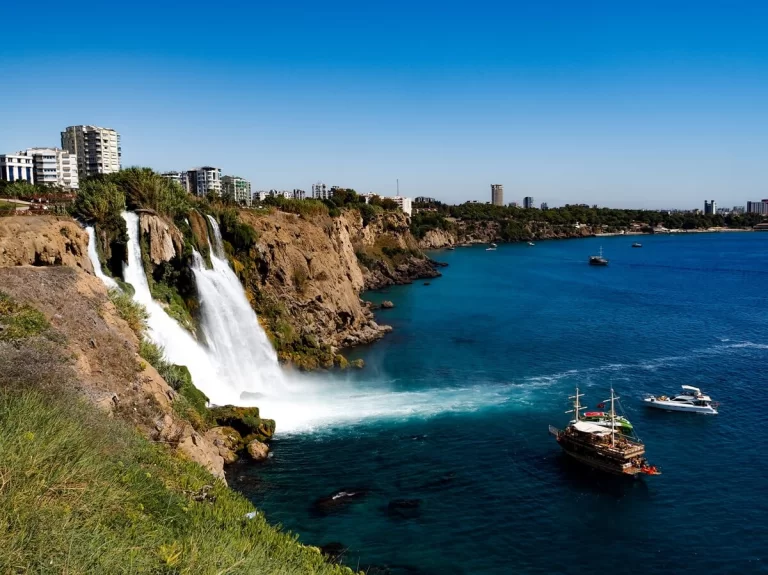
How to Spend 3 Days in Antalya, Turkey (Türkiye)

How to Get to Cappadocia in Turkey (Türkiye)
Leave a reply cancel reply.
Your email address will not be published. Required fields are marked *

- +90 505 541 34 75
- [email protected]

- Top 10 Things to do in Ephesus
Ephesus region and its environs are the second most visited destination of Turkey. Thanks to the ancient city of Ephesus and the House of The Virgin Mary, millions of tourists from land and sea come to see what Ephesus region has for them. Ephesus is just an hour drive away from Izmir Adnan Menderes Airport and 25 minutes from Kusadasi port which are making it very easy to access to Ephesus even for a day trip from Istanbul. Especially cruise companies have Ephesus in their Greek island trips and they bring thousands of tourists every year besides the big tour operators. Even though there are millions wandering in the area every year, I would like to make some suggestions to beat the crowds especially in the ancient city of Ephesus and other tourist attractions around so you can explore the region easily and comfortably. Here is my list of top ten things to do in Ephesus.
Explore the ancient city of Ephesus
But from the opposite direction. There are two main gates of Ephesus ancient city and one is mainly used to exit by almost all the big tour buses who rush to the house of The Virgin Mary in the morning. So you start from the opposite direction from the lower gate of Ephesus and it is highly recommended to be there at 7:50 sharp to get your tickets and enter the ancient city at the exact time of opening: 8:00 am. Don't forget to purchase tickets for the Terrace houses section as well which houses beautiful mosaics of the rich society of Ephesus. Start walking to the harbor street and continue to the Theater of Ephesus before walking above the harbor agora. Don't miss the first advertisement of the world in the middle of this marble street and explore the Library of Celsus and the gates opening to the harbor agora nearby. The Terrace houses is located nearby the library and beat the line with the pre-purchased tickets you have bought earlier. Take the aerial pictures of the marshes stretching to the Aegean Sea and half of the ancient city before visiting the latrines (toilets) right across the entrance of the terrace houses. Walk up the marble street and take pictures of the Temple of Hadrian and The Fountain of Trajan before reaching to the Gate of Hercules. Make photos like all the other tourists do in the middle of the gate and see the holy sanctuary of Domitian before walking around the city Agora and the Odeon. Take a break by the museum shop and refill your batteries before visiting the House of The Virgin Mary.

See the Terrace Houses
Terrace houses complex was unearthed in 1962 and since then is the jewel of the whole ancient city. It is reflecting the extravagant lives of the rich of Ephesus ancient city . The floors are all covered by mosaics and the walls are painted showing the artistic taste of the prosperous dwellers of Ephesus. The rich even had their own street separated from the lower class by some columns which were enabling the rich housewives of Ephesians to shop in the select boutiques places underneath the terrace houses. The colorful marbles of the region is seen on the walls and floors of the houses as well and the biggest puzzle of the world is still being solved by the interns of Austrian Archaeological Institute. When you complete your tour in the Terrace Houses, don't miss the latrines right across the structure where the rich sent their slaves to warm up the marble before they relaxed.

Visit the House of The Virgin Mary
The house of The Virgin Mary is located 4 kilometers away on top of the Bulbul Mountain overlooking Ephesus , Selcuk and the Aegean Sea. Thanks to the visions of Anne Catherine Emmerich, the shrine was discovered by priests from nearby Izmir city who were inspired by the book of Clemens Brentano who met with Anne Catherine and published her visions. With the visit of Pope Leo XIII in 1896, the shrine caught international attention and was blessed as a pilgrimage place to the Christians who believed Saint John the Evangelist brought the mother of Jesus to here and she spent her life here until her dormition or assumption. Pope Benedict XVI has visited the shrine as well in 2006 contributing to the international appreciation of the house. Today, the shrine is important both for the Christians and Muslims since The Virgin Mary is stated in the Holy Quran. You can beat the crowds if you go there close to the lunch time since buses flock the shrine in the morning.

Visit the Selcuk Museum
You are driving through the Selcuk town when you are exploring the area of Ephesus and there is a recently renovated Archaeology Museum in Selcuk exhibiting most of the artifacts found during the excavations of Ephesus since 1860s. You can see the artifacts of Ephesus in Vienna and in British Museum as well but it is best to visit the Museum of Selcuk in the same day after visiting the ruins to complete your Ephesus tour. You are also able to get comprehensive information of the Mother God cult of Anatolia which was very powerful in Anatolia until the holy religions. The Marble statues of Artemis is phenomenal as wall as the many other finds of the huge ancient city's more than a century excavations. Take a walk to the Turkish Bath behind the Museum as well after cooling down underneath the powerful air conditioning of the museum.
See the Cathedral of Saint John
After bringing the mother of Jesus to Ephesus , Saint John the Baptist stayed in the area and continued to deliver the words of Jesus Christ. A Cathedral was built on behalf of him in Selcuk town by the castle and he was buried in the same place as well. There are beautiful views of the Ephesus plains all the way down to the Aegean Waters from the terraces of the Cathedral and you can see the condition of those plains during the Roman and Hellenistic times. The Ephesus we visit today was located by the water which is some 8 kilometers away now. It also offers nice photo opportunities of the Selcuk Castle and it is recommended to walk down to the Isabey Mosque which is located a stone throw away from the Cathedral.
Picture the Temple of Artemis
There are seven wonders in the world today and two of them are located in Turkey. One is the Mausoleum of Halicarnassus of Bodrum and the other one is the Temple of Artemis which is nearby Ephesus . It was 115 meters long and 46 meters wide with two rows of columns 13 meters tall. It was a gorgeous structure of her time and was showing the respect of the Ephesians to their patron goddess Artemis. In 356, Herostratus set the wood roof of the temple on fire for fame but his name was prohibited after his execution in Ephesus. Theopompus later credit his name and the expression 'Herostratic Fame' developed. Nothing but a single column is seen today but when you consider that the temple had more than 127 columns, you are able to imagine the size of the great structure. Below is a picture taken from the west of the temple and the castle of Selcuk, Isabey Mosque and the Cathedral of Saint John is seen behind the single column of The Temple of Artemis.

See the Isabey Mosque
The Isabey Mosque is constructed in the 14th Century and a great example to the Turkish Anatolian Beylik architecture. Most of the stones of the mosque was recycled from the surrounding ruins and you can see the inspiration of the Turkish architects from the Syrian architecture since the mosque is similar to the Great Mosque of Damascus. Had two minarets in the past but only one's half is seen today just over the entrance of the mosque. It is built asymmetrically resulting in different diameters of domes. There are beautiful tiles to see in the domes and the garden is full of flowers in the summer and spring. Park your car around the Cathedral and walk to the mosque and the Selcuk Museum for a nice afternoon.
Eat at Bizim Ev Restaurant
On the way to Sirince Village from Selcuk town, there is a beautiful restaurant named Bizim Ev. It is an open buffet restaurant which will make you forget everything you know about the open buffet restaurants of the world. The Aegean kitchen is very green and vegetables with olive oil are deliciously served in this modest family run restaurant in a gentle way. The owner Mrs. Hatice's beautiful recipes were published by her daughter living in United States which is available in the restaurant and in amazon.com After enjoying your Turkish coffee in the shaded garden with delicous semolina dessert, it is time to continue your journey in the old Greek village Sirince.
Watch the Sunset in Kusadasi
Kusadasi town is just 25 minutes away from Selcuk town and is a bustling tourist destination to the tourists of the area. Every year, thousands of tourists use the harbor to reach Ephesus after their cruises in the Greek Islands and you can easily catch a ferry to Samos island and combine your Turkey trip with the Greek Islands. The center of the city is full of nice restaurants and cafes with stunning views of the Turquoise waters of the Aegean Sea. I highly recommend you to finish your day watching the sun going down over the ocean with your loved ones and a cold beverage. There are many 5 star waterfront hotels in Kusadasi that are serving all year around and you can use them as an alternative to Sirince Village which I recommend over Kusadasi town.

Stay in Sirince Village
15 minute uphill drive from Selcuk, you will arrive to Sirince village which was an old Greek Village. Beautiful old stone and wooden houses are slowly converted to boutique hotels today which are hosting many tourists during the course of the year. Many hoteliers of the village inspired the small hotel owners of Turkey today and converted the village to a bustling culture vulture hot spot around Ephesus . Small restaurants are serving nice breakfasts and local wineries are producing very interesting sweet and fruit wines to the tourists that you can do multiple wine tastings during your walk in the cobbled stone streets of the village. If you are traveling with a small group or with one companion, a stay in a boutique in the village is highly recommended since you can rest after a long day in Ephesus and its environs.
------------------------------------
Would you like us to tailor you a private itinerary, including Ephesus Ruins? Benefit from our expertise. We offer tailor-made tours to Turkey for all interests and desires, from romantic honeymoons and scenic self-drive road trips to photo tours with experienced photographers and cultural tours in major destinations. We arrange everything for your Turkey Tours , including hotel bookings, airport transfers, guided tours, and top-notch experiences. We want you to have a great time in Turkey and make sure your trip is a memorable one as we have escorted so many tours in Turkey personally. Imagine dealing with only one person for all your travel details, receiving customized itineraries and recommendations which will suit exactly your travel interests. Contact Turkey Tour Organizer to get a personalized day by day itinerary for your trip to Turkey.
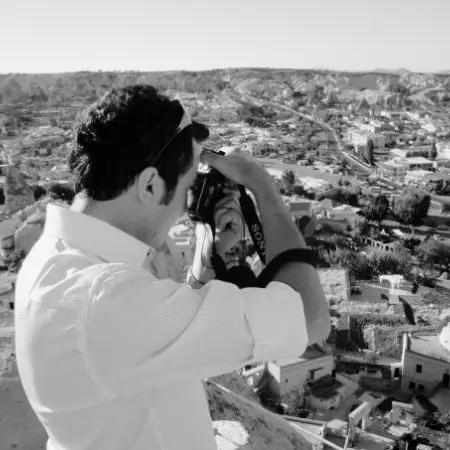
Erkan Dülger
Erkan Dulger, a seasoned expert in the travel and tourism sector, has devoted more than 17 years of his life to planning wonderful journeys for people all over the world. Erkan has made a great career as a travel consultant and prosperous business owner. He was born with a deep enthusiasm for exploration and a desire to introduce people to beautiful places.
Erkan traveled to the United States in search of knowledge and practical experience, where he spent four years honing his craft while working at various hotels. He was able to better comprehend the complexities of the travel industry as well as the various demands and expectations of travelers thanks to this priceless experience.
Erkan had always dreamed of starting his own travel business, one that would reflect his passion for crafting extraordinary travel experiences. Erkan founded his own travel company in 2015 after realizing his dream via intense determination and strong faith in his abilities.
Frequently Asked Questions

Visiting Ephesus In Selcuk: Crucial Tips For Travelers
Co-Founder of The Turkey Traveler. Globetrotter, Adventurer, and Frequent Traveler to Turkey!
This website uses affiliate links. For more information, click here .
No trip to Turkey is complete without a visit to Ephesus, one of the most famous archaeological sites in the country and a present-day UNESCO World Heritage Site.
But like all famous landmarks in Turkey , visiting Ephesus is more than just showing up, buying a ticket and visiting the attraction.
There are many things you have to prepare and plan in order to have the best experience possible at one of the most important cities in the ancient world.
That is why we have written this article on the ruins of the Ephesus Archaeological site, so you can enjoy this historical Turkey attraction and experience it better than the average tourist!
History of Ephesus
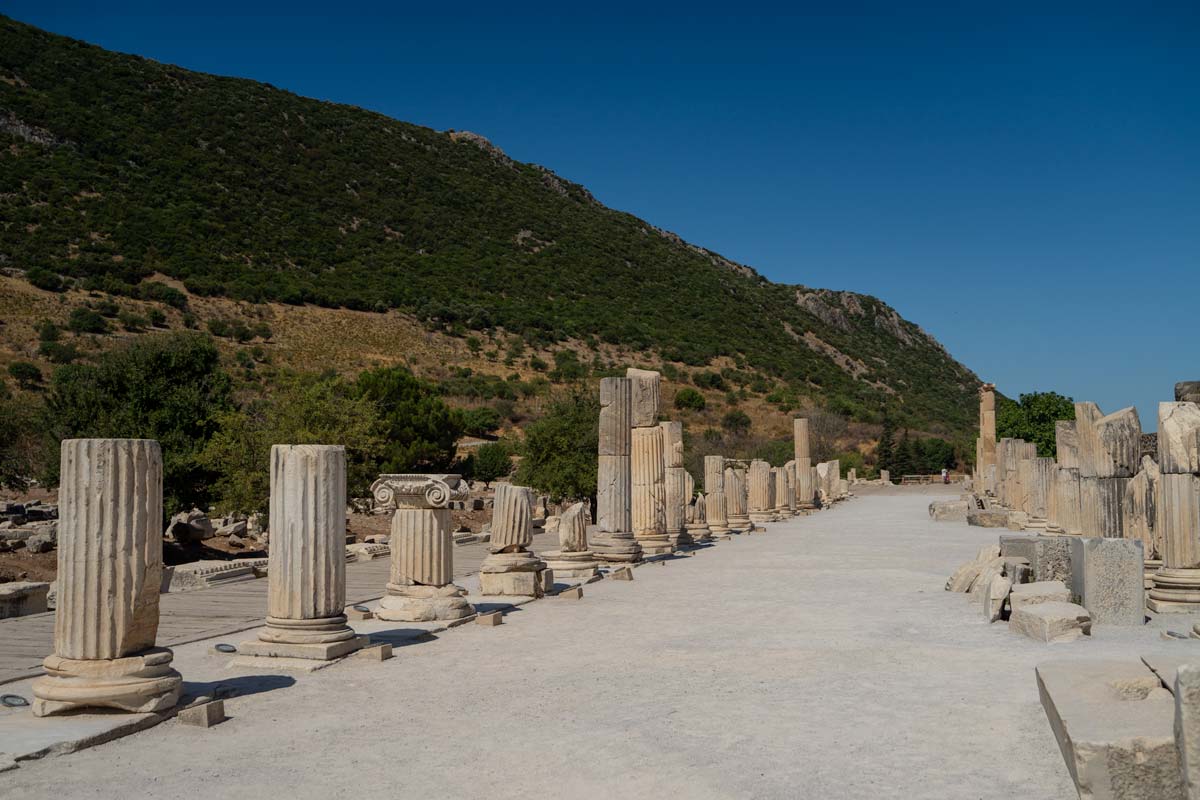
Before we jump into the logistics of visiting Ephesus, let’s talk about the history of Ephesus. Knowing the history of the site can greatly enhance your experience, especially if you choose not to take a guided tour. Information can be quite limited inside the archaeological site.
According to the legends, The ancient city of Ephesus is believed to have been founded by Ionian Greeks in the 10th century BC.
For much of its history, the city was an important trading port and strategic center. It was once considered the most important Greek City and the most important trading center in the Mediterranean Region.
During its heyday, many of the world’s best monuments were built in Ephesus, including the Temple of Artemis, which is one of the seven Wonders of the Ancient World. It was estimated to be four times bigger than the Parthenon in Athens.
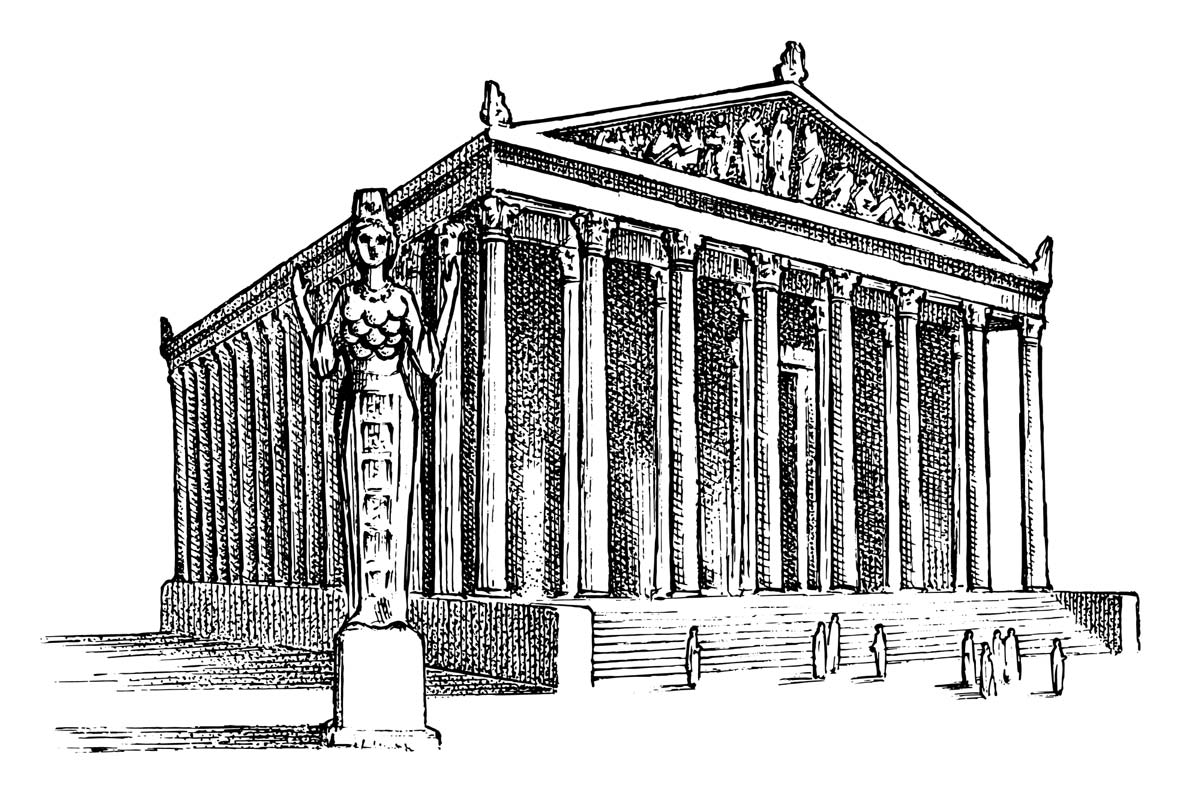
Ephesus was able to become such as wealthy city due to its unique geographical location. It was once where the Aegean Sea met the River Kaystros. However, the River Kaystros eventually dried out, and Ephesus was no longer a busy trading port.
And during that time, the Byzantine Era, Constantine the Great made Constantinople (present-day Istanbul) the capital of the Roman Eastern Empire, which left Ephesus very vulnerable.
The last straw was a devastating earthquake in the sixth and seventh centuries that left much of the places in ruins. Along with the Arab invasion, many of its residents relocated to somewhere safer, and Ephesus has been left to ruins since then.
But during its long history, Ephesus was home to many important figures, such as Virgin Mary and St, John. The city is even mentioned in the New Testament.
Today Ephesus serves primarily as an archaeological site although some remains can still be seen amongst all that remains from this once-great ancient civilization.
Ephesus Entrance Fee
The entrance fee for Ephesus Archaeological Site is 700 TL, or around 25 USD. This is solely the cost to enter the site and does not include the price of a guided tour or an audio guide, which you can get by paying extra.
You have to pay an additional fee to enter the House of Mary, which is around $7 USD. While the main site of Ephesus is included in the Museum Pass, the House of Mary is not.
The St. John’s Basilica costs around $4.60 USD, the Terrace Houses costs $11.40 USD and the Ephesus Archaeological Museums costs around $8 USD.
📖 Note: Ticket prices often change due to the fluctuating price of the Turkish Lira, so the prices listed are just an estimate based on the prices in October 2023.
Ephesus Opening Hours
The opening hours of Ephesus vary by season. During the winter months, the main site of Ephesus is open from 8.00 AM to 6:30 PM daily.
During the summer months, Ephesus is open from 8.00 AM to 8.00 PM daily. Keep in mind that the ticket office closes 30 minutes before closing.
For the House of Virgin Mary , the hours are as follows. From November – February, 8.00 AM – 5.00 PM, from March – October, 8.00 AM – 6.00 PM
What To See In Ephesus Archaeological Site
Ephesus was once an important city, so the archaeological site you see today is quite big. Visitors typically do see most of the main attractions on the site just by strolling around, but you might miss some if you are not thorough.
Here are some of the most important landmarks in Ephesus:
1. Library of Celsus
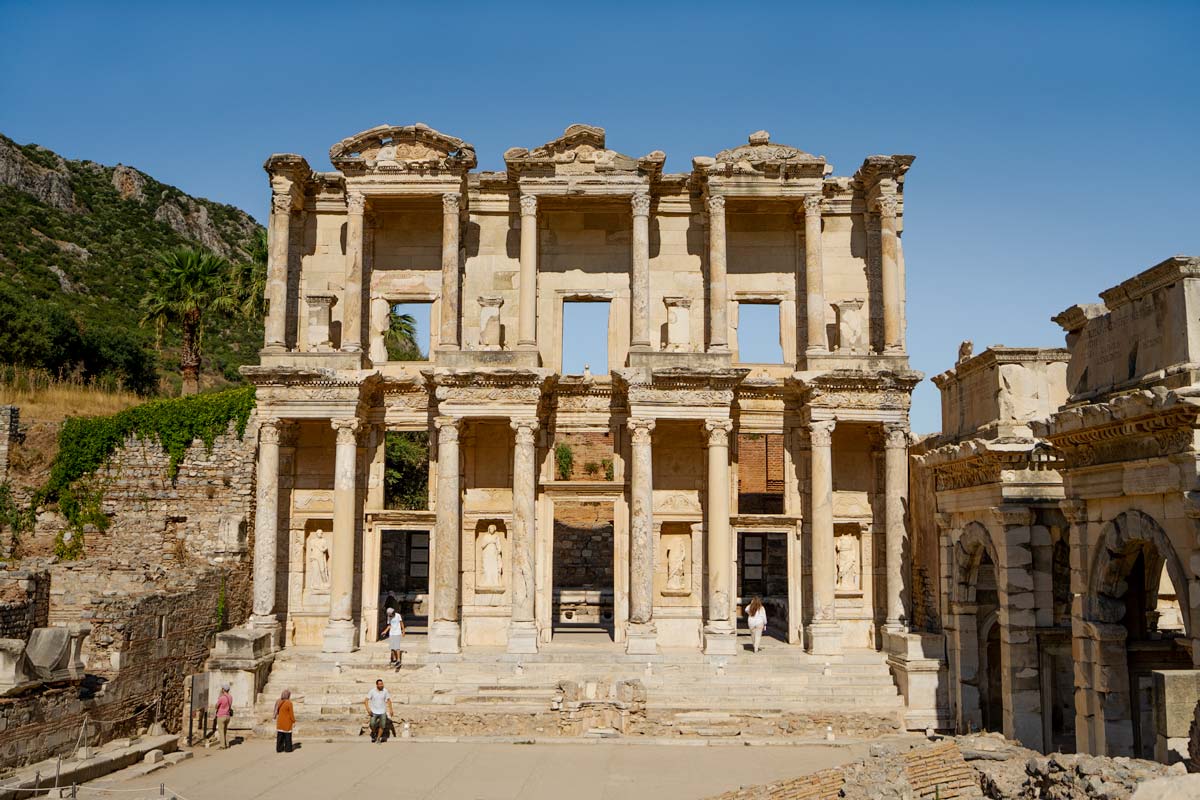
The most famous attraction in Ephesus is undoubtedly the Library of Celsus. It is one of the largest and most beautiful libraries in Ancient Greece and is often used as the advertising photo for Ephesus.
Built from 114-117 AD as a monumental tomb for Roman Senator Tiberius Julius Celsus Polemaeanus, the Library of Celsus once contained up to 12000 scrolls and included works by authors such as Homer, Plato, Aristotle, and more.
The only part of the Library of Celsus that remains is its three-story facade. Visitors can still see the gorgeous Corinthian columns. But the reading room decorated with marble statues and wall paintings on the upper floors is no longer visible.
Even with just the facade of the building, visitors can appreciate the stunning architecture and engineering of the Roman Empire.
2. Temple of Artemis
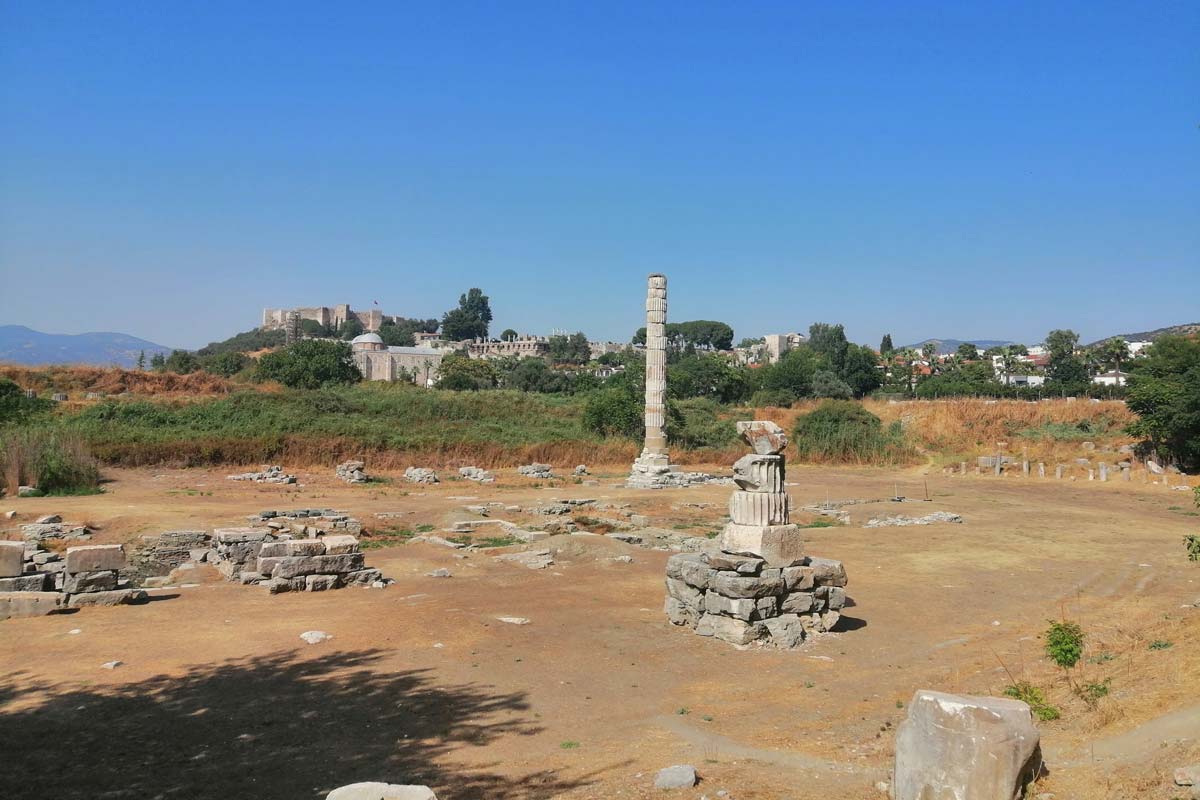
The Temple of Artemis is one of the seven Wonders of the Ancient World. Unfortunately, not much of the building remains today, but you can still get a sense of how impressive this structure must have been.
It is also known as the temple of Diana and was built to honor Artemis, the Greek Goddess of hunting, chastity, and childbirth.
Note that the Temple of Artemis is not in the main complex, but about 3 km (1.86 mi) away from the archaeological site. Visitors can also go from Selcuk, which is only a short walk away from the Temple.
3. Curetes Street
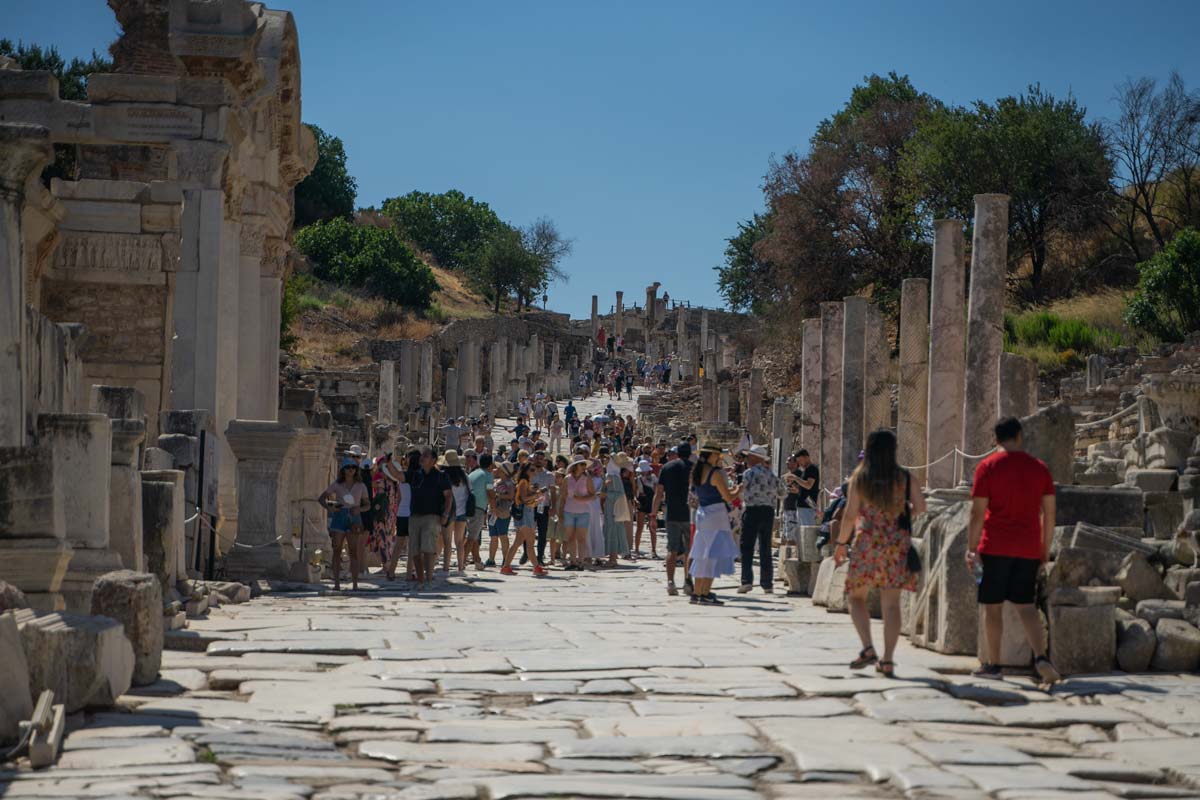
Curetes Street is the main street in Ephesus and goes from Hercules Gate to the Library of Celsus. It was once a bustling trading hub and its cobblestone pavement can still be seen today. The street is lined with columns, statues, shops and other monuments that you can explore as you walk through this ancient city.
4. Terraced Houses
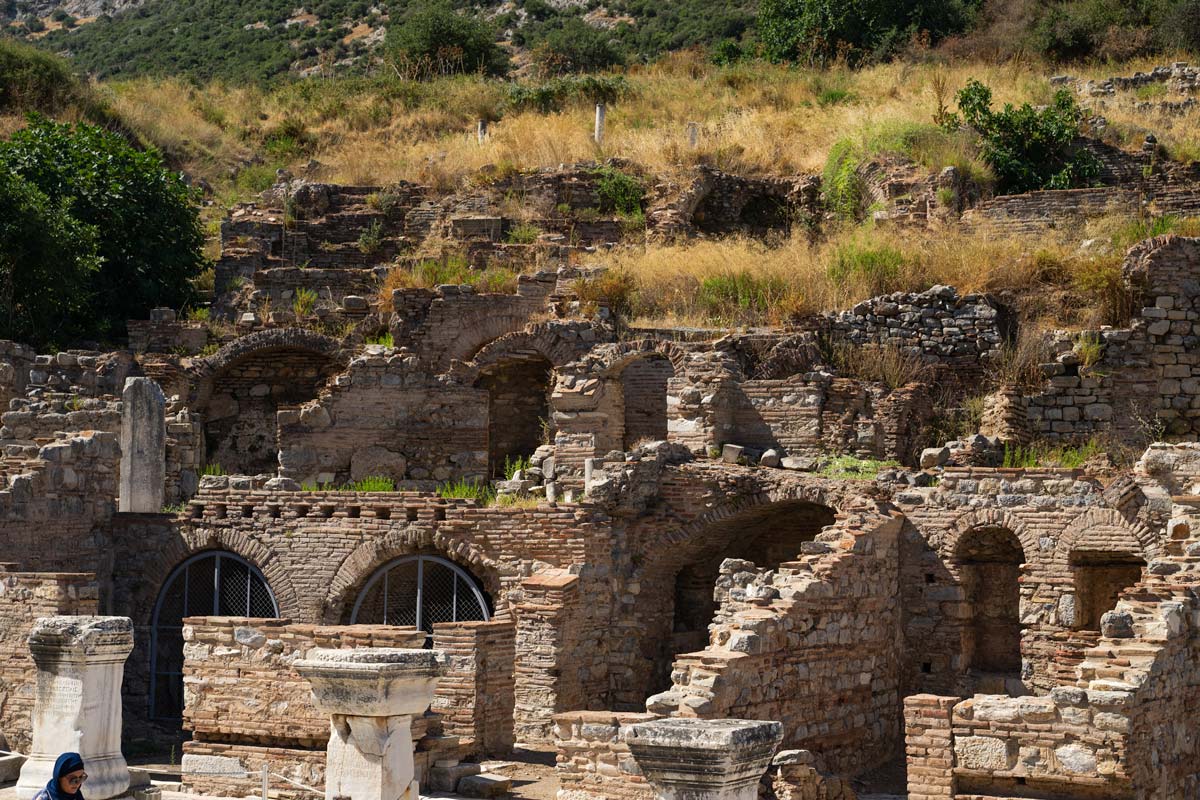
These are houses that were located next to Curetes Street and opposite Hadrian Gate. It is believed that the wealthy and influential people of Ephesus used to live in these houses. These houses are most notable for their intricate floor mosaics, frescoes, and wall paintings.
Note that the Terraced Houses have their own separate admission fee.
5. Ephesus Ancient Greek Theatre
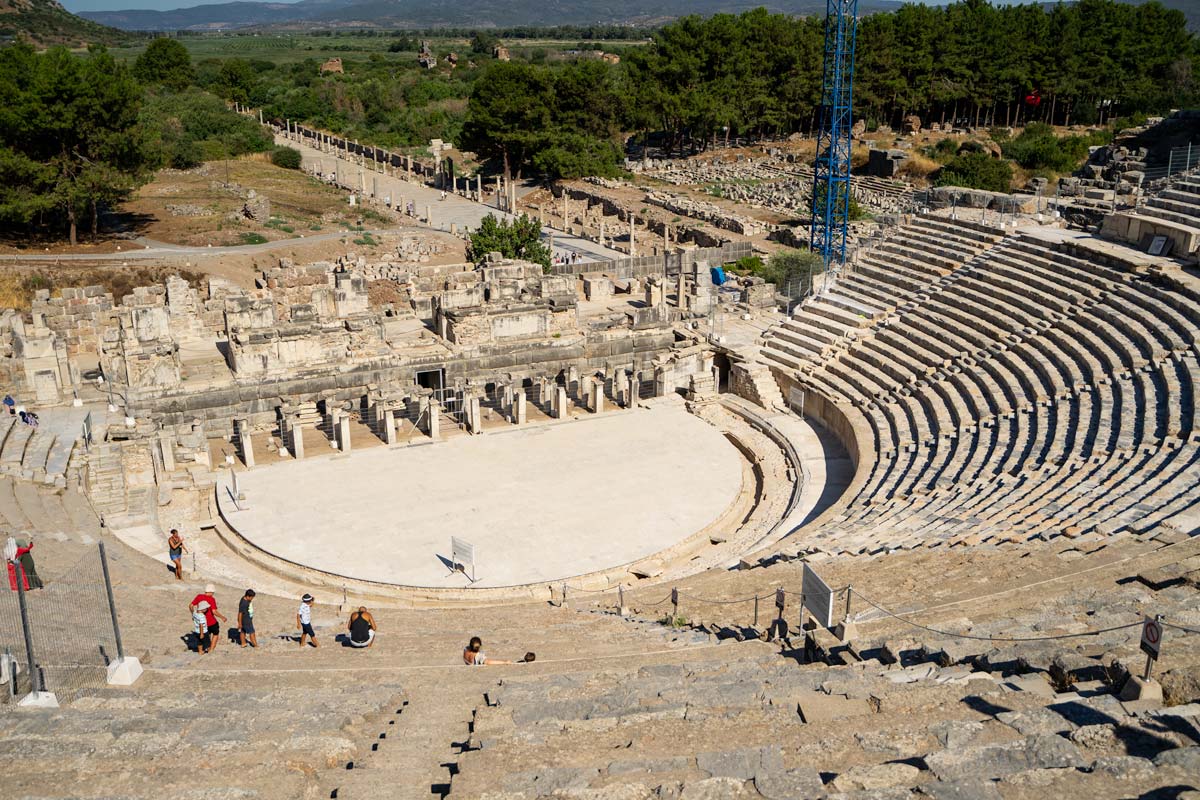
Built in the first century AD, the Ancient Greek Theatre is the oldest and largest theatre in Ephesus. It once held up to 25,000 people and was used for plays, music concerts, religious ceremonies and more.
It was the biggest theatre in Anatolia, and is now one of the most recognizable landmarks in Ephesus.
6. The Odeon Theatre
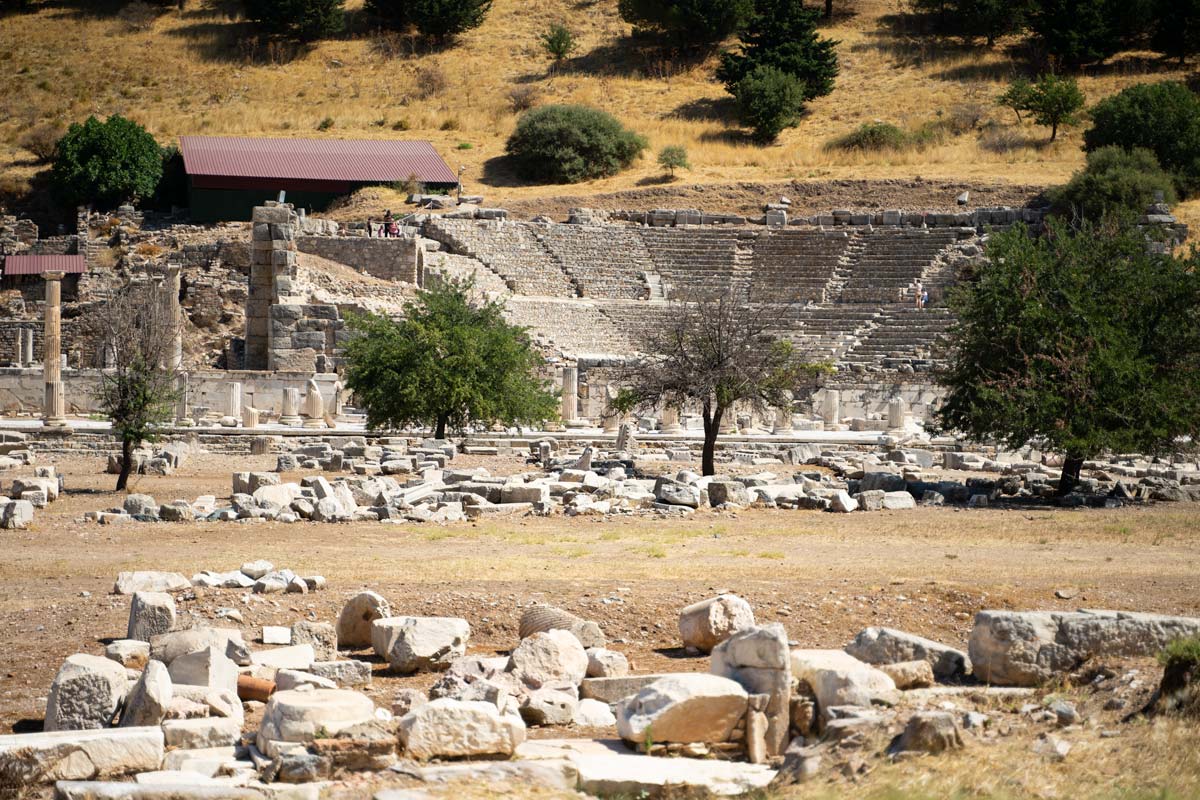
The Odeon Theatre is a smaller and slightly younger theatre than the Ancient Greek Theatre, but no less impressive. It was built in the second century AD and was used for political meetings, social gatherings, concerts and theatrical performances.
7. Temple of Hadrian
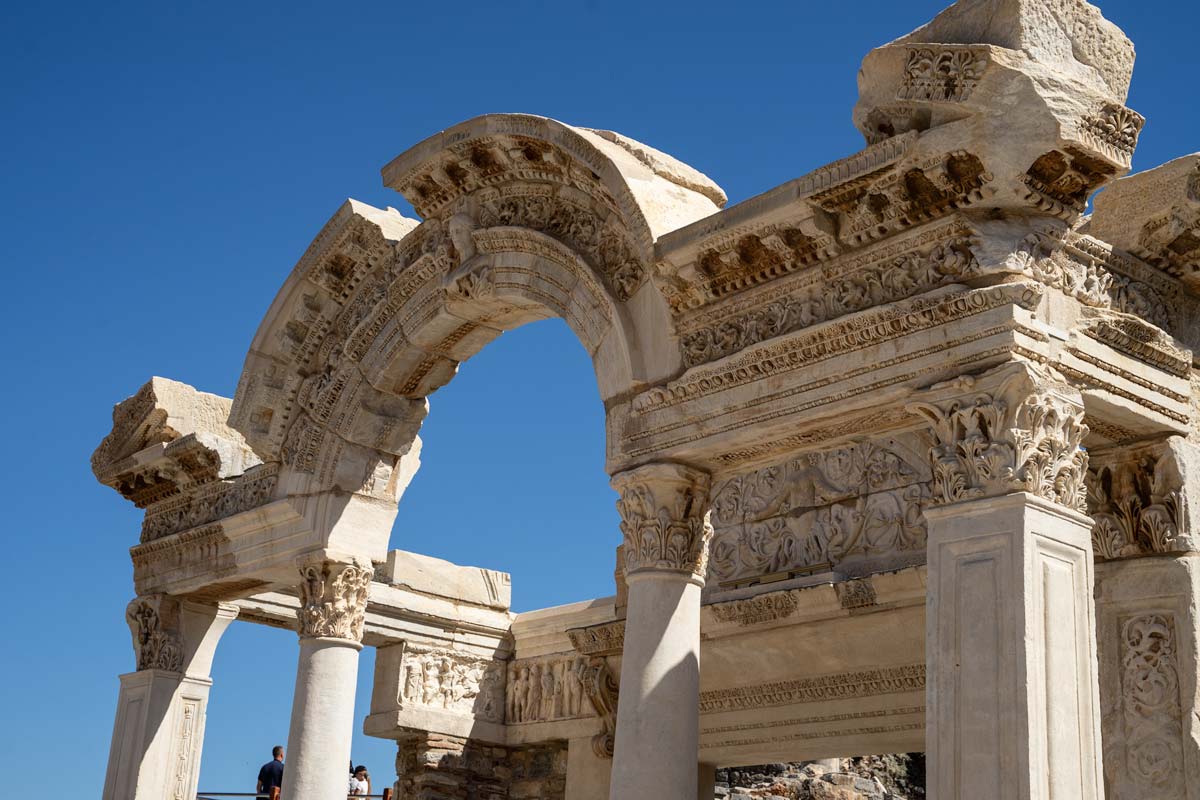
The Temple of Hadrian was built in the second century AD and is dedicated to Emperor Hadrian. It is known for its impressive facade, which was decorated with statues, friezes and columns.
Ephesus Attractions Map
Below is a map with all of the main attractions we’ve discussed above. We have included the things to see inside the Ephesus ruins as well as other attractions around Ephesus.
As you can see, most of the other things to do in Ephesus are situated in Selcuk (sometimes referred to as Ephesus town).
We’ll talk more about the attractions near Ephesus down below, but feel free to save this map so you can use it on your own personal device when you are visiting Ephesus! (To do so, click on the small star symbol next to the name of the map.)
How To Get To Ephesus?

Ephesus is located in western Turkey, and the closest tourist city is Izmir at about 80 km (50 mi).
If you want to fly to Ephesus, you’ll have to fly to Izmir Adnan Menderes Airport, which is the closest airport to Ephesus. From the airport, there is a train that takes you to Selcuk, which is the town where Ephesus is located. Of course, you can also rent a car or get a guided full day tour with transport included.
If you want to visit Ephesus from Istanbul, you’ll need to fly to the Izmir Airport and follow the same steps above.
Depending on which part of Turkey you are coming from, you might also be able to take a long-distance bus to Selcuk. The most important part of getting to Ephesus is getting to Selcuk, where you can then catch a short taxi ride or a minivan to the site.
Many travelers choose Izmir as their base because they can easily take a day trip to Ephesus, which is one of the top things to do in Izmir . In fact, visiting Ephesus is one of the main reasons to visit Izmir .
From Izmir, it’s easy to get to Ephesus thanks to the convenient train. You can get a train from Izmir to Selcuk, and from there, catch a minibus to Ephesus. The minibus departs every 15 minutes and takes 25 minutes to get to Ephesus. It costs less than $1 USD each way.
Another popular base is the coastal city of Kusadasi, especially for beach lovers. From Kusadasi, you can go from the bus station and catch a minivan to Selcuk.
For more information, check out our dedicated guides on getting from Izmir to Ephesus and Istanbul to Ephesus .
Ephesus Guided Tours
There are many different types of guided tours you can take for Ephesus. The most common ones include a professional guide and transportation to the site, perfect for those travelers that are pressed for time and want to learn more about the site.
Visitors also have the option to get a guide at the entrance of Ephesus, but the guides are known to overcharge tourists, so you can easily end up paying a lot more than booking a guided tour online.
Another option is getting an audio guide. Though it costs a little bit extra, it offers a lot of valuable information about Ephesus that you would not get just by walking around the site. We’ve heard that the ticketing office might say that the audio guides have run out, in hopes that you would hire one of the tour guides instead.
Where To Stay When Visiting Ephesus?
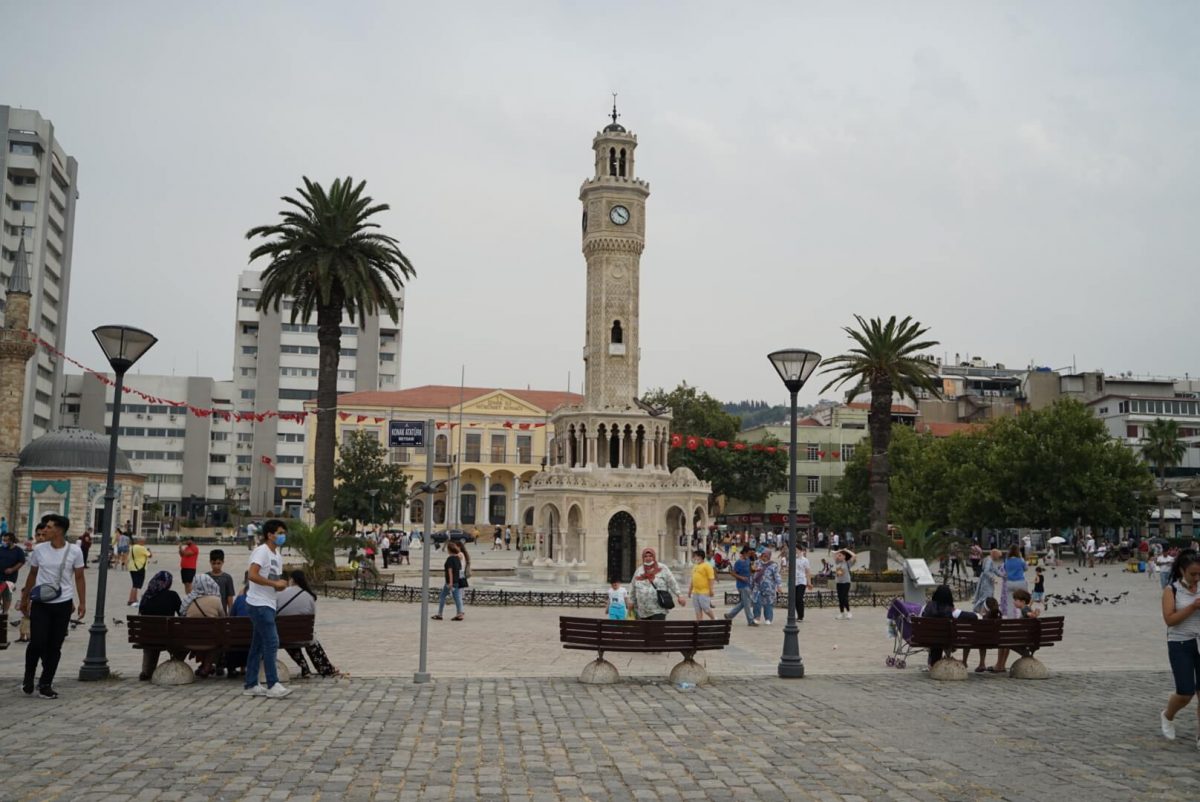
There are three places you should consider staying when visiting Ephesus:
As we mentioned, Izmir is home to the closest airport to Ephesus, and visitors can get a direct train from the city center or airport straight to Selcuk. From Selcuk, you can easily go to Ephesus with the minivan or a short taxi ride.
Kusadasi is another great place to stay, especially if you prefer to be by the sea. From Kusadasi, you can take a minibus from the bus station to Selcuk, where you can then get to Ephesus easily.
Lastly, visitors that don’t want to take a day trip to Ephesus should consider staying in Selcuk. Staying there will allow you to visit Ephesus first thing in the morning, which means you can avoid the crowd and the midday sun.
What To Wear When Visiting Ephesus?
There is no dress code for Ephesus, so visitors are free to wear whatever they want. However, we would highly recommend wearing a hat and lots of sunscreen, since the sun reflects off the white buildings. This is especially true if you are visiting in the summer.
We also recommend wearing some comfortable shoes, as you will be doing a lot of walking on the site. Loose-fitting and breathable clothing is also recommended so you don’t get too hot in the sun.
Other Things To Do Near Ephesus
Though the Ephesus Archaeological Site is the main attraction, there are plenty of other activities near Ephesus worth visiting. Most of the sites are situated in Selcuk, which is less than 4 km (2.5 mi) away from Ephesus.
Here are some of the things to do near Ephesus:
1. House Of The Virgin Mary
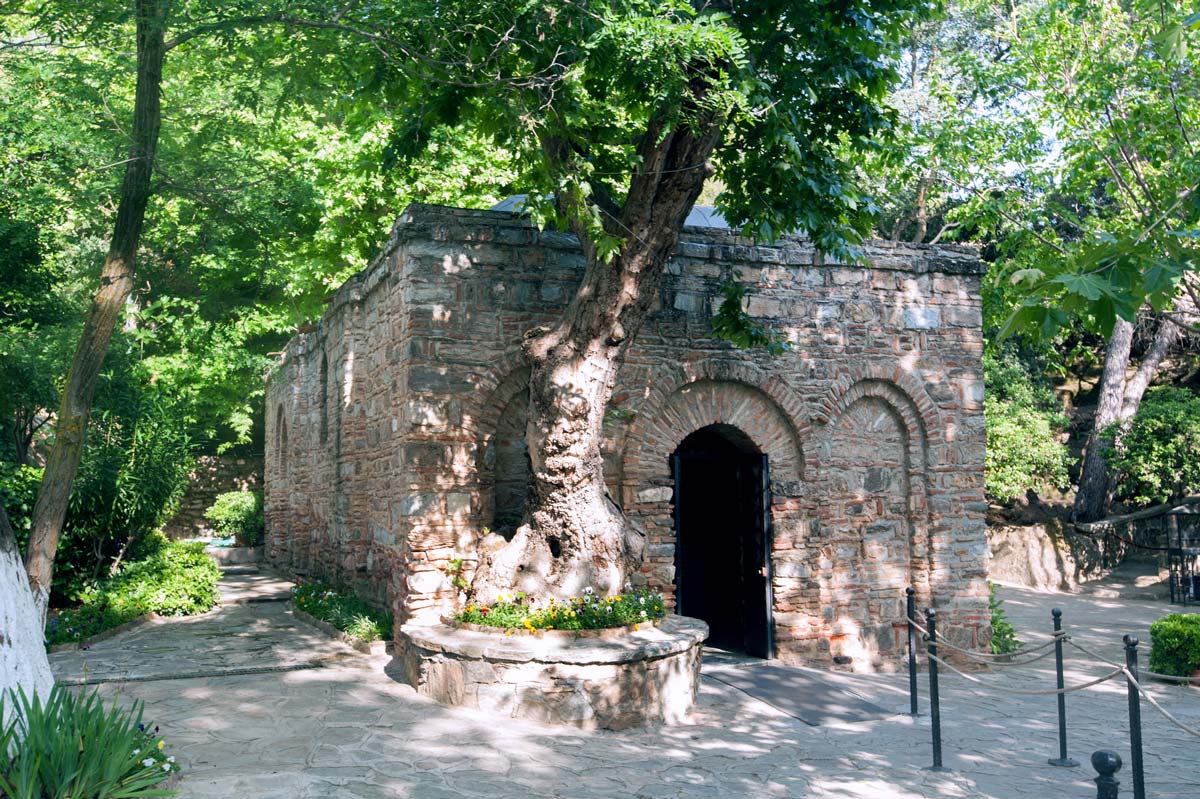
The House of The Virgin Mary is situated about 9 km (5.6 mi) from Selcuk and Ephesus, and it is believed that Virgin Mary lived out her last earthly days here after being brought here by St. John. The small complex is situated atop Mount Koressos on a pleasant hillside overlooking a lush valley.
It was discovered in the 19th century and has been serving as a pilgrimage site ever since.
The complex includes a small house serving as a chapel, but perhaps the most unique feature is the Wishing Wall, where you can write down your prayers and wishes.
There is an entrance fee for the House of The Virgin Mary. At the time of writing, it costs 200 TL (7 USD) to enter.
2. Basilica Of St. John
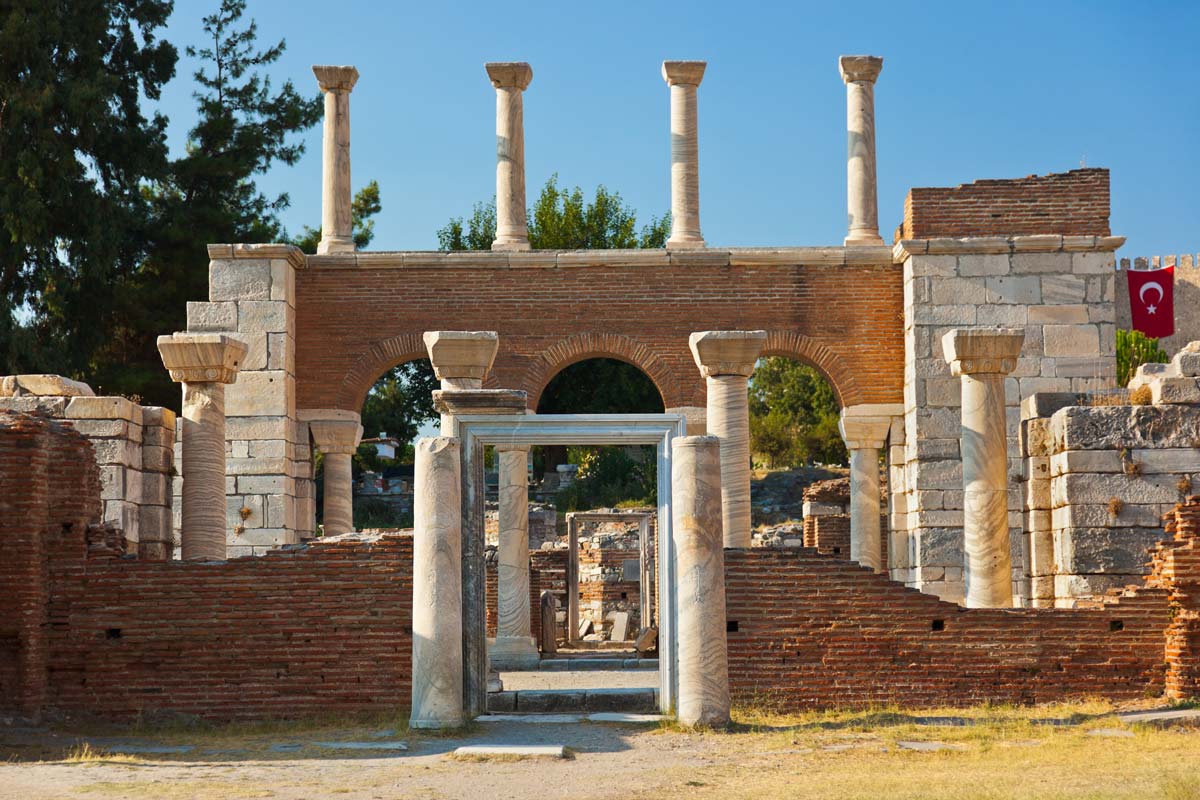
The Basilica of St. John stands proud in the heart of Selcuk. This is a renowned landmark and a holy site for both Greek Orthodox and Roman Catholic believers. Constructed in the 6th century AD by Emperor Justinian I, it was dedicated to St. John the Apostle who lived and preached in the area during his time on earth.
An ancient tomb believed to be St. John’s final resting place can still be found inside one of the chapels which further adds to its historical value.
This makes it a major pilgrimage spot for Christians from all over the world today who visit this holy place every year to pay their respects to this great apostle of Jesus Christ.
Most of the site is in ruins, but visitors can get a glimpse of its glorious past. There is a small entrance fee to the Basilica of St. John.
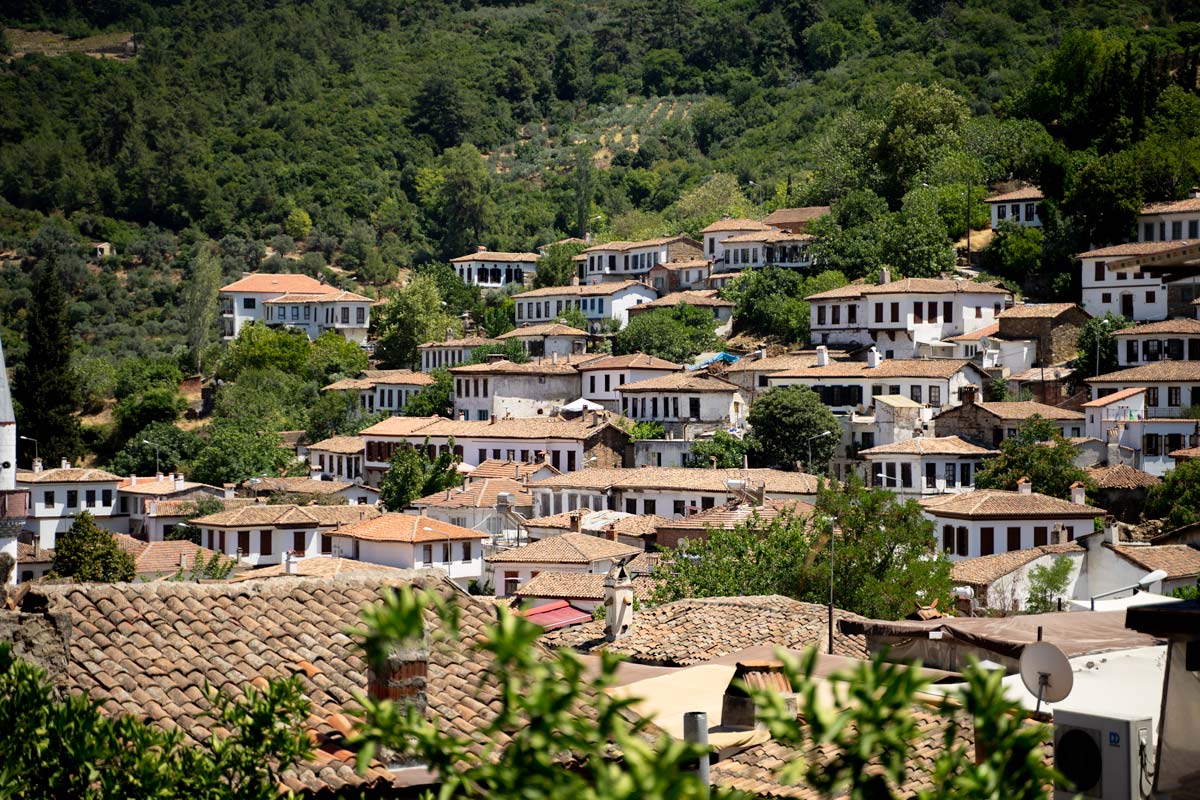
Sirince is one of the most beautiful and unique villages in Turkey and is only a short 15-minute drive from Selcuk. It is known for its stunning views, old stone houses and cobblestone streets.
The town was built on a hillside surrounded by olive groves, vineyards and orchards, giving it an idyllic setting. The old stone houses are adorned with bright colors, detailed mosaics and intricate patterns, further adding to the small-town charm atmosphere.
But perhaps the biggest attraction in Sirince is its wine. The village is known for its homemade wine produced in the small wineries located here. Visitors can sample the wines and even buy a few bottles home as Turkish souvenirs .
Visitors can get from Ephesus to Sirince by getting a minibus at the bus station in Selcuk .
4. Ephesus Archaeology Museum
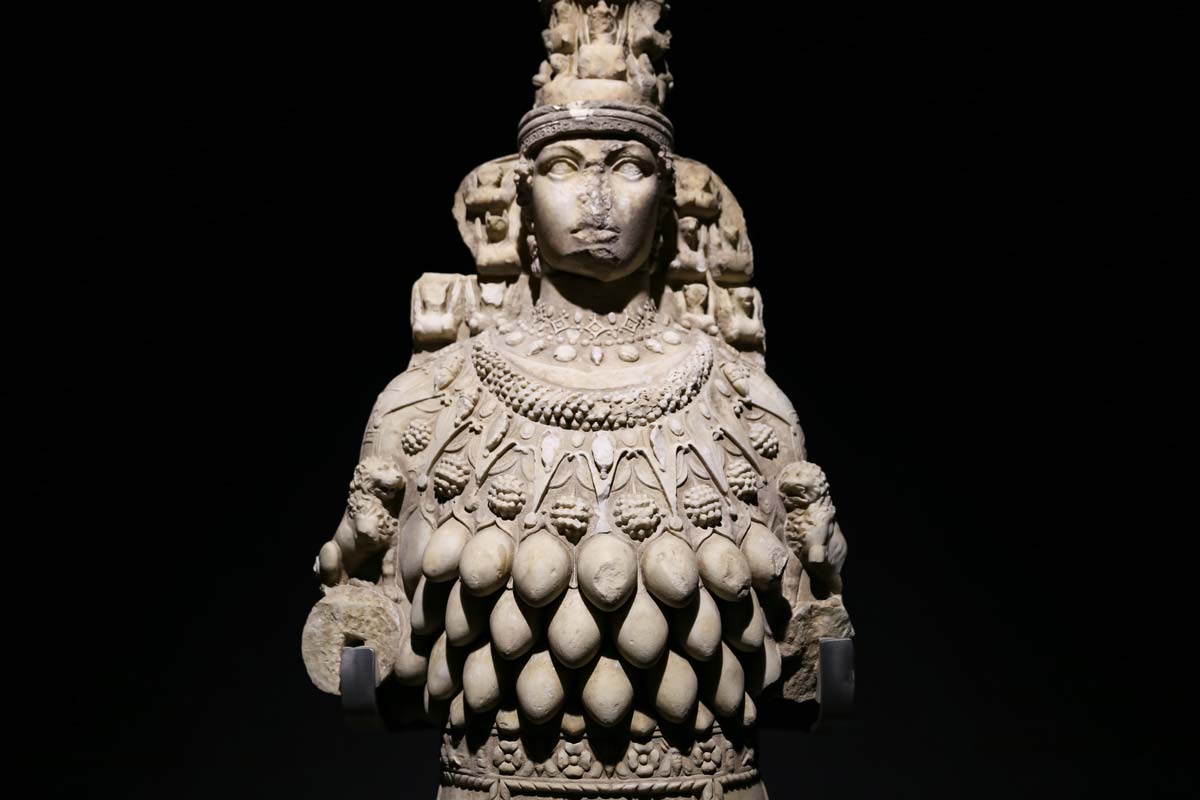
The Ephesus Archaeology Museum is located in Selcuk, a short walk from the bus station and train station. The museum displays artifacts found around the ancient city of Ephesus. These include coins, sculptures, and more.
It even has a unique 3D simulation video where visitors can imagine what the old city was like at its peak. There is a small entrance fee to the Ephesus Archaeology Museum, but it is definitely worth the short visit.
5. Isa Bey Mosque
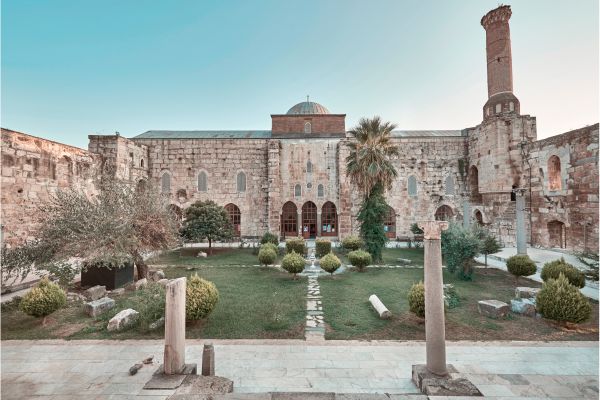
Located on the outskirts of the town of Selcuk, The İsa Bey Mosque is home to one of the oldest works of architectural art in the Anatolian region.
It was built in 1374–75 by architect Ali b. Mushaimish Dımışklıoğlu using stones from the ruins of Ephesus and the Temple of Artemis. It was a ruin for many years, but was renovated in the 1970s.
It’s most famous for its geometric designs and beautiful fountain courtyard.
Tips For Visiting Ephesus Archeological Ruins
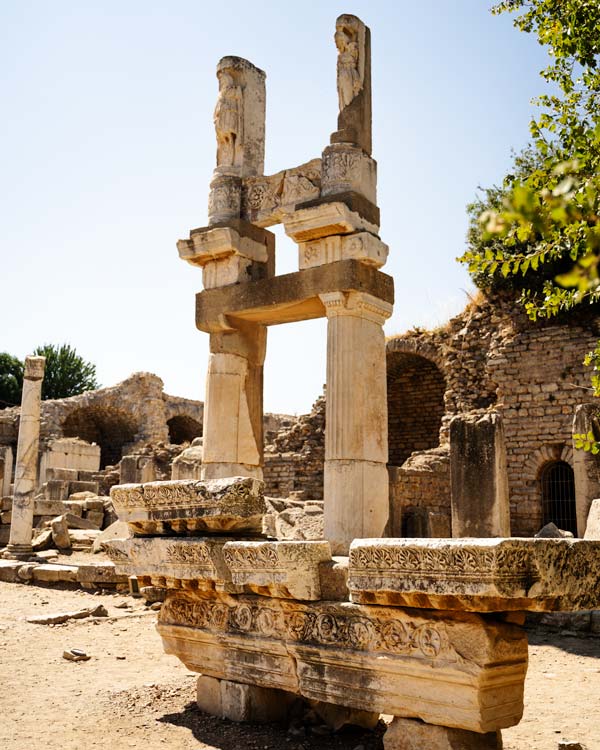
Visiting Ephesus might seem simple, but there are many tips that can make your visit more enjoyable and enriching. After having been there ourselves, here are some tips and advice for you:
- Arrive Early In The Morning – Arriving in Ephesus early in the morning will help you beat the midday heat, which can be very bad, especially during the summer. You’ll also avoid all the tour buses that come in the middle of the day and crowd the place.
- There Are Two Exits/Entrances At Ephesus – If you are arriving at Ephesus on a minibus from Selcuk, you’ll be dropped off at the north entrance. To return, you must get a bus from the north entrance (upper entrance). You will find nothing but taxis on the south entrance by the Great Theater (lower entrance). Note that you need to turn around and walk back to the parking lot if you are using the public buses.
- Avoid Getting A Tour Guide At The Entrance – If you didn’t get a guided tour online, you could also get a guide at the entrance of Ephesus. However, you are likely going to be charged much more. We met someone that was quoted 200 USD for a tour!
- Make Sure You Don’t Miss The Last Train/Bus – If you are doing a day trip to Ephesus, you want to check the schedule so you don’t miss the last train or bus back home.
- Don’t Eat At The Restaurants In Ephesus – If you can avoid it, we recommend not eating at any of the establishments at the entrances of Ephesus. They are not the best quality and they often overcharge tourists. There are plenty of amazing restaurants in Selcuk where you can get some lunch or dinner. We particularly liked Ali Baba & Mehmet Kebab House.
Visiting Ephesus FAQs
Can you take a day trip to ephesus.
Yes, taking a day trip to Ephesus is one of the most popular ways to visit this Turkish historical site. There are both buses and trains to Selcuk, and from there, visitors can get a minibus (dolmus in Turkish) to get to Ephesus.
How Much Time Do You Need In Ephesus?
You’ll need somewhere around 2 to 3 hours to explore the Ephesus Archaeological Site, but that does not include the Temple of Artemis. If you want to see that, you might want to include an additional 30 minutes. Also, if you want to see the Ephesus Museum, the House of Virgin Mary, or the Basilica of St. John, then you’ll need to plan accordingly.
Can You Tour Ephesus On Your Own?
Yes, you can visit Ephesus without a tour guide. However, the site has limited information about the history and importance of what you are seeing, so it is best to do some research prior to your visit. If you don’t want to hire a tour guide at the entrance, there are online audio tours available that can help provide more information about this ancient site.
When Is The Best Time To Visit Ephesus?
The best time to visit Ephesus is either early in the morning or late in the afternoon when it’s not too hot and there are fewer people. The summer months can be very crowded and hot – temperatures often exceed 40 degrees Celsius (104 Fahrenheit). If you can, we would recommend to avoid visiting Ephesus during the summer for that reason.
Final Thoughts
Visiting Ephesus is the highlight of any Turkey trip. It’s certainly a bucket list experience and one of our favorite places that we visited in the country.
Hopefully, our article has given you all the information you’ll need to make your experience as perfect as it can be! If you have any questions, or want to know more about our visit to Ephesus, feel free to reach out to us in the comments.
Co-Founder of The Turkey Traveler
Louisa Smith
Louisa is a professional travel blogger with an insatiable wanderlust for exploring the captivating country of Turkey. With a deep appreciation for the country’s diverse history and natural beauty, Louisa has made it her mission to share the wonders of Turkey with the world. Born in the UK and raised by two Travel Agent parents, she was born with a perpetual case of the travel bug and now travels full time as a travel writer. Louisa has embarked on numerous adventures across Turkey, and shares her first-hand expertise and experience about her favorite destinations in Turkey, such as Antalya, Alanya, Fethiye and Bodrum.
5 thoughts on “Visiting Ephesus In Selcuk: Crucial Tips For Travelers”
Thanks for the excellent tips! This was super useful to me as I’m planning at trip to visit Ephesus in a couple weeks.
Excellent concise guide to the sites . I have been there 4 times & every thing stated here is exactly right. As is the guidance & tips to get most out of a day at Ephesus.. An unforgettable experience. Thank you Author
I’m glad you found this useful! – Sean
Hi, thanks for the info. Would all the info be still relevant for a visit in late Dec, winter? thank you
Yes the information is still correct, just make sure to note the winter opening hours: 8 AM to 6:30 PM
Leave a Comment Cancel reply
Save my name, email, and website in this browser for the next time I comment.
AFFILIATE DISCLOSURE
This website uses affiliate links, meaning I may earn a commission if you make a purchase through a link at no extra cost to you. TheTurkeyTraveler is a participant in the Amazon Services LLC Associates Program. As an Amazon Associate, I earn from qualifying purchases. For more information, see our full affiliate disclosure .
© 2024 The Turkey Traveler

- Destinations
- Blue Cruise
- Plan My Trip
Best Known for the Library of Celsus
Built 10th century BCE
Civilization Ionian, Greek, Roman
Suggested Duration 2 hrs
Have you ever wondered what it would have been like to walk down the streets of Rome at the height of its glory?
Have you ever dreamed of walking in the footsteps of great Biblical heroes and brilliant Greek philosophers?
What if we told you there’s a place where you could live the majesty of ancient Greece once more?
Today, Ephesus contains some of the best-preserved ruins on Earth. If you want to experience this ancient city for yourself, we do offer several private Ephesus tours that highlight the best places.
Read on to learn more about this city and the beauty it holds for even modern visitors.

Planning a trip to Ephesus soon? Answer this trip planner and get your FREE quotation within 24 hours.
Brief History
Before arrival, what to eat, tips & etiquette, what is ephesus.
Ephesus is an ancient city considered second only to Pompeii in regional importance. If you grew up in the Christian church, you might be familiar with this city through the Bible book Ephesians, which is Paul’s letter to the church at Ephesus. But this name is well-known around the Mediterranean for its rich history and power.
Ephesus was once one of the most significant commercial seaports in the entire Western world, and it remains some of the best-preserved ruins of its time. It was founded in the eleventh century BCE. and today is recognized as a World Heritage site. It’s also one of the few remaining places in the world where you can get a feel for what life was like during the golden ages of Greece, Malta, and Rome.
History of the City
Legend says that Ephesus was founded around 1100 BCE by an Ionian prince named Androclos. According to the story, the oracle at Delphi told Androclos that a boar and a fish would show him the location for a new Greek settlement. One day, as the prince was frying a fish, the fish flopped out of the pan and landed in the nearby bushes, igniting the bushes and startling a wild boar out, completing the prophecy.
Another story credits the legendary Amazon warriors with founding the city. The tribe of female warriors from Anatolia supposedly named the great city after their queen, Ephesia. Regardless of its origins, within four centuries, Ephesus would be a thriving city.
In the fifth century BCE, the Ephesians built their Temple of Artemis, which has become one of the Seven Wonders of the Ancient World. The city was captured by the Persian Empire around this time, and they held it until Alexander the Great took the city back in 334 BCE. Around the first century BCE, Ephesus came under Roman rule, the time when it would hold the most wealth and power.
In its heyday, Ephesus was believed to be home to nearly 250,000 people. This set it as the fourth-largest city of its day, behind only Rome, Alexandria, and Antioch.
During the first century CE, Ephesus became vital in the spread of Christianity, and today, the tomb believed to belong to the Virgin Mary is in Ephesus. In 262, the Goths destroyed the Temple of Artemis, marking the beginning of the end for Ephesus. A massive earthquake and the decline of the harbor in the sixth and seventh centuries continued the decline. By the time the Ottoman Empire took control of the city in the fifteenth century, Ephesus was all but abandoned to the ages.
About the Area
Ephesus was built on a river bend back in its day, but the continual depositing of silt has moved the coastline further and further west. Today the coast is about five miles away from the ruins of Ephesus. It’s a little less than two miles outside a city called Selcuk and about 500 miles from Istanbul, the capital of modern-day Turkey.
Ephesus is about fifty miles south of Izmir and sits just off the Icarian Coast. This sea also contains Patmos, the prison island from which the apostle John is said to have written the Revelation. The surrounding area is filled with coastal national parks and breathtaking mountain peaks dotted with astonishing historical sites.
One of the larger cities near Ephesus in Kusadasi, a resort town on Turkey’s west coast. There are some great hotels and restaurants there, and you can enjoy a thriving nightlife after spending the day in Ephesus. There are several attractions to see around Kusadasi as well.
Just off the coast of the city and connected by a causeway, you’ll find Pigeon Island, a walled Byzantine castle that once guarded the town. You can also visit the ruins of Priene, Miletus, and Didyma, Hellenistic cities just outside Kusadasi. If you’d like to see some living towns, check out Kirazli, a quaint town with some great restaurants and an amazing farmer’s market.
What to Pack
When you’re exploring Ephesus, you’re going to be doing a lot of walking. So you need to make sure you bring comfortable shoes, plenty of water, and lots of sunscreens. This is especially important if you’re visiting in the summer, when you may also want a hat to protect you from the scorching midday sun.
You may also want to take some snacks with you for your trip to Ephesus. There are no restaurants, stalls, or shops inside the ruins, and you may be there for a while. Just make sure you take everything you carry in back out with you – littering would be nothing less than sacrilege at this ancient site.
Getting There
There are two primary ways to get to Ephesus. The first is to travel to Izmir and by plane or a private car (if you are driving down from Istanbul or Troy) then take the roads south to Selcuk or to Ephesus itself. This drive will take about an hour, and some public buses also run from Izmir daily.
You can also get to Ephesus via Kusadasi, a coastal city about twelve miles southwest of the historical site. From there you can drive up to Ephesus, about a half-hour trip. This can be a great option if you’ve come to Turkey by sea, either on a cruise or on a sailboat.
How Many Days to Spend Around Selcuk
How many days you spend around Selcuk will depend on how thoroughly you want to explore Ephesus and what else you want to do in the area. In general, most people find they can see everything they want to in Ephesus in a day or two. But you may want to give yourself three days to go back and explore every wondrous site in the city and enjoy the culture of Selcuk or include more sites nearby.
Getting Around
One of the easiest ways to get around Ephesus is to travel with a guided tour that will ease your navigation to the city and around the area if you are especially on a tight schedule and visiting Turkey for a short time. So, all you have to do is show up on time at the hotel lobby, get picked up, and enjoy the day to its most. But if you prefer to use public transport and do your own touring, there are some buses and taxis from surrounding cities that you can take into Ephesus.
Once you’re in the city, you’ll need to walk most of the time which should be avoided especially during summer months. If possible, try to get your driver to drop you off at the Upper Gate on the southeast side of the city. It’s a much more pleasant walk downhill through the city than hiking up from the northwest Lower Gate.
Where to Go
Once you’re in Ephesus, you’ll have difficulty deciding which attractions you want to see most. The Gymnasium of Vedius and the Stadium are both glorious, well-preserved structures. The Church of the Virgin Mary is where the Third Ecumenical Council is believed to have met in 431. And the Square of Verulanus and the Great Baths are more than worth the trip.
The Arcadian is an amazing stone-paved street lined with columns and remnants of buildings. The Great Theater is one of Ephesus’s most impressive structures, both for its architecture and its claim that the apostle Paul once preached here. And, of course, you’ll want to see the site where the magnificent Temple of Artemis once stood.
The Terrace Houses of Ephesus are also some of the city’s most breathtaking remaining structures. The oldest of these six houses were built as early as the first century BCE and was in use for more than six centuries. Today two of the houses are restored and available for you to visit.
You won’t want to miss Hadrian’s Gate, located at the junction of Curetes Street and the Marble Road. The gatehouse was three stories tall, and it remains some of the most impressive ruins in Ephesus.
The Celsus Library is also shockingly well-preserved, featuring a stunning two-storied columned facade. It was first built as a tomb for Gaius Julius Celsus Polemaeanus. In time, it became the third-richest library in the ancient world, bested only by the libraries at Alexandria and Pergamum.
Where to Stay
Many people who visit Ephesus stay in nearby Selcuk, an adorable small town with cobblestone alleys and traditional whitewashed houses. Its proximity to Ephesus means that visitors staying there can walk to the ruins when they like, a convenience that the larger cities don’t offer. There is a range of hotels in Selcuk that can suit any budget and style preference.
However, Kusadasi is also within easy reach of the ancient city. If you’re looking for higher class experience, you may want to stick to Izmir. This can also give you greater access to some of the other amazing sites spread throughout the region.
If this is not your only sea-view accommodation in Turkey; then we will recommend Sirince Village in the first place which is a gorgeous town in the mountains with fresh air and away from tourist crowds, especially after the tour buses leave.
If you’re from a colder part of the world, you’ll be fine going to Ephesus almost any time of year. January and February are the coldest months, but even then, the temperatures bottom out around 5°C (41°F). However, around July and August, the temperature can soar to as high as 40°C (104°F) in the middle of the day.
In general, spring and fall are the best times to visit Ephesus. April, May, October, and November are the best from a weather standpoint when the temperature is neither hot nor cold. If you’re worried about rain, go towards the beginning or end of summer; it hardly rains in the summertime.
Turkish food benefits from a long history filled with diverse cultures and an imperial influence. This makes it one of the finest cuisines in the world, and you should take the opportunity to enjoy it while you’re visiting Ephesus. It’s a beautiful fusion of Central Asian, Middle Eastern, Eastern European, and Balkan cuisines.
Many Turkish meals will center around vegetables, rice, and bread. Lamb is a common staple, and many meals start with soups or a cold dish of vegetables cooked in olive oil. You’ll find rich breakfasts and glorious use of spices in the food you eat around Ephesus and don’t miss the fresh fish either at a seaside restaurant around Kusadasi or Kordon in Izmir.
When you’re visiting Ephesus, knowing a few pro tips can make your trip safer and more enjoyable. First of all, make sure you carry plenty of bottled water with you. The summers in Turkey are hot, and there are no places in Ephesus to get water.
As we mentioned, you should start your tour from the Upper Gate in the city. If you get tired, take a break at the beautiful Terrace Houses opposite the Hadrian Temple. It’s also best to start your visit in the early morning or late afternoon to avoid both the heat and the cruise ship crowds.
Staying safe in Turkey is mostly a matter of being smart and taking standard precautions. Use all the usual safety measures you would when traveling anywhere else in the world, including hiding money and essential documents in an inside pocket of a jacket. Walk confidently and try to get a hotel in an area of town near restaurants and stores that are open late at night.
In general, Turkey is a relatively safe area of the world. So long as you keep your wits about you and take the usual safety precautions, you shouldn’t have any trouble.
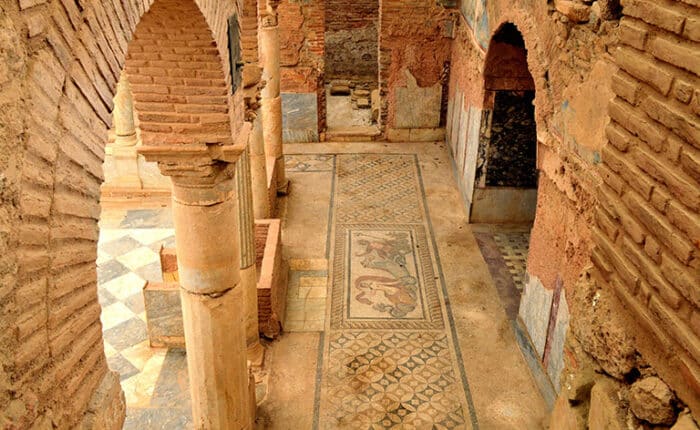
Discover the Best of Ephesus Tours
Ephesus was an amazing town, and today its ruins are one of the most incredible legacies of the Greek and Roman empires. You can see where the Temple of Artemis stood, walk the streets that the Virgin Mary once trod, and stand in the theater where the apostle Paul once preached. You can also see the ruins of one of the most incredible cities that ever existed on the coast of the Icarian Sea.
If you’d like to see Ephesus for yourself, check out the rest of our site at Made in Turkey Tours. We can show you the best of Troy, Pamukkale, Istanbul, Cappadocia, and more. Check out our Ephesus tours and start experiencing the ancient world for yourself today.
Ephesus Tours
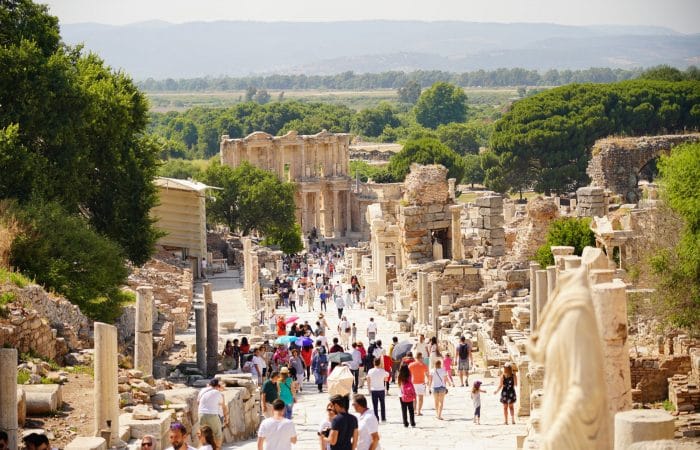
Full-Day Ephesus Tour

Full-Day Hierapolis and Pamukkale Tour

Pergamon Tour
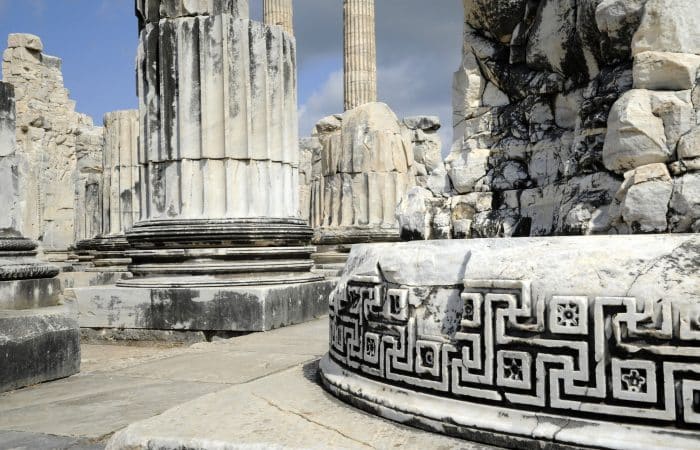
Priene, Miletus, and Didyma Tour

Sardis Ancient City Tour
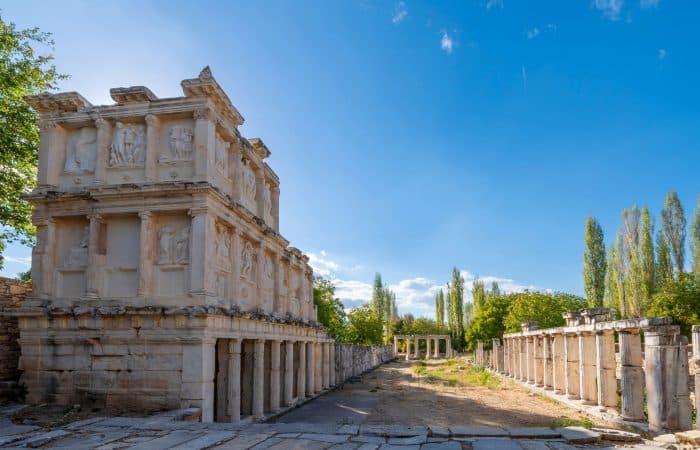
Aphrodisias & Magnesia Tour
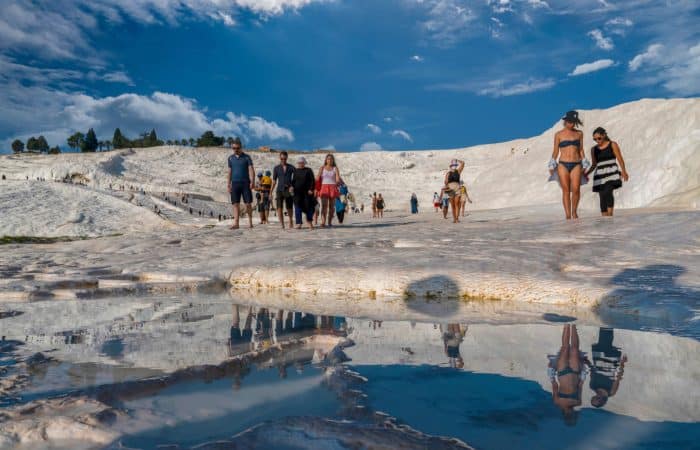
Pamukkale (Hierapolis) and Laodicea Tour
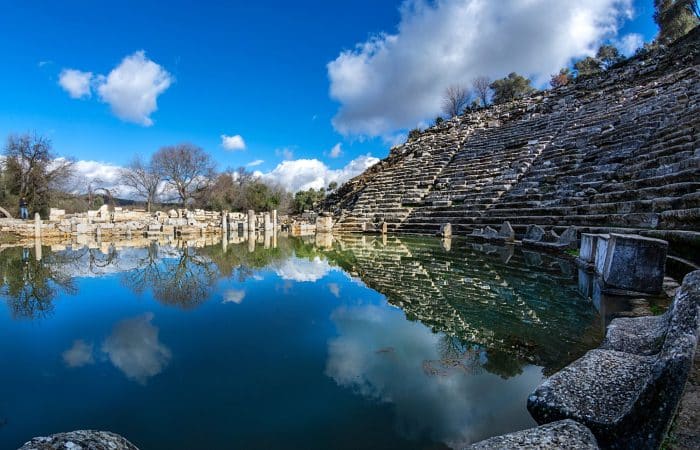
The Ancient Stratonikeia Tour from Kusadasi or Bodrum
Where to go next.
When you get done in the area around Ephesus, you may be wondering where you should go next. Bodrum on the southern coast of Turkey features another of the Seven Wonders of the Ancient World, and Pergamon and Assos are amazing cities with incredibly rich histories. Troy is another amazing option further north up the west coast.
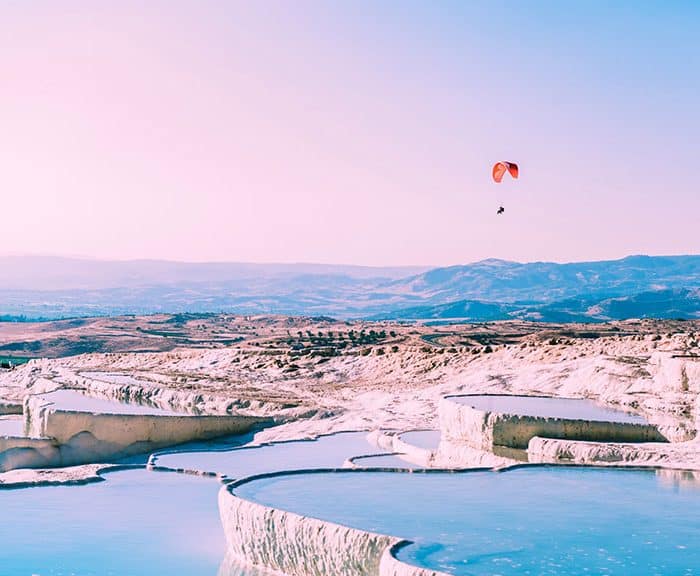
Would like to join the other happy travelers?
- TÜRKÇE DİLİNE ÇEVİR
- ACKNOWLEDGEMENTS
- Visit Ephesus is a project of Selcuk Chamber of Commerce
- Where To Stay
- Unesco Components
Discover 8.600 Years of History !
The capital of the ancient world, the golden city of ephsus..

Some Famous People are Visited Ephesus

By continuing to use the site, you agree to the use of cookies. more information Accept
The cookie settings on this website are set to "allow cookies" to give you the best browsing experience possible. If you continue to use this website without changing your cookie settings or you click "Accept" below then you are consenting to this.

A Comprehensive Guide to Ephesus Tour: Everything You Need to Know
- Informative
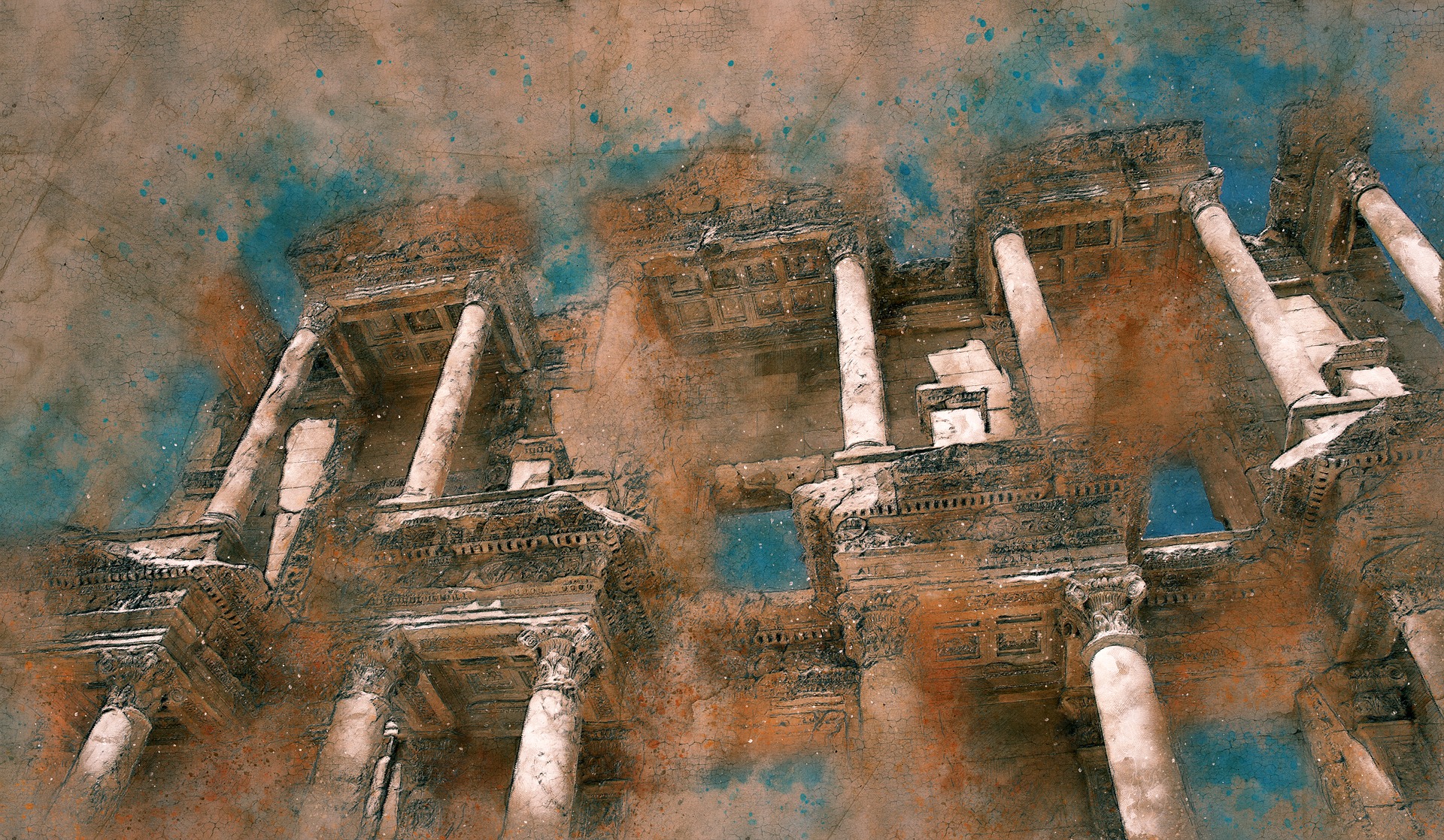
Planning a trip to Turkey can be an exciting and rewarding experience, but it can also be overwhelming and stressful if you’re trying to do it on your own. That’s where a travel agency comes in. Working with a travel agency can take a lot of the stress and hassle out of planning a trip, and it can also provide you with a number of other benefits. Here are 10 reasons why you should consider planning your trip to Turkey with a Turkish travel agency.
Unveiling the Magnificent History of Ephesus
Ephesus, with its storied past, stands as a captivating testament to the rise and fall of ancient civilizations. Tracing the origins of this remarkable city allows us to unravel the fascinating journey it has undertaken throughout the centuries.
Tracing the Origins

Ephesus emerged as a humble Greek city in the 10th century BC, located in the region of Ionia on the western coast of Anatolia, modern-day Turkey. Its strategic location near the Aegean Sea facilitated trade and cultural exchanges with other ancient civilizations.
Under Persian rule in the 6th century BC, Ephesus experienced significant growth and prosperity. However, it was during the Hellenistic period under the rule of Alexander the Great that Ephesus flourished, embracing Greek culture and becoming a prominent city in the region.
Significance and Influence
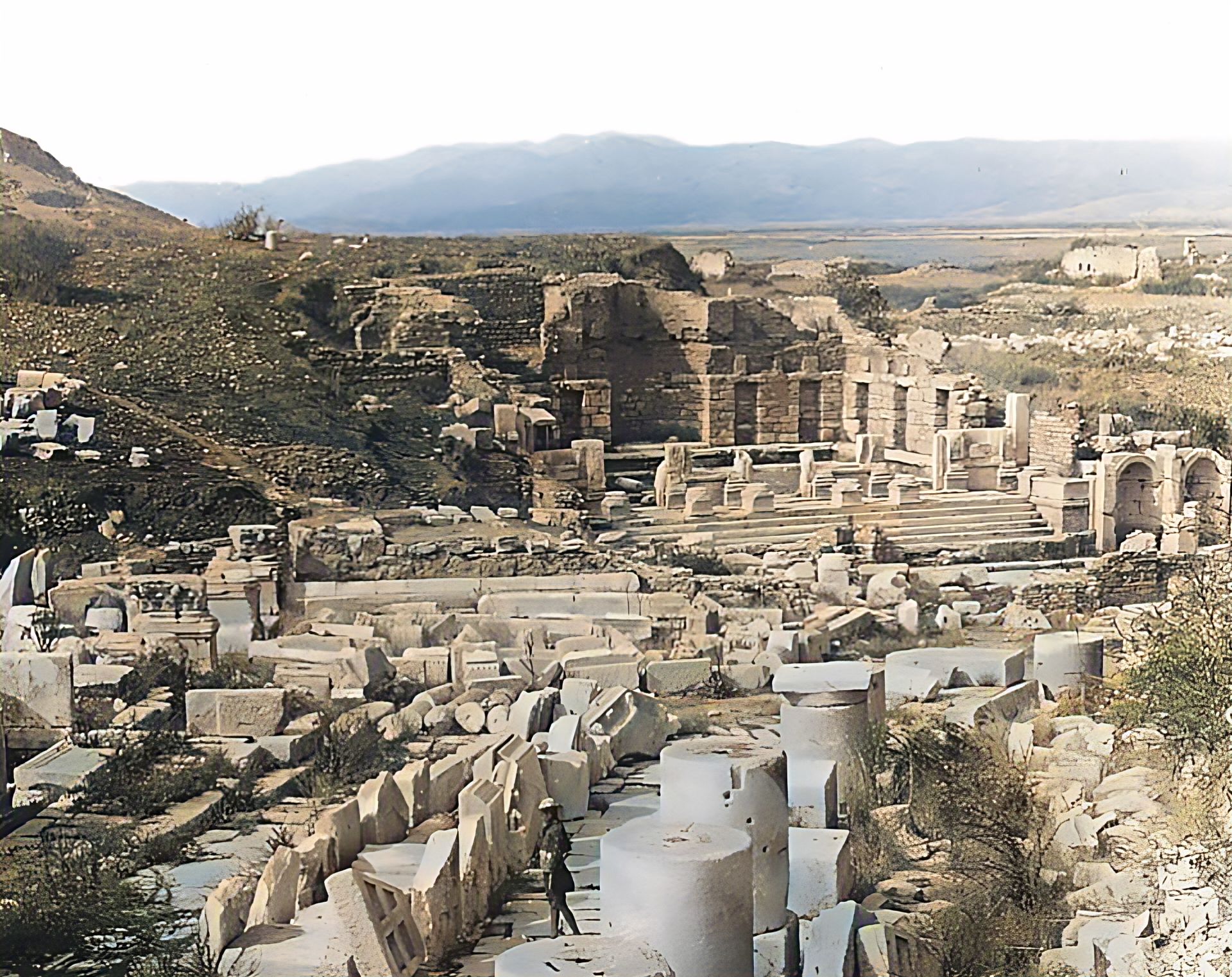
Ephesus’s importance extended far beyond its role as a thriving city. It served as a vital trading hub, connecting the eastern and western regions of the Mediterranean. The city’s strategic location allowed it to prosper economically, attracting merchants and traders from various corners of the ancient world.
Moreover, Ephesus held immense cultural and religious significance. As a center of art, religion, and philosophy, the city boasted renowned schools of thought, attracting prominent philosophers and intellectuals. It became a hub for learning, nurturing renowned scholars who contributed to advancing knowledge.
The city’s religious influence was also profound. Ephesus was home to the Temple of Artemis , one of the most revered sanctuaries in the ancient world. The temple served as a place of worship for the Greek goddess Artemis, attracting pilgrims from near and far.
Over time, Ephesus’s fate changed hands as the Roman Empire rose to power. Under Roman rule, the city continued to thrive, experiencing architectural transformations and constructing grand structures showcasing Roman engineering and artistry.
Exploring Ephesus’s history and cultural significance allows us to grasp the depth of its influence on ancient civilizations. From its humble beginnings as a Greek city to its transformation into a vibrant Roman metropolis, Ephesus remains a beacon of historical and cultural heritage that continues to captivate visitors from around the globe.
Key Attractions in Ephesus
Ephesus is a treasure trove of captivating attractions that bring to life the splendor of ancient civilizations. From majestic theaters to architectural gems, these key attractions offer a glimpse into this remarkable city’s opulence and cultural heritage.
The Great Theat re
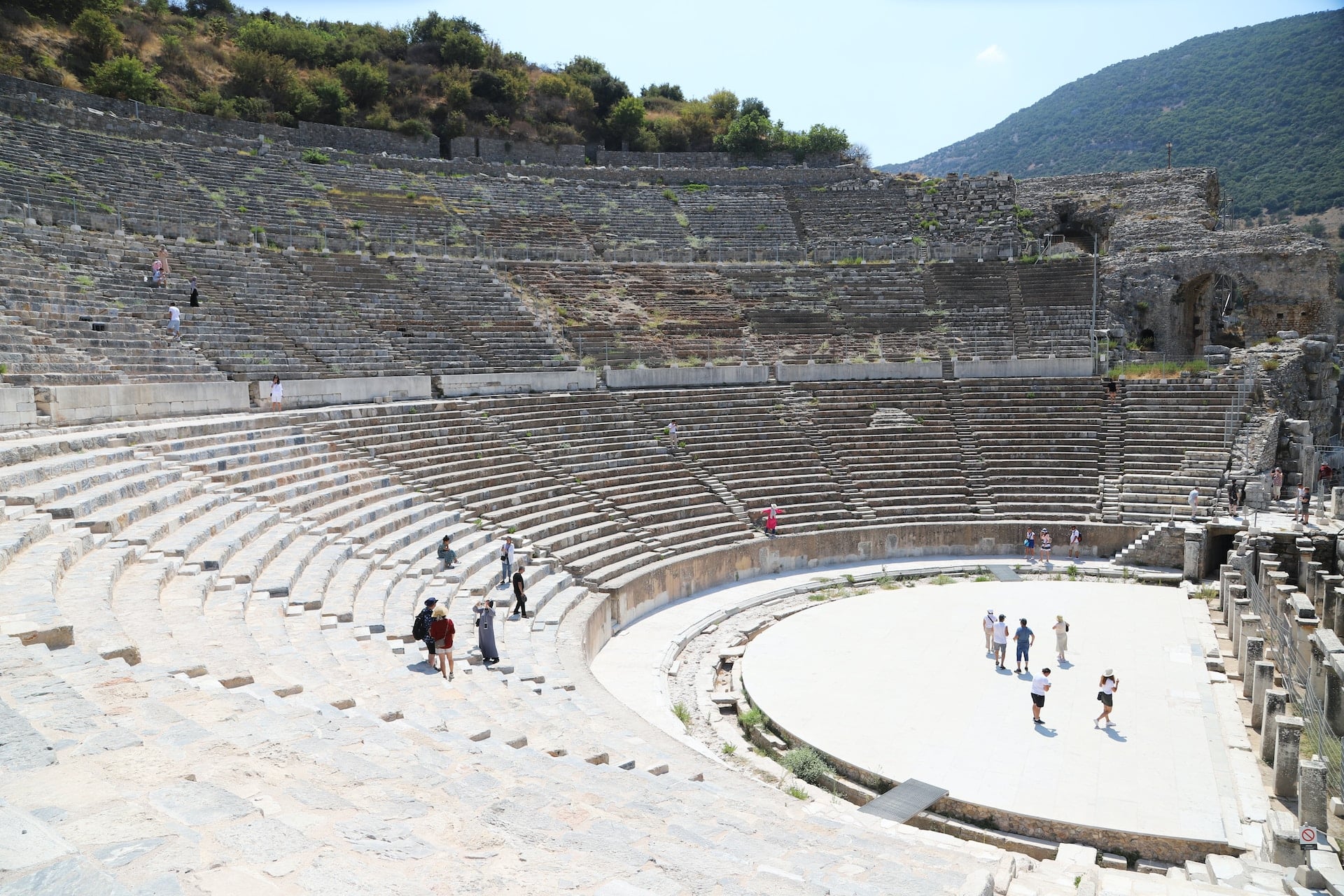
Step into the grandeur of the Great Theatre , a testament to Ephesus’ rich cultural heritage. This expansive amphitheater once played host to spectacular performances that captivated audiences of thousands. As you stand amidst its ancient stone tiers, you can almost hear the echoes of applause and feel the excitement that once filled the air. Immerse yourself in the theatrical spirit of the past and envision the vibrant productions that took place on this very stage.
The Library of Celsus
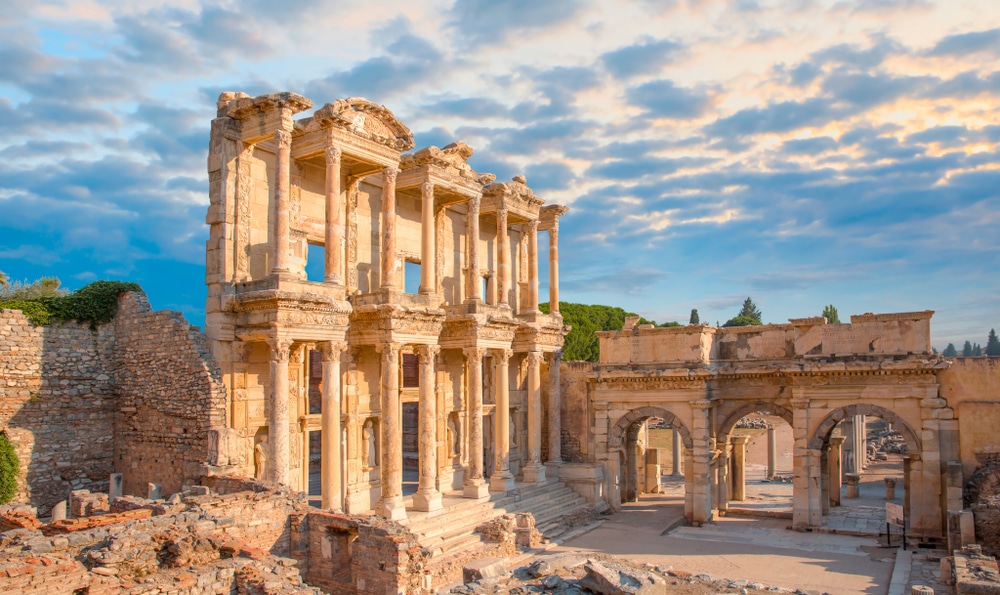
Marvel at the architectural splendor of the Library of Celsus , an iconic symbol of knowledge and learning in antiquity. With its grand facade and towering columns, this magnificent structure housed a vast collection of scrolls and books, making it a center of intellectual pursuits in Ephesus. Admire the intricate details of the library’s design and imagine the scholars and students who would come here seeking wisdom and enlightenment. The Library of Celsus is a testament to the enduring power of knowledge and the pursuit of learning.
Terrace Houses
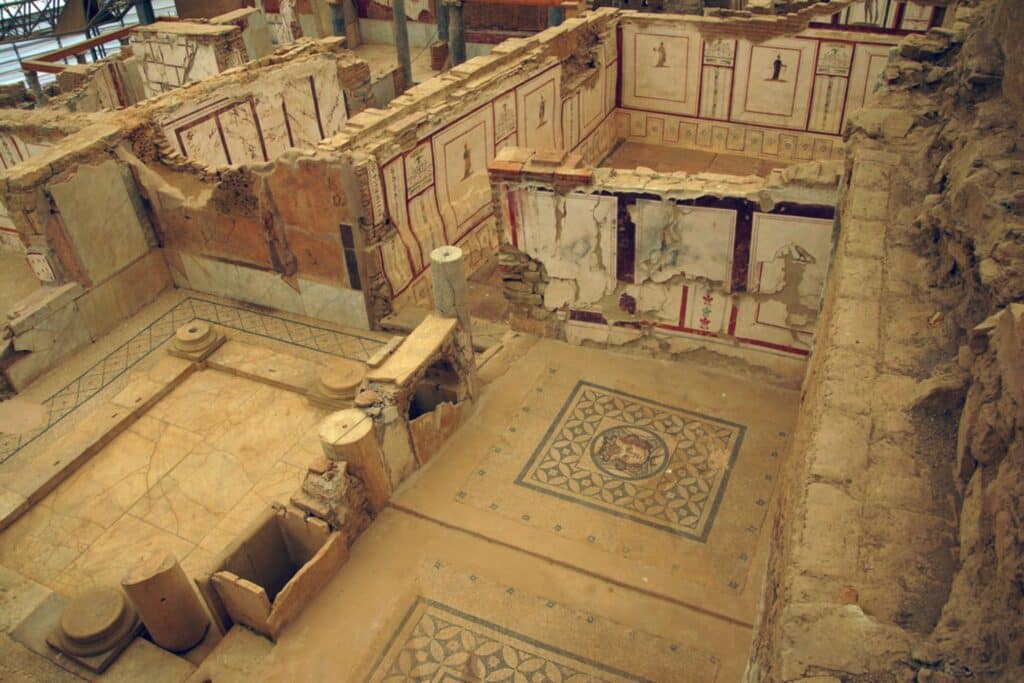
Known as the “Houses of the Rich,” the Terrace Houses offer a fascinating glimpse into the lives of Ephesus’ affluent residents. These ancient residential buildings, with their well-preserved architectural features, provide a rare opportunity to explore the opulent lifestyles of the elite. Step inside these luxurious houses and marvel at the intricately designed frescoes, exquisite mosaics, and finely crafted details adorned the walls. Each house offers a unique narrative, showcasing the artistry and sophistication of ancient Ephesian society.
Temple of Hadrian
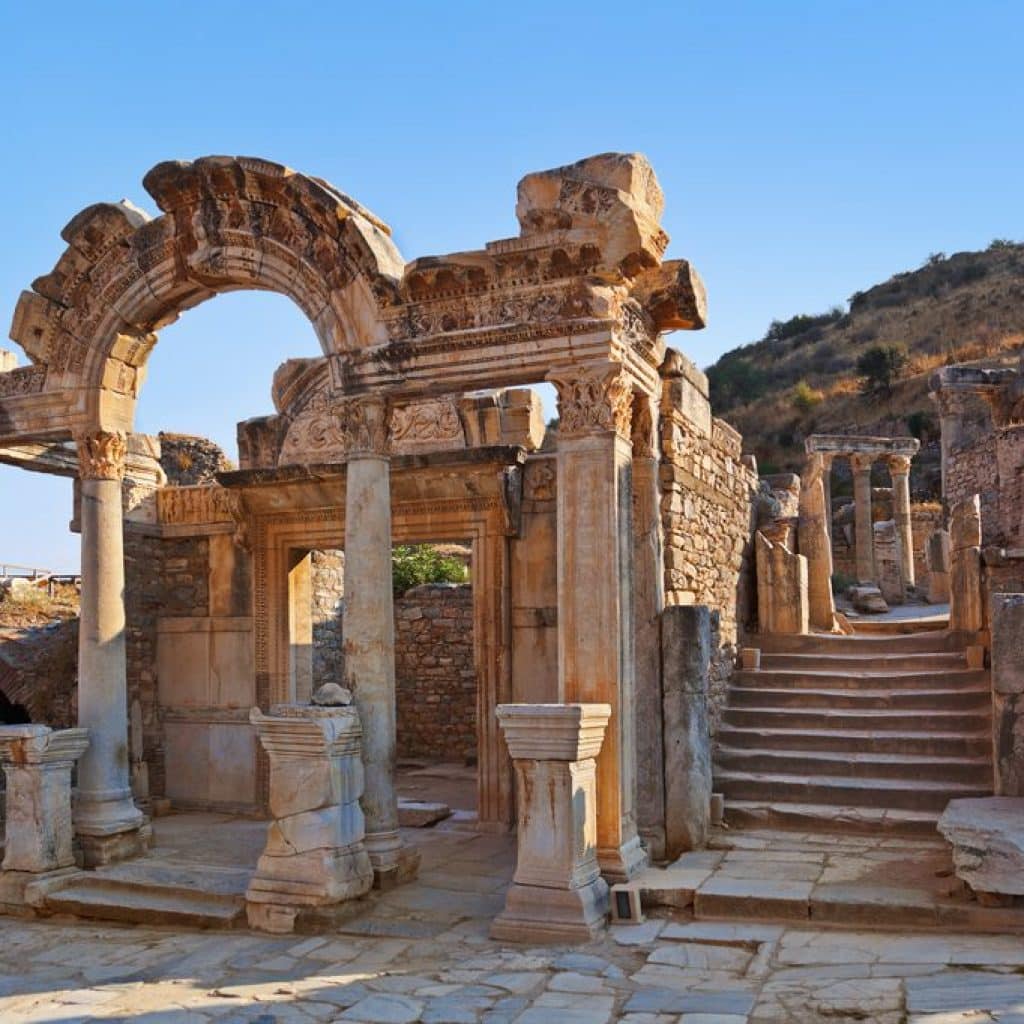
Dedicated to the Roman Emperor Hadrian, the Temple of Hadrian is a testament to the city’s reverence for its imperial rulers. This small yet remarkable temple features an intricately carved façade adorned with delicate reliefs. The reliefs depict scenes from mythology and commemorate Hadrian’s visits to various cities throughout the Roman Empire. As you stand before this architectural marvel, take in the artistry of the carvings and reflect on the historical significance of this place of worship.
Best Time to Visit Ephesus
Choosing the right time to visit Ephesus can greatly enhance your experience, ensuring pleasant weather and optimal conditions for exploration. Consider the following factors when planning your trip to make the most of your visit to this ancient city.
Spring and Fall
Visiting Ephesus during the temperate seasons of spring and fall offers numerous advantages. The weather during these times tends to be mild and comfortable, allowing you to explore archaeological sites and attractions without extreme heat or cold discomfort. Additionally, spring and fall typically experience fewer crowds than peak tourist seasons, providing a more serene and immersive experience. You can take your time to appreciate the historical wonders of Ephesus and enjoy a more intimate connection with the ancient city.
Summer Considerations
If you plan to visit Ephesus during the summer months, it’s important to be prepared for the heat and plan your itinerary accordingly. Summers in Ephesus can be quite hot, with temperatures soaring during the peak hours of the day. To make the most of your visit, it is advisable to schedule your activities for early mornings or late afternoons when the temperatures are relatively cooler. You can explore the sites comfortably and avoid the scorching midday sun. It’s also crucial to stay hydrated, wear appropriate sun protection, and dress in light, breathable clothing to stay comfortable throughout your visit.
What is the best time to visit Ephesus?
The best time to visit Ephesus is during the spring and autumn seasons. These temperate seasons offer milder weather and fewer crowds than peak tourist months. The comfortable temperatures allow for a pleasant exploration of the archaeological sites without extreme heat or cold discomfort.
Is Ephesus open on Sundays?
Yes, Ephesus is open on Sundays. It is open every day of the week, allowing visitors the opportunity to explore its historical sites and attractions throughout the week, including Sundays.
Practical Tips for a Successful Ephesus Tour
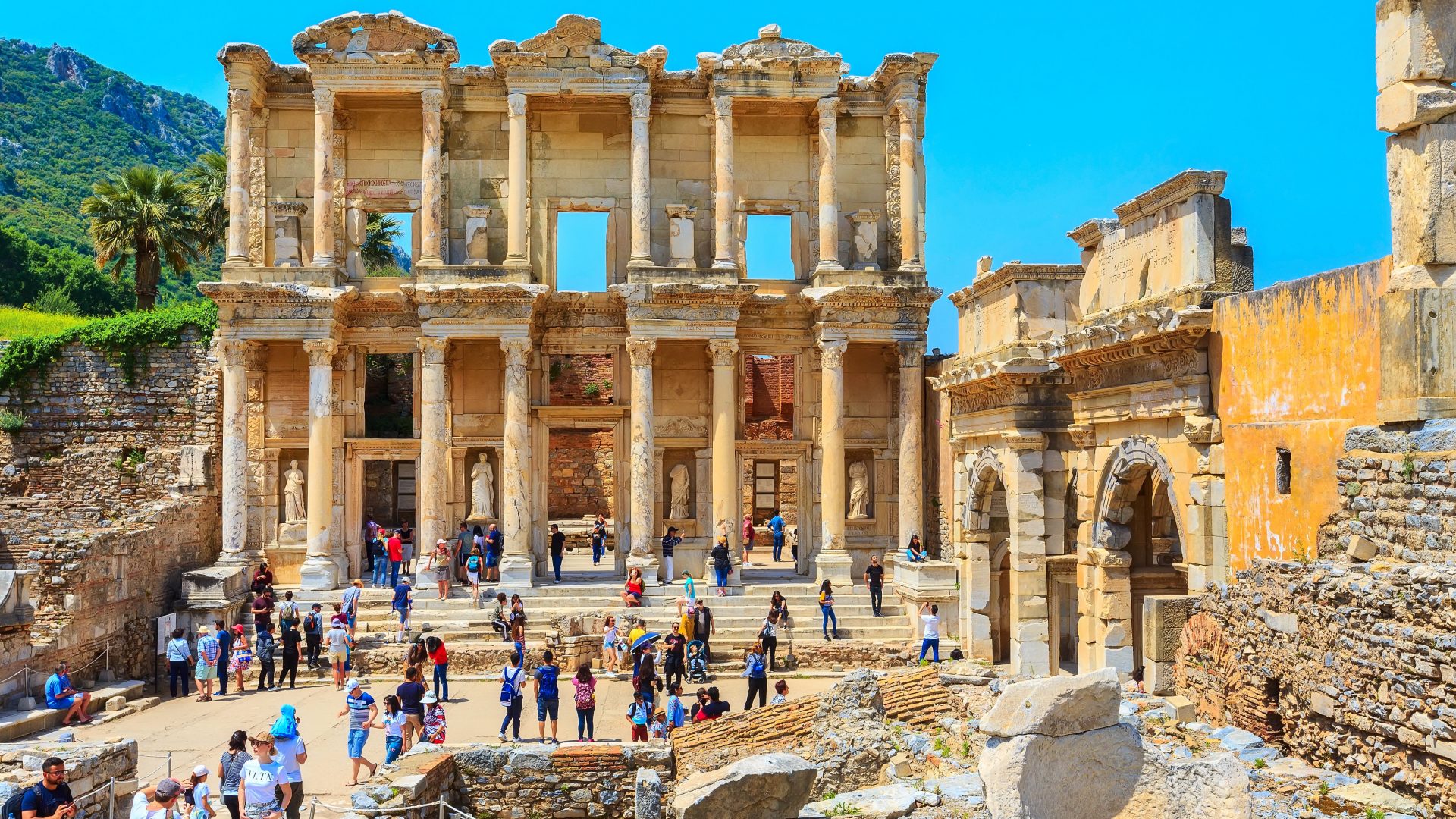
Embarking on a tour of Ephesus requires careful planning and preparation to ensure a smooth and rewarding experience. Consider the following practical tips to make the most of your visit to this ancient city.
Guided Tours vs. Self-Exploration
When planning your Ephesus tour, considering the advantages and disadvantages of different options, such as guided tours and self-exploration, is important.
If you opt for a guided group tour , you will benefit from the expertise of knowledgeable guides who can provide valuable insights and historical context. However, it’s worth noting that group tours often follow a set itinerary, which means less flexibility in terms of the attractions you visit and the pace of your exploration.
On the other hand, a private guided tour offers more flexibility, allowing you to customize your itinerary based on your interests and preferences. With a private guide, you can also delve deeper into specific aspects of Ephesus that intrigue you, as they can provide personalized knowledge and attention.
If you prefer self-exploration , you’ll have the freedom to explore Ephesus at your own pace. However, remember that self-exploration requires a certain level of knowledge about the area and its historical significance. Without a guide, you may miss out on valuable insights and details. Additionally, arranging transportation to and from the sites becomes your responsibility, which can be a factor to consider.
Considering your preferences, level of knowledge, desired flexibility, and depth of experience, you seek to make an informed decision about the best approach for your Ephesus tour . Whether you choose a guided tour or self-exploration, the key is to ensure that it aligns with your interests and allows you to make the most of your visit to this remarkable ancient city.
Do you need a tour guide for Ephesus?
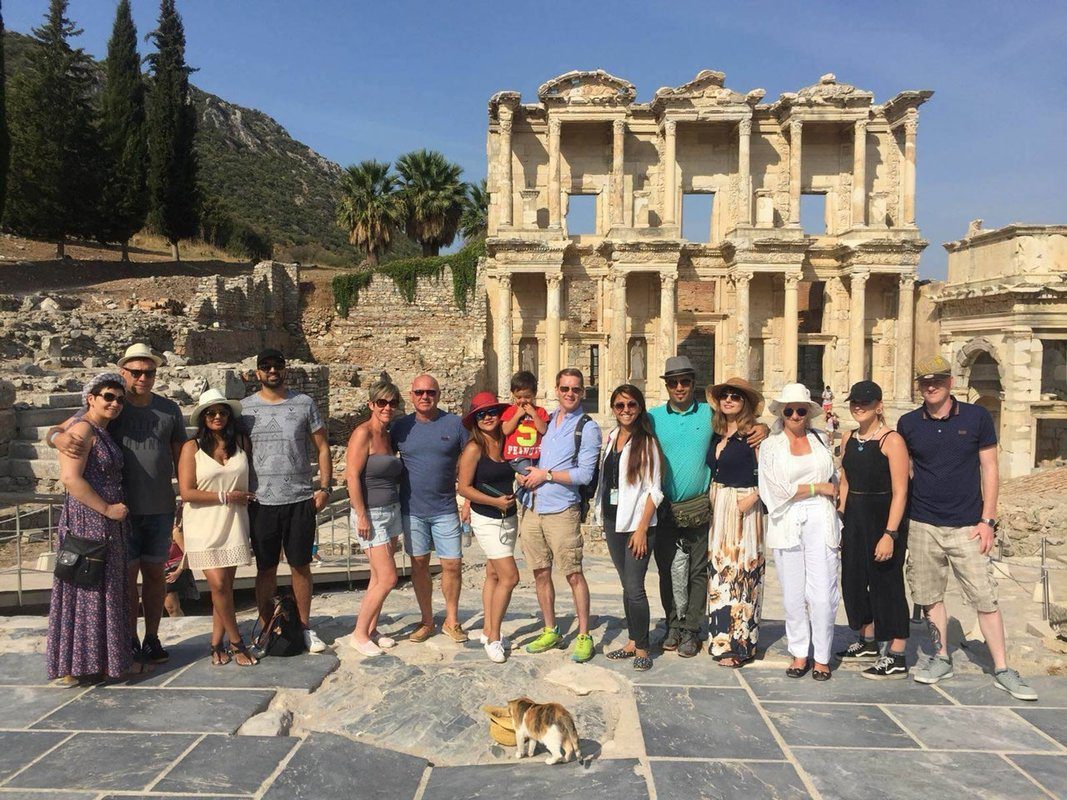
While having a tour guide for visiting Ephesus is not mandatory, having a tour guide can greatly enhance your experience and understanding of the historical site. A knowledgeable guide can provide valuable insights, historical context, and interesting facts about the various attractions within Ephesus. They can help bring the ancient city to life, pointing out intricate details, sharing stories, and answering any questions you may have.
Can I tour Ephesus on my own?
Yes, you can tour Ephesus on your own. While having a tour guide can enhance your experience by providing insights and context, self-exploration is a viable option for those who prefer more freedom and flexibility. When touring Ephesus independently, it is recommended to come prepared with prior knowledge about the site’s historical significance and key attractions. This will allow you to appreciate the ancient city’s wonders and navigate through the ruins at your own pace.
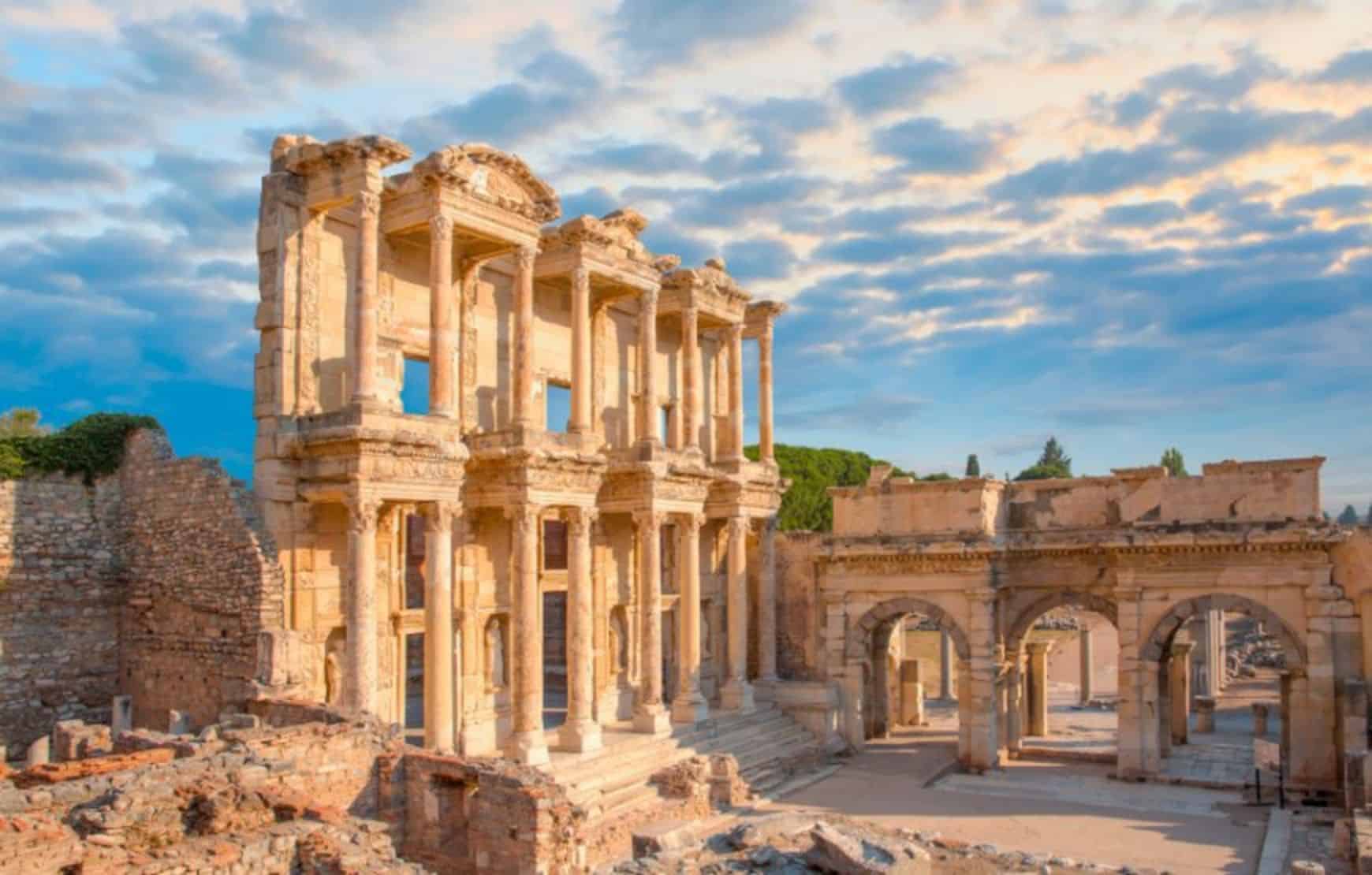
Explore Ephesus Private Tour
- Archeological

Highlights of Ephesus Private Tour

Ephesus & Sirince Village Private Tour
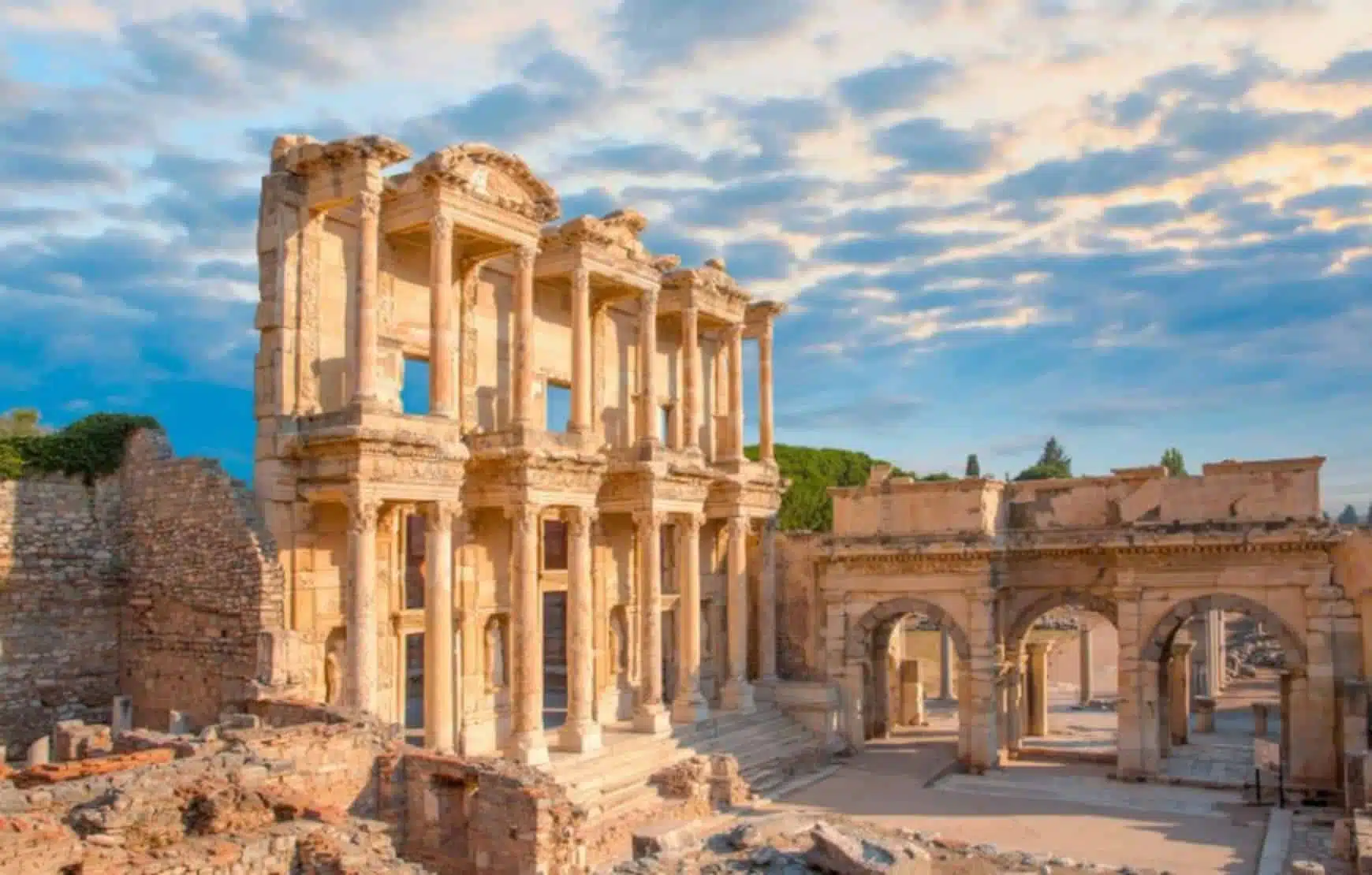
Private Ephesus Tour from Kusadasi Cruise Port
Are there toilets at ephesus.
Yes, there are toilets available at Ephesus. You can find them at both entrance tolls: the Upper Entrance Gate (also known as the “South Entrance”) and the Lower Entrance Gate (also known as the “North Entrance”).
Is there an entrance fee to Ephesus?
Yes, there is an entrance fee to visit Ephesus. As of 2024, the entrance fee for Ephesus is 40 Euros.
Is Ephesus included in Turkey Museum Pass?
Yes, Ephesus is included in the “Museum Pass Turkey” or “Museum Pass Aegean.” These passes grant you access to various museums, historical sites, and archaeological sites in Turkey, including Ephesus.
How much does it cost to enter the Terrace Houses in Ephesus?
To visit the Terrace Houses in Ephesus, there is an additional cost. As of 2024, the entrance fee for the Terrace Houses is 15 Euros. This fee allows you to explore and admire the well-preserved ancient residential buildings adorned with beautiful frescoes, intricate mosaics, and architectural details.
Duration and Pacing
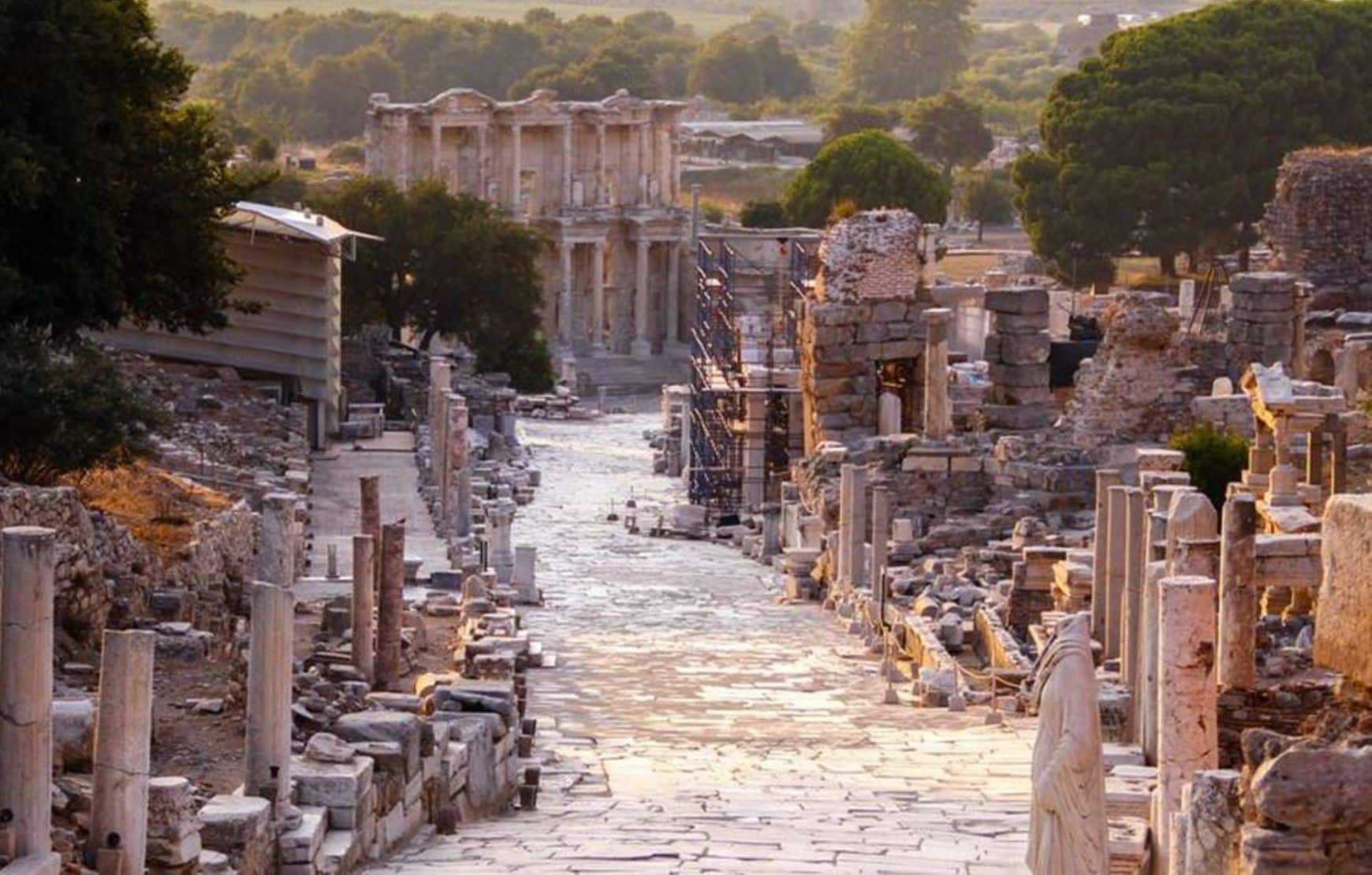
Determine the ideal duration for your Ephesus tour based on your interests and available time. Some visitors may opt for a full-day tour, while others may prefer a shorter half-day excursion. Consider the attractions you wish to explore in-depth and allow ample time to appreciate them. Additionally, factor in a comfortable pace to avoid rushing through the sites. Taking breaks, pausing to soak in the ambiance, and allowing time for reflection will enhance your overall experience.
How long do you need to explore Ephesus?
The duration required to explore Ephesus can vary based on your personal interests and preferences. On average, visitors spend around 2 to 5 hours exploring the archaeological site. However, if you have a deep interest in ancient history, architecture, or archaeology, you may choose to spend more time delving into the details and intricacies of Ephesus.
Is Kusadasi Cruise Passengers can visit Ephesus?
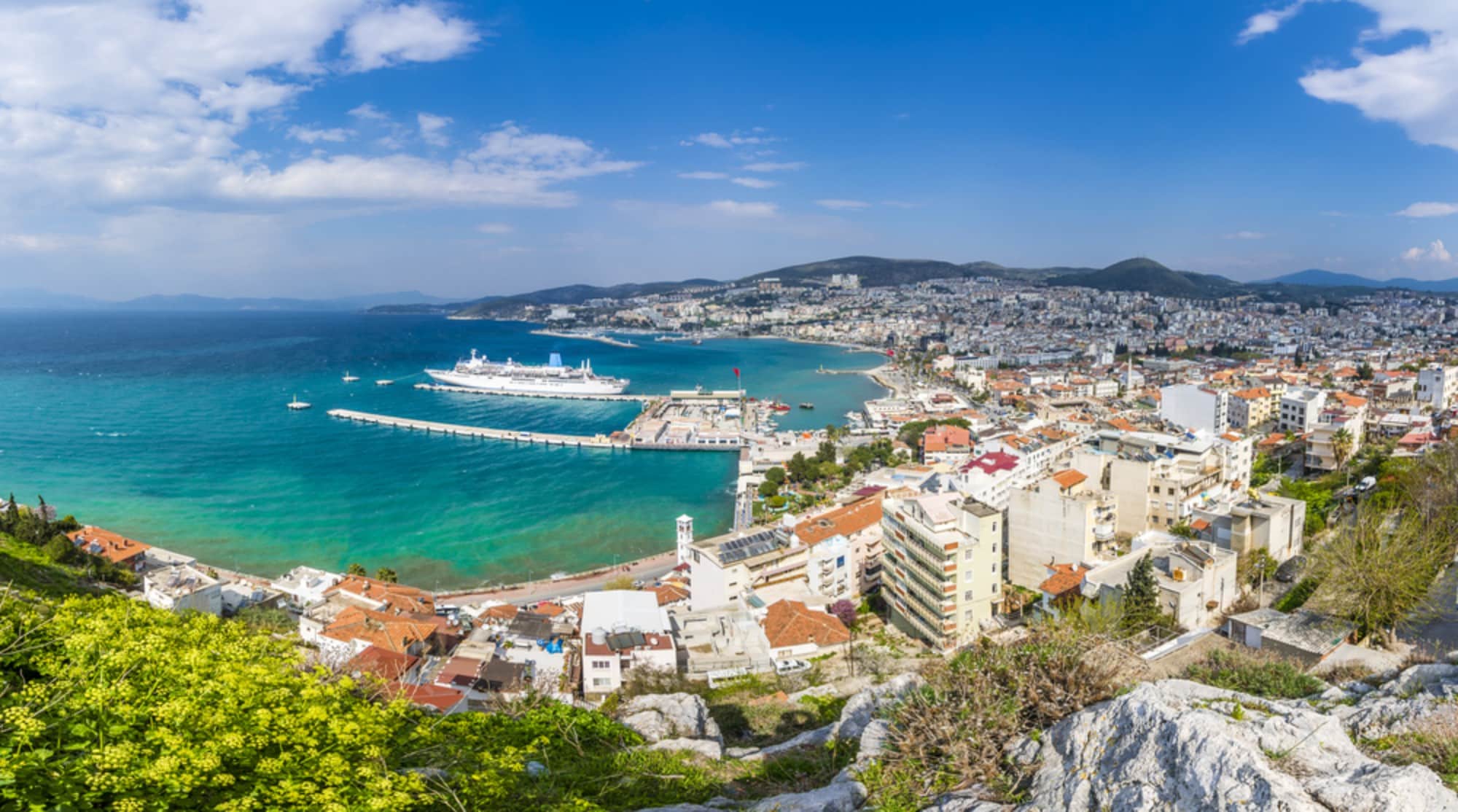
Yes, Kusadasi cruise passengers can visit Ephesus, whether they have a few hours or an overnight stay in Kusadasi. With the proximity of Ephesus to the port of Kusadasi, cruise passengers can plan their visit to the ancient site before their cruise departure.
What do you wear on an Ephesus tour?
To ensure a comfortable and enjoyable visit to Ephesus, it is essential to come prepared with the right items. Consider bringing comfortable footwear, as you will be doing a fair amount of walking on uneven terrain. Sun protection, such as hats, sunglasses, and sunscreen, is crucial to shield yourself from the sun’s rays, especially during summer. Staying hydrated is essential, so carry a water bottle to refresh yourself throughout the tour. Lastly, don’t forget to bring a camera or smartphone to capture the memories of your Ephesus adventure.
Is there a dress code for Ephesus?
There is no specific dress code enforced for visiting Ephesus. However, dressing comfortably and appropriately for a historical site visit is recommended. As a sign of respect, avoiding wearing revealing or inappropriate attire is advisable.
Where to sleep near Ephesus?
Selcuk and Kusadasi provide convenient options for travelers looking to explore Ephesus and its surroundings, so choosing between them depends on your preferences and itinerary.

Selcuk is the closest town to Ephesus, located just a few kilometers away. It offers a range of hotels, guesthouses, and boutique accommodations catering to different budgets and preferences. Staying in Selcuk allows for easy access to Ephesus and allows one to explore other nearby attractions, such as the Basilica of St. John and the Ephesus Museum.

Kusadasi is a larger coastal town located about 20 kilometers from Ephesus. It is a popular tourist destination with a wide range of hotels, resorts, and beachfront accommodations. Kusadasi offers a vibrant atmosphere, various dining options, and entertainment activities. While staying in Kusadasi, you can enjoy the nearby beaches and take advantage of the amenities and services available in the town.
Ephesus stands as a testament to the ancient world’s ingenuity, artistry, and cultural legacy. With our comprehensive guide, you now have the tools to embark on an unforgettable Ephesus tour. Immerse yourself in history, explore remarkable archaeological sites, and witness the grandeur of a bygone era. Let Ephesus captivate your imagination and leave you with memories to cherish forever.
Remember, as you embark on your journey, respect and preserve this extraordinary heritage, ensuring that future generations can continue to appreciate the wonders of Ephesus. Happy exploring!
Don’t forget to read Selcuk Attractions – 12 Things to do before planning your trip to Selcuk Ephesus!

20 Top-Rated Tourist Attractions in Turkey
Written by Jess Lee Updated May 11, 2023
Author Jess Lee lives in Turkey and has been writing about traveling in Turkey for over a decade. She has authored several travel guidebooks to the country .
Packed to the brim with ancient monuments left over from a parade of empires, and endowed with showcase scenery that never fails to impress, Turkey is a dazzling destination that straddles Asia and Europe.
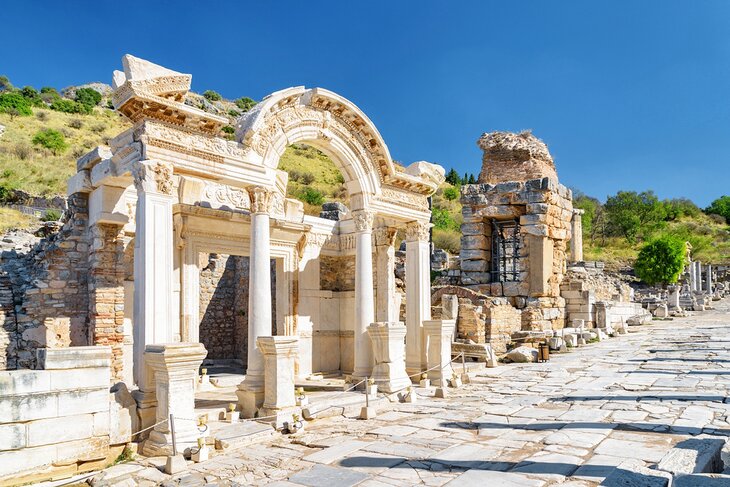
Its vibrant culture, famous food, and vast history wow all who venture here, while its glorious landscapes, from the sun-soaked Mediterranean to the mighty mountains and arid steppe, are tourist attractions in themselves.
Whether you want to lap up the Byzantine and Ottoman glories of Istanbul on a city break, laze on the beach, delve into history wandering through ruins such as Ephesus, or see some of the world's most surreal panoramas in Pamukkale and Cappadocia, this country offers visitors a wide range of things to do.
For ideas on the best places to visit read our list of the top tourist attractions in Turkey.
1. Hagia Sophia (Aya Sofya) Mosque
3. cappadocia, 4. topkapı palace, 5. pamukkale, 7. cruising the mediterranean, 8. mount nemrut, 9. ölüdeniz, 10. aspendos, 12. pergamum, 13. the blue mosque, 16. safranbolu, 17. the bosphorus, 18. gaziantep zeugma mosaic museum, 19. göbeklitepe, 20. sumela monastery, best time to visit turkey.
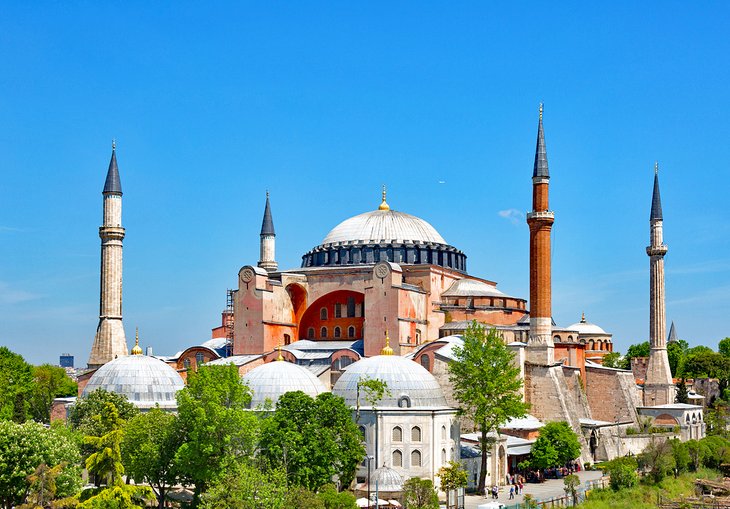
Highlight: Take in the majestic interior of one of Istanbul's most iconic buildings
Renowned as one of the most beautiful buildings in the world, the spellbinding Byzantine glory of the Hagia Sophia Mosque (Aya Sofya) is not only one of the top things to do in Istanbul, but also in Turkey.
Built by the Byzantine Emperor Justinian in 537 CE, it is renowned as the Byzantine Empire's greatest architectural achievement and has remained the world's largest church for 1,000 years.
The staggering bulk of its exterior is rimmed by the delicate minarets added after the Ottoman conquest, while the sumptuous and cavernous frescoed interior is a grand reminder of old Constantinople's might and power.
This famed monument is a must-do for every tourist visiting the country.
- Read More: Exploring Hagia Sophia Mosque: A Visitor's Guide
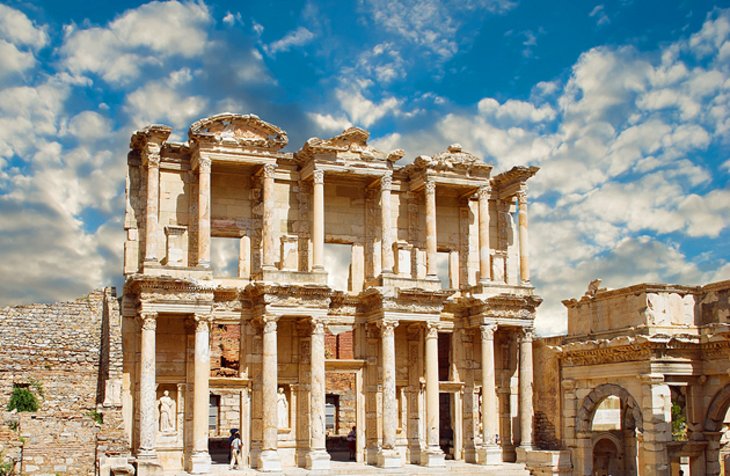
Highlights: Crane your neck at the Library of Celsus, hike up the cavea of the Great Theater, and stroll amid the ruins of this ancient city
Not to be missed, the mighty ruin of Ephesus is a city of colossal monuments and marble-columned roads.
One of the most complete, still-standing famed cities of antiquity in the Mediterranean region, this is the place to experience what life must have been like during the golden age of the Roman Empire.
The city's history dates back to the 10th century BCE, but the major monuments you see today all date from its Roman era when it was a thriving commercial center.
In particular, the Library of Celsus, the complex of frescoed terraced houses, and the Great Theater all point to the wealth and importance of Ephesus during the Roman period.
A sightseeing trip here will take at least half a day to cover the major highlights and longer, if you really want to explore, so make sure you plan your visit so you don't feel rushed.
- Read More: Visiting Ephesus: Attractions, Tips & Tours

Highlights: Take in panoramic views from a hot-air balloon, hike within valleys of volcanic rock, and marvel at cave-chapel Byzantine art
The surreal, swooping rock valleys of Cappadocia are every photographer's dream.
Cliff ridges and hill crests are home to rippling panoramas of wave-like rock or wacky-shaped pinnacles that have been formed by millennia of wind and water action.
And if you don't feel like hiking for the views, this is one of the world's top destinations to take a hot-air balloon ride .
Nestled in this unique lunar-like landscape are the frescoed rock-cut churches and cave-cut architecture of the Byzantine Era, when this area was home to monastic Christian communities.
In particular, the multiple cave-churches of Göreme Open-Air Museum and Ihlara Valley are home to some of the best examples of surviving mid-Byzantine-era religious art in the world.
Cappadocia's villages, half hewn into the hillsides, where travelers base themselves to explore the surrounding countryside, are also an attraction in themselves, with their boutique hotels that allow you to bed down in a cave with full contemporary comforts.
- Top-Rated Tourist Attractions in Cappadocia
- Top-Rated Things to Do in Turkey
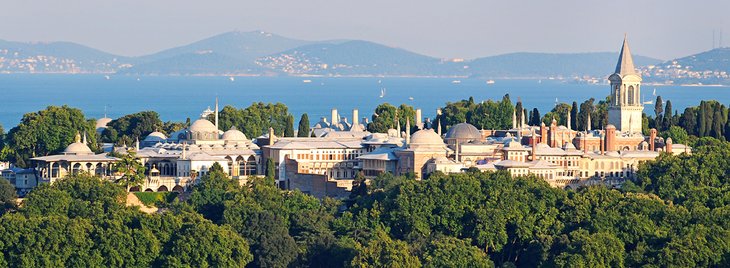
Highlights: Soak up the Ottoman finery amid the salons of the sultans
Sumptuous beyond belief, Istanbul's Topkapı Palace takes you into the fantastical, opulent world of the Sultans.
It was from here, during the 15th and 16th centuries, that the sultans of the Ottoman era carved out an empire that would extend up into Europe and down through the Middle East and into Africa.
The interiors, with their decadently exuberant tiling and lavish jeweled decor, are an unforgettable peek into the Ottoman's power base.
In particular, don't miss the Imperial Council building, where the empire's business was conducted by the Grand Vizier; the arms collection displayed in the Imperial Treasury; the world-class collection of miniature paintings; and the dazzling Harem rooms, which were designed by the famed Ottoman architect Sinan.
The surrounding public gardens were once the sole domain of the Royal Court but are now open to the public and provide a tranquil, green respite from the city streets.
- Read More: Top-Rated Tourist Attractions in Istanbul

Highlights : Hike up the famed white terraces, swim in the antique pool, then take in the views from the top tier of the theater's cavea
One of Turkey's most famous natural wonders, the pure white travertine terraces of Pamukkale ("Cotton Castle" in English) cascade down the slope looking like an out-of-place snowfield amid the green landscape.
Although the travertines are themselves a highlight of a Turkey trip, the vast and rambling ruins of Greco-Roman Hierapolis, an ancient spa town, lie scattered across the summit of this calcite hill.
After exploring the ancient theater, with its views across the countryside, and the remnants of the city's agora, gymnasium, necropolis, and grand gates, you can swim in the mineral-rich waters which made this ancient spa town famous, in the antique pool.
Afterward, walk down the travertine hill, wading through the pools of water in the upper terraces, to the small modern village of Pamukkale below.
For the best photographs, come at dusk when the travertines glow as the sun sinks below the horizon.
- Read More: Top-Rated Tourist Attractions in Pamukkale
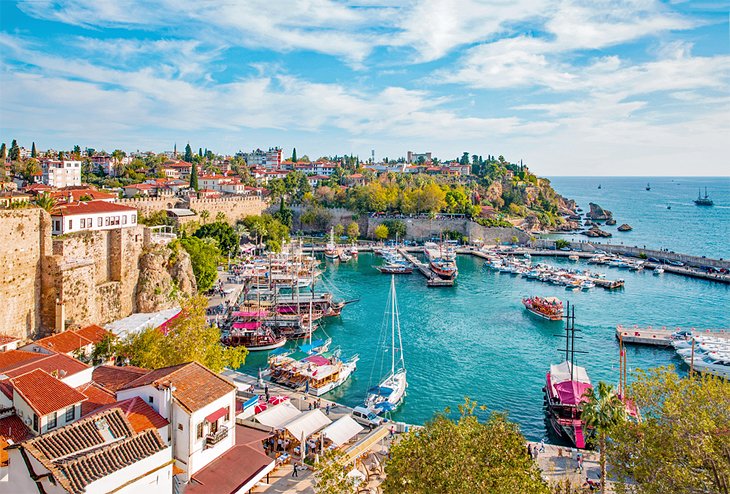
Highlights: Stroll the twisty lanes of the old town, sloth on the beach, or launch yourself out on history-filled trips amid the hilltop ruins of the hinterland
This bustling Mediterranean hub has something for everyone.
The two main beaches outside of town are sun-sloth heaven in summer and attract holidaymakers from across Europe. While the old town area, snug right in the center of town, with its cobblestone alleyways rimmed by creaky Ottoman-era mansions, is a wonderful place to explore.
The Antalya Museum is renowned as one of the country's best, with an astonishing collection of Hellenistic and Roman marble statuary, and there are bags of attractions outside of town for travelers who want to use Antalya as a base.
In particular, Antalya is an easy base for day trips to some of Turkey's most famous Greco-Roman ruins, including Aspendos and Perge, which are just outside the city, and the town of Side, with its glut of ruins.
- Read More: Top-Rated Tourist Attractions in Antalya
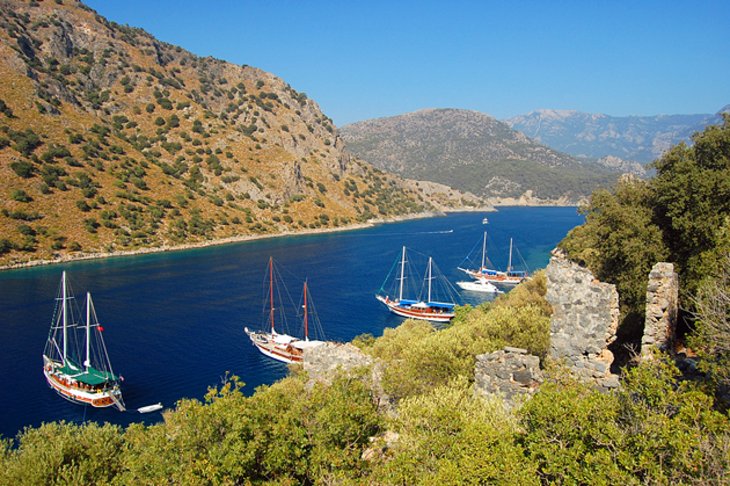
Highlight: Experience Turkey's dramatic coastline from the sea on a scenic slow-travel adventure
Turkey's Mediterranean coastline has ruins galore and many things to do, but for many people, it's all about soaking up the sun while enjoying the gorgeous coastal views.
Cruising on a yacht is the number one activity for visitors to Bodrum and Fethiye for good reason. The steep forest-clad slopes, hidden coves sporting tiny white-sand beaches, and hundreds of scattered islands are the perfect place for exploring by sea. Even diehard landlubbers will be impressed.
One of the most famous trips is known as the Blue Cruise and travels from Fethiye south down the coast until disembarking near Olympos , home to the famous natural phenomenon of the Chimaera.
- Read More: Top-Rated Tourist Attractions in Bodrum
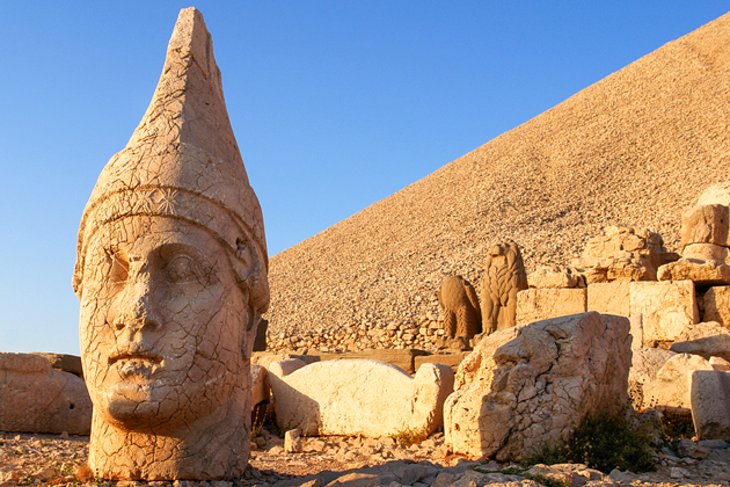
Highlight: Hike up to the summit to see the sun rise over the mountaintop ruins
The top sightseeing drawcard for eastern Turkey, Mount Nemrut's summit funerary mound is scattered with the broken remnants of once mammoth statues, which guarded it.
This weird and lonely place has to be one of Turkey's most peculiar archaeological sites. The giant stone heads of long-forgotten gods stare out from the summit, casting an eerie atmosphere over the barren mountaintop.
The summit's building works are the work of Antiochus I, ruler of the Commagene Kingdom, which lay here in the buffer region between the Roman and Parthian empires.
Antiochus I dedicated this grand funerary mound to himself as a showcase of his importance, raising a 50-meter-high artificial peak on Mount Nemrut's summit and then decorating it with statues of himself and various gods.
The most popular time to visit is at sunrise, so you can watch the statues as they loom out of the dark.
- Read More: Exploring Mount Nemrut: A Visitor's Guide
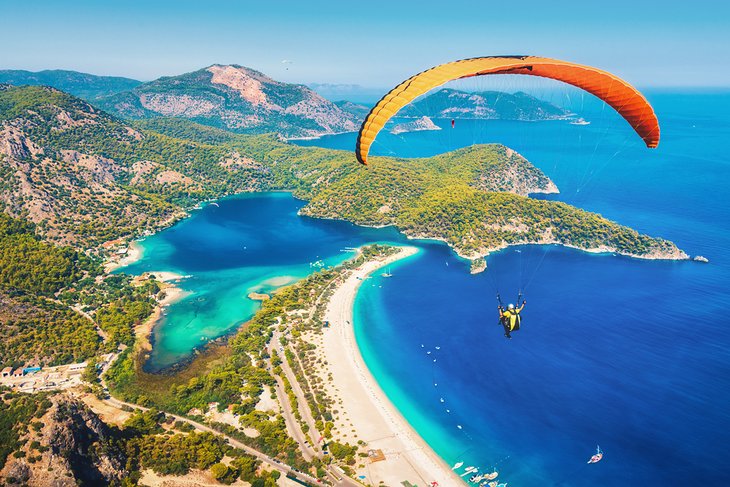
Highlights: Turkey's tandem paragliding hub, resort living, and lazy beach life
Impossibly turquoise-blue water. Check. Lush green forest tumbling down a cliff to a white-sand beach. Check. The sheltered inlet of Ölüdeniz, just a short journey from Fethiye, is Turkey's most famous beach, and with scenery that might as well have fallen off a perfect postcard, it's easy to see why its popularity hasn't waned.
If the beach gets too crowded, it's time to take to the skies and experience the stunning aerial views on a tandem paragliding dive off the summit of mighty Babadağ (Mount Baba), which rises up behind the shore.
Oh, did we mention that Ölüdeniz is one of the world's top paragliding destinations? Check.
- Read More: Top-Rated Tourist Attractions in Fethiye
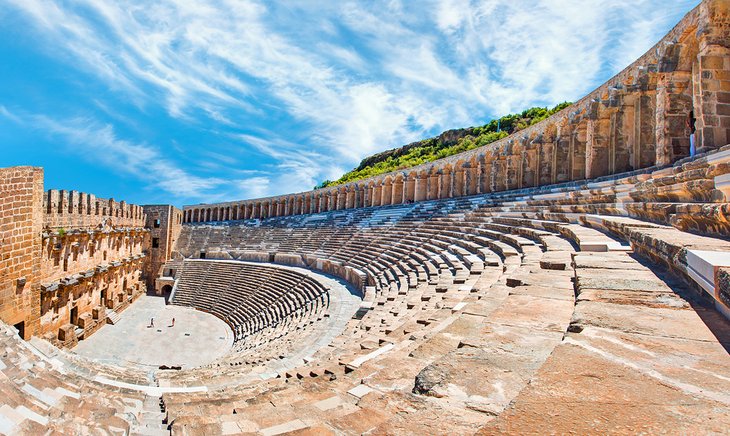
Highlight: Admire this monumental relic of Roman rule
Just south of the resort city of Antalya, the jaw-dropping mammoth bulk of the Roman Theater of Aspendos celebrates the pomp and ceremony of Marcus Aurelius' rule.
Considered the finest surviving example of a classical age theater still standing in the world, the highly restored, 15,000-seat theater is one of antiquity's star attractions.
Although the theater is the main reason for a visit here (and for most visitors on a half-day trip from nearby Antalya or Side, the theater is all they see) the Aspendos site offers plenty more ruins to explore.
There are remnants of an aqueduct, agora, stadium, and a Byzantine-era basilica, all scattered over the vast hillside area here surrounding the theater.
Read More: Aspendos: A Visitor's Guide
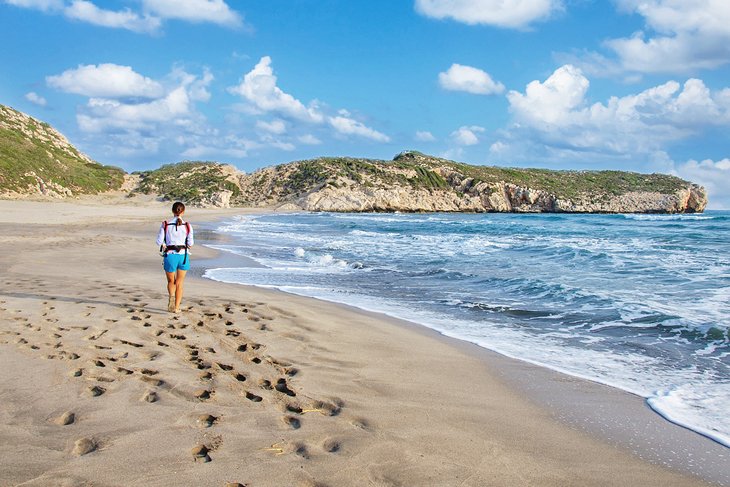
Highlights: Hike amid the Lycian ruins then relax on Turkey's longest beach
With such a long Mediterranean coastline, there's a beach for every type of sun worshipper in Turkey, but Patara is among its most famous swathes of sand.
Trailing for 18 kilometers along the shoreline, the beach offers plenty of space, so even in the height of summer, you can still find a quiet spot far away from the crowds.
Adding to the experience, just behind the sand, are the vast ruins of Ancient Patara , which include a colonnaded street, restored bouleuterion (the parliament of the city), and a theater that sat 5,000 people.
Once you've had your fill of sun, sand, and swimming, wander behind the sand dunes and explore the crumbling remnants of this once-prosperous Lycian city.
Patara is easily reached from both Kas and Fethiye.
- Read More: Top-Rated Attractions in Fethiye
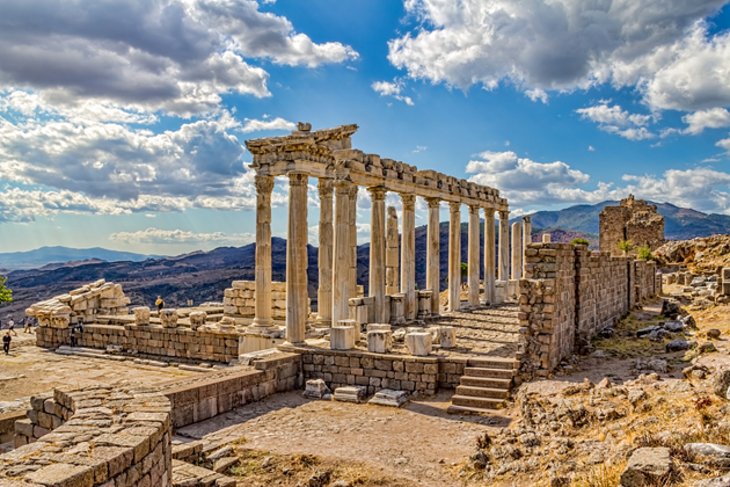
Highlights: Panoramic vistas across the ruins and surrounding hills from the Acropolis and theater
Turkey has an abundance of Greco-Roman ruins, but none can be so romantically placed as ancient Pergamum in modern-day Bergama.
Once home to one of the ancient world's most important libraries (which rivaled Alexandria's library in prominence) and home to the famed medical school run by Galen, Pergamum's remaining temple remnants now preside dramatically across a hilltop.
It's an incredibly atmospheric place to explore. The Acropolis area with its theater cut into the hillside holds the most remains and offers sweeping panoramic views across the countryside.
Below, the Asklepion area is home to the ruins of the city's renowned medical center.
This is a great place to visit if you want to get a real feel for life in the Classical era.
- Read More: Top-Rated Tourist Attractions in Pergamum and the North Aegean
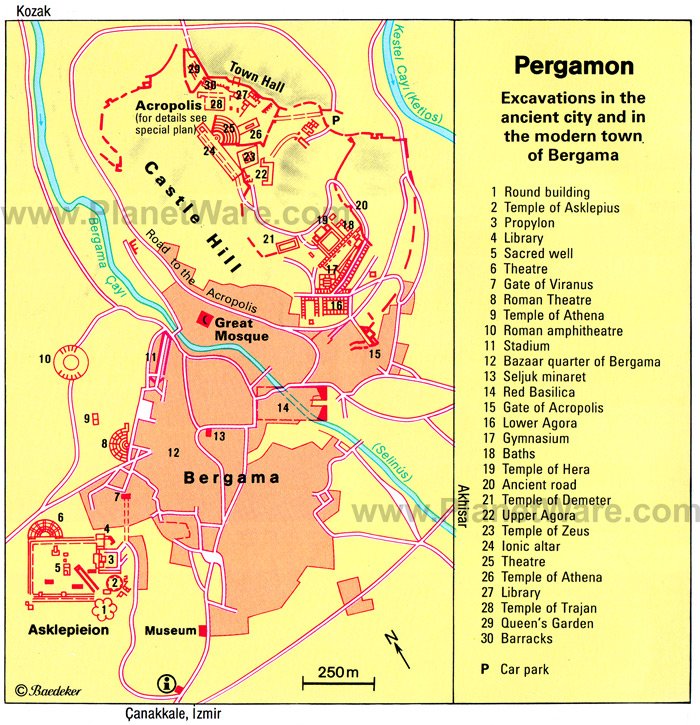
Highlight: An opulent interior with the Ottoman era's delicately detailed blue-and-white tiles
This famous mosque (officially called the Sultanahmet Mosque), facing the Hagia Sophia Mosque across Sultanahmet Park in Istanbul, is one of Turkey's most visited monuments.
Built by Sultan Ahmed I, the mosque was designed to mimic the Hagia Sophia by the architect Sedefkar Mehmet Ağa, a disciple of the Ottoman era's most renowned architect, Sinan.
With six slender minarets and a sprawling courtyard complex, everything about the Blue Mosque is on a grand scale but it's best known for its prayer hall interior covered in tens of thousands of blue Iznik tiles (for which the mosque gained its moniker), lit by shards of light from 260 windows.
Non-worshipping visitors are welcome to visit outside of prayer times. Everyone must have knees and shoulders covered, and females must wear a headscarf.
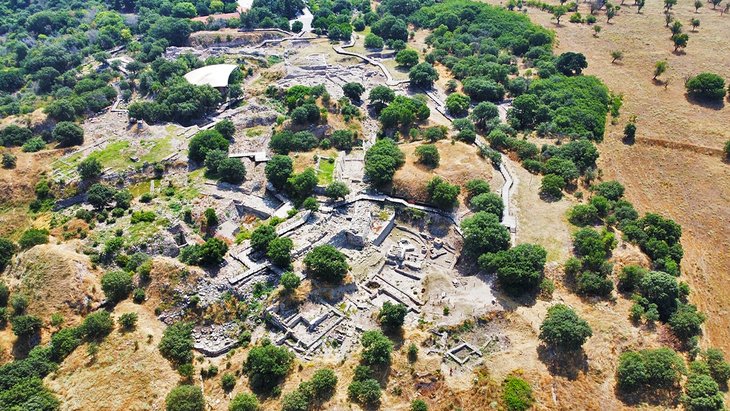
Highlight: Strolling amid the ruins of one of the Classical world's most famous mythical cities
One of Turkey's most well-known ancient ruins, this site is thought by many to be the Troy of Homer's Iliad .
Whether it is, or not, the Troy of the Trojan War myths, the multi-layered, rambling ruins here expose a vast history of occupation, abandonment, and reoccupation that stretches right back to the early Bronze Age.
The ruins include well-preserved city walls and fortifications, the remnants of a palace, megarons (Mycenean hall complexes) and houses, along with later Roman-era sanctuary and Odeon monuments.
Just down the road from the Troy site is the new Troy Museum , one of Turkey's best museums.
The vast and thoughtfully collated collection inside tells the tale of Troy, from its earliest occupation right through to the modern era, including the mythology that surrounds the site; the controversial and damaging excavations of early archaeological work here; and the story of the missing cache of gold, silver, and copper artifacts (known as Prium's Treasure) currently held at Moscow's Pushkin Museum, which were unearthed at the site and illegally smuggled out of Turkey by Heinrich Schliemann.
Read More: Visiting Troy from Istanbul
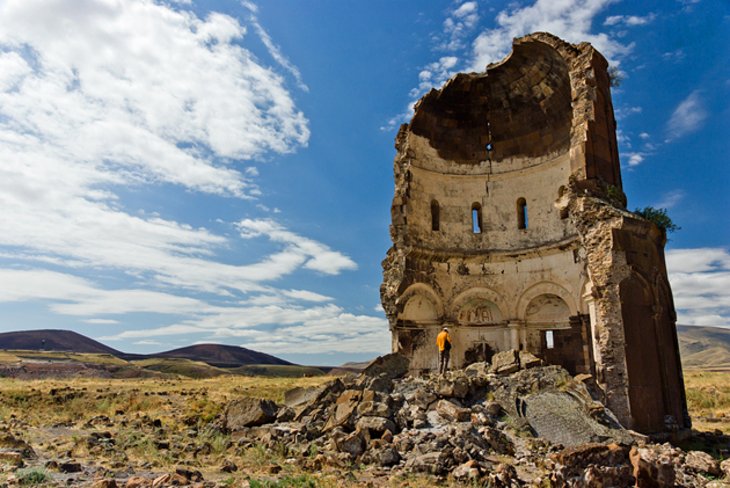
Highlight: Rambling this vast site of shattered churches set high on the steppe
The ruins of the powerful Silk Road city of Ani sit abandoned on the plains rubbing up against Turkey's modern border with Armenia.
Once capital of the Armenian Kingdom, Ani's golden age came to an end in the 14th century after Mongol raids, earthquake destruction, and trade route tussling all played their part in the city's decline.
The beautiful red-brick buildings still crumbling away amid the steppe grass have a mesmerizing effect on all who visit.
Don't miss the Church of the Redeemer and the Church of Saint Gregory, with their elaborate stone masonry and fresco remnants still visible; the bulky Ani Cathedral building; and the Manuçehr Mosque, built by the Seljuk Turks when they captured the city in the 11th century and thought to be the first mosque built in what would become Turkey.
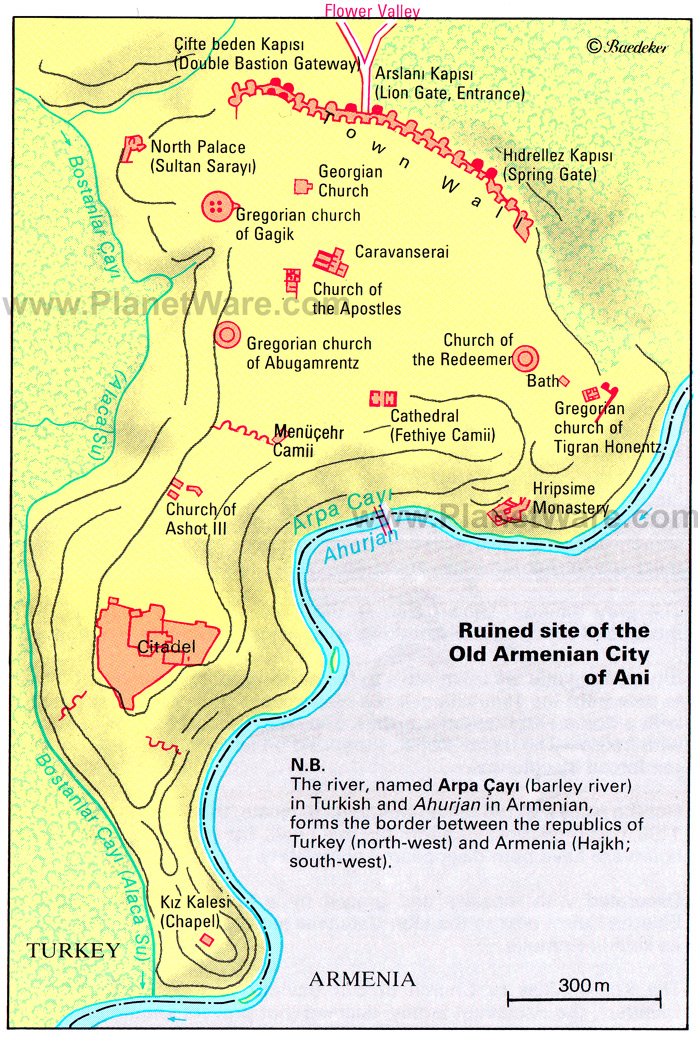
Highlight: Idly wandering cobblestone streets amid the old town of wood-beamed mansions
Turkey's best-preserved Ottoman town is a fabulously photogenic place of skinny winding alleys crammed with finely restored wooden mansions which were once the home of wealthy merchants and now have been transformed into boutique hotels and restaurants.
There's little to actually do in town. Instead, this is a place to simply stroll the streets and admire the old-world atmosphere.
It's also known for its traditional sweets and crafts and there are plenty of cute shops where you can pick up a unique souvenir.
If you're road-tripping inland from Istanbul, this is a fantastic place to stop-off for the night and experience the historic ambience.
- Read More: Top-Rated Tourist Attractions in Safranbolu
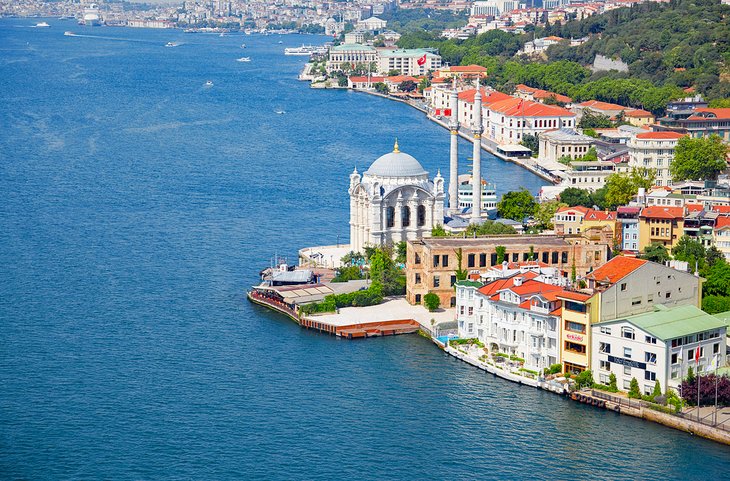
Highlight: Take a scenic sightseeing trip on Istanbul's famed continent-dividing strait
One of the world's great waterways, the Bosphorus Strait separates Europe from Asia and connects the Black Sea with the Sea of Marmara (and hence, out to the Mediterranean).
Cruising along the Bosphorus, whether by hopping local ferries, on a tourist ferry cruise, or a private boat, is one of the great tourist attractions of an Istanbul stay. This is the most relaxing sightseeing opportunity in Istanbul.
Onboard, it's all about soaking up the scenery from the water, with the shorefront lined with Ottoman palaces; villas; and wooden mansions out to Rumeli Fortress, built by Mehmet the Conqueror; and (farther north along the strait), the Byzantine-era ramparts of Anadolu Fortress.
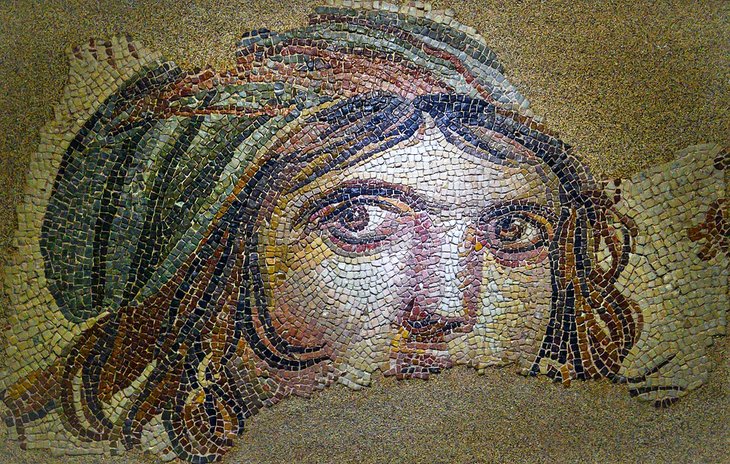
Highlight: A dazzling collection of Greco-Roman mosaic artistry
Due to the ongoing aid response in the aftermath of Turkey's February 2023 earthquake, the Gaziantep Zeugma Mosaic Museum has been temporarily closed. For information on reopening, check the official museum website .
The city of Gaziantep is one of southeastern Turkey's great highlights for a few days of guzzling Gaziantep's renowned baklava and strolling the alleys of its old city district, but its most famous attraction is the Gaziantep Zeugma Mosaic Museum.
The museum contains both one of the largest and most important mosaic collections in the world.
Nearly all the Hellenistic and Roman-era floor mosaics displayed here are originally from the Greco-Roman ruins of the town of Zeugma, which is now half-submerged due to the construction of the Bericik Dam. The mosaics, cleverly curated and displayed so that they can be viewed from their best angles, provide visitors with a sense of the artistry of the Greco-Roman era.
Despite the many huge mosaics here, the most famous mosaic in the collection, known as the Gypsy Girl , is one of the smallest pieces. It is displayed dramatically in its own darkened room, so that the intricate artistry of the piece can be better appreciated.
Read More: Top-Rated Attractions & Things to Do in Gaziantep
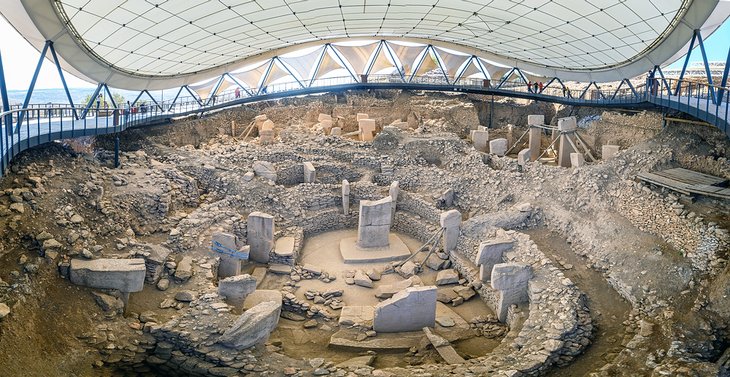
Highlight: Soaking up the atmosphere of standing amid the world's earliest religious monument
One of Turkey's most important ancient ruins, the hilltop site of Göbeklitepe , near Şanlıurfa, has generated hundreds of headlines worldwide, been anointed with UNESCO World Heritage status, (and provided the inspiration for the Netflix series The Gift ) since it was opened to the public.
This small site of towering T-shaped pillars, inscribed with animal figures and anthropomorphic details, dates from the pre-pottery Neolithic era and is thought by archaeologists to be the world's earliest religious sanctuary.
Although it may not have the wow-factor of Turkey's many, much later Bronze Age and Greco-Roman ancient sites, Göbeklitepe's importance in our understanding of early human history has made it one of the most popular tourist attractions in Turkey's southeast.
Read More: Top-Rated Attractions & Things to Do in Şanlıurfa
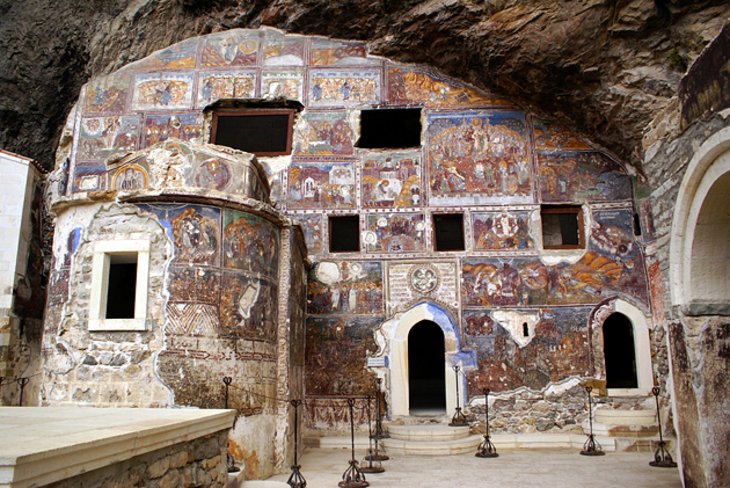
Highlight: Exploring this stunning Byzantine religious center that clings to the cliff-side
With its stunning, lonely setting, built into a cliff face, Sumela Monastery (Monastery of the Virgin Mary) is the star attraction for visitors along the Black Sea Coast.
Wandering around this abandoned religious complex, with its church interiors crammed with dazzling and vibrant frescoes, is a must for anyone who makes the long journey to Turkey's northeast region.
The monastery first opened during the Byzantine era and only ceased operation as a working religious center in 1923, when the monks were forced to leave as part of the Greek-Turkish Population Exchange.
Today, wandering its empty cells, it's easy to imagine the isolated lives of the monks who once lived here.
- Read More: Top-Rated Tourist Attractions on the Black Sea Coast
Overall, depending on what you plan to do, Turkey can be visited year-round, but for the most dependable weather, the best times to visit are the months of May, June, July, August, September, and October.
May, June, September, and October are the prime time for Turkey travels, with plenty of blue skies and sunshine and softer light for photography, but fewer crowds. Just remember to pack a warmer layer for after dark and a jacket in case of rain.
Spring wildflowers bloom across the countryside in May, while the displays of colorful fall foliage during October make these two months the best for keen photographers.
July and August are the most popular months to visit, with temperatures regularly peaking over 30 degrees Celsius and little chance of rain disrupting your plans. If you're here specifically for the beach and activities on the water, this is peak season.

More on Turkey

Unlock the Wonders of Turkey: New Visa Opportunities for Global Explorers
As the world reopens its doors to travelers, there’s exciting news for adventure-seekers from far-flung corners of the globe. In a bid to foster cultural exchange and promote tourism, Turkey announces extended visa opportunities for citizens of Vietnam, Solomon Islands, Senegal, Mauritius, and India.
With these newly expanded visa options, citizens from these diverse nations now have seamless access to the enchanting land of Turkey. Whether it’s the bustling streets of Istanbul, the breathtaking landscapes of Cappadocia, or the ancient ruins of Ephesus, Turkey offers a tapestry of experiences waiting to be explored.
TURKEY VISA FROM VIETNAM
TURKEY VISA FROM SOLOMON ISLANDS
TURKEY VISA FROM SENEGAL
TURKEY VISA FROM MAURITIUS
Turkey Visa for Indian Citizens
“We are thrilled to welcome travelers from Vietnam, Solomon Islands, Senegal, Mauritius, and India to Turkey,” said a spokesperson from Turkey’s Ministry of Culture and Tourism. “Our rich history, vibrant culture, and warm hospitality await visitors from these nations, promising unforgettable memories and meaningful connections.”
For Vietnamese citizens dreaming of sipping Turkish tea by the Bosphorus or wandering through the iconic Grand Bazaar, the new visa provisions offer a seamless pathway to turn these dreams into reality. Similarly, citizens of Solomon Islands, Senegal, Mauritius, and India can now embark on their Turkish odyssey with ease, immersing themselves in Turkey’s captivating blend of East and West.
This initiative not only opens doors for travelers but also strengthens the bonds of friendship and cooperation between Turkey and these nations. By fostering cultural exchange and tourism, Turkey aims to create a more interconnected world where borders are bridges, and diversity is celebrated.
For more information on visa eligibility and application procedures, visit Turkey Visa from Vietnam, Turkey Visa from Solomon Islands, Turkey Visa from Senegal, Turkey Visa from Mauritius, and Turkey Visa for Indian Citizens.
About Company:
Turkey Visa is a leading provider of visa services, dedicated to simplifying the travel experience for visitors to Turkey. With a commitment to excellence and customer satisfaction, Turkey Visa offers streamlined visa application processes, ensuring hassle-free travel for global explorers. Discover the beauty of Turkey with Turkey Visa.
Media Contact
Michael Gooding
+49 30 901723172
https://www.visa-turkey.org/visa/

IMAGES
VIDEO
COMMENTS
1- Wandering around the city center of Ephesus Ancient City. Image Credit: Google Images. Selcuk, where the ancient city of Ephesus is located, is also one of the most fertile lands in Anatolia. For this reason, many trade routes pass in this direction.
Visiting Ephesus: Attractions. Of all the ruins and archaeological tourist attractions in Turkey, Ephesus is the most famous. Visitors from around the world come here to walk down the well-preserved Roman streets, gaze at the mighty monuments, and soak up the ancient soul of this ruined city. Many travelers use (right beside the ruins) as their ...
Discover more things to see and do with our list of the top attractions in Selçuk and Ephesus. On This Page: 1. Be Awestruck amid the Vast Ruins of Ephesus. 2. Admire Artemis inside Ephesus Museum. 3. Explore the Remains of the Basilica of St. John. 4.
The Ephesus Archaeological Museum is not within Ephesus itself. Instead, it's located in the town of Selcuk, about a 10-minute drive away. Most visitors to Ephesus don't ever get the chance to visit, so if you make it to the museum, consider yourself lucky.
Ephesus. It is thought that the ruins of the small circular building south of the Baths of Varius, which was once a church, contain the tomb of the evangelist, St…. Discover the best attractions in Ephesus including Ephesus, Library of Celsus, and Terraced Houses.
The 2023 Ephesus entrance fee is 400 TL and is included in the Turkey Museum Pass (find out more about the museum pass here). Ephesus opening hours and when to visit. Ephesus is open daily from 8 a.m to 8 p.m and the ticket office closes at 7 p.m. The best time to visit is around 8 or 9 a.m when it's not too hot yet and the crowds are at ...
11. Ephesus Museum. The ideal addition to a tour of the Ephesus ruins is a trip to the Ephesus Archaeological Museum in Selçuk. There are several artifacts from the ancient city, the Temple of Artemis, the Basilica of St. John, and the fortress on the Ayasuluk Hill in the collections of this modest but intriguing museum.
The nearest major city to Ephesus is Izmir, Turkey's third-largest city, 50 miles to the north. Flights from elsewhere in Turkey (such as Istanbul) frequently fly to Izmir Adnan Menderes Airport. Some airlines put on shuttles to Selcuk, the gateway to Ephesus, for passengers, and some accommodations may arrange a shared or private transfer.
Of Turkey's hundreds of ancient cities and classical ruins, Ephesus is the grandest and best preserved. A Unesco-listed World Heritage Site, it's the best place in the Mediterranean to get a feel for what life was like in ancient times. Ancient Ephesus was a great trading city and a centre for the cult of Cybele, the Anatolian fertility goddess ...
Ephesus. Turkey, Europe. The Greco-Roman world truly comes alive at Ephesus. After more than a century and a half of excavation, the city's recovered and renovated structures have made Ephesus Europe's most complete classical metropolis - and that's with 80% of the city yet to be unearthed!
Practical Guide To Visiting Ephesus, Turkey Opening hours. Ephesus is open every day from 8:00 am to 7:30 pm in April to October, and to 5:30 pm from November to March. Tickets. Giving information on the admission fee for visiting Ephesus is actually a bit tricky. The inflation rate in Turkey is incredibly high and even the prices of attraction ...
Things to do in Ephesus and Selcuk tip: if you are planning to visit a number of historical sites in Turkey it might be worth purchasing the Turkey Museum Pass. The pass is valid for 15 days, costs 210 Lira (around 50USD) and covers 300 museums and tourist areas affiliated to the Ministry of Culture and Tourism of the Republic of Turkey.
Explore the ancient city of Ephesus with our guide to its top 10 must-see spots. Immerse in history, marvel at Roman architecture, and relive the past! ... Excellence in Tour Planning and Adventure Travel agencies play a crucial role in the tourism sector, including in Turkey. The country boasts approximately 12,000 travel agencies, providing ...
Library of Celsus. For me, the most spectacular part of Ephesus was the massive Library of Celsus. Built-in honor of Tiberius Julius Celsus Polemaeanus, this two-story masterpiece was built between 114 and 117 AD. This architectural genius was the third largest library during ancient times. It was built to house over 12 000 scrolls, but sadly ...
Located about 3 km to the west of Selcuk, Ephesus is probably the most complete ancient city in Europe. It is home to one of the Seven Wonders of the Ancient World: the Temple of Artemis. In addition, Ephesus has also been a UNESCO World Heritage Site since 2015. So it's no wonder millions of tourists come here every year.
Visit the House of The Virgin Mary. The house of The Virgin Mary is located 4 kilometers away on top of the Bulbul Mountain overlooking Ephesus, Selcuk and the Aegean Sea. Thanks to the visions of Anne Catherine Emmerich, the shrine was discovered by priests from nearby Izmir city who were inspired by the book of Clemens Brentano who met with ...
Two days should be enough to see all the tourist attractions around Selcuk, such as Ephesus and Pamukkale. Below is a rough 2-day itinerary for Selcuk: Day 1: Explore Ephesus and all the attractions in the ruins, and spend the afternoon at Ayasoluk Castle before ending the day.
The temple, constructed in the 6th century BCE, went through multiple destructions and reconstructions throughout the centuries. Eventually, it is claimed that a mob led by the Goths completely demolished it in 268 AD. The Temple of Artemis is free to visit. 6. The Ephesus Museum.
During the summer months, Ephesus is open from 8.00 AM to 8.00 PM daily. Keep in mind that the ticket office closes 30 minutes before closing. For the House of Virgin Mary, the hours are as follows. From November - February, 8.00 AM - 5.00 PM, from March - October, 8.00 AM - 6.00 PM.
During the first century CE, Ephesus became vital in the spread of Christianity, and today, the tomb believed to belong to the Virgin Mary is in Ephesus. In 262, the Goths destroyed the Temple of Artemis, marking the beginning of the end for Ephesus. A massive earthquake and the decline of the harbor in the sixth and seventh centuries continued ...
Ephesus is Turkey's most significant cultural heritage with over 1.5 million visitors from all over the world every year. FEEL THE HISTORY. ENJOY THE SEA. CULTURE AND ART. GASTRONOMY. HANDICRAFT.
Conclusion. Ephesus stands as a testament to the ancient world's ingenuity, artistry, and cultural legacy. With our comprehensive guide, you now have the tools to embark on an unforgettable Ephesus tour. Immerse yourself in history, explore remarkable archaeological sites, and witness the grandeur of a bygone era.
2. Ephesus Ephesus. Highlights: Crane your neck at the Library of Celsus, hike up the cavea of the Great Theater, and stroll amid the ruins of this ancient city Not to be missed, the mighty ruin of Ephesus is a city of colossal monuments and marble-columned roads.. One of the most complete, still-standing famed cities of antiquity in the Mediterranean region, this is the place to experience ...
In a bid to foster cultural exchange and promote tourism, Turkey announces extended visa opportunities for citizens of Vietnam, Solomon Islands, Senegal, Mauritius, and India. ... the breathtaking landscapes of Cappadocia, or the ancient ruins of Ephesus, Turkey offers a tapestry of experiences waiting to be explored. TURKEY VISA FROM VIETNAM ...